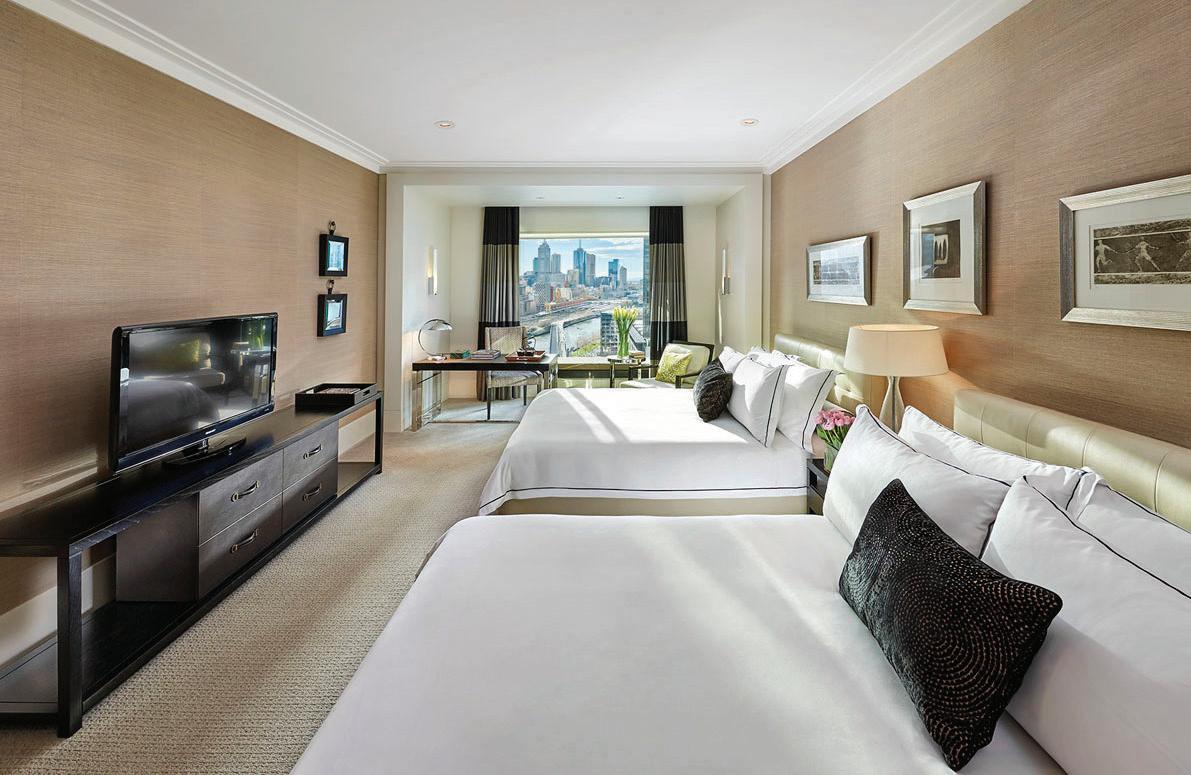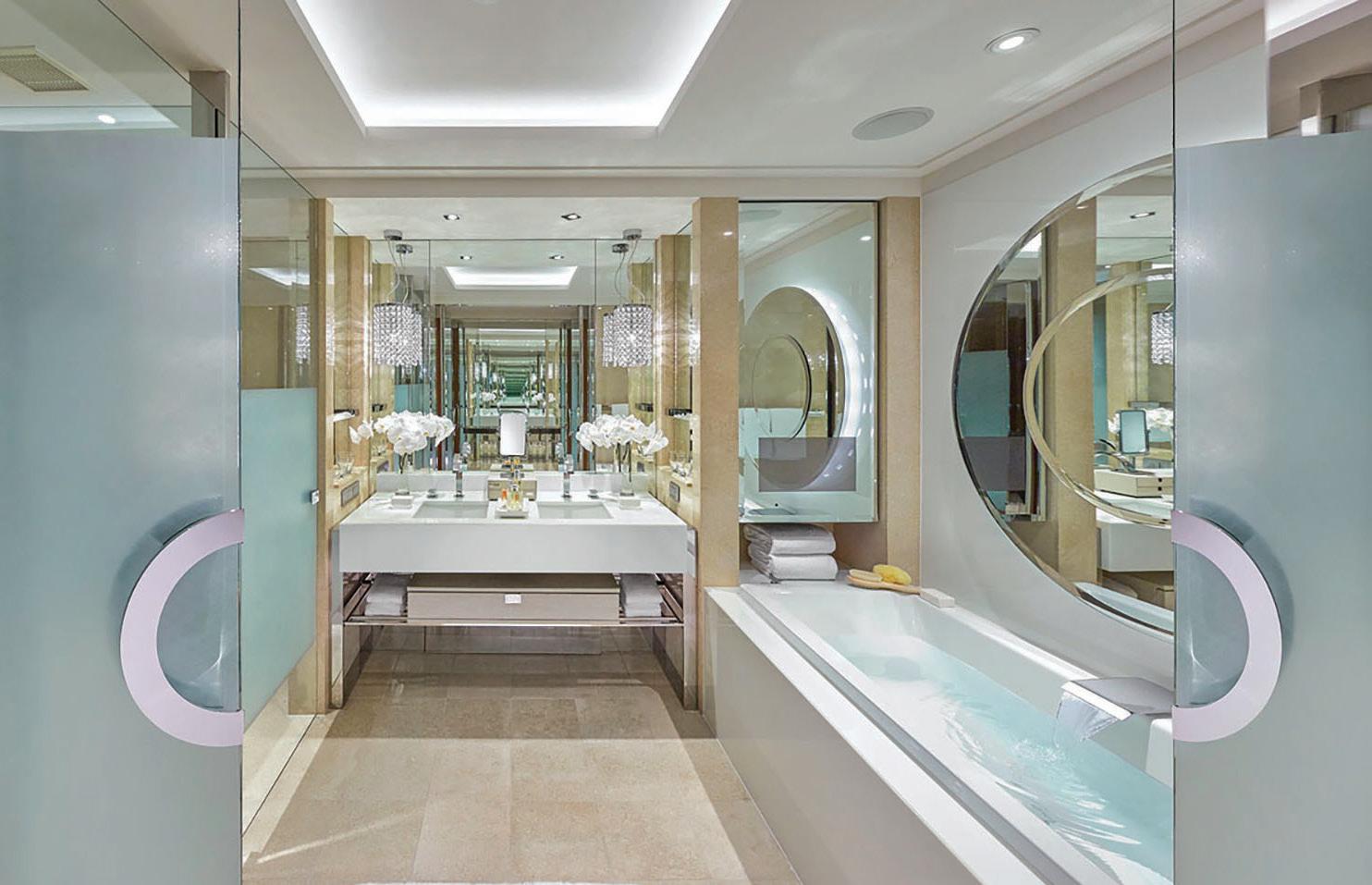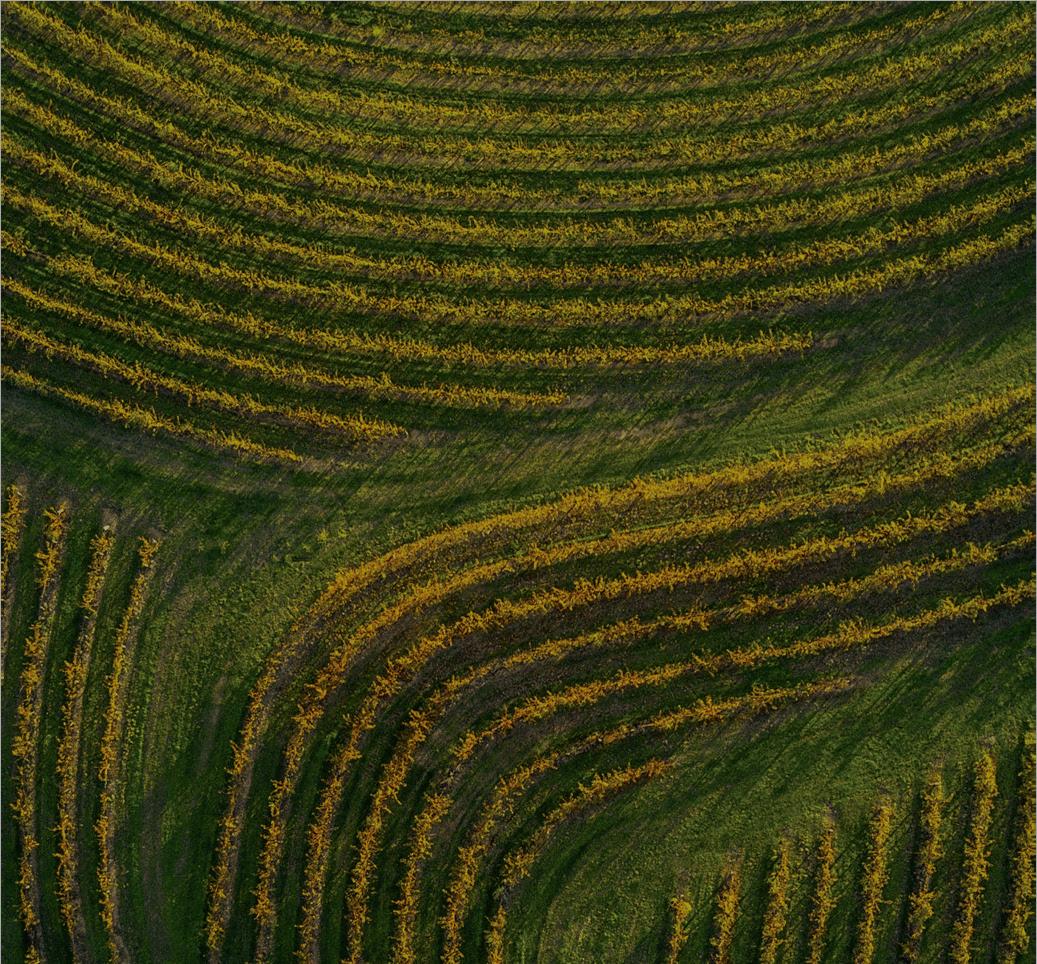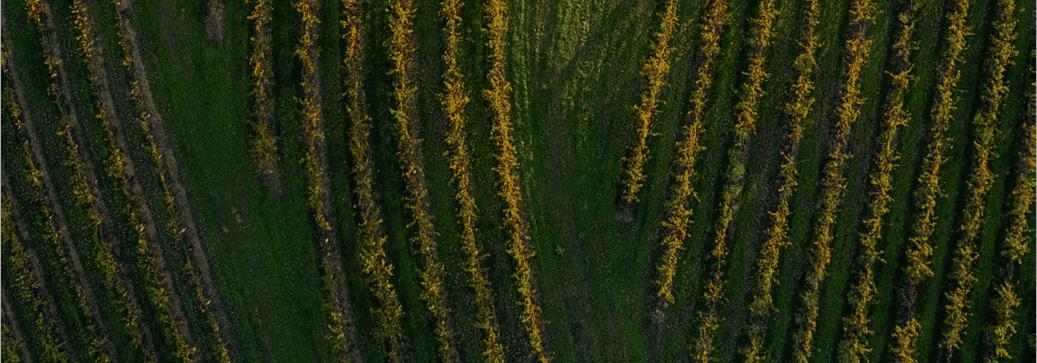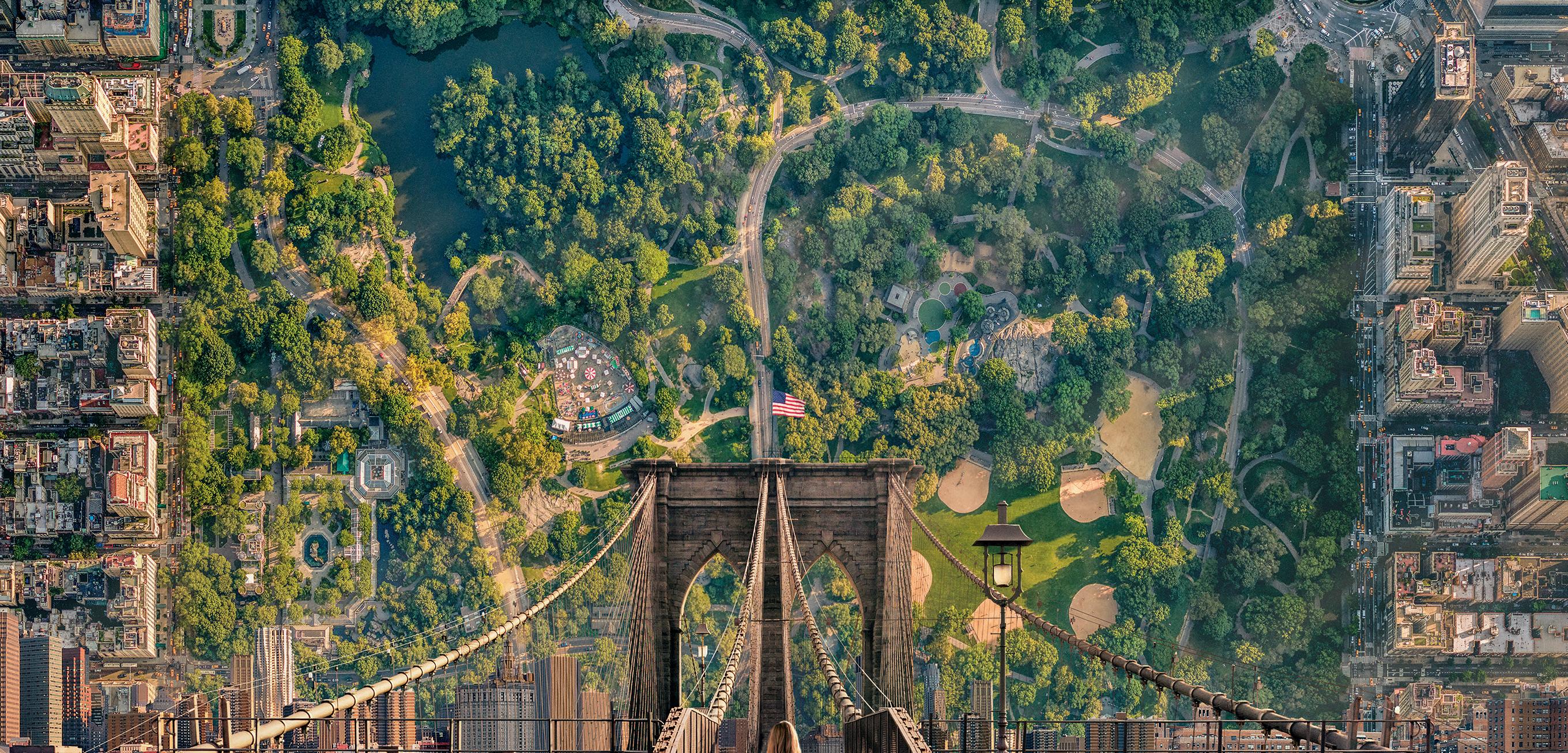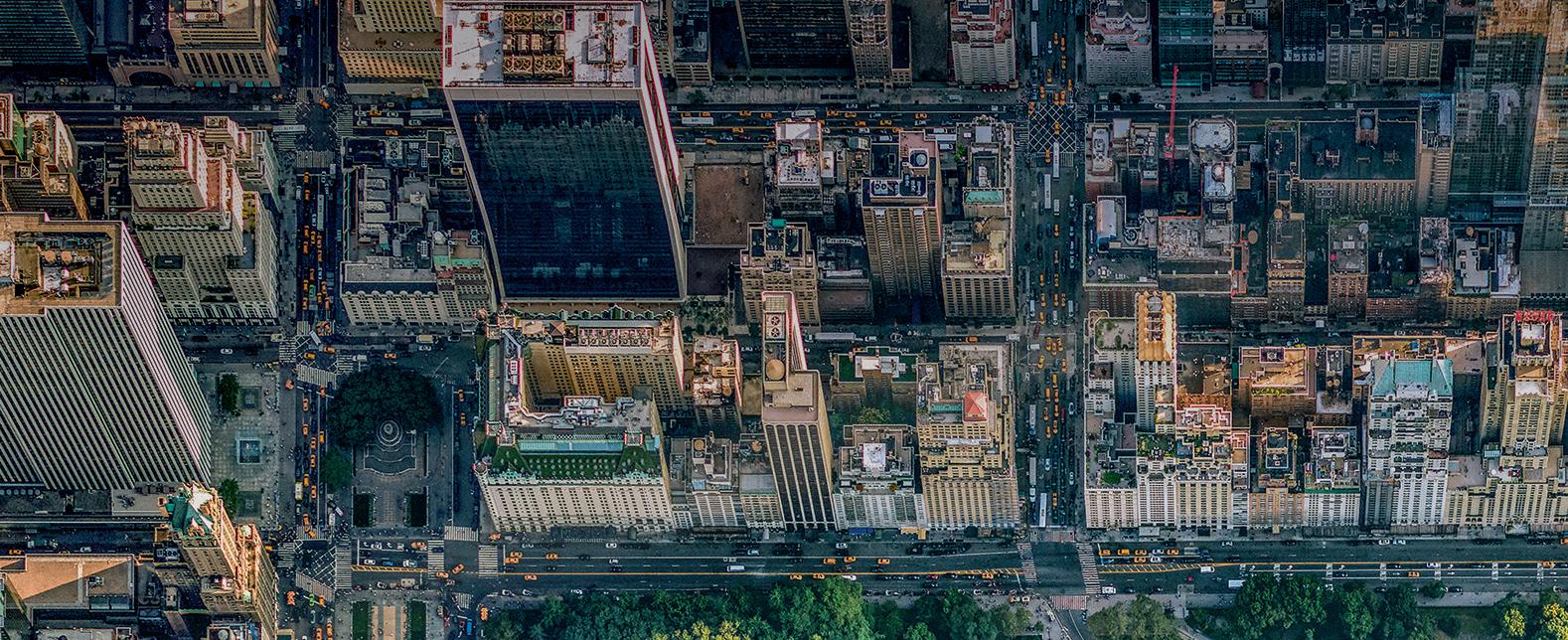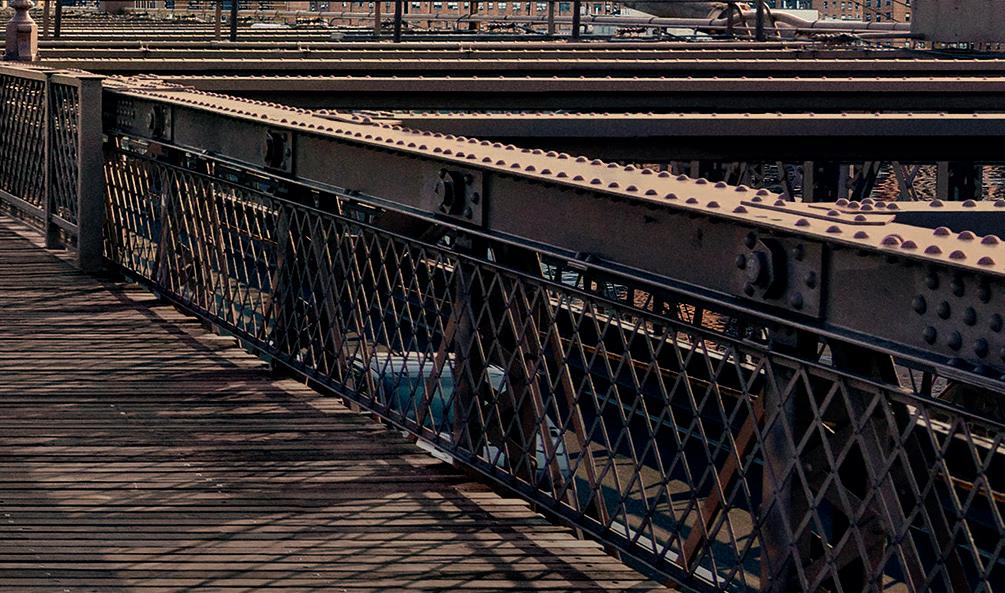20 IMMERSIVE EXPERIENCES YOU'LL NEVER FORGET



ASIA'S BEST NEW HOTELS

SECRET ALASKA


CAMBODIA'S ARTISTIC REVIVAL UNPACKING THE WELLNESS BOOM






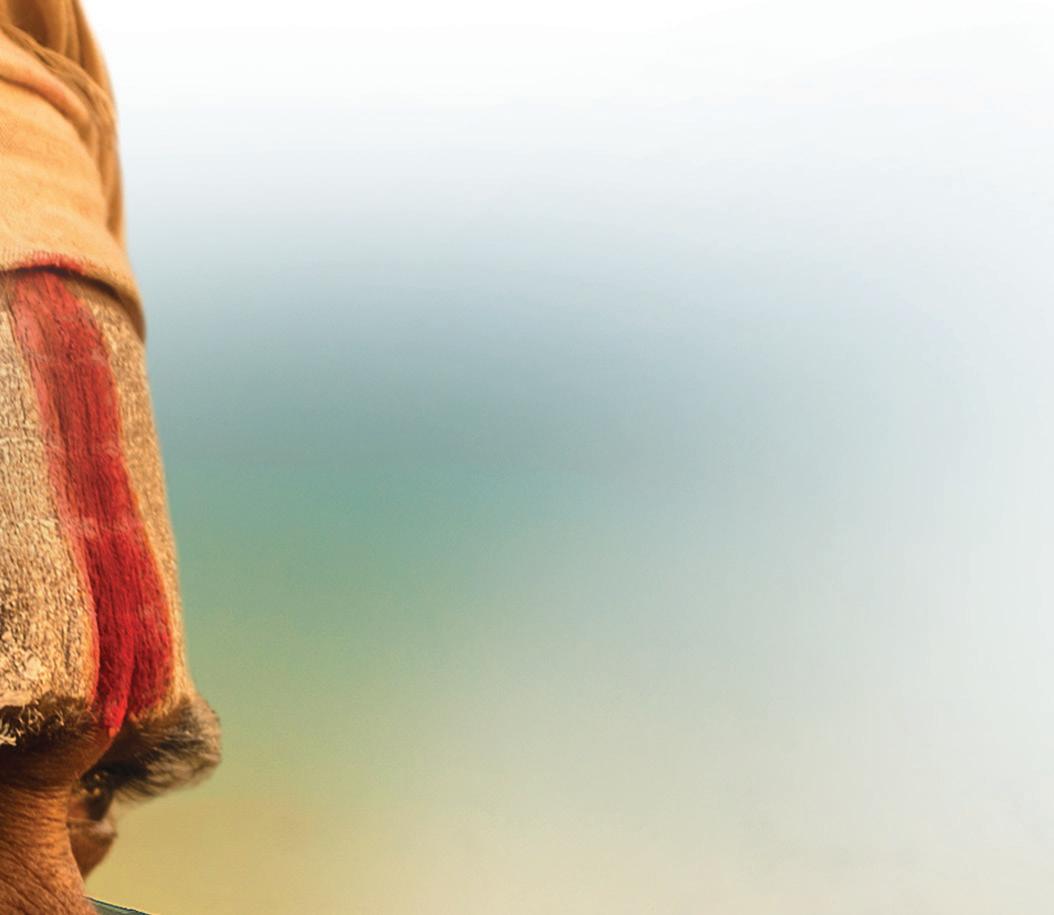








































20 IMMERSIVE EXPERIENCES YOU'LL NEVER FORGET



ASIA'S BEST NEW HOTELS

SECRET ALASKA


CAMBODIA'S ARTISTIC REVIVAL UNPACKING THE WELLNESS BOOM















































HANDCRAFTED

Abercrombie & Kent’s Small Group Journeys portfolio includes all the eternal luxury travel favourites — sub-Saharan African safari camps, Nile cruises, the European capitals of the Grand Tour, the temples and palace hotels of India, the mysterious ruins of pre-Columbian empires in Latin America, the Northern Lights. It also includes journeys to more challenging, emerging and re-emerging destinations that are fast becoming favourites: Mongolia, Madagascar, Patagonia, the Caucasus, Arabia, Iran, Uzbekistan, Turkmenistan. If you’re looking for a shared adventure in true A&K luxury — exquisite accommodation, perfectly-paced itineraries, curated cultural experiences, exclusive access and privileges, expert resident tour directors, and unforgettable encounters with local people and wildlife — start exploring now and fi nd yourself somewhere amazing on an A&K Small Group Journey.
Talk to your travel agent or call Abercrombie & Kent on 1300 851 800.


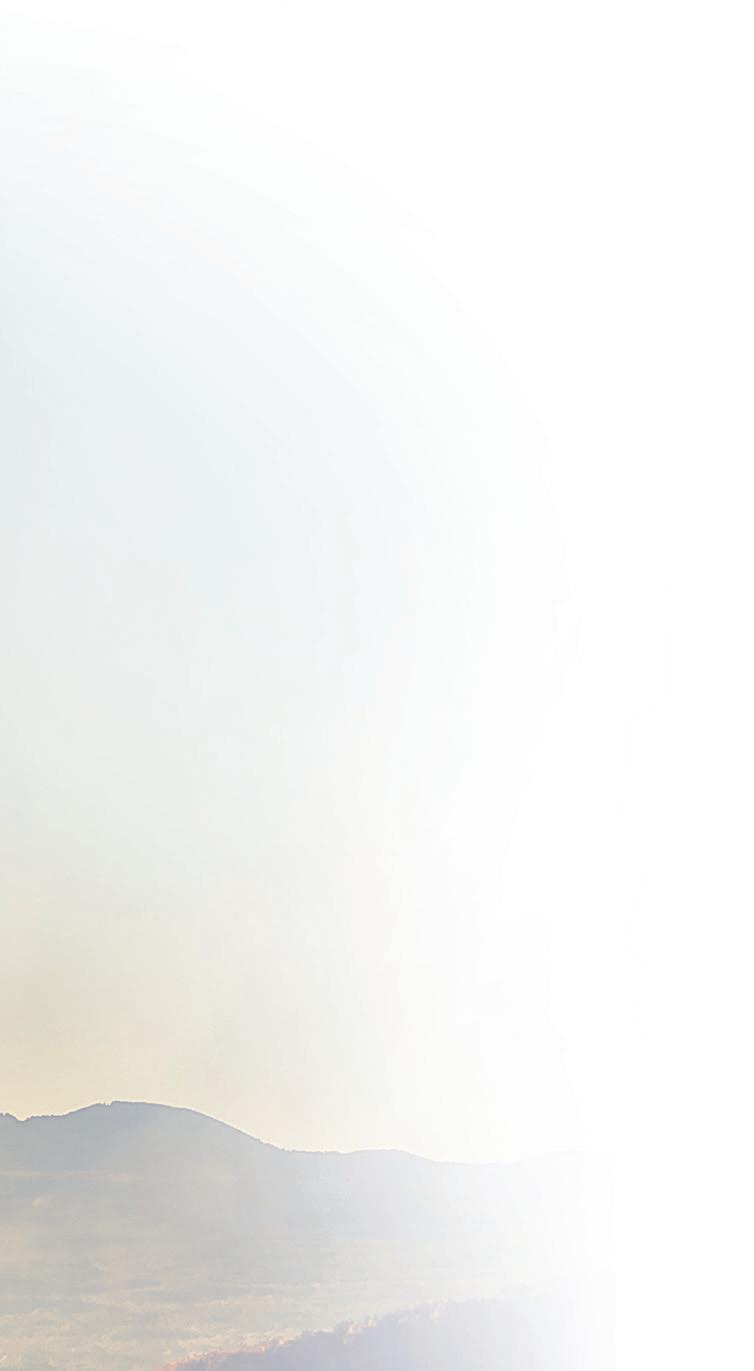



There are secrets within every great city. You just have to know where to look.

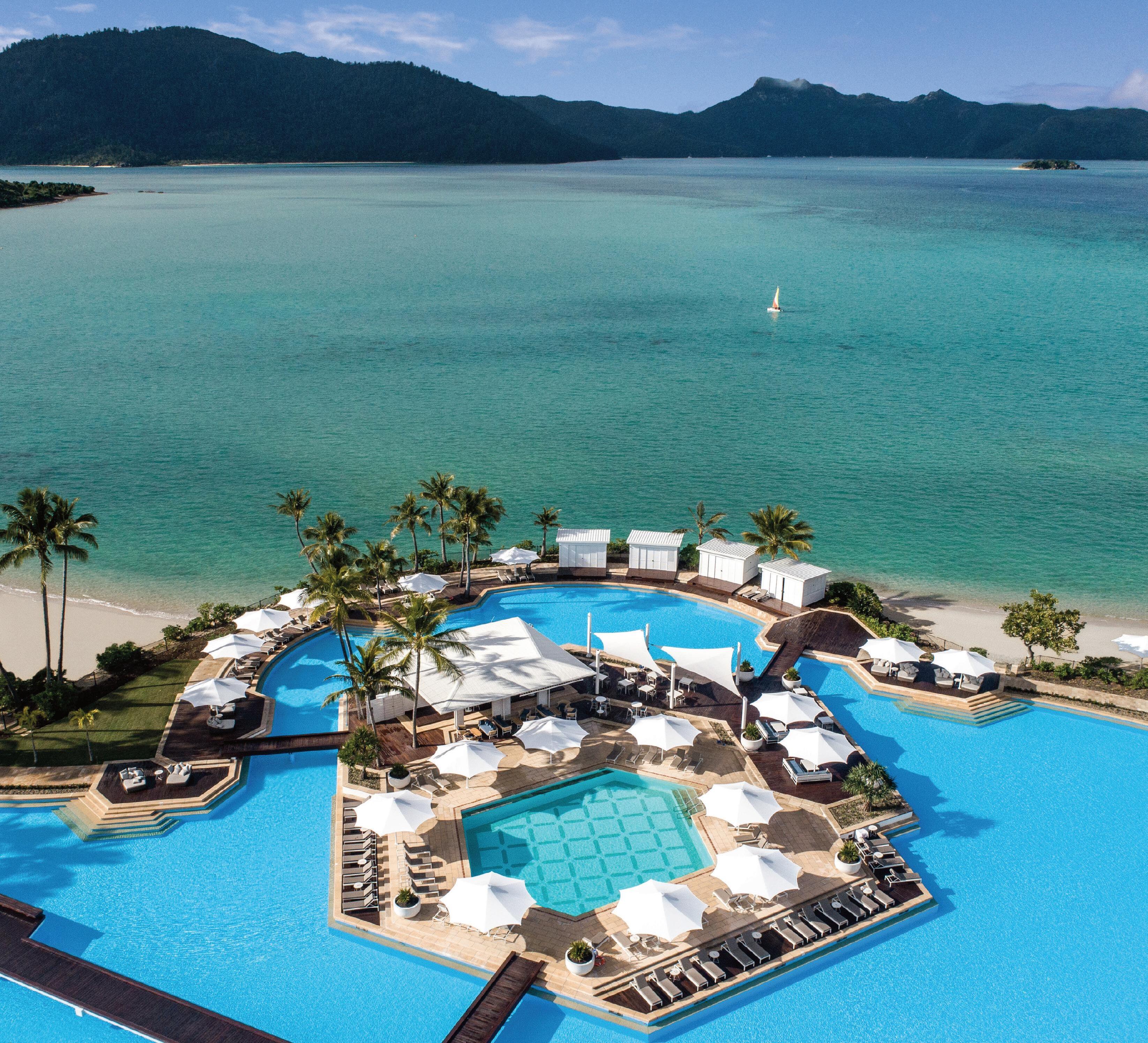

Welcome to a new era of immersive luxury in the heart of the Great Barrier Reef. Hayman Island by InterContinental unveils the breathtaking beauty of the Whitsundays, iconic private island experiences and sacred moments of connection with your family, friends and yourself.

From the moment you step off your seaplane, helicopter or luxury yacht, you will discover an idyllic destination of privacy and pampering; where diving the Great Barrier Reef, basking in your private pool, sailing the Coral Sea, indulging in culinary artistry and soulful spa treatments are but yet the beginning.
To learn more or to book your island getaway, visit www.haymanisland.intercontinental.com, email hayman.reservations@ihg.com or call 07 5501 9992.
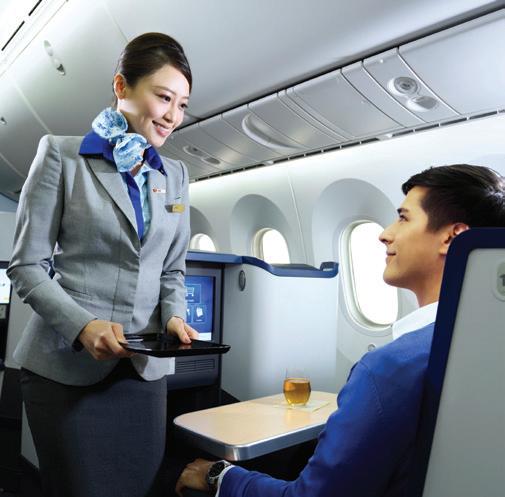

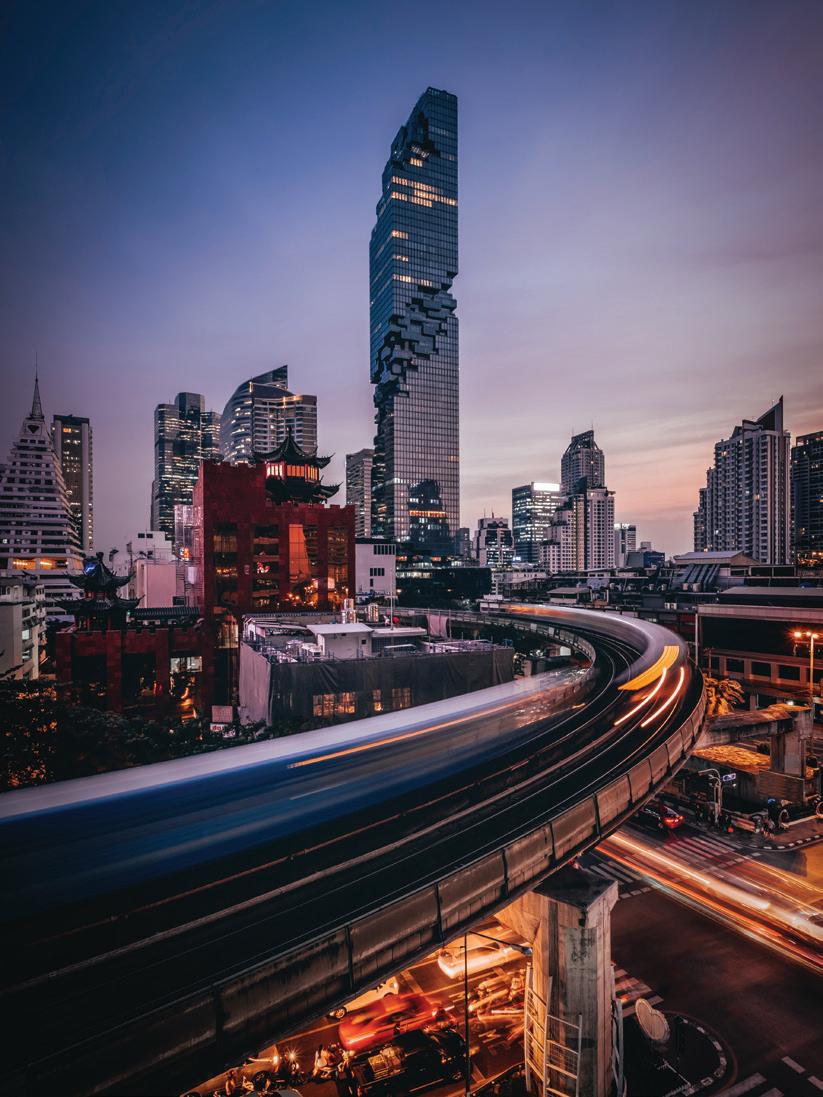
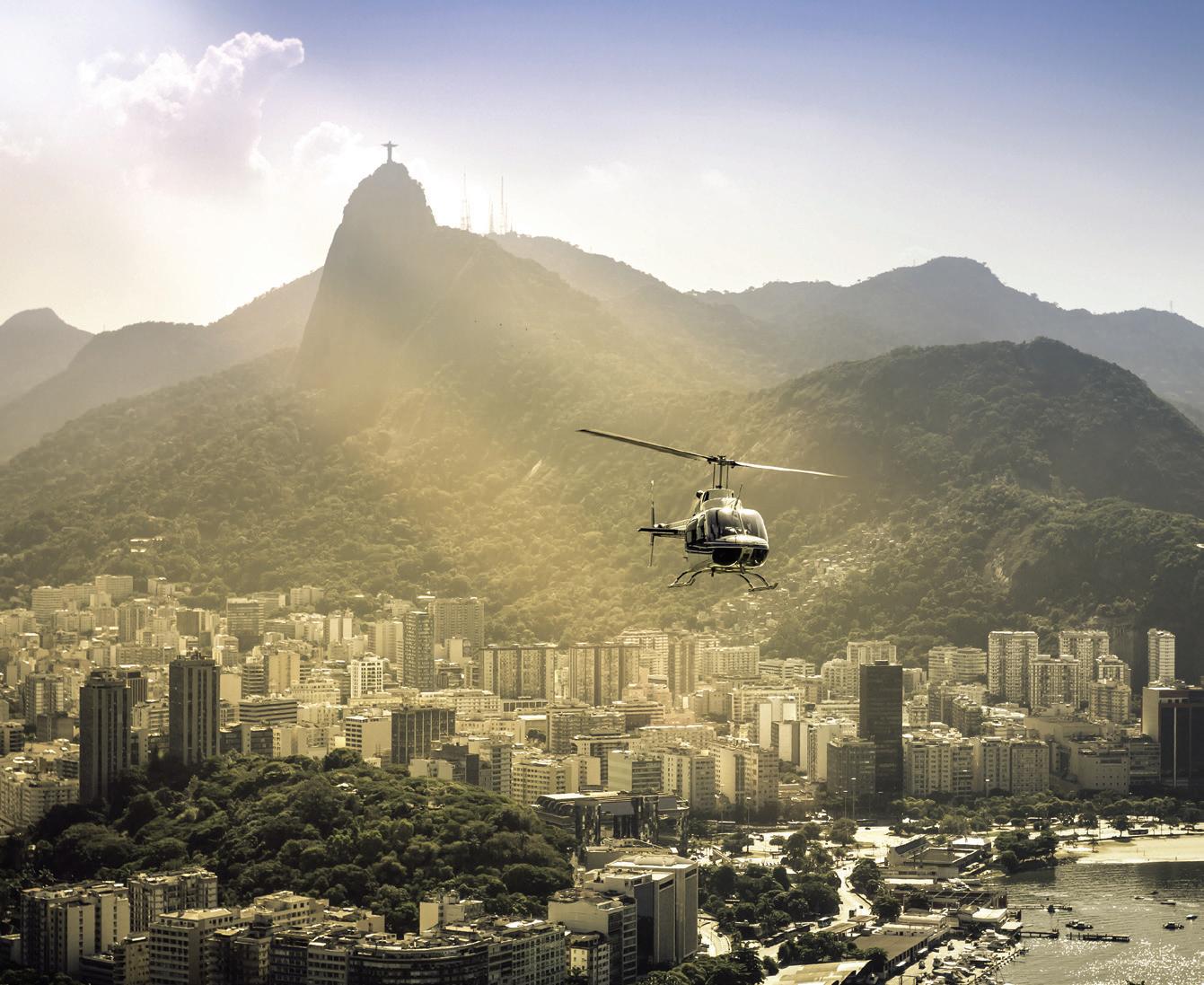
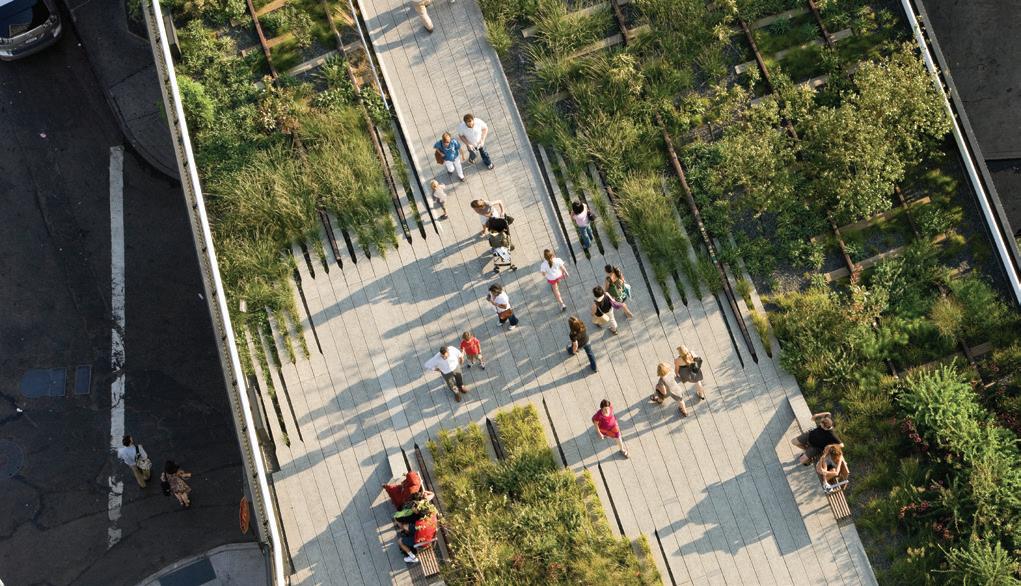

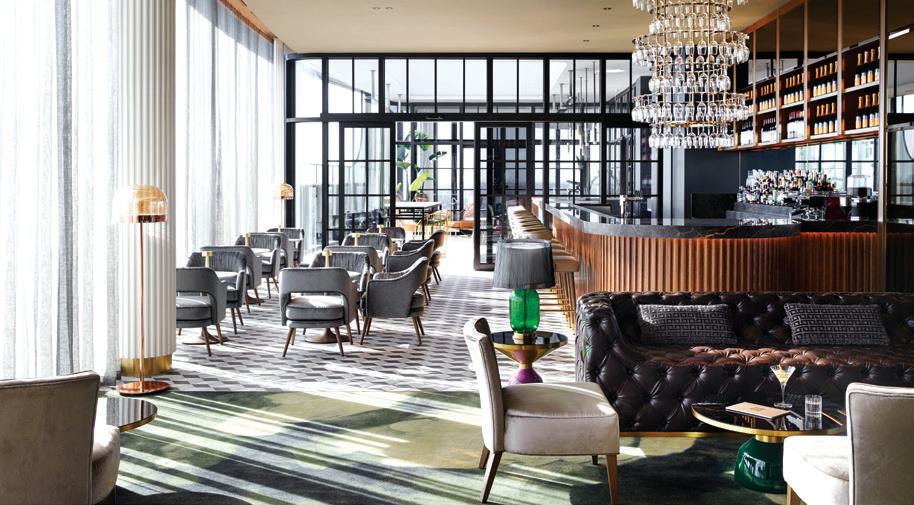
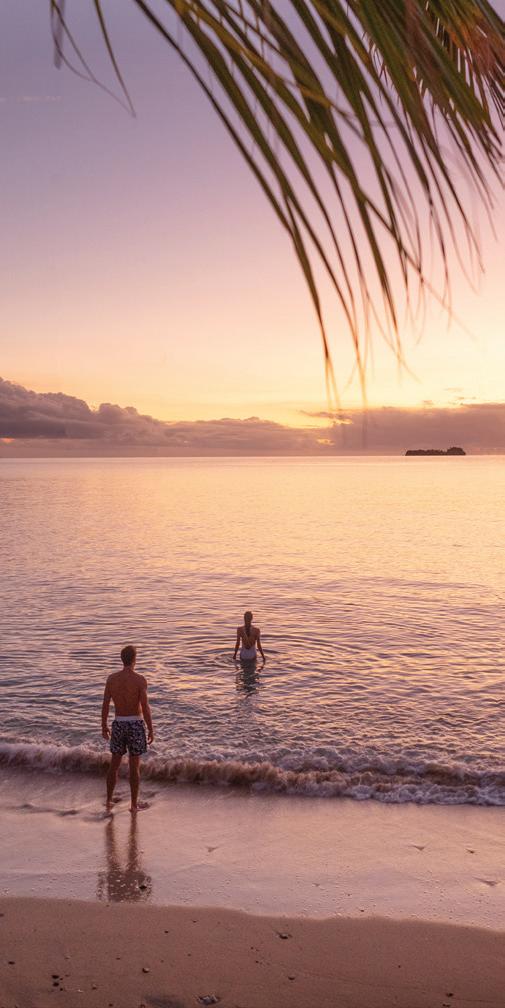

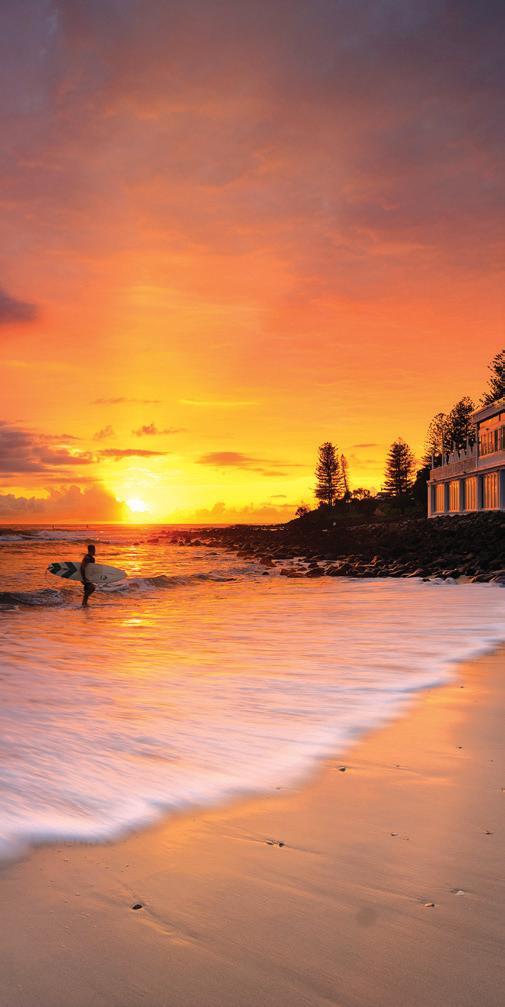

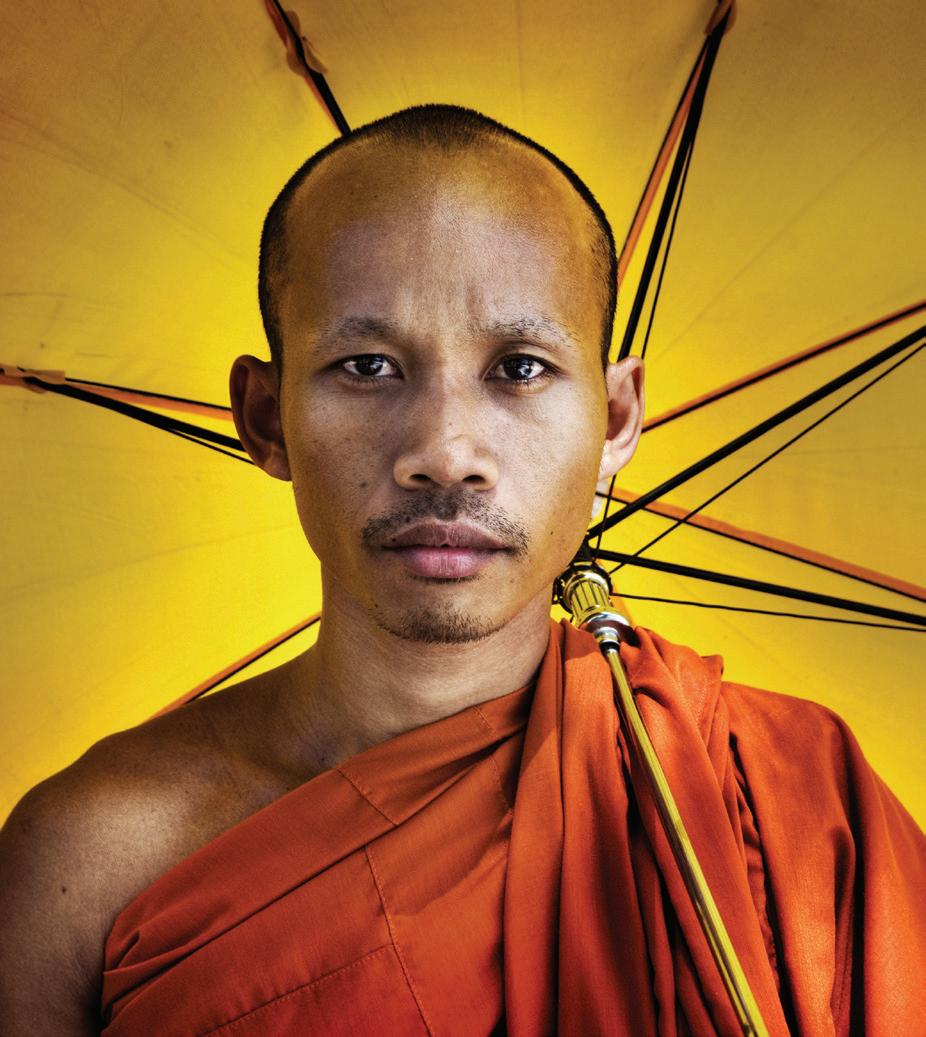
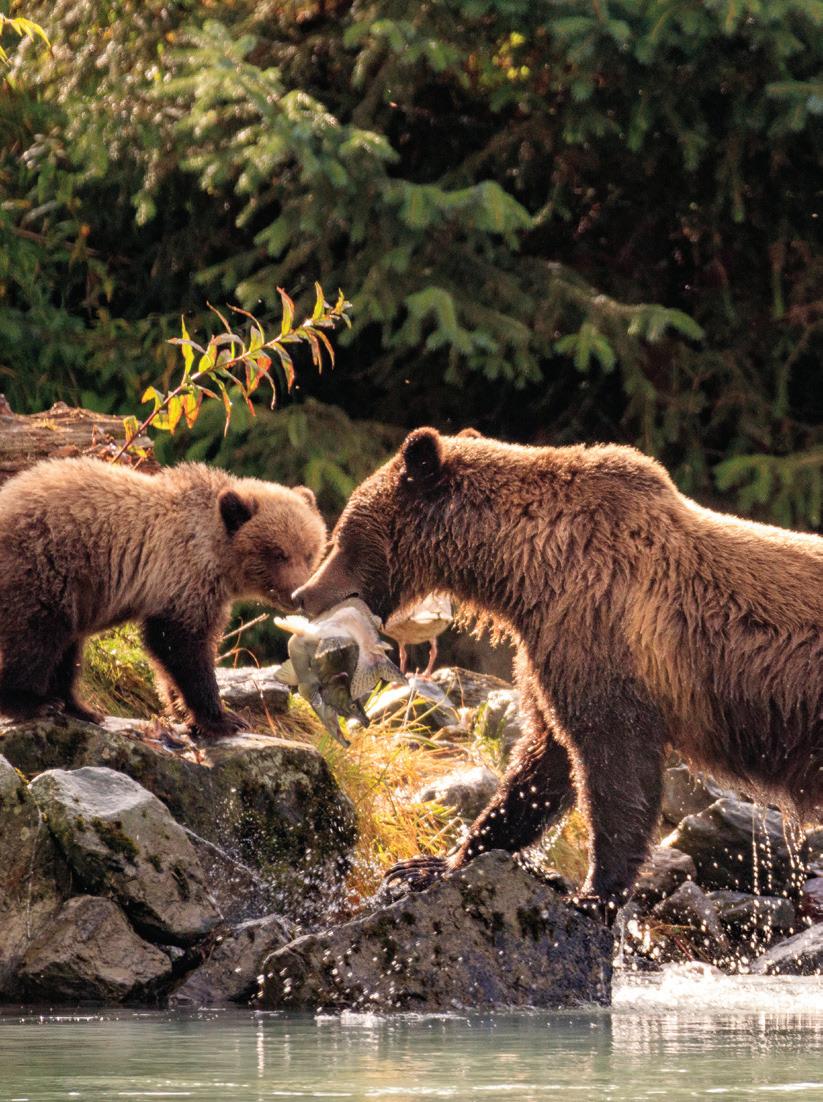
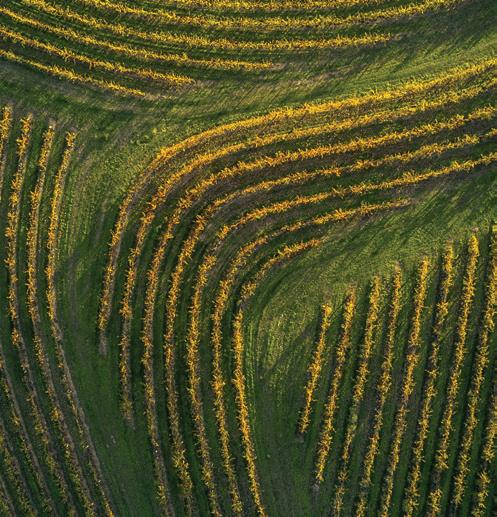


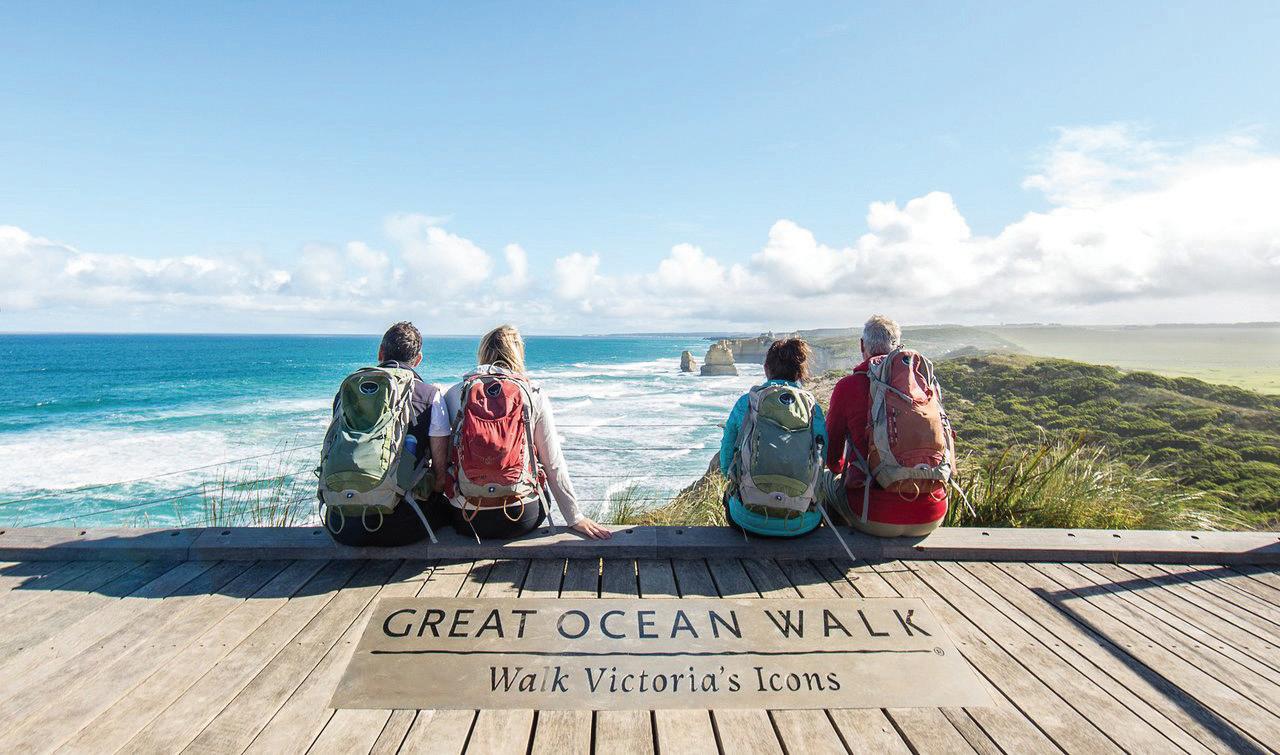


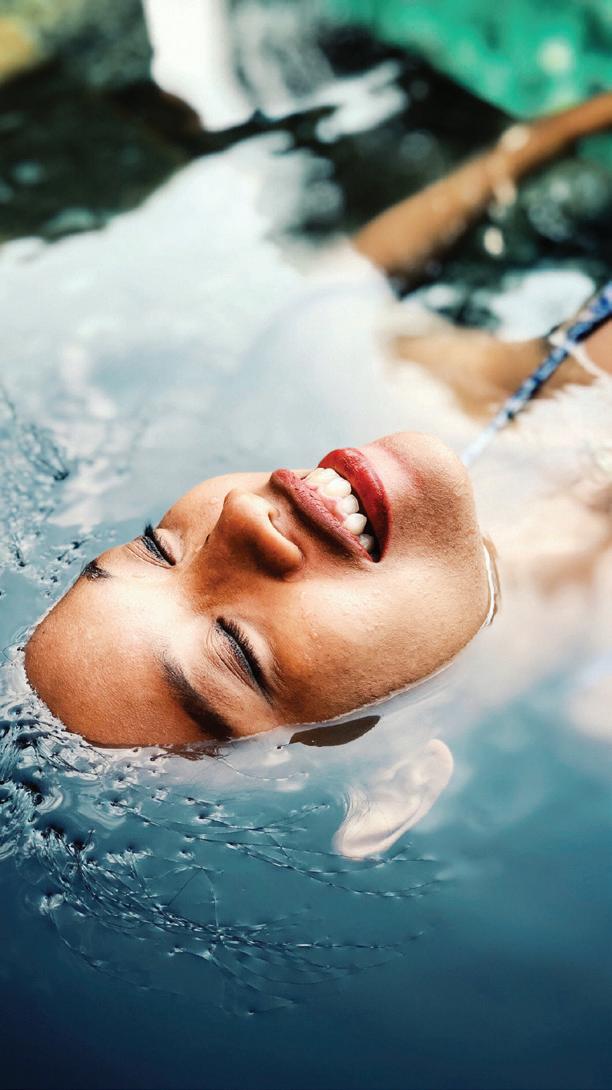

Welcome to our 20 Year Anniversary Edition! Did you recognise our special issue cover star? It’s none other than InterContinental Hayman Island Resort and there are two reasons we’ve opted to give the much-loved Queenslander top billing. Firstly, and we think you’ll agree, she’s a true beauty. Secondly, and perhaps most significantly, it is a nostalgic return to our innocent early days: Hayman Island was the cover star of our debut issue back in 2000. It’s a pleasure to welcome the iconic resort back, both to our cover and to the luxury travel scene. Read more on Page 96.
Putting this magazine together is a constant source of inspiration for the Luxury Travel team. We are forever being wowed by the most unforgettable destinations and experiences – some we actually get to enjoy first-hand while others go straight to the to-do list.
This was the experience for me after we put our Autumn issue to bed earlier this year. The ‘Feed Your Senses’ cover featured a spectacular image of The Dolomites in Italy and as soon as I saw it, I knew I had to go. And I did. In fact, I stood in the exact spot the image was taken and it was everything I imagined it to be. No, better. You can read about the experience on Page 130. For me, after so many years, it is a thrill to know I can still be inspired by the journeys in our magazine. I hope you will be as well.
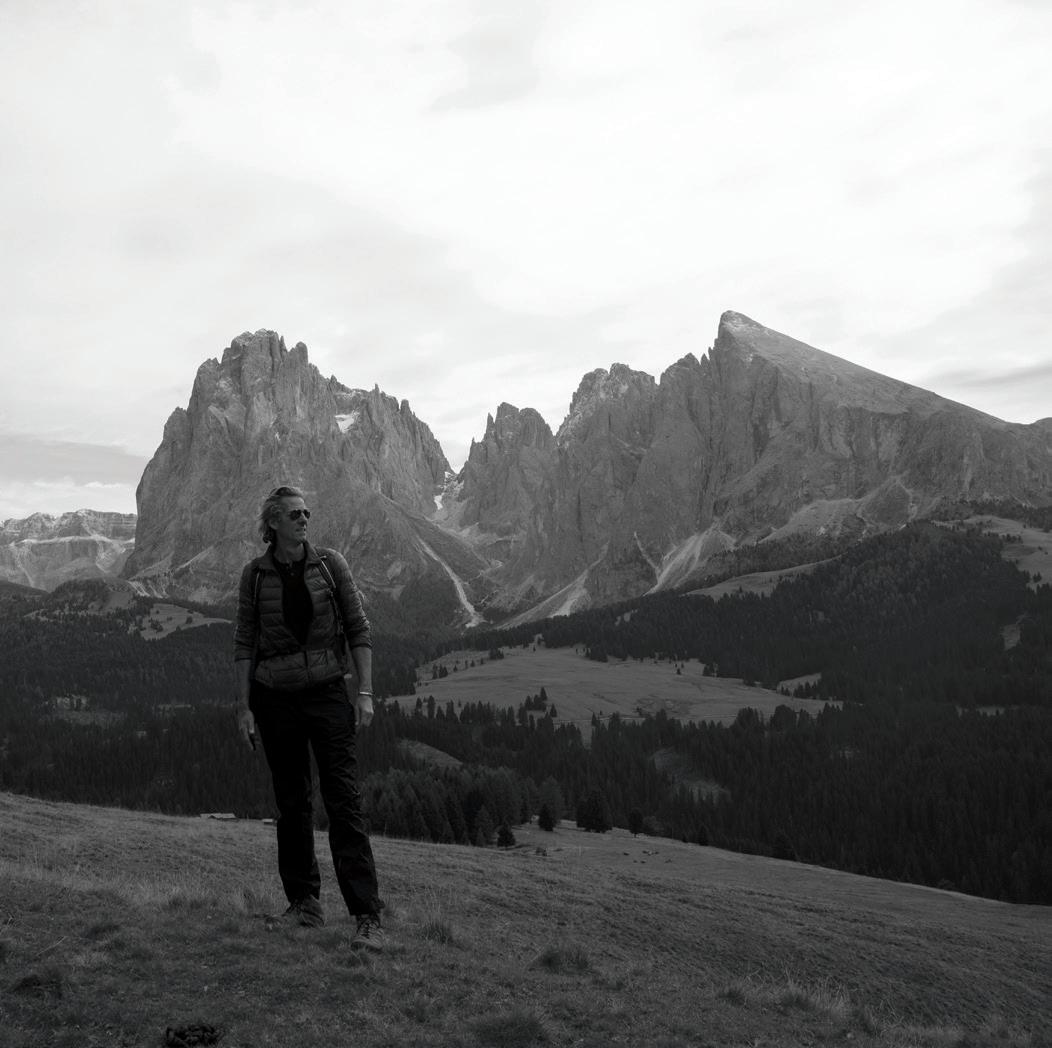
And we have plenty of them. To help us celebrate two decades in the game, our cover story this issue highlights 20 genuinely immersive experiences in luxury travel. Our feature writer, Madelin Tomelty, searched high and low for the once-in-a-lifetime experiences that would allow travellers to dive deeper. Contributing Editor Kate Symons takes a look at the rise and rise of wellness travel, and what’s next for the booming industry. We also head to Siem Reap, Alaska, New York, Vietnam and Tahiti, to name but a few.
I hope you enjoy the issue and thank you for flipping our pages.
Steve Hui
SKY’S THE LIMIT 28
Founder of iFLYflat.com.au, Steve is Australia’s go-to expert for frequent flyer points or credit card rewards commentary. Also known as ‘The Points Whisperer’, he knows everything about how to use rewards points most effectively. His background in accounting and finance provides a solid platform.
BEYOND PARADISE 105
Caroline has been travel editor at national newswire Australian Associated Press for over three years and a freelance writer for many more. She has always loved the South Pacific, but was completely seduced by Tahiti and Mo’orea’s fairytale landscape and their unique blend of Polynesian and French culture.
A WINTER’S TALE 116
Passionate for all things outdoors, Lyn focuses on nature-based journeys, making Alaska the ultimate destination. She also loves to connect intimately with cultures along the way. Her favourite destinations include New Zealand, Mongolia, India, Asia and, a recent addition, the fall splendour of the USA’s national parks.


Joe is a former news reporter who has spent the past 22 years in Japan, Hong Kong and Thailand. The exoticism of these places still makes him laugh with delight. Now based in Phuket, Joe likes language, literature, food and wine. As well as travel, he writes on philosophy and psychology.

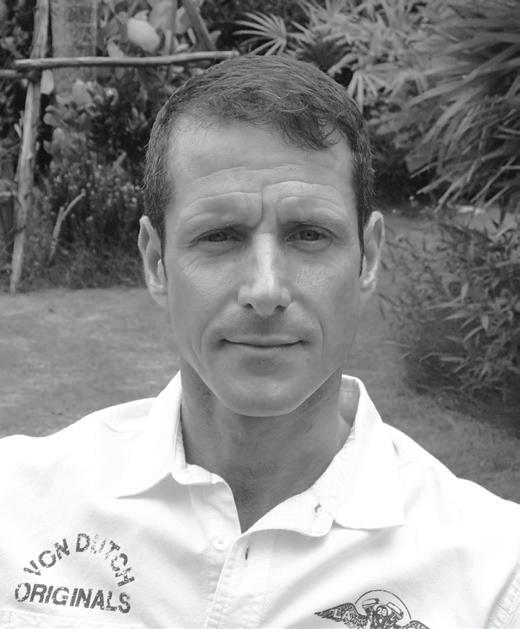

Discover an exclusive collection of unique tours, offering incredible encounters, hands-on exploration, and the freedom to roam –all within the structure and security of traveling in a small group. Contact us to learn more.
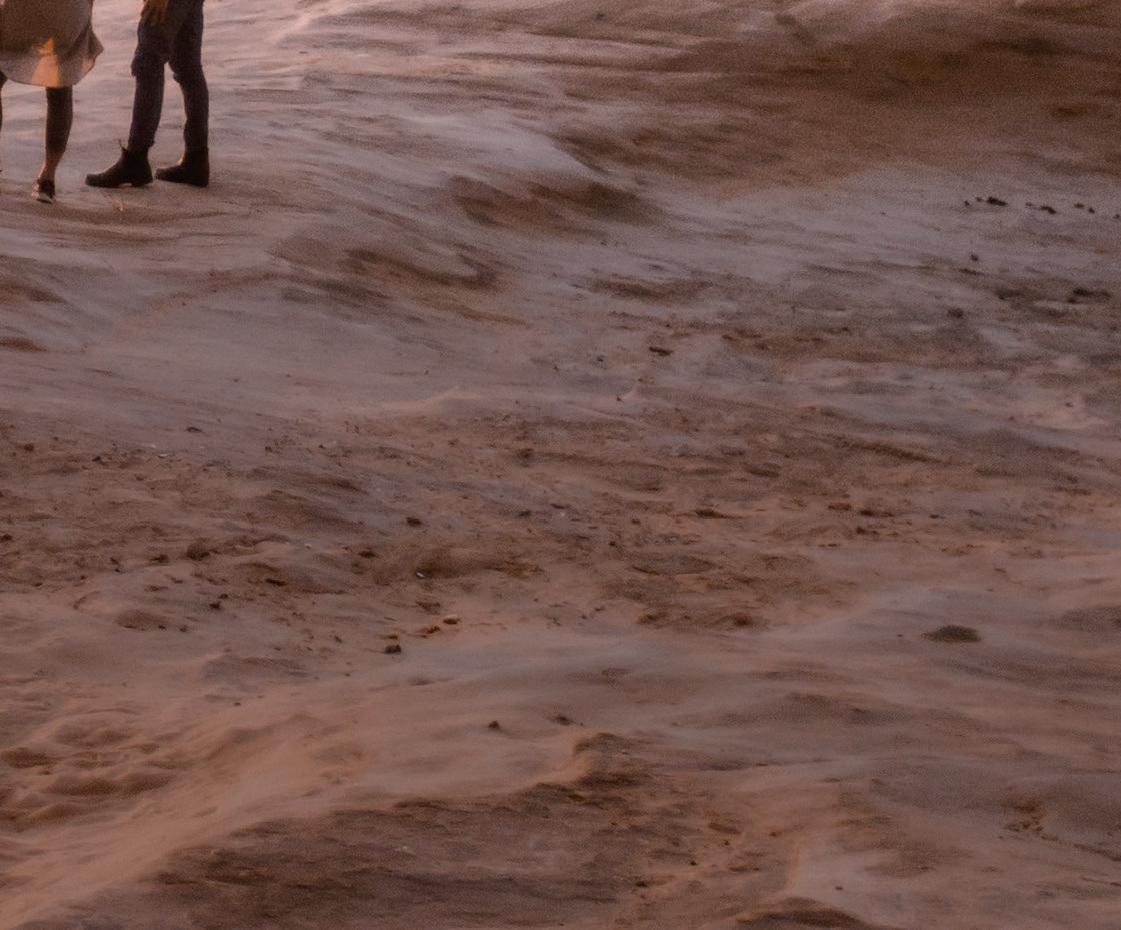
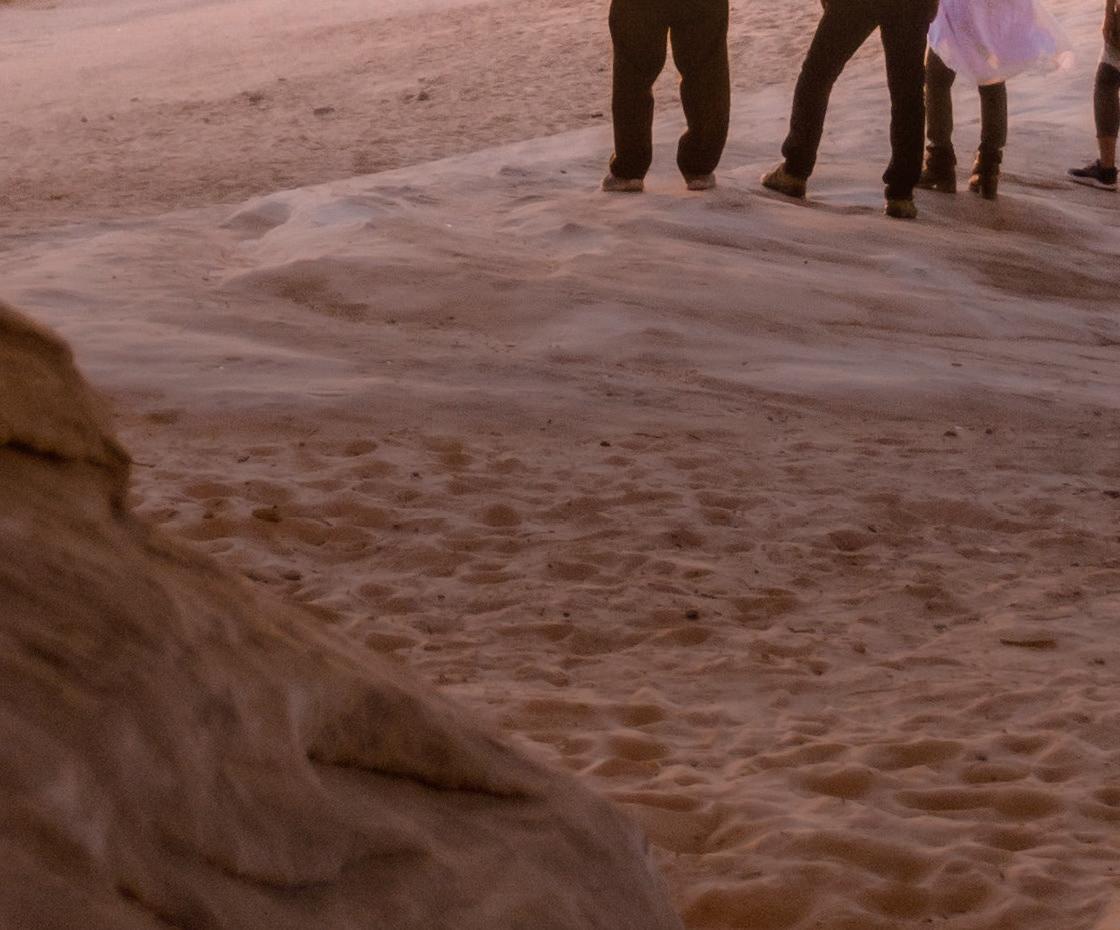
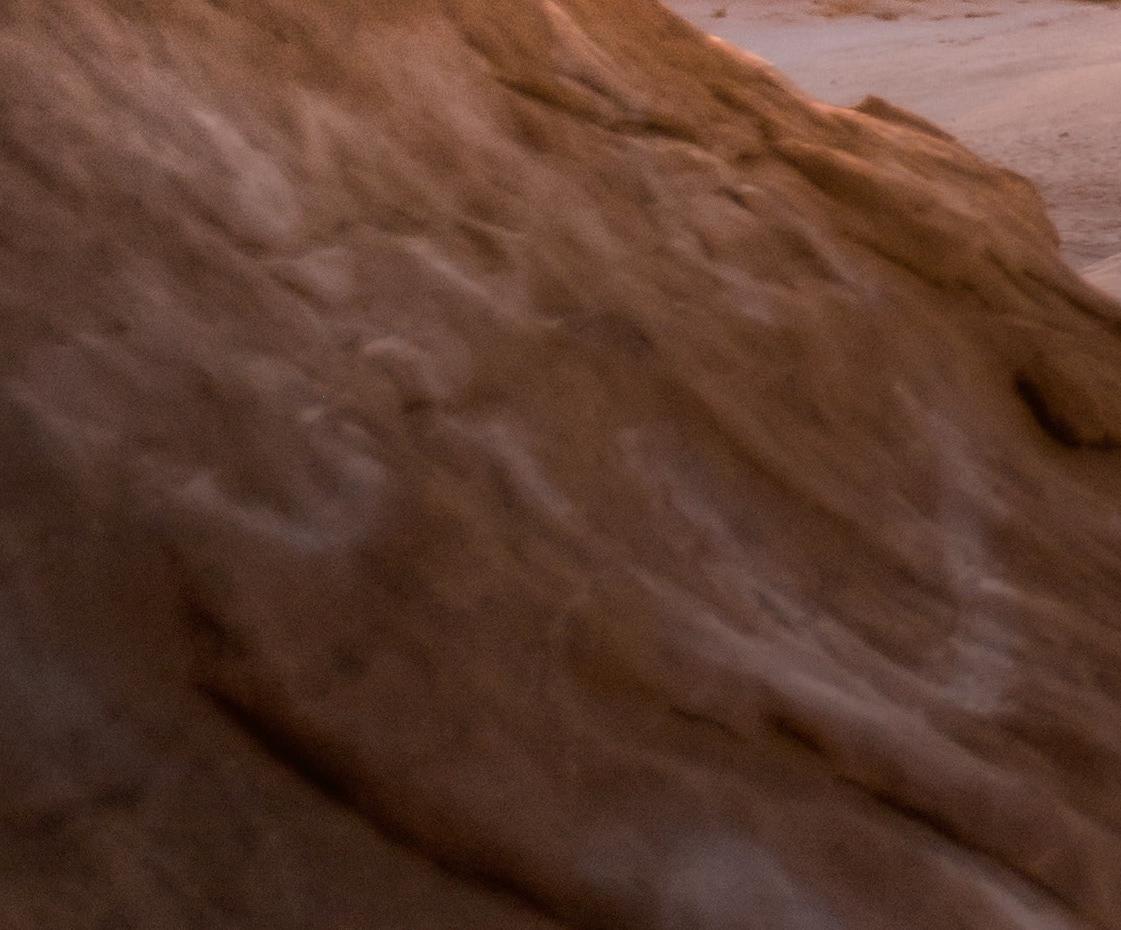
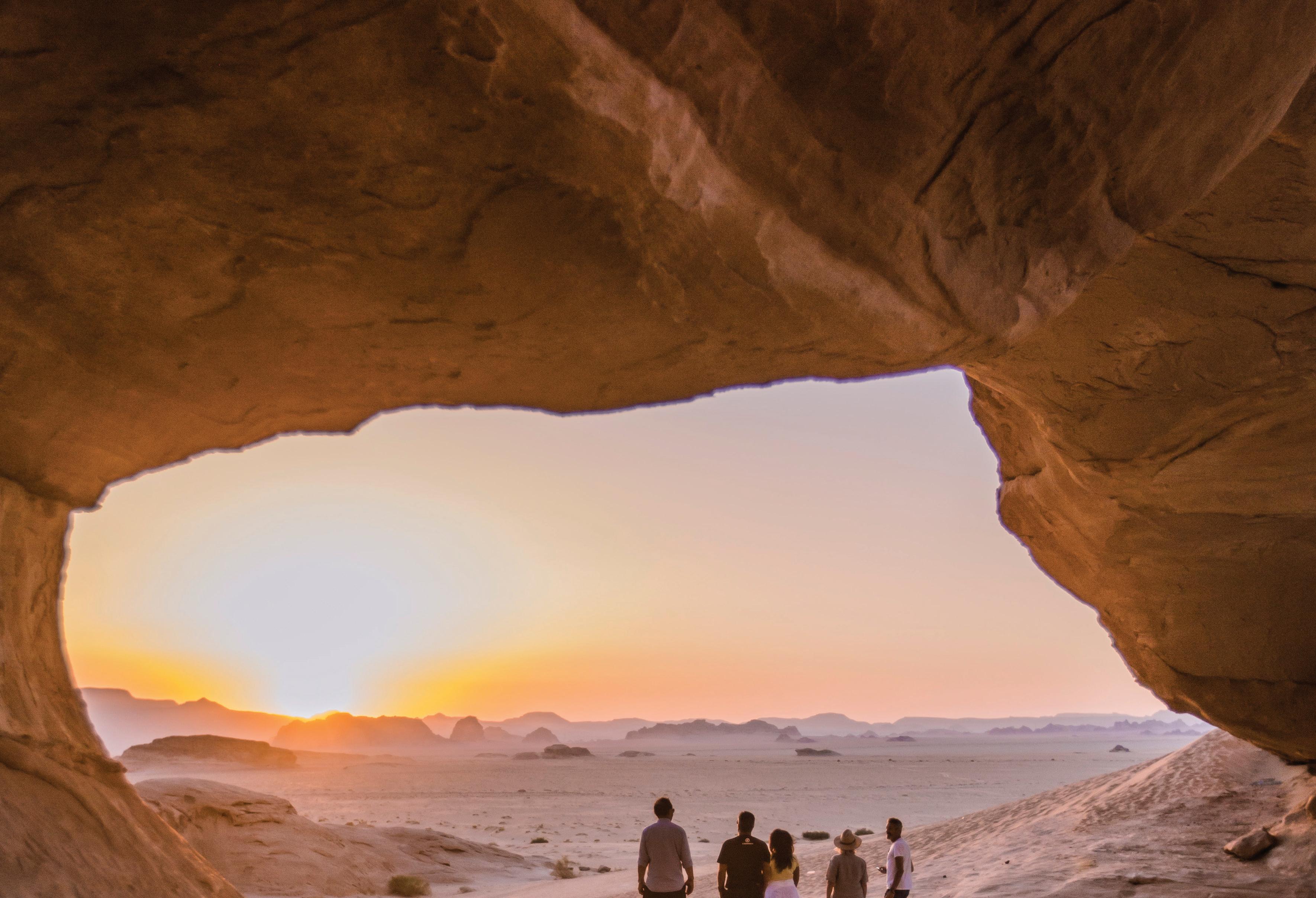
1300 729 469 | gadventures.com.au/journeys

A new line of trips for adventure-loving families in search of a meaningful way to discover the world together. These itineraries are specially designed so travelers ages seven and up can explore a destination’s rich and diverse characteristics. Each itinerary features unique, interactive activities inspired by National Geographic’s expertise in photography and storytelling, wildlife, culture, history, and geography to encourage kids and adults alike to connect with the world around them.

LET US TAKE YOU CLOSER TO THE TRUE SPIRIT OF THE FAR EAST
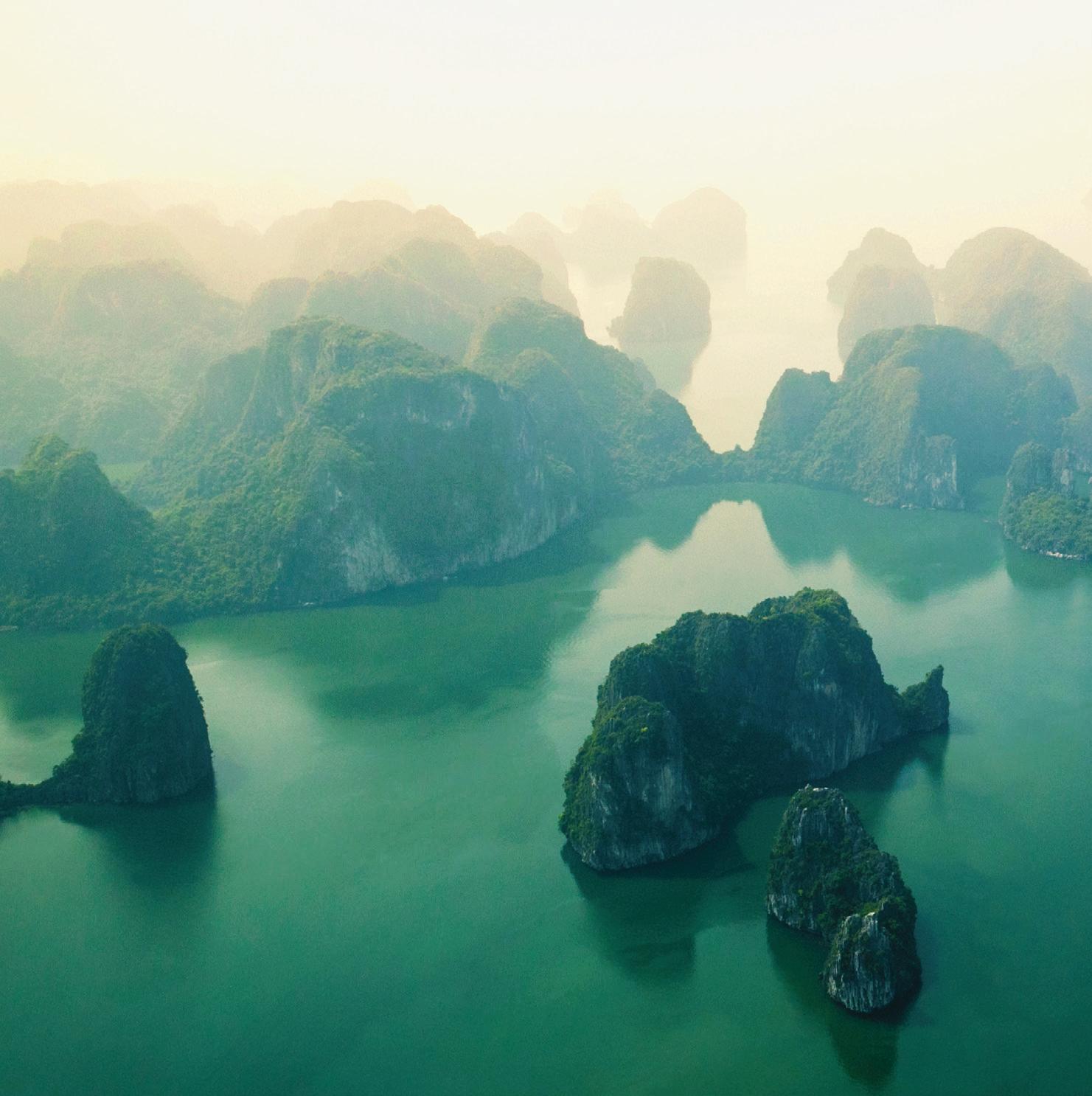
There is not one word to define the melting pot of culture, people and religion that is Asia. Silversea’s voyages take on a full spectrum of this diverse continent, with journeys rich in emotion and sensation. This is where you’ll be humbled by towering mountains, awed by ornate temples, and captivated by authentic customs.
14 DAYS, SILVER SPIRIT
4 JANUARY – 18 JANUARY 2020
FARES FROM au$9,400 pp
Ho
Chi
LAST MINUTE SAVINGS
HONG KONG TO BANGKOK (LAEM CHABANG) VOYAGE 5002
14 DAYS, SILVER SPIRIT
18 JANUARY – 1 FEBRUARY 2020
ONE-CATEGORY SUITE UPGRADE UP TO DELUXE VERANDA ON SILVER SPIRIT us$1,000 ONBOARD CREDIT PER SUITE CAN BE USED FOR SHORE EXCURSIONS, SPA TREATMENTS, SPECIALTY DINING OPTIONS, AND THE ONBOARD BOUTIQUE.
FOR MORE INFORMATION OR TO BOOK, CONTACT YOUR PREFERRED TRAVEL AGENT OR SILVERSEA ON 1300 727 155 | SILVERSEA.COM
Terms and Conditions: All fares shown are in AUD, per person, in double occupancy, in the lowest available suite category at time of print. Last Minute Savings offer valid on new, individual bookings made between 1 Nov 2019 and 31 Dec 2019. US$1,000 shipboard credit per suite is part of the Last Minute Savings offer. Booking and payment terms apply. Cancel and re-books do not qualify. Single Supplement offer subject to availability and may be changed or cancelled at any time without notice. Other restrictions may apply. All fares, savings, offers, programmes and itineraries are subject to change without notice. Additional restrictions may apply. Silversea reserves the right to correct any errors or omissions. Visit silversea.com for full offer details and complete Terms and Conditions.
Deeper Go
GENERAL MANAGER & MANAGING EDITOR
Richard Bunting t: +61 424 138 806 rbunting@luxurytravelmedia.com.au
DIGITAL EDITOR & FEATURE WRITER Madelin Tomelty mtomelty@luxurytravelmedia.com.au
ART DIRECTOR Kyle Sansbury design@luxurytravelmedia.com.au
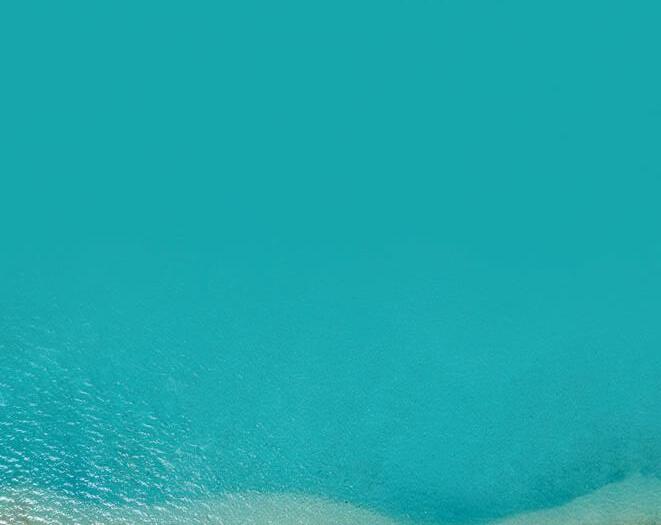
CONTRIBUTING EDITOR & COPY EDITOR Kate Symons ksymons@luxurytravelmedia.com.au
HEALTH & WELLNESS EDITOR Kelly Allen kallen@luxurytravelmedia.com.au
US CONTRIBUTOR
ON THE COVER InterContinental Hayman Island Resort Published by: Luxury Travel Media ABN 86 066 598 427 PO Box 239 Artarmon NSW 1570 PRINTED BY SPOTPRESS Distribution and Subscription Enquiries: AUSTRALIA and NEW ZEALAND T: +61 424 138 806 | E: subscriptions@luxurytravelmedia.com.au W: luxurytravelmag.com.au/subscribe LT / OUR TEAM
12 | LUXURYTRAVELMAG.COM.AU travel ISSN 1443-3079 9 771443 307001 71 LUXURY MAGAZINE ISSUE 80 SUMMER 2019 $14.95 CELEBRATING 20 YEARS
Jennifer Maeder jbmaeder@gmail.com

Your digital destination for the latest luxury travel news and features on your desktop, tablet and mobile

Don’t forget to sign up to our fortnightly newsletter!




This idyllic island destination never fails to impress honeymooners and families alike, but with more than 130 resorts all offering access to white sandy beaches, clear turquoise waters, palms and coral reefs, choosing where to stay can be almost as much of a mission as the journey to get there. Here’s what to consider before you book a holiday in one of the world’s most paradisiacal destinations.
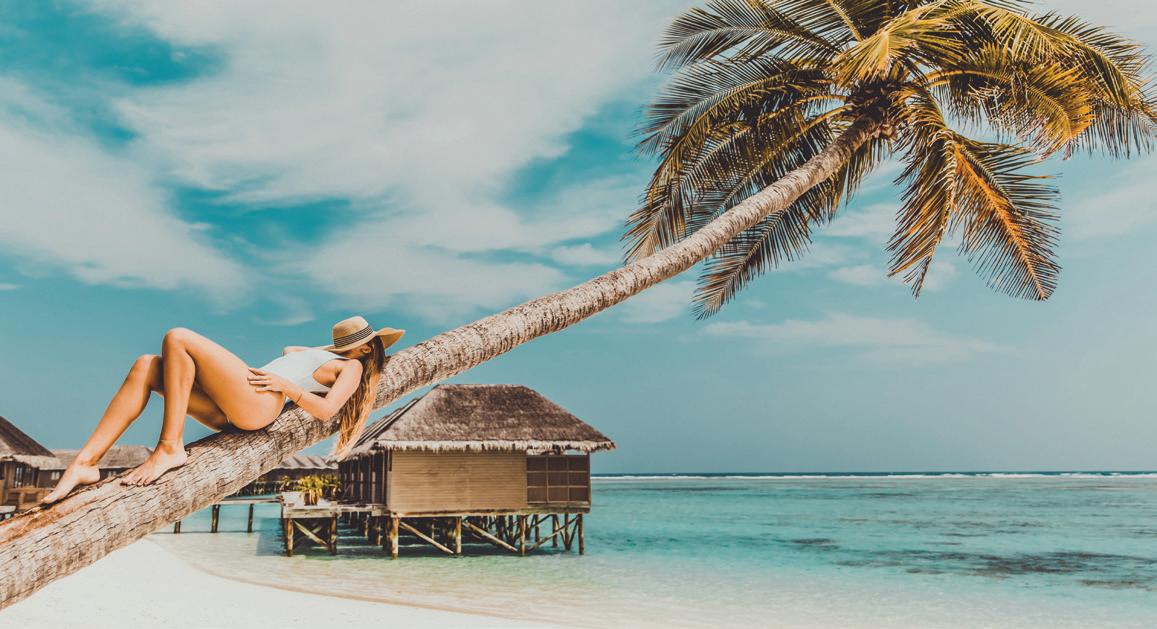
Q SEARCH
Our media-rich, immersive digital articles will transport you to the world’s most beautiful – and luxurious – destinations. Feed your wanderlust with stories such as...
THE BRITISH ARISTOCRACY AND INDIAN ROYALTY USED INDIA’S RAIL NETWORK AS THEIR VERY OWN PALACE ON WHEELS. WHO SAYS YOU CAN’T DO THE SAME?
Q SEARCH
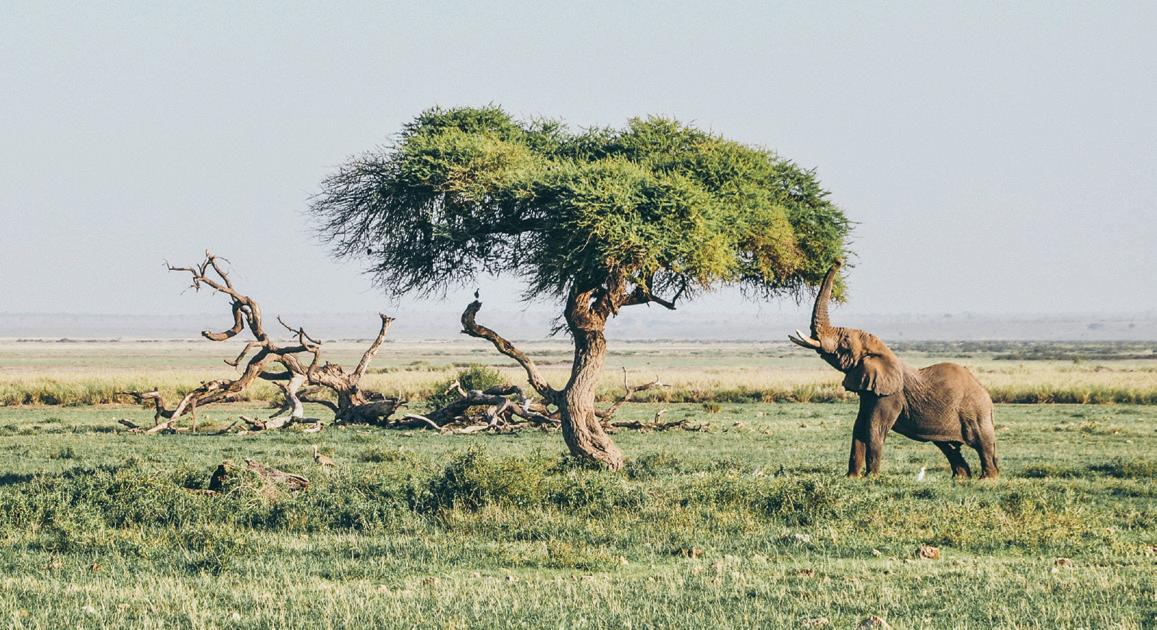
You’d be hard-pressed to find a travel lover who doesn’t have an African safari on their bucket list. Africa’s myriad national parks, reserves and conservation areas number among some of the most beautiful places on the planet and are home to an astonishing variety of wild animals Australians can only dream of. So where to go to increase your odds of spotting these majestic animals? From Tanzania to Botswana and Kenya, here’s where – and how – to increase your chances of seeing Africa’s Big Five

In this interactive story, we step inside the Deccan Odyssey, long considered one of India’s most in-demand train journeys. Passengers on board this splendid locomotive have the chance to feast their eyes on UNESCO heritage sites, vineyards, mountains, deserts and beaches; hidden villages where ancient traditions are alive and well, as well as opulent and extravagant royal cities. And with six itineraries on offer on board the royal train, the hardest part will be deciding which one to choose.


RUGGED, CRESCENT-SHAPED SOUTH GEORGIA EPITOMISES LIFE ON ‘THE EDGE’. Literally. Measuring 167 kilometres long and, at its broadest, 40 kilometres wide, the 3755-square-kilometre island is teeming with treasures, from captivating landscapes to incomparable wildlife.
During breeding season, the coast is home to more than 60 million breeding birds of over 30 different species, and over four million seals. At the height of breeding season, the area between Elsehul Bay and Salisbury Plain is believed to have more wildlife per square metre than anywhere else on the planet. They don’t call it the ‘Galapagos of the Poles’ for nothing.
Quark Expeditions’ 20-day Explorers and Kings journey takes in the wonder of South Georgia, as well as the wonderfully remote Falkland Islands and the extraordinary beauty of the Antarctic Peninsula. quarkexpeditions.com
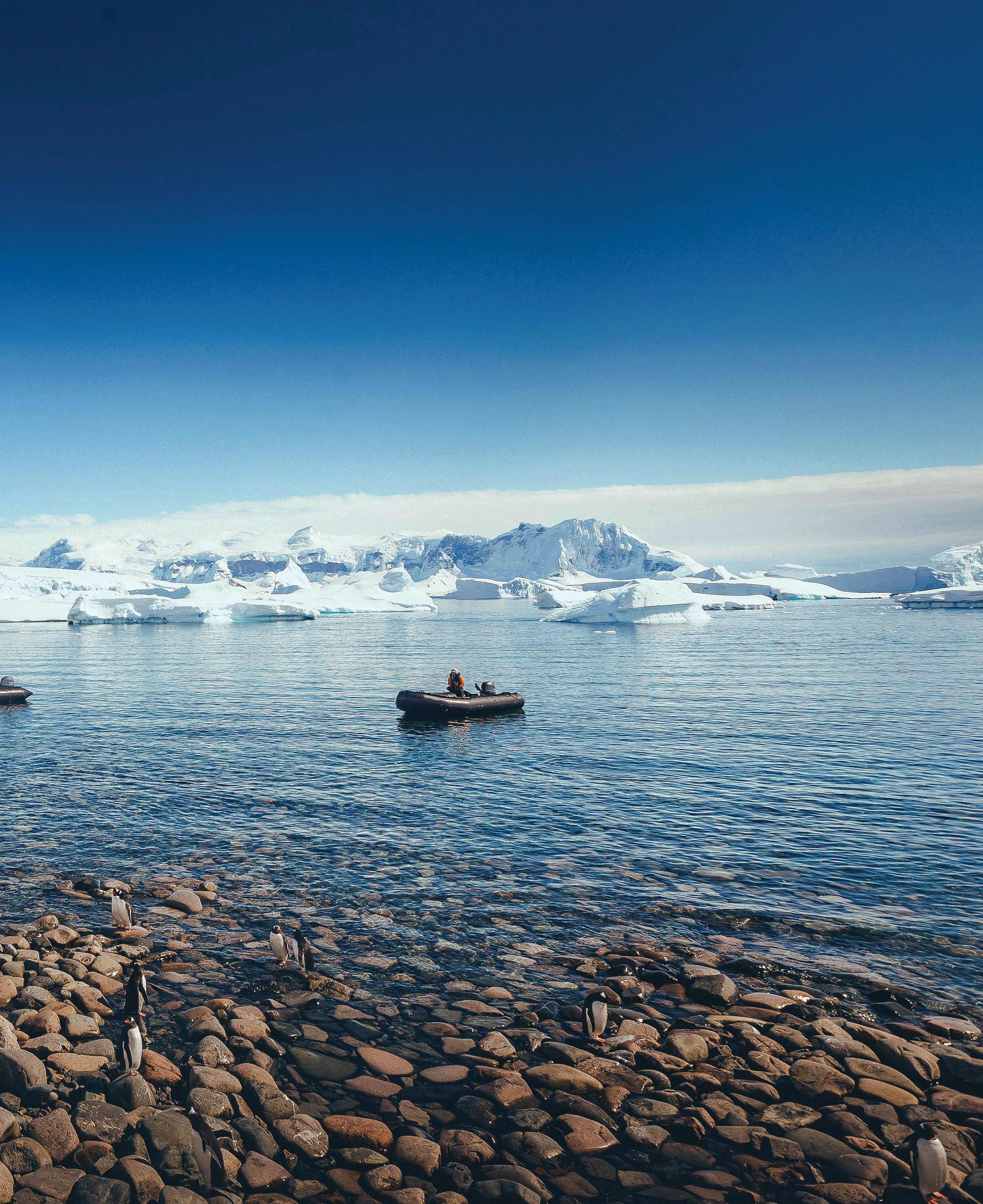






WHEN PLANNING A WEEKEND TRIP ENTIRELY DEDICATED TO shopping, where do you go? Melbourne, of course, and now visitors can have access to the country’s largest luxury retail precinct, all within steps of their hotel lobby with the opening of Hotel Chadstone, an MGallery by Sofitel property. Taxiing all over town laden with shopping bags is set to become a thing of the past with the five-star, $130 million hotel positioned right next door to Chadstone – The Fashion Capital. A world-renowned fashion and entertainment hub for local and international visitors, Chadstone –The Fashion Capital is Australia’s largest shopping centre, featuring more than 550 stores and designer boutiques, and over 30 luxury brands. Fresh from its opening on November 1, the hotel’s interior is a feminine flourish of sumptuous velvets, wooden joinery and glittering gold. Melbourne’s first five-star hotel outside the CBD, the property also boasts views across Port Phillip Bay and the city’s skyline along with a rooftop pool, bar, two gourmet restaurants and a day spa, creating a welcome sanctuary where you can drop, in absolute luxury, after you’ve shopped. hotelchadstone.com.au


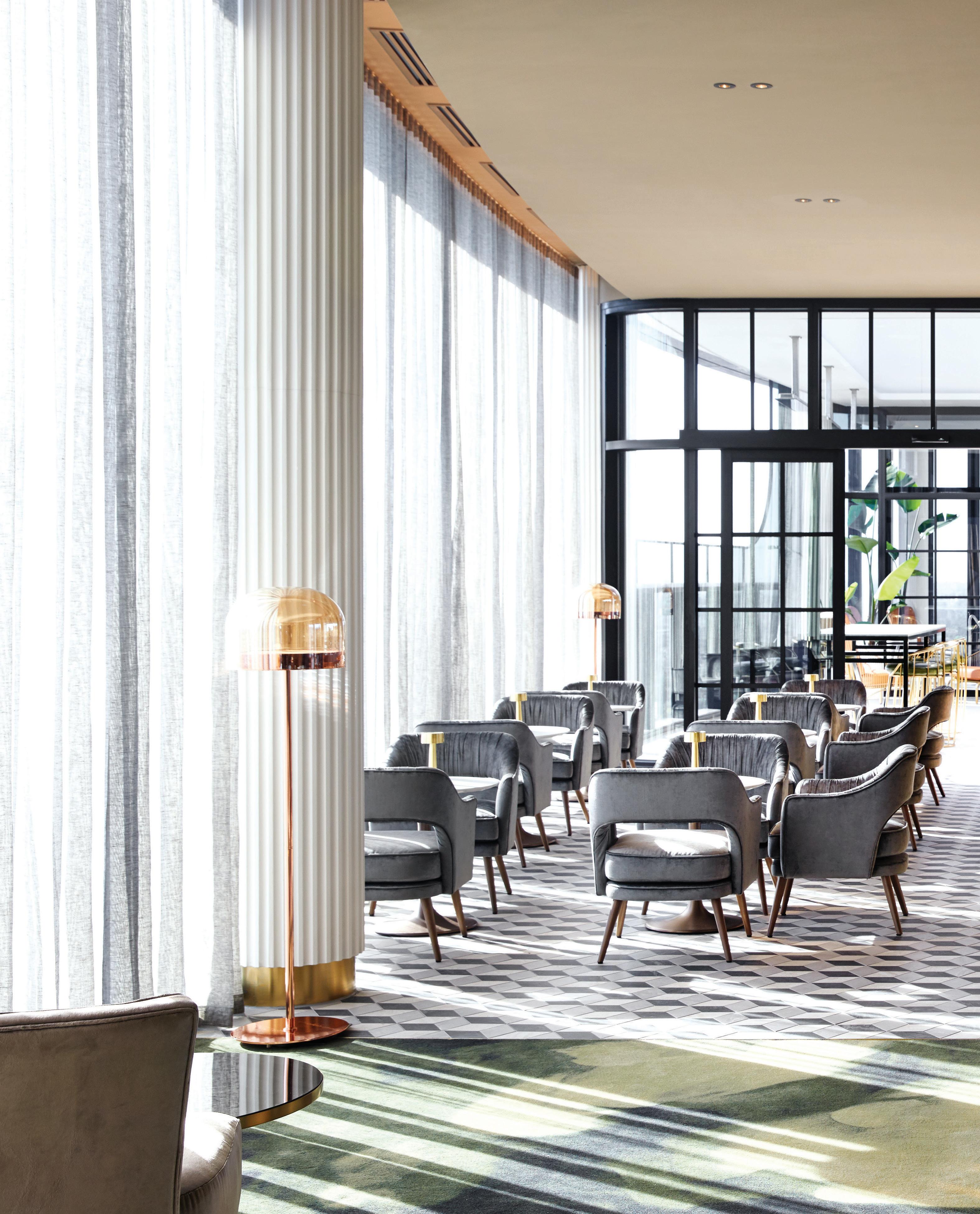
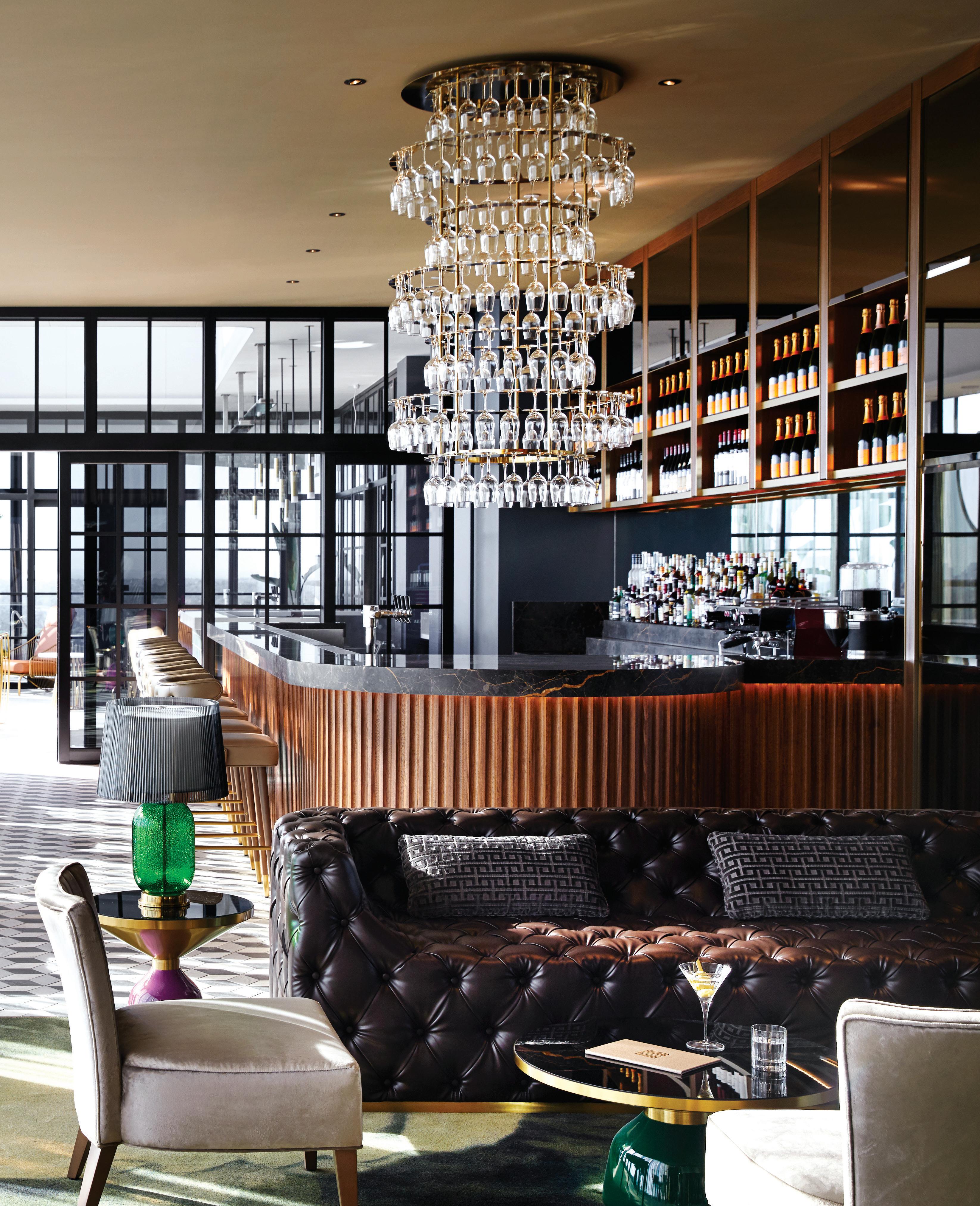
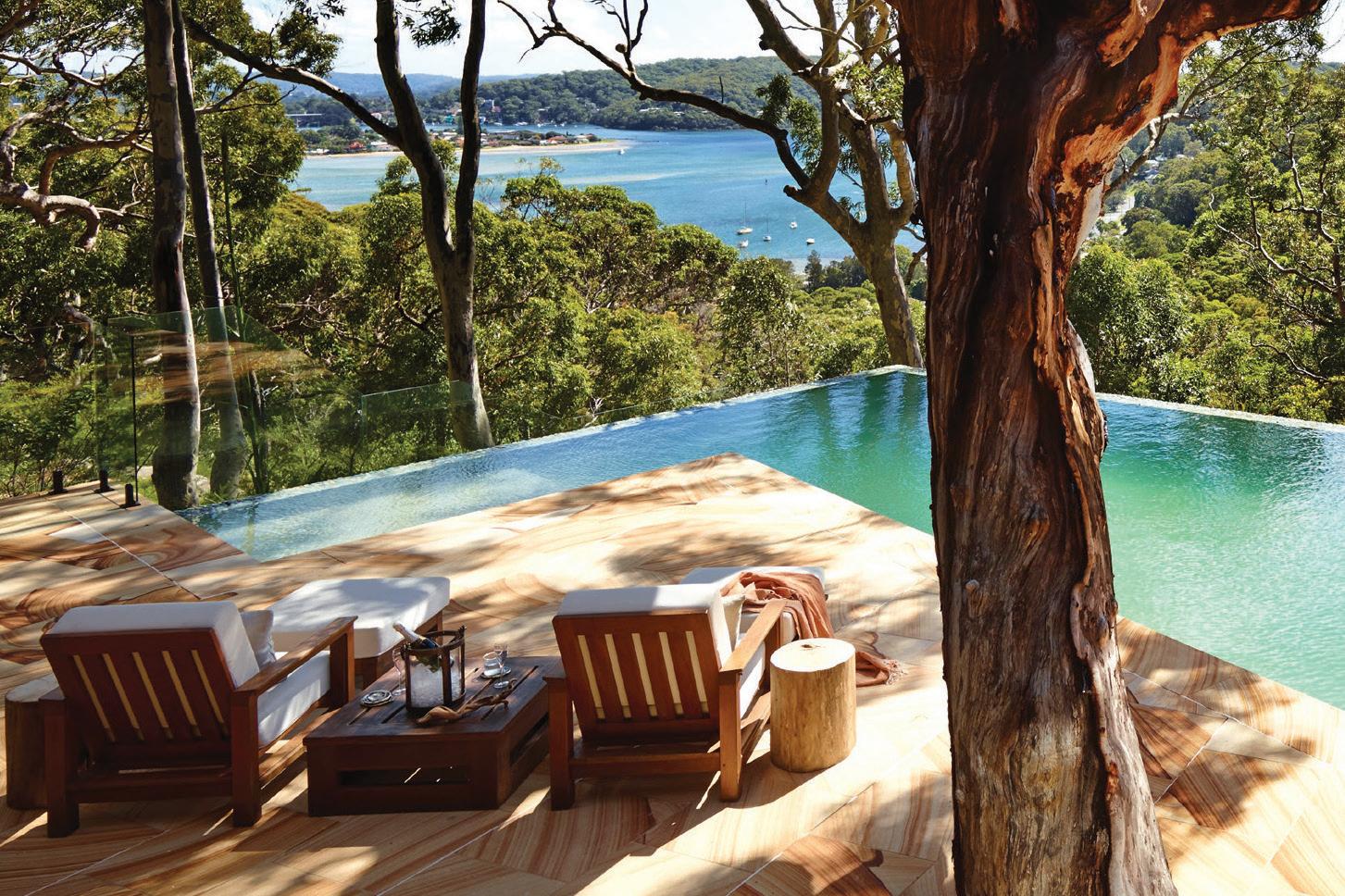


The Ritz-Carlton, Perth has opened at landmark development Elizabeth Quay on the shores of the Swan River. The property’s debut marks the 100th Ritz-Carlton hotel to open globally, and the long-awaited return of the luxury hotel brand to Australia, 18 years after celebrity haunt, The Ritz-Carlton Double Bay stopped operating in Sydney.
“We are very excited to bring the legendary service and exceptional luxury of The Ritz-Carlton brand back to Australia,” said Lisa Holladay, Global Brand Leader, The Ritz-Carlton. “Perth as a destination has so much to offer the luxury traveller, from its stunning landscapes to its superior produce and wine. Our ladies and gentlemen at The Ritz-Carlton, Perth are looking forward to providing guests with enriching experiences that are deeply ingrained in the local culture and destination.”
The 205-room, 19-suite hotel offers sweeping city and Swan River views, and design inspired by the natural beauty of Western Australia. The lobby displays 13-metre-high ceilings and a custom chandelier, a palette of natural earth tones and the use of luxurious natural materials.

With acclaimed Western Australian Executive Chef Jed Gerrard at the helm, the hotel’s signature restaurant and lounge, Hearth, reinterprets the classic Australian barbecue, using the finest produce from the region’s farmers, fishermen and artisans.
Still nodding to the Western Australian locale, The Ritz-Carlton Spa, Perth offers treatments inspired by Australia’s natural healing products in four specialised treatment rooms along with a modern fitness centre and yoga studio for post-flight stretches and meditation.
It’s all very flash, but the jewel in the crown has got to be the light-filled, 277-square-metre signature Ritz-Carlton Suite, with separate sleeping, living and entertainment areas and floor-to-ceiling windows offering panoramic views of the Swan River. The second Australian Ritz-Carlton is currently under construction in Melbourne’s Swanston Street. Watch this space.
The Ritz-Carlton, Perth isn’t the only exciting newcomer to the Australian hotel scene. It seems the entire nation is in the midst of a hotel renaissance, with the country experiencing the biggest hotel building boom since the 2000 Olympics. According to data from Tourism Australia, after a prolonged period of limited new supply, developers have begun to recognise Australia’s solid tourism demand and a range of exciting hotel products are being built as a result.
As of July, there were a total of 53,227 rooms in the pipeline until 2028, from a total of 305 hotel projects. It’s all about the ‘lifestyle hotel’, as boutique brands grow at a rapid rate, and cater to the changing demands
of travellers, which include hotels that showcase localism, wellness, individualism, art and sustainability, according to a 2018 report by Tourism Accommodation Australia.
“While the concentration of new hotel openings has been in cities such as Perth, Brisbane and Adelaide over the past four years, the new era of hotel development is sweeping across Australia, with 200 new or upgraded hotels scheduled to be launched by 2025,” the report says. “Australia is at the forefront of the global hotel renaissance, with ‘Hotels of the Future’ already opened, changing the face of the hospitality industry and introducing world-class design.”
So what exciting new openings have we seen recently?
Taking immersive travel to the next level, it’s now possible to spend the night underwater at the Great Barrier Reef. Cruise Whitsundays’ ‘Reefsuites’ at Hardy Reef feature floor-to-ceiling windows affording guests panoramic views of marine life, while the renewed Reefsleep experience allows up to 24 guests at a time to sleep under the stars on the pontoon’s top deck in specially designed ‘reefbeds’. The full Reefsuite experience includes a return cruise to the reef, all meals and beverages, a selection of marine activities and overnight accommodation.
If you love the idea of spending a night at Taronga Zoo but the thought of Roar and Snore‘s safaristyle accommodation makes you break out in a sweat, Wildlife Retreat at Taronga could be right up your alley. The impressive new retreat not only gives guests the chance to wake up to the rustling of a bandicoot or the call of a lyrebird, and to revel in the natural beauty of the surrounding bushland, but also offers such delights from the comfort of a five-star room. Meanwhile, the restaurant, Me-Gal – exclusive to Retreat guests – boasts some of the most spectacular views in all of Sydney.

Following the opening of Riley, a Crystalbrook Collection Hotel in Cairns in November 2018, comes the debut of lifestyle hotel Bailey, the arty and creative sibling. Another Crystalbrook hotel, Flynn, will open in Cairns in early 2020. Located in the heart of Cairns’ flourishing cultural precinct, Bailey celebrates art in all its forms, with dedicated spaces for art located within the hotel’s public areas. Each of the 12 guest floors is also designed to feature separate artists, with this art changing regularly.
CANBERRA | MIDNIGHT HOTEL
Part of Marriott International’s Autograph Collection, Midnight Hotel opened in September in Braddon, one of Canberra’s emerging and creative inner-city suburbs. The sculptural, contemporary and architecturally-focused hotel showcases sharp, textural materials such as polished concrete, glass, metal and brass, while each of the 199 premium guest rooms features a unique, custom artwork designed and created by acclaimed artist, Thomas Bucich.
PERTH | THE ADNATE
Australia’s ninth Art Series hotel, The Adnate,
opened in Perth’s city centre in October, adjacent to the capital’s luxury shopping locale of King Street. The first Art Series hotel to open in Western Australia, the 250-room, colourful hotel follows the opening of The Fantauzzo in Brisbane in June. Inspired by the powerful, multicultural portraiture of renowned Australian big-wall street artist, Matt Adnate, The Adnate features one of the world’s largest ‘mega murals’ – a monumental artwork spanning 25 storeys. Signature art experiences at The Adnate include the brand’s famous art tours, in-room art channels and art libraries to get up close and personal with Adnate’s work.
HOBART | MOSS HOTEL
Moss, a 41-room boutique hotel, opened its doors in Hobart in June, providing a hidden retreat tucked above the historic docks of Salamanca Place. Positioned within the original warehouses of the area that were once home to Hobart’s traders, whalers, publicans, gentlemen and convicts, the boutique hotel is heavily inspired by local scenery, incorporating features that are unique to the state. Think: Tasmanian Blackwood, colours, textures, and patterns found in the natural Tasmanian landscape, and Tasmanian Sandstone side tables – collectively creating a true sense of place.
IG: @indulge.maldives

W: www.indulgemaldives.com
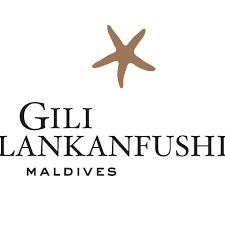



E: holiday@indulgemaldives.com


I N D U L G E M A L D I V E S H O L I D A Y S
- T H E M A L D I V E S D E S T I N A T I O N E X P E R T S -

D I S C O V E R T H E B E S T O F T H E M A L D I V E S W I T H U S
1 0 0 % A u s t r a l i a n o w n e d . O u r T r a v e l S p e c i a l i s t s l i v e i n M a l d i v e s & h a v e v i s i t e d o v e r 1 2 0 M a l d i v e s R e s o r t s . P e r s o n a l i s e d S e r v i c e f r o m p l a n n i n g t o d e p a r t u r e . W e b r i n g t o l i f e y o u r e v e r y v a c a t i o n w i s h & c r e a t e y o u r d e f i n i t i o n o f t h e u l t i m a t e d r e a m M a l d i v e s v a c a t i o n .
E : h o l i d a y @ i n d u l g e m a l d i v e s . c o m
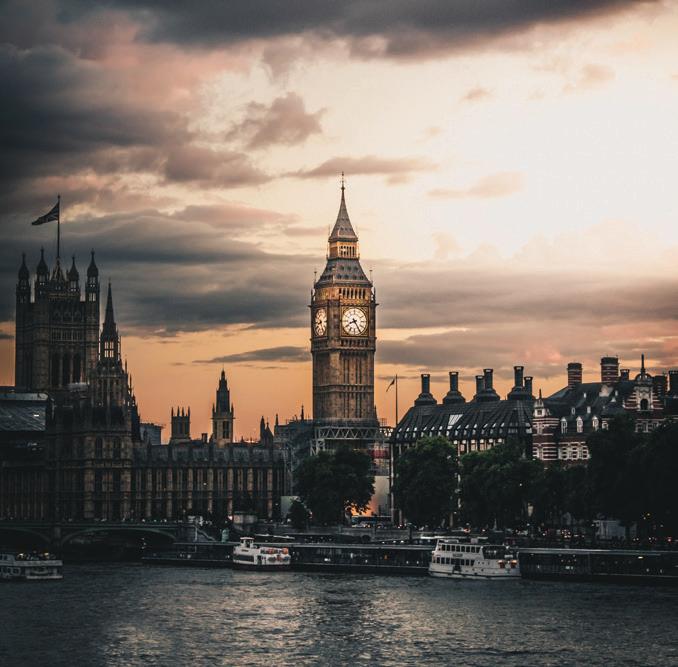
Flying direct to the Big Apple could be closer than you think, with the world’s first New York to Sydney non-stop commercial flight having taken place in October. The Qantas flight, which took 19 hours and 16 minutes, is one of three ultra long-haul research flights the Australian airline announced in August would take place this year. The flights are part of Project Sunrise – a goal to operate regular, non-stop commercial flights from the east coast of Australia to London and New York. The direct flight will shave nearly three hours off the existing New York to Sydney via Los Angeles flight. Another New York to Sydney research flight will take place in December, and a London to Sydney flight took place in November – only the second time a commercial airline has completed the route. A decision on Project Sunrise is expected by the end of the year, so you could be saying “g’day” to the Big Apple and Old Blighty before you know it.
$6987
How much the average tourist spends while in Australia –the highest of any country.
Source: Globehunters / WTO
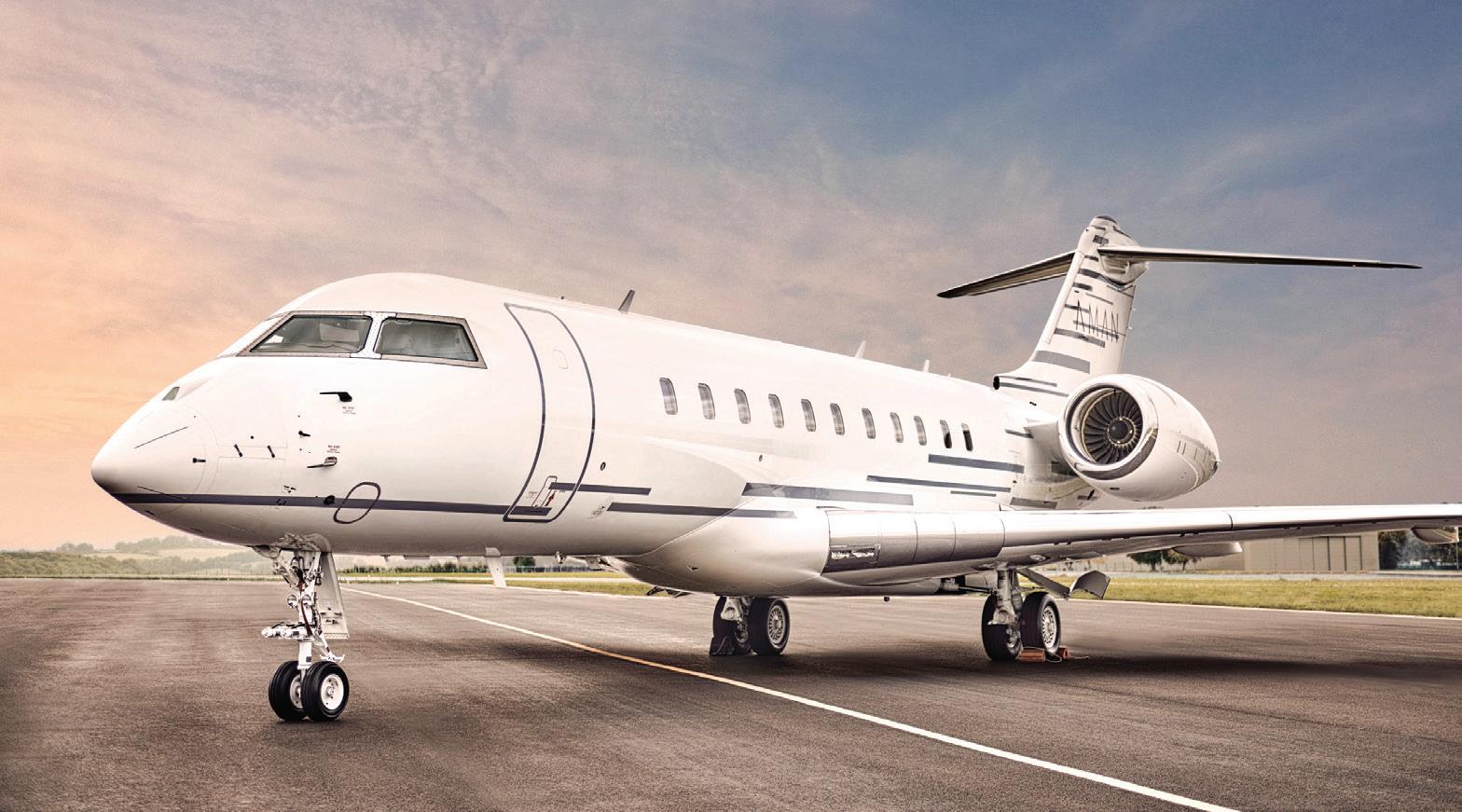
Aman Resorts is the latest hotel group to take to the skies, with the recent launch of the Aman Private Jet. An airborne extension of the luxury hotel brand’s haute-minimalist resort philosophy, the new, 12-seater Bombardier Global 5000 is available for charter between Aman properties as well as on bespoke itineraries and between non-Aman destinations. Guests can choose their in-flight meals ahead of their journey and enjoy high-speed WiFi connectivity throughout the flight, and an Aman Jet Concierge is on-hand to plan every detail of guests’ travels.
For those who want to leave it to the professionals, four new journeys incorporating multiple Aman properties and exploring some of the world’s most beguiling destinations have been curated for passengers. Looking to explore Indonesia? Bali & Beyond jets guests to Aman’s trio of Balinese retreats – Amandari, Amankila and the Aman Villas at Nusa Dua – as well as Amanjiwo,
A new study by Imovirtual has deemed Estonia as the best country in the world to buy a property abroad, thanks to its low housing costs, high earning potential, excellent quality of life and safety scores. The study looked at the expenses associated with keeping a property in another country and compared this with the money that can be made by letting out the house while it is not occupied by the owner.

overlooking Borobudur in Central Java’s spiritual heartland, and unique tented camp Amanwana, on the island of Moyo in the Flores Sea.
Further afield, The Secrets of China journey combines stays at Amanfayun, Amandayan and Amanyangyun, taking guests from the rural peace of Hangzhou’s West Lake and the 1000-year-old history of Lijiang to the 21st-century dynamism of Shanghai.
Other journeys include trips to Laos, Cambodia and Vietnam, as well as a Bhutanese spiritual escape with a Phuket beach break.
As well as all flights, private transfers and accommodation at Aman properties, each of the journeys includes private tours of key cultural sites plus a host of exclusive privileges at each resort, such as personalised spa treatments, traditional blessing ceremonies and unique culinary and cultural experiences.
aman.com/private-aviation




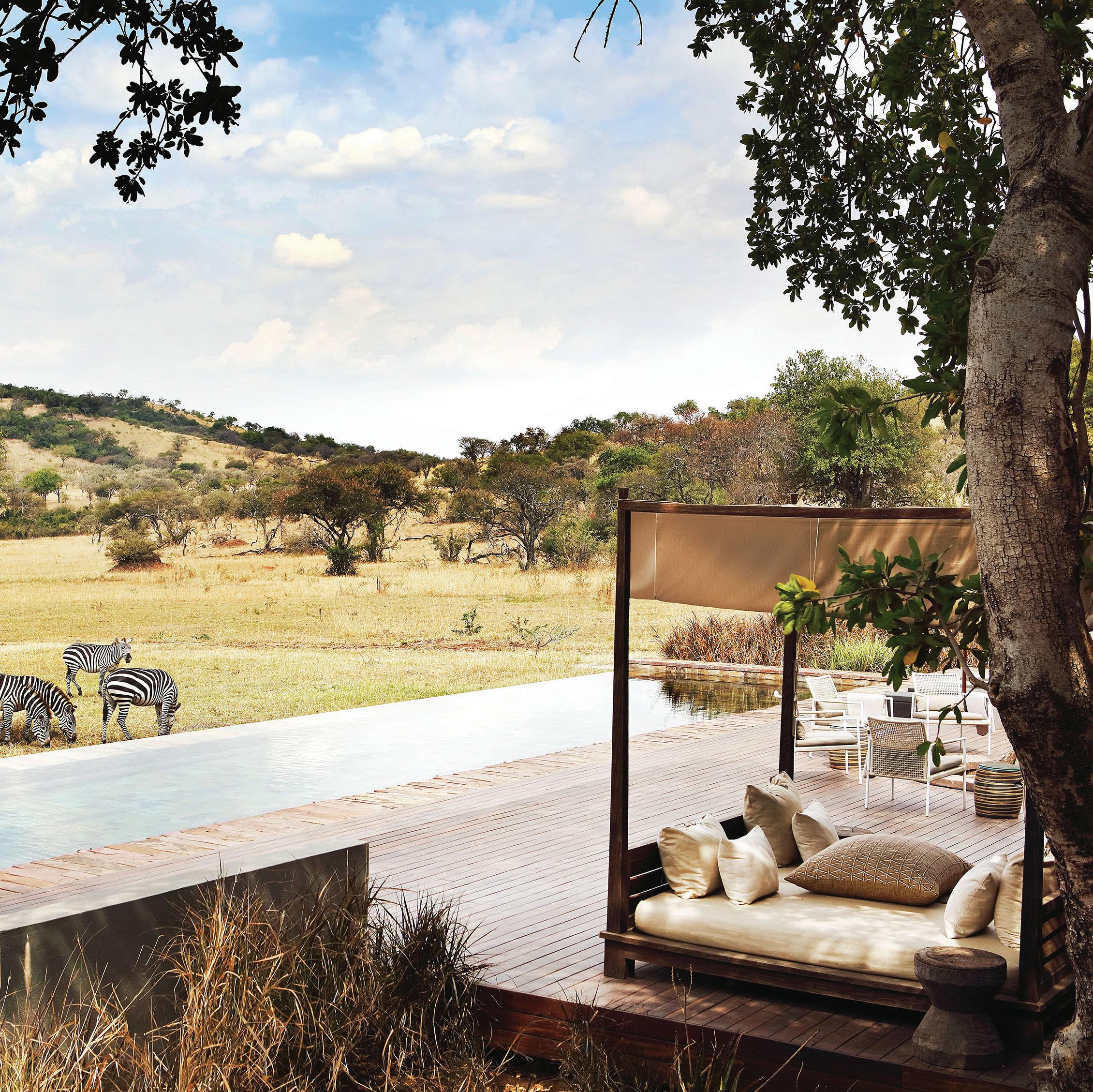










Fifth Avenue in New York City might be known for its shopping, but for those less inclined to break the bank for the sake of a new outfit, there is always a more harmless temptation to cave to: tea. The Peninsula New York’s daily high tea is served in the elegant Gotham Lounge, where you’ll feel more like you’ve settled in a New York socialite’s sophisticated townhouse than a hotel dining room. Its art deco, geometric design of rich sapphire, chocolate brown and chrome creates an ambience of refinement, while The Floral Afternoon Tea menu of savoury sandwiches, sweet treats and, of course, fresh scones with jam and cream will ruin any plans for a New York slice that night. Get your cuppa between 2:30pm and 5pm, seven days a week. peninsula.com
Has the most Airbnbs of any capital city in the world, at 59,378. Sydney and Melbourne come in ninth and 10th place, at 22,604 and 19,955 respectively.
Source: Inkifi
Biosphere Expeditions, the Marine Conservation Society, Reef Check Maldives and local Maldives environmental group, Save the Beach Maldives, have found, against expectations, that corals are showing some resilience, adaptability and even recovery from climate change effects. The collective group recently returned from a 250-kilometre expedition around the central Maldives, the ninth annual survey of its kind since 2010. Expedition scientist and co-author of the recent paper, Dr Jean-Luc Solandt, said he and his team of citizen scientists found many baby (<1 year) and young (1-3 years) corals, as well as different species of corals growing vigorously at sites that they expected to be dead or dying:
“It was surprising and encouraging to see a greater diversity of corals pushing through from the dead layer below. It seems nature is fighting back with a coral diversity explosion. We have seen resilience, adaptability and recovery this year,” Solandt explained.
One of the outstanding sites regularly visited by the annual Biosphere Expeditions surveys, Rasdhoo Madivaru, was recently declared a Marine Protected Area, being both resilient to
the worst bleaching effects, and harbouring large megafauna such as sharks, manta rays, turtles and Napoleon wrasse. “Our expeditions have highlighted this site for the past nine years, as being of extraordinary biodiversity value,” concluded Solandt.
The encouraging findings come after two years of little coral recovery in the region, following the 2016 coral bleaching event that killed off large swathes of reefs, however Solandt added it’s not all plain sailing for the paradisiacal destination’s marine ecosystem. “Many reefs are still very badly affected and some have died altogether. And another temperature spike would kill many of the new corals we’ve seen… the background temperature is still hot at the bleaching threshold of 30 degrees celsius in very shallow water.”
Further surveys will be carried out by local organisations Save the Beach Maldives and Reef Check Maldives, who will also train more local divers to survey their own reefs in the future and set up more community-based reef conservation efforts. The Biosphere Expeditions annual survey will return to the Maldives in August next year.
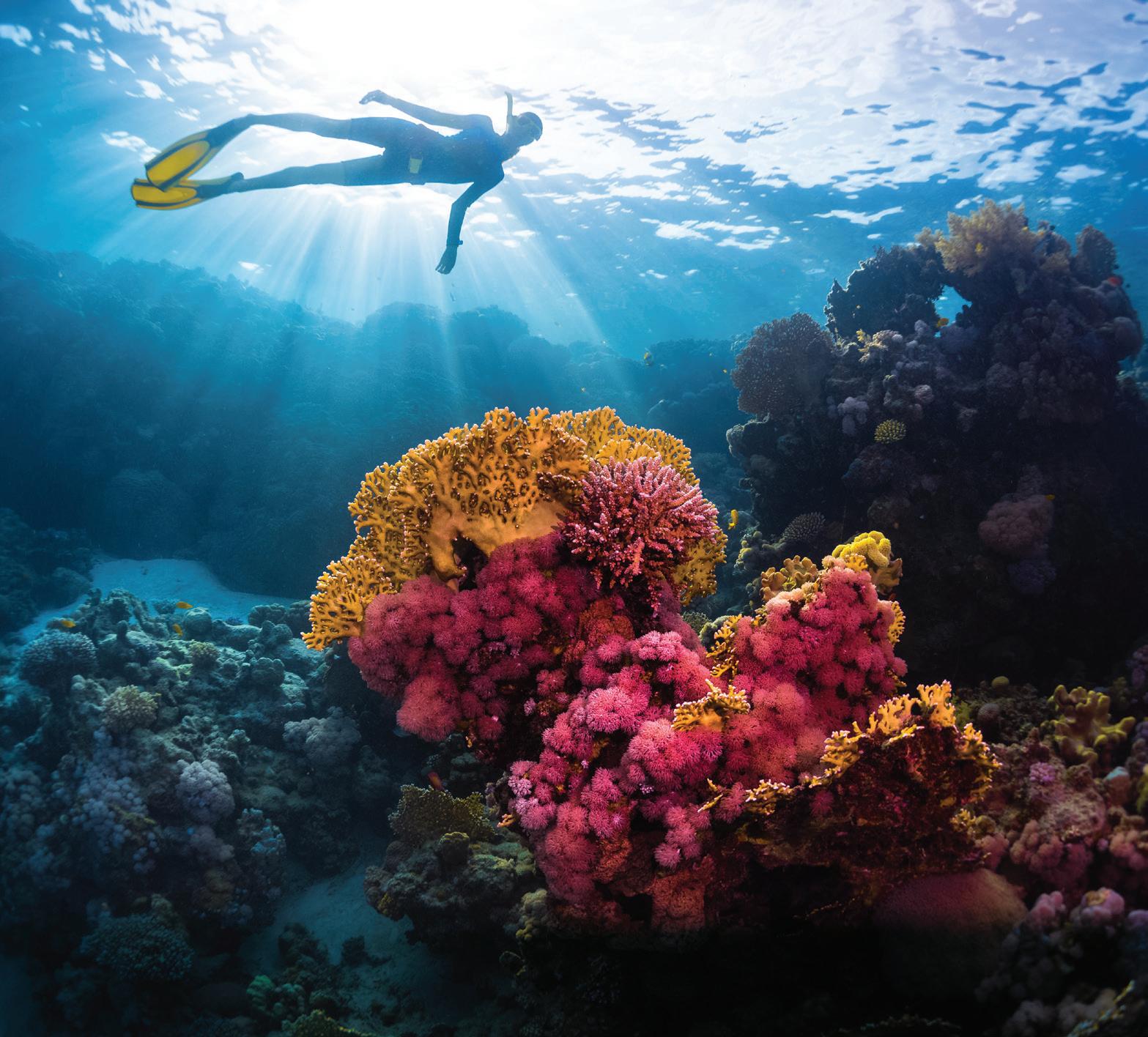
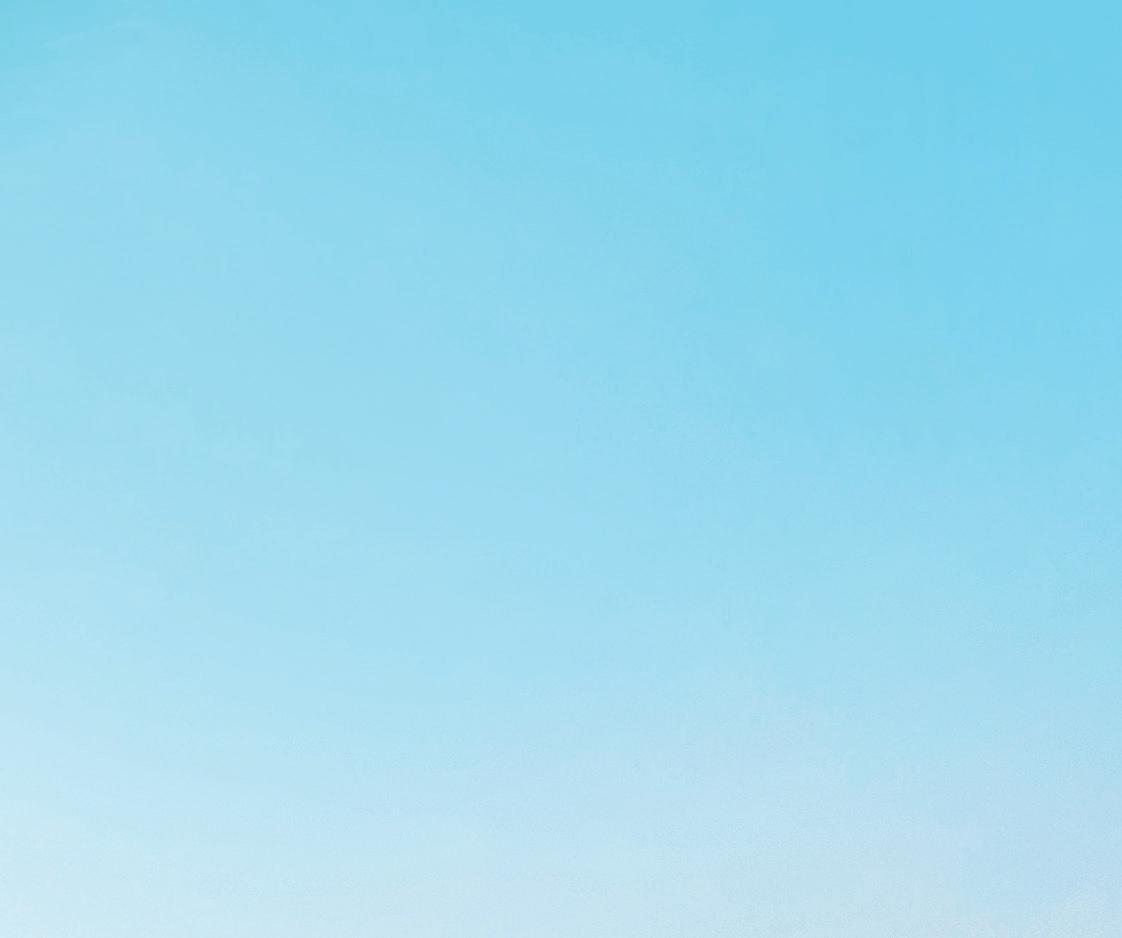
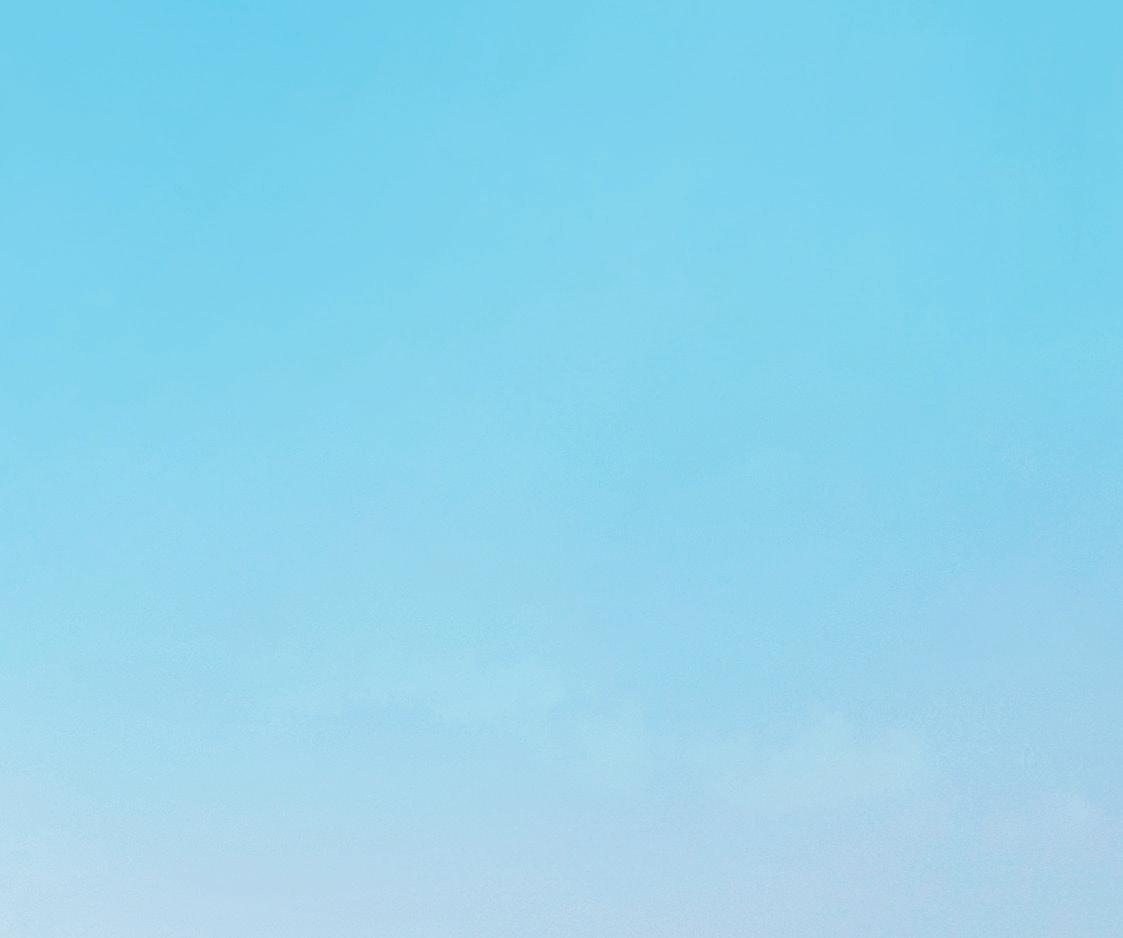

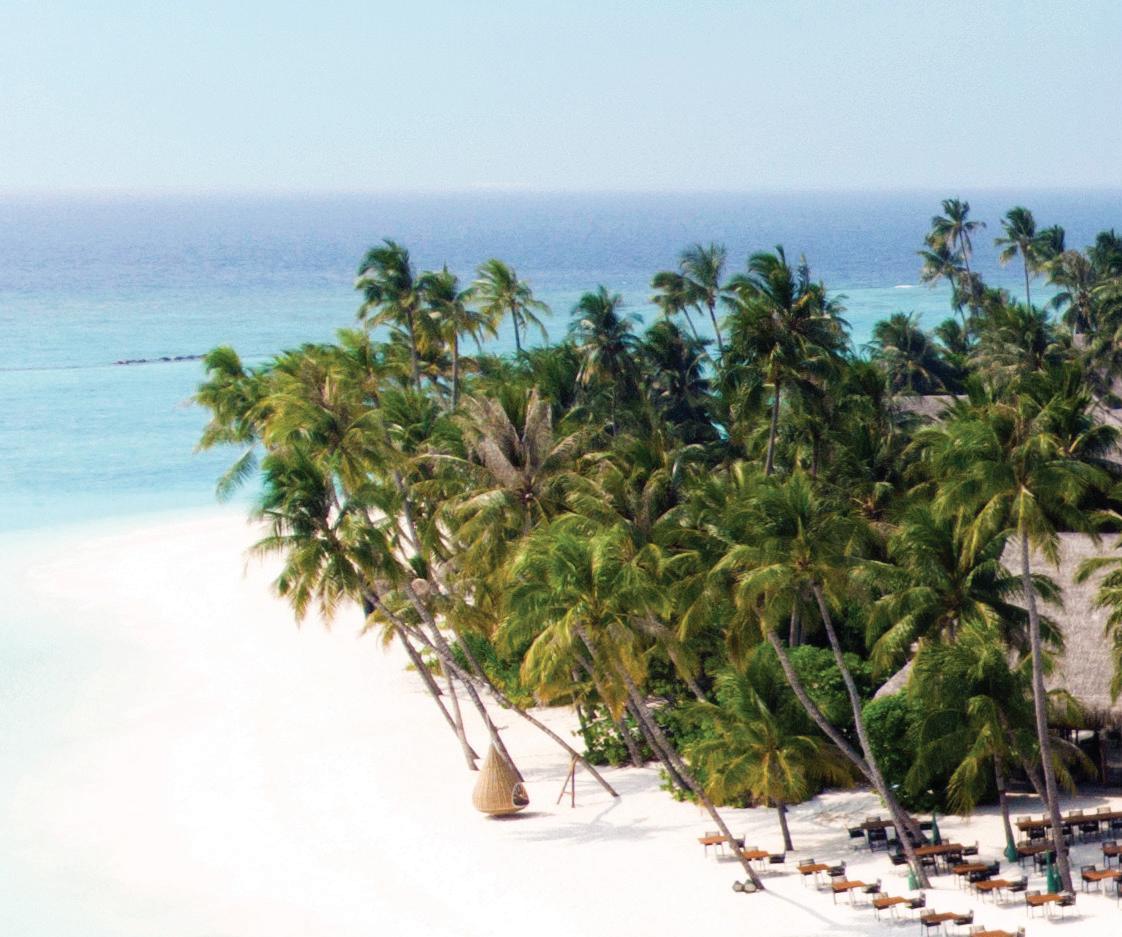
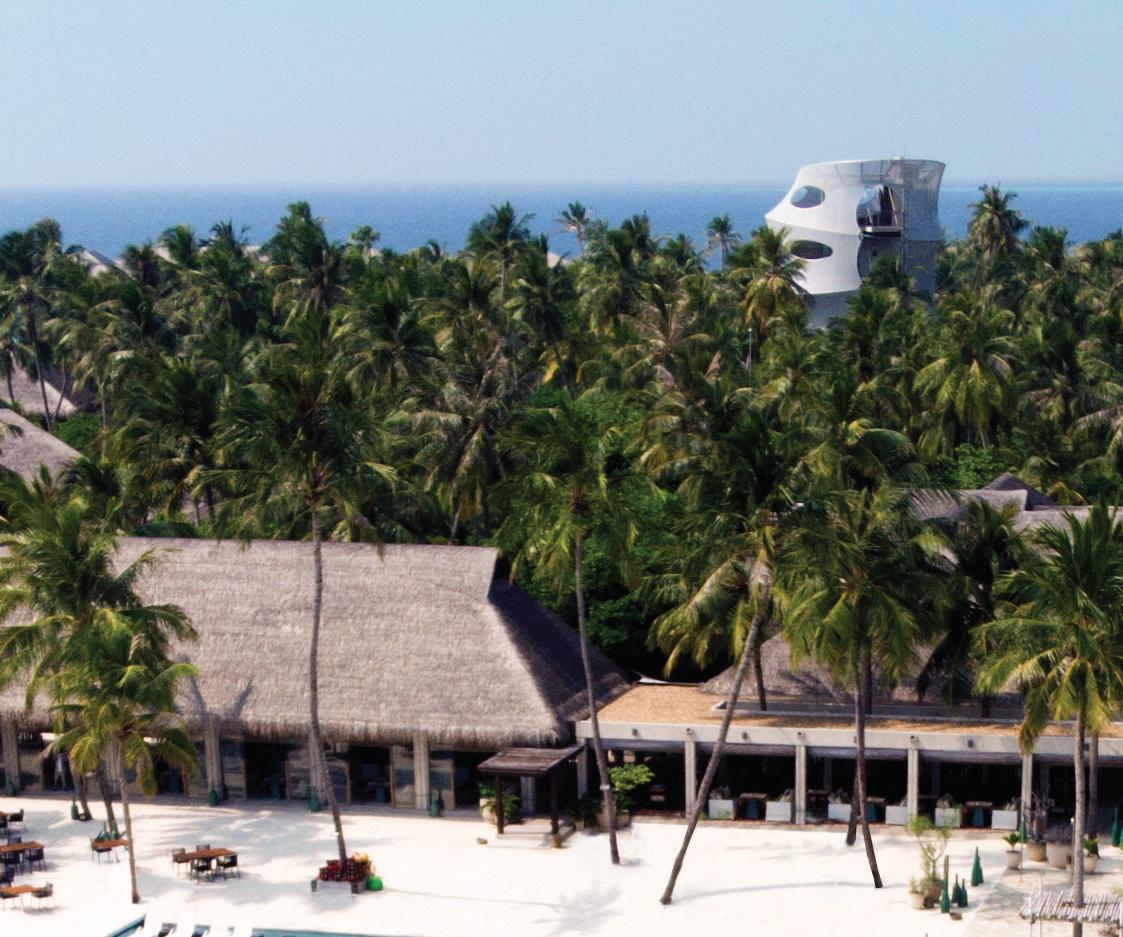
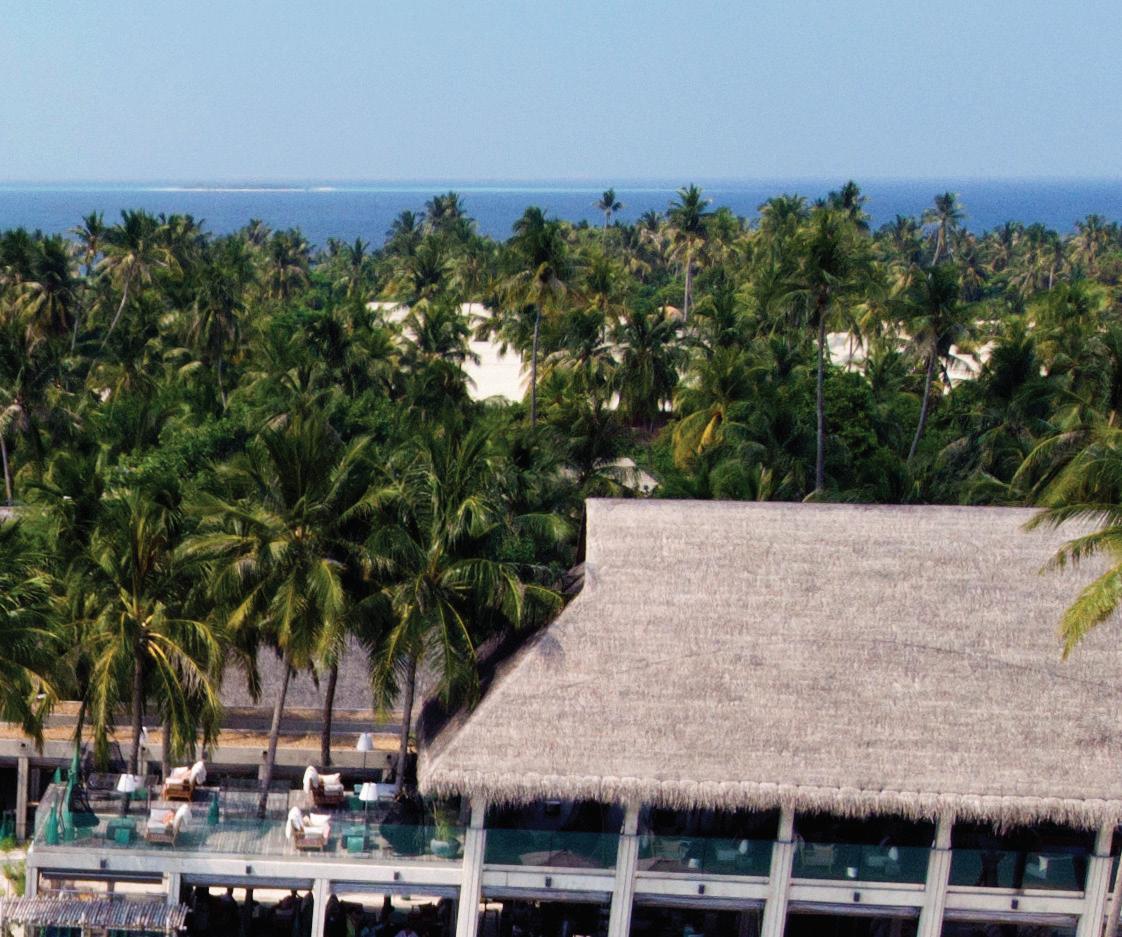
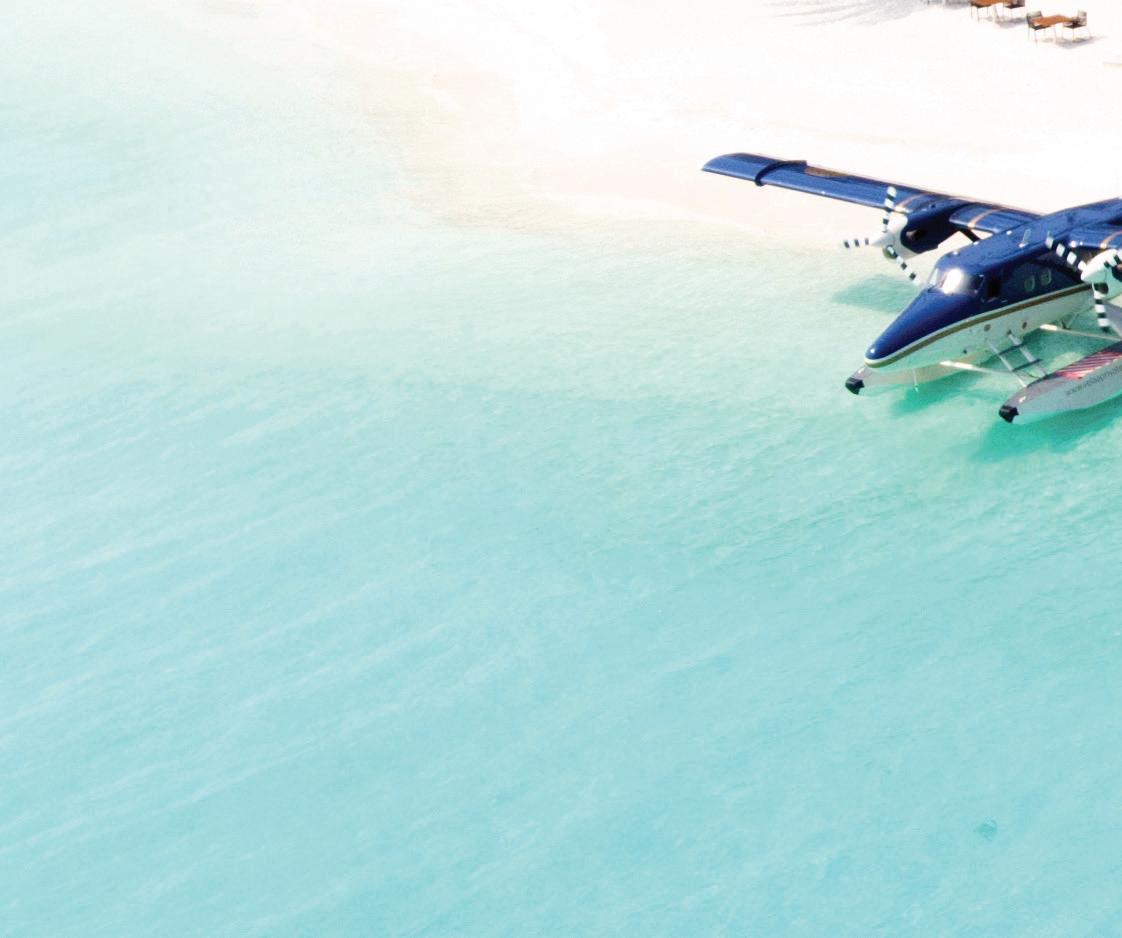
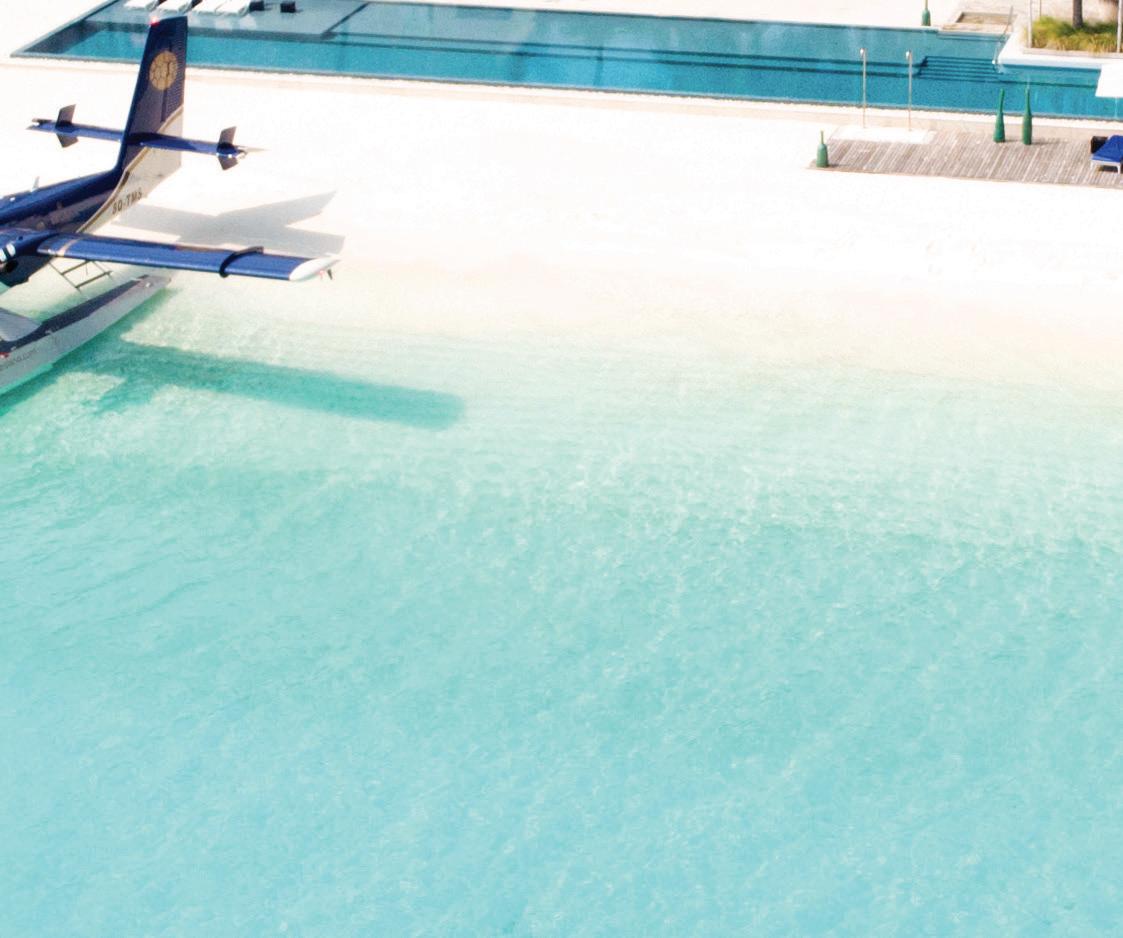
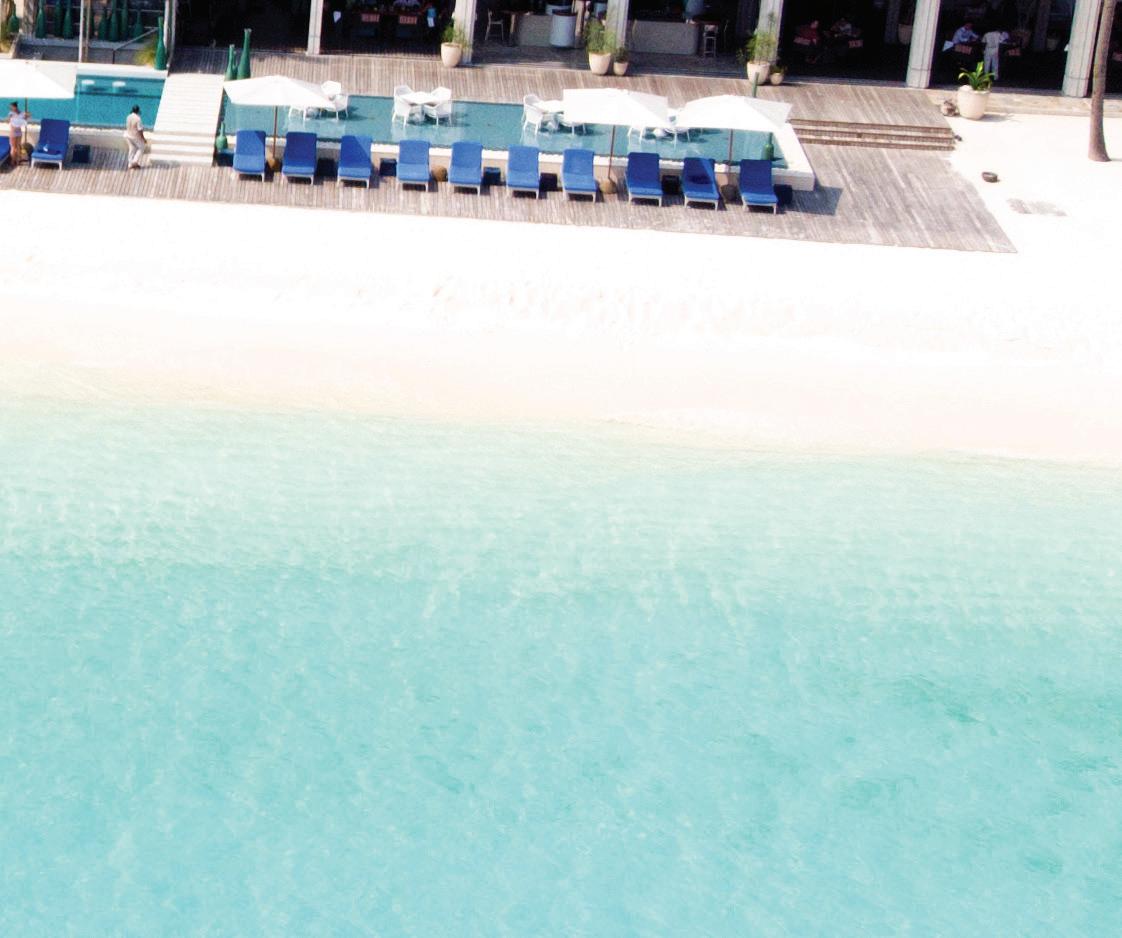


Virgin Voyages has created an on-demand delivery service we never knew we needed. When Richard Branson’s adults-only, youth-focused ship Lady Scarlet makes its inaugural voyage from Miami to the Caribbean in April, guests – known as

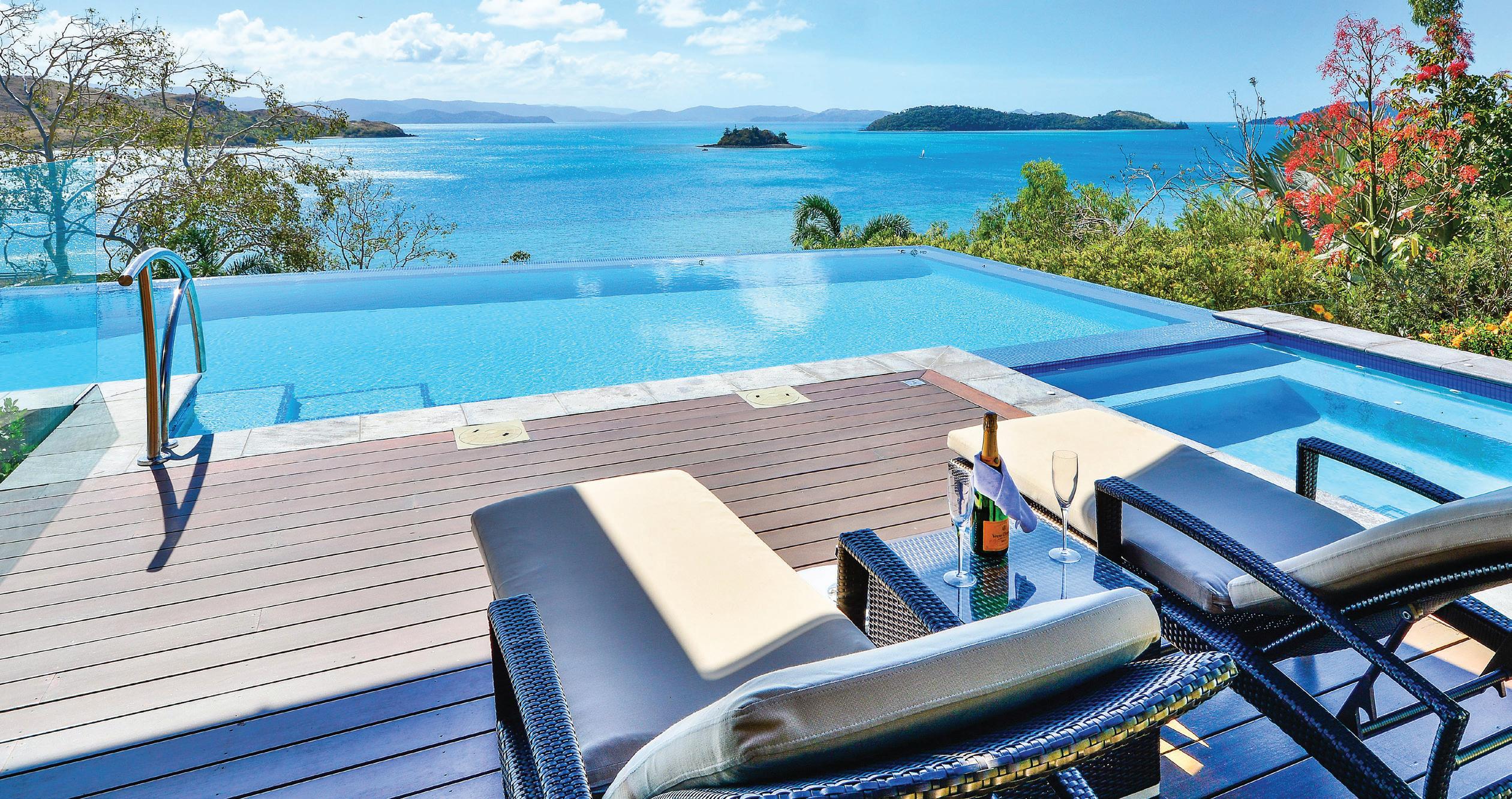
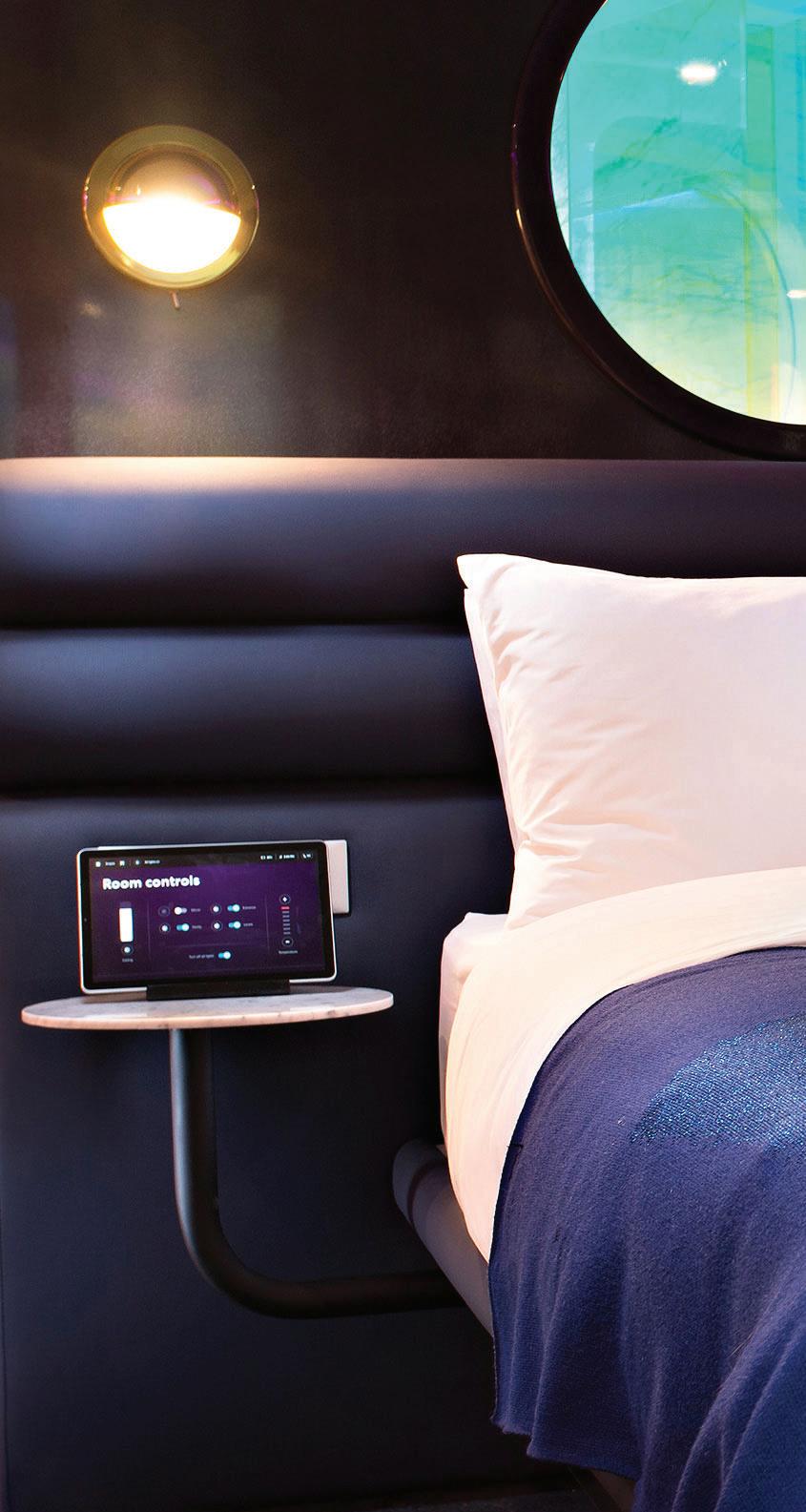
‘sailors’ in Virgin speak – need simply shake the Virgin Voyages Sailor App, for a clandestine Virgin Voyages Champagne button to appear. Just one press and, hey presto, a bottle of Möet & Chandon Impérial in a gleaming Virgin-red champagne bucket will be delivered direct to their location. Gimmicky? Absolutely. Does that make us want to try it any less? Not in the slightest. As President and CEO of Virgin Voyages, Tom McAlpin, says: “It is never too early for champagne… we want our sailors to enjoy a glamorous holiday and what better way to feel like a rockstar than a sip of bubbly whenever and wherever you want it.” We’ll cheers to that.

1 in 6 new parents experience perinatal depression and anxiety.

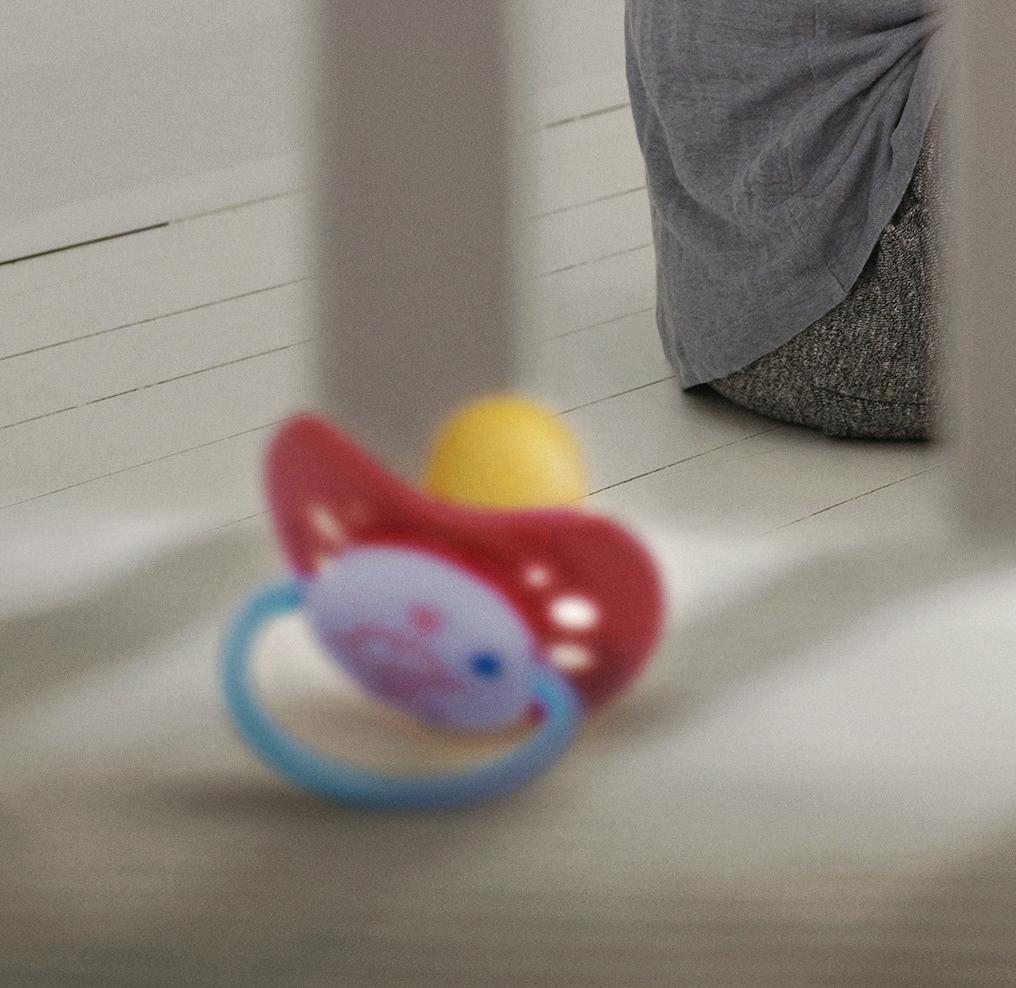

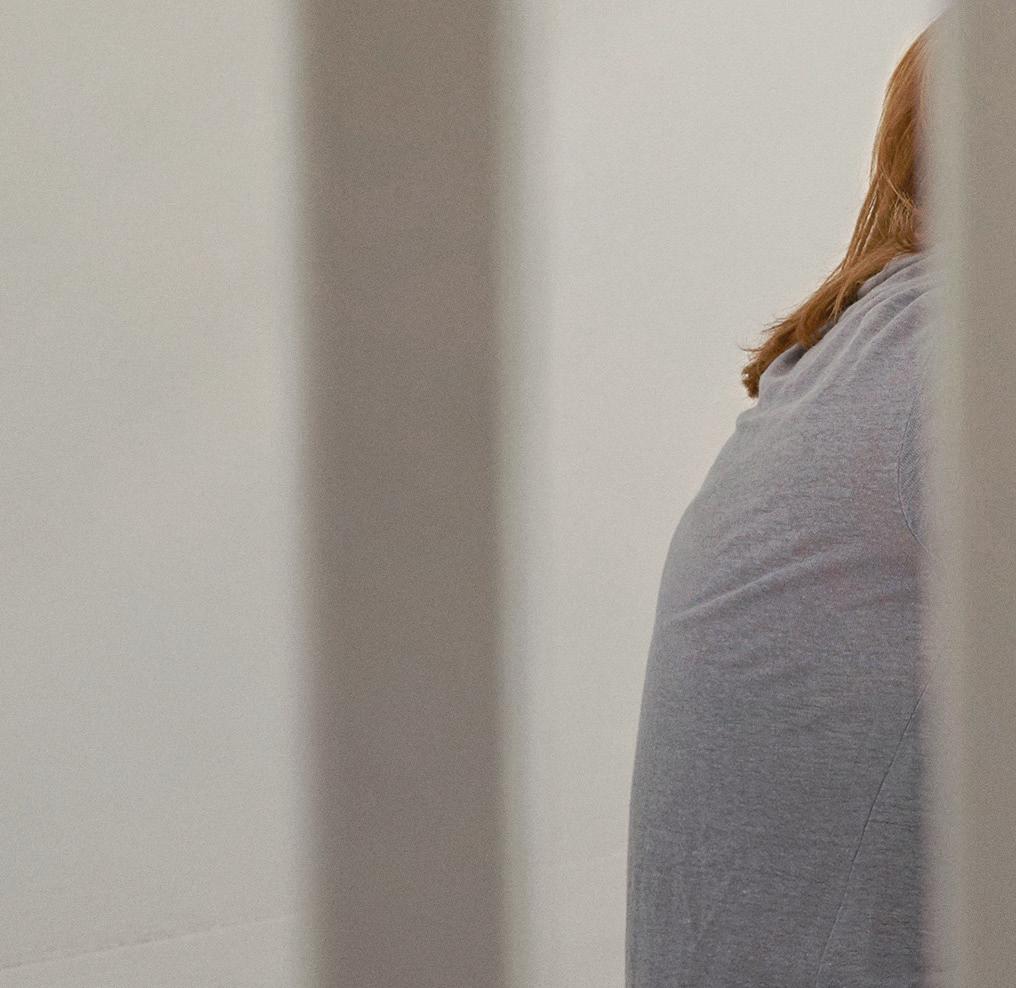
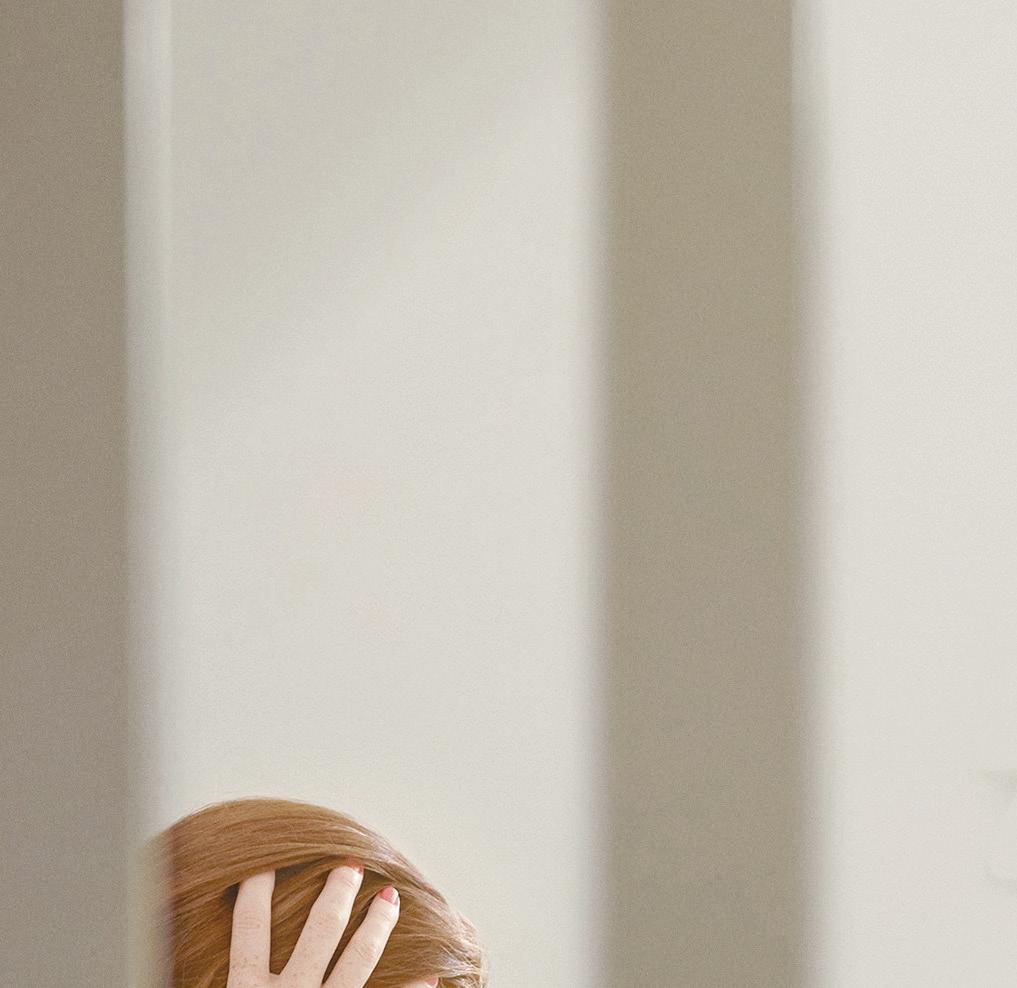
Gidget Foundation Australia provides support for parents and families suffering emotional distress during pregnancy and early parenting. Speak to your GP today about getting a referral to see us.








 HUI
HUI
AS AVID TRAVELLERS, IT’S EASY TO TAKE THE AVIATION INDUSTRY for granted. Although at times air travel may appear anything but seamless, we’re incredibly lucky to have such access to all corners of the globe, and ever-evolving technology and innovation – although not without failure – has meant continual improvement to our journeys. Here, we celebrate some of the industry’s major milestones.
First flight
It was the Wright brothers, Wilbur and Orville, who completed the first sustained, controlled flight of a powered, heavier-than-air aircraft. The history-making feat took place on December 17, 1903 and covered 37 metres in 12 seconds.
Human-manned flights, however, were recorded well before the Wright brothers’ achievement. The first untethered balloon flight took place in 1783.
First jumbo jet
Following its maiden flight in 1969, the Boeing 747 changed the aviation landscape, making air travel more affordable for a mass audience. The ‘jumbo jet’ was the first wide-body aeroplane produced and, with four engines and a capacity of more than 400 passengers (or more than 600 for single-class set-up), was able to fly more people further than ever before.
The now-defunct Pan Am was the first airline to fly the jet, a milestone achieved in 1970. The ‘Queen of the Skies’ has since transported almost six billion people, although many airlines have now retired their 747 fleet.
It wasn’t a commercial success, but the Concorde remains an icon of the skies. The 23-year-career of the supersonic passenger aircraft was launched when two Concordes – one from Air France and one from British Airways – took off simultaneously in 1976. The famous aircraft could travel at twice the speed of sound, slashing the London to New York flight time from around eight hours to three hours and 15 minutes. The Concorde took its final bow in 2003.
The world’s largest jet, the A380, first took flight in October 2017 with Singapore Airlines, but its lifespan is set to be short-lived. The aircraft, which has the capacity to carry 853 passengers in a single class or
644 in a two-tiered class, will be retired by Airbus in 2021. Given the growing preference for more sustainable, fuel-efficient travel, the A380 might just hold onto its title for a long time to come.
With all the talk about Qantas’s recent non-stop flight from New York to Sydney – the research flight clocked in at 19 hours – it might be interesting to learn the Flying Kangaroo already holds the record for longest commercial flight. From 1943 to 1945, the Aussie airline operated the ‘Double Sunrise’, a weekly 5652-kilometres flight between Perth and Sri Lanka (then Ceylon), using a Consolidated PBY Catalina. The average flight time was 28 hours, but one particular Double Sunrise took 32 hours and nine minutes, a trip that remains the title holder for longest time airborne for a commercial flight.
Singapore Airlines’ Singapore to New York route – a 15,344 km trip taking 18 hours and 45 minutes – is the longest non-stop flight currently in operation.
A hotly contested category with a handful of airlines putting forward a strong case, including Qantas, which claims to have launched the initiative in 1979. However, Pan Am is more widely credited with the achievement, having launched business class in 1978, while British Airways and Air France launched in the same year.

In 1979, Texas International Airlines created the first mileage-based frequent flyer program. A glut of airlines followed in 1981, with many programs, such as American Airlines’ AAdvantage program and United Airlines’ Mileage Plus, still recognisable today.
For more information on Steve Hui, visit iflyflat.com.au
Choose from the largest, most diverse fleet of polar–class vessels in the industry, now with two brand new vessels purpose–built for Arctic and Antarctic exploration. Contact Quark Expeditions or your Travel Professional today for more information.
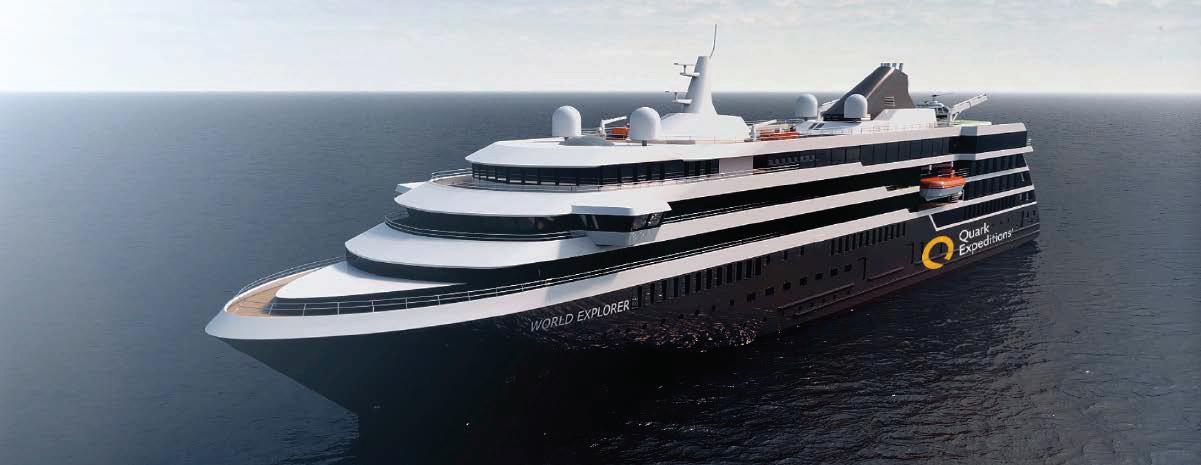
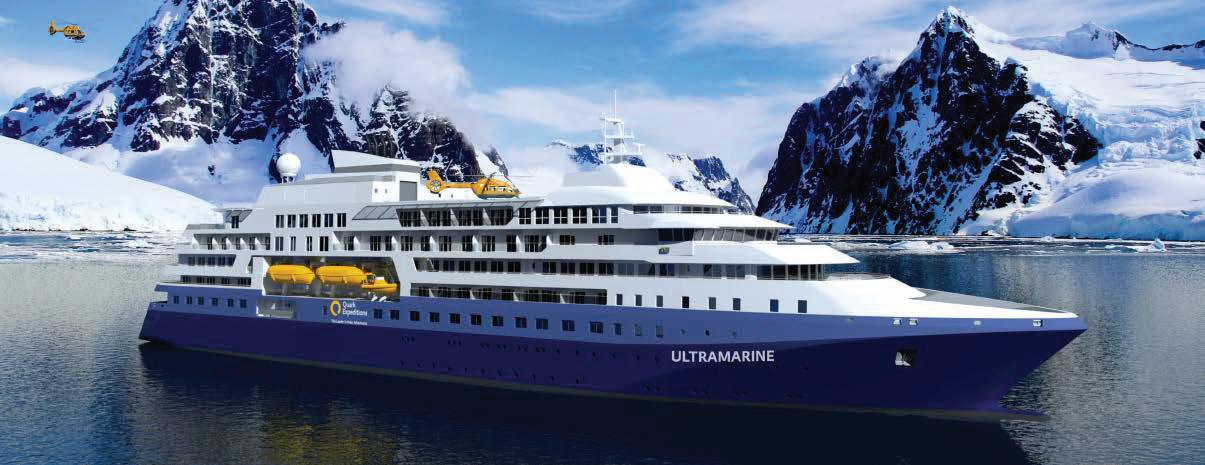
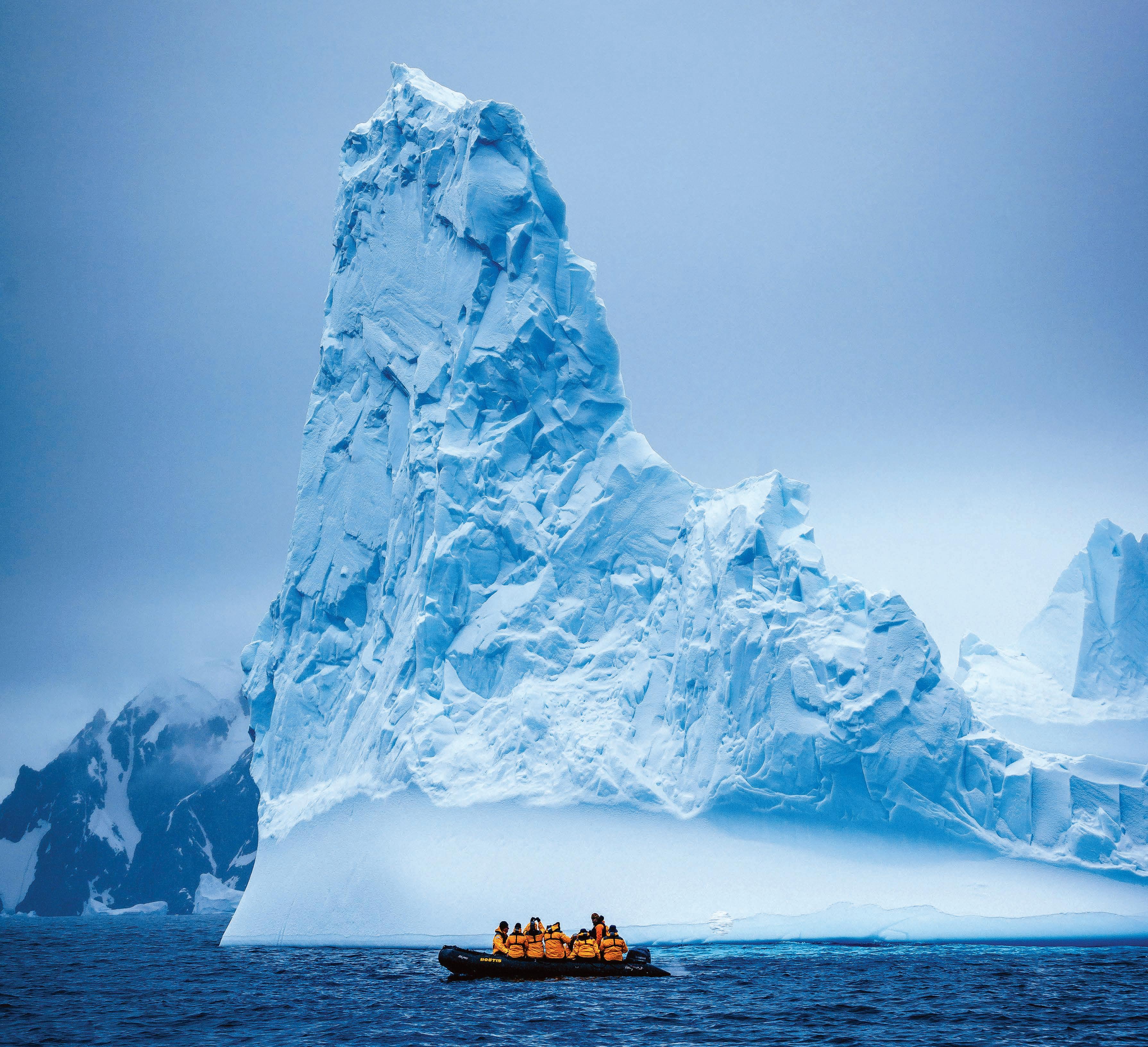 Ultramarine
Ultramarine
Check In
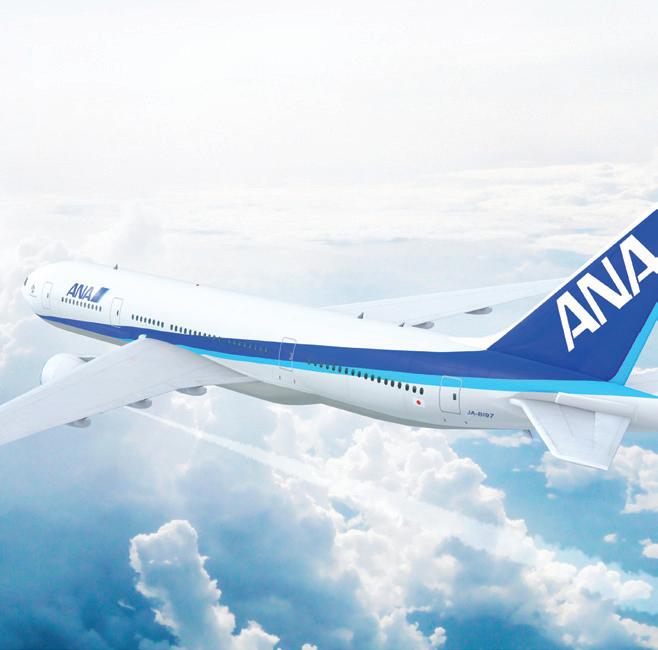
TOKYO (HANEDA) TO SYDNEY
This is my first time flying with ANA (All Nippon Airways), and my expectations are high: the carrier has been awarded SKYTRAX’s five-star rating every year since 2013 and has been named ‘Airline of the Year’ by Air Transport World three times in the past 10 years, including 2018.
Given I have arrived for a 1030pm flight, I am surprised by the amount of activity at Haneda Airport. This doesn’t impact check-in, mind you, which is efficient and friendly. Off to the lounge, where a sleek and quiet space awaits. I have a light snack of sushi before I spot the saké tasting station – don’t mind if I do. The kitchen is busily preparing noodles to order, including ramen, and kitsune or curry udon, and while it all looks tasty, I am not hungry enough to indulge.
Staff kindly come to my rescue with an Australian adaptor, which allowed me to square away a couple of tasks at one of the lounge’s marble-accented work stations. Note to self: replace lost adaptor.
Cabin
The ANA Business Class cabin has a staggered 1-2-1 layout, which means all passengers enjoy aisle access and plenty of space.
Seat
10K is a genuine window seat, which is always my preference in the 1-2-1 configuration. Not only do I get to cosy up next to the window (perfect for staring lovingly at spectacular bird’s-eyeviews), but the console placement between you and the aisle offers added privacy.
Speaking of the console, it provided plenty of space for my bits and pieces and the headphone holder was a handy addition that I never knew I always wanted. The Nishikawa Air Cyclone bed pad offered an added level of comfort, particularly welcome on an overnight flight.
Service
As you would expect from a Japanese airline, the service was impeccable. Drinks and a hot towel are offered immediately and food orders are taken before departure, allowing for prompt service and maximum sleep time.
Food
Rarely one to forgo the meal service in favour of sleep, I am certainly glad to have stuck with tradition on this occasion. I opted for the beef fillet with demi-glaze onion sauce and it was fantastic. The melt-in-your-mouth steak would be right at home in a finedining restaurant while the entrée – a salad of prosciutto, scallops and grilled peach – would have held its own as the main course.
The comprehensive drinks selection included saké, shochu and plum wine, of course, but I pair the Acústic Negre with my steak. I am also a sucker for bubbles on arrival when flying and the Champagne Castelnau hit the spot.
Entertainment
Although it might have been wise to spend the overnight flight with my eyes closed, I had to finish watching Rocketman, the movie I got part-way through on my way from Sydney to Tokyo. I thought the 18-inch touch screen TV did Elton John’s flamboyance justice and the noise-cancelling headphones allowed me to get lost in the brilliant score. Unless I was missing a trick (which is entirely possible), navigating the system was slightly laborious. The catalogue is not arranged into pages so you need to scroll through each option one by one in the category you have chosen.
Highs
The considered service and restaurant-quality food.
Lows
If pushed, I would point out the awkward deployment of the tray table. It was a little stiff, but entirely manageable.
Baggage: Two pieces, each with a max weight of 32kg
Loyalty Program: ANA Mileage Club, and a member of Star Alliance WiFi: Available to purchase
Pyjamas: None
Amenities: The usual eye mask, ear plugs and toothbrush set, plus Kose Sekkisei MYV skin care products, in a stylish Globe-Trotter pouch.


Discover the vast, wild continent that is Africa. From incredible wildlife encounters to amazing landscapes & welcoming locals, there is an African adventure to exceed your expectations.

Experience Africa as soon as you board your South African Airways flight. Flying daily from Australia to South Africa, our overnight flights make for convenient connections through Johannesburg to more than 55 destinations within Africa.
Go online to flysaa.com, call 1300 435 972 or visit your preferred travel agent to book your African adventure!


BON
HOME TO AUSTRALIA’S GLITTER STRIP, THE GOLD COAST HAS LONG DELIVERED ON GLITZ. NOW, A DIFFERENT VERSION OF LUXURY HAS MOVED IN, AS KATE SYMONS DISCOVERS

YOU’RE NOT SUPPOSED TO JUDGE A BOOK BY ITS COVER. WE ALL know that. Yet, regretfully, I erred as I pulled up on The Esplanade in the heart of Queensland’s Burleigh Heads.
I was there to check-in and check out the debut offering from bon Sol, a luxury apartment provider with big plans in the Gold Coast suburb. I had seen and heard plenty about the Pandanus Apartment so I was thrown by the building’s 1960s facade, which delivered big on the retro vibes. Surely, I had the wrong address.
Nope. In keeping with the vintage veneer, a bold Helvetica-esque font on a slate backdrop confirmed I was, in fact, in the right place. As I ascended the internal stairwell, complete with nostalgic tessellations underfoot, my curiosity found a place to land: this was not the Gold Coast’s standard version of luxury.
Home to the bright lights of the Surfers Paradise glitter strip, the Gold Coast is more often associated with glitz and glamour than understated luxury. Yet behind the ‘groovy’ exterior, Pandanus is every bit the indulgent retreat, and the shift is entirely befitting the laid-back Burleigh surrounds.
The first-floor, two-bedroom apartment with ocean-wide frontage is 135-square-metres of relaxed style, thanks largely to the work of interior designer Anna Spiro – she of Halcyon House fame. Contrast is a hallmark of Spiro’s work and comparisons between bon Sol and the much-lauded boutique hotel and spa in Cabarita Beach are easy. Yet, while Halcyon House commits to a predominantly blue-and-white palette, Spiro has made no such commitment here. And the resulting explosion of clashing patterns and colours works beautifully.

Spiro believes “fabric can change the mood of a room in an instant” and her work here proves as much. Greens and blues dominate the space but red, yellow and pink all come out to play. White cabinetry and sisal flooring complete the coastal look. The bottle of Bollinger on ice is quite the moodlifter, too.
Bang & Olufsen BeoSound technologies, Netflix and Foxtel subscriptions in the living room and master bedroom, Moss River linens and towels, a well-stocked drinks cart, and sparkling beach views might make it hard to pry yourself away from textile heaven, but Burleigh is a suburb worth exploring. With its 2.5-kilometre stretch of white sand, barrelling blue waves and regimented Norfolk Pines, Burleigh Heads has always appealed to travellers but the current incarnation extends beyond beach culture.
The area is steadily building a reputation as one of the Coast’s premium dining destinations with Rick Shores (where you might inadvertently dine next to, say, Margot Robbie, as I did – swoon!), The Fish House, Restaurant Labart, Iku and Burleigh Pavilion among the top spots. There’s a vibrant cafe scene with a healthy leaning, and enough boutique shopping to warrant a wander.
If eating in is more your style, bon Sol can arrange an in-house solution for breakfast, lunch and dinner by way of hampers or fully catered private dining. The choice is yours.
bon Sol also offers a Beach Club service (at an additional cost), allowing you to meander through your morning while an on-sand set-up of beach lounges, umbrellas and a stocked cooler box is prepared across the street.
A sister apartment to Pandanus, Hibiscus is currently in the making with plans for a December 2020 unveiling. And if she’s anything like her sibling, an understated exterior will belie true inner beauty.
Rates start at $500 per night, for a minimum of seven nights between May and August. Rates between September and November, and March and April start at $600 per night, while peak rates (Dec, Jan and Apr) start at $700 per night (seven-night minimum). Three-night minimum rates are also available. bonsol.com.au
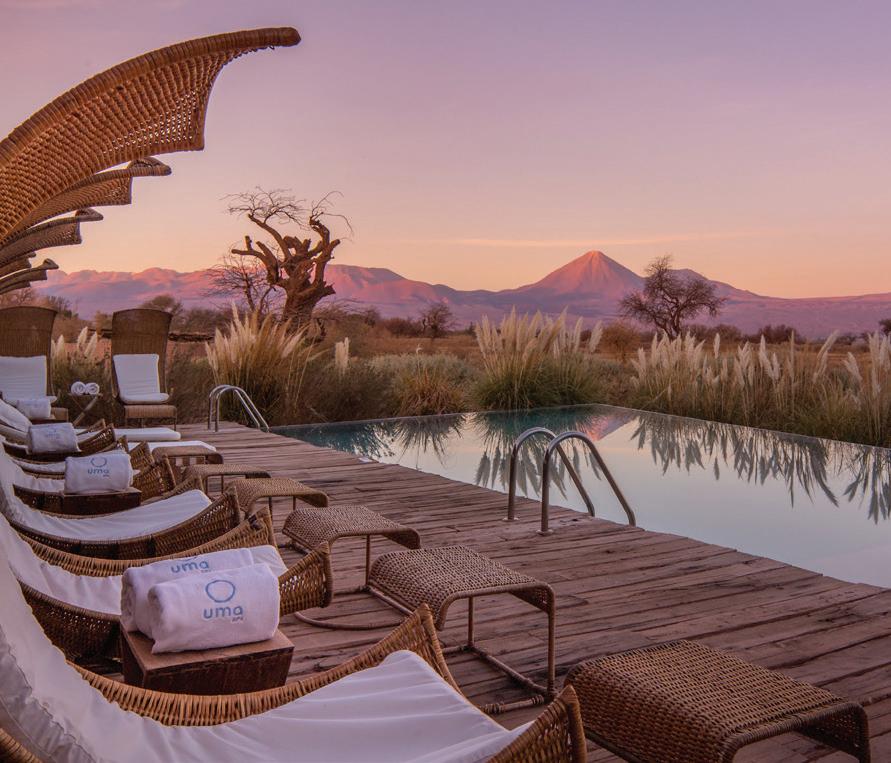
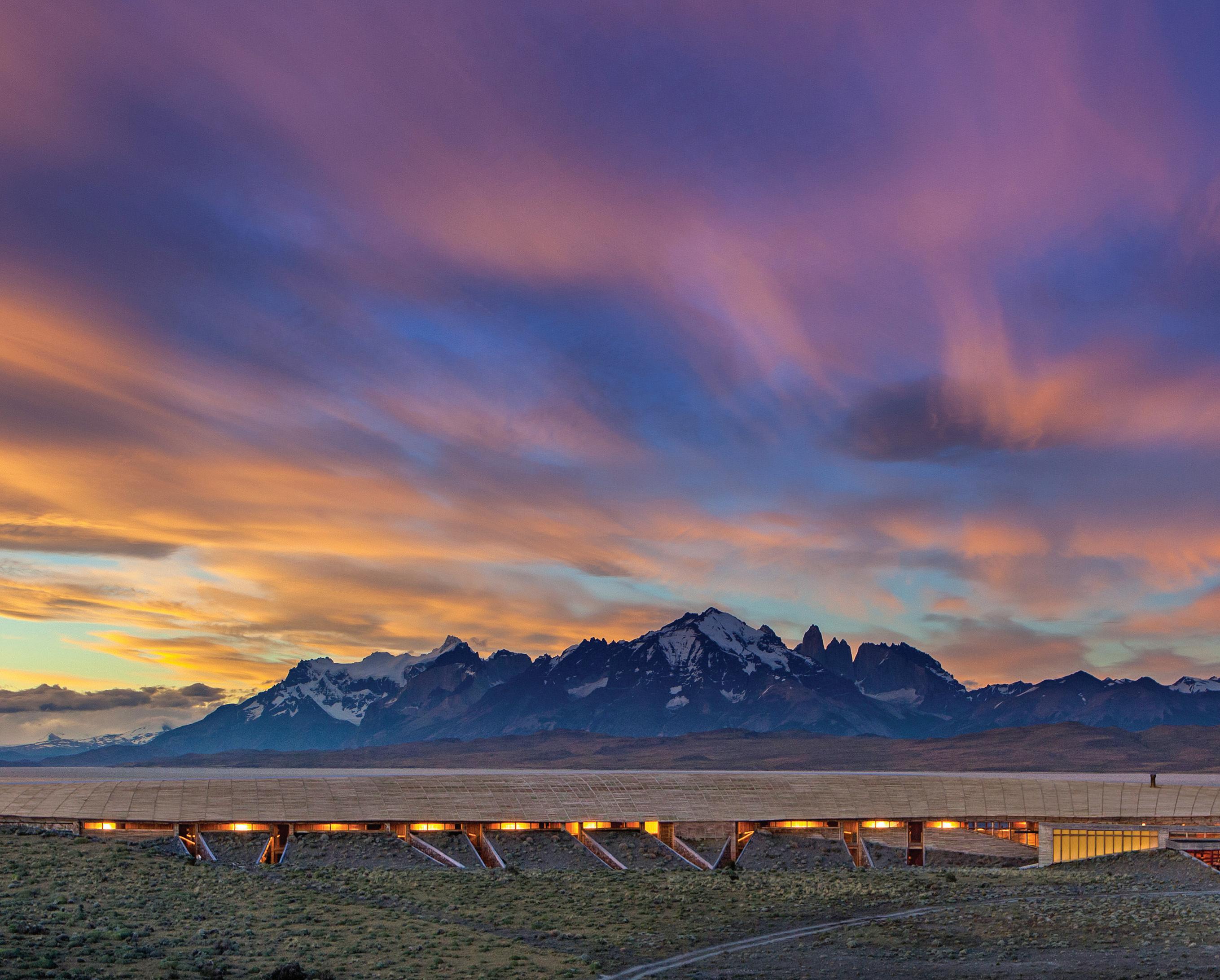
For over 24 years South America Travel Centre has been creating personalised itineraries for Australian travellers who enjoy the finer things in life. Each journey is designed by our specialist travel consultants to suit your travel needs and any special interests. Accompanied by English speaking experienced guides and private transport you have the flexibility to travel at your own pace. Your personalised itinerary will include handpicked luxury and boutique accommodation chosen specifically for your tastes which may include stunning hotels, superb lodges and charming estancias. Let us create the perfect holiday in South America for you.
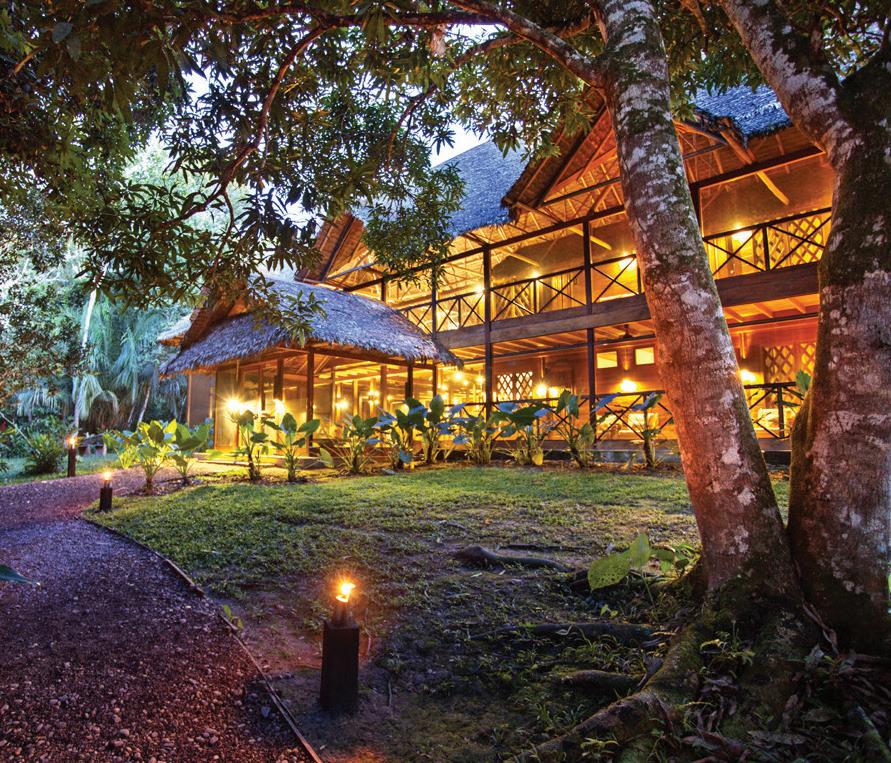
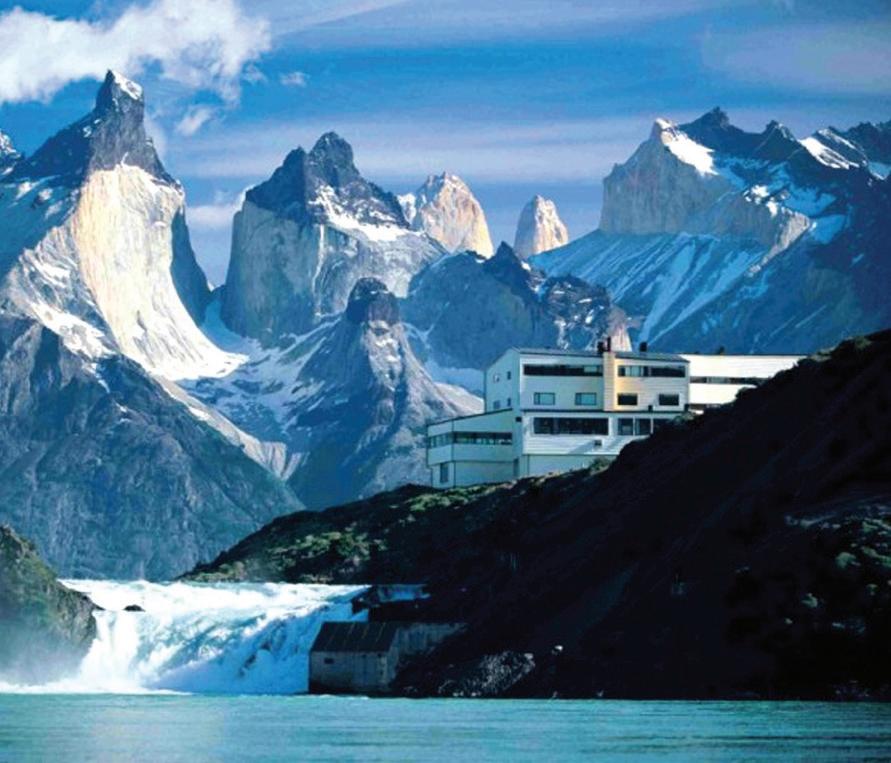
1300 784 794

southamericatravelcentre.com.au contact@southamericatravelcentre.com.au
 Tierra Patagonia
Tierra Atacama Desert Explora Patagonia
Amazon Inkaterra Hacienda
Tierra Patagonia
Tierra Atacama Desert Explora Patagonia
Amazon Inkaterra Hacienda
Inspired


Plan


IF THERE’S ONE THING WE KNOW FOR SURE ABOUT Australian travellers, it’s that they love Asia. So much so, that in 2018 they spent US$37 billion in the Asia Pacific region, making Australians the destination’s second largest tourism spenders behind China. With Asia’s welcoming people, white-sand beaches, exotic cuisine and spectacular, contrasting landscapes, can you blame us? From Japan to Taiwan, Singapore to Bhutan and beyond, Aussies know that Asia Pacific is a safe bet, and it will come as no surprise that this destination is leading the pack as the fastest growing tourism region in the world.
Further adding to its appeal, a slew of exciting new hotels is cropping up to cater to the rocketing demand. All the better for us, we say. As we bid farewell to 2019, we’re already thinking ahead to 2020 and the myriad impressive properties opening their doors throughout Asia’s tropical lands. From solid-as-a-rock chains to innovative, boutique boltholes, here are those at the top of our list for the discerning traveller (in other words, you).

It has been 137 years since the Orient Express took its maiden voyage from Paris. Now the world-famous brand prepares to make a grand re-entrance onto the international stage with the opening of the first Orient Express Hotel, located at King Power Mahanakhon, in 2020.
Esteemed French designer Tristan Auer has reimagined the original Orient Express carriages, delivering old-world art deco style to the modern 78-storey skyscraper – the tallest building in Bangkok’s bustling metropolis.
Orient Express Mahanakhon Bangkok features 154 rooms including nine suites and two penthouses, as well as an entire floor devoted to wellness, featuring an outdoor pool and Jacuzzi plus signature Orient Express Spa by Guerlain. There is a rooftop observation deck and rooftop bar, while all rooms provide stunning views over the Far East ‘City of Angels’.
Foodies will also be well looked after, with restaurants Mott 32 along with Mahanathi by acclaimed Australian chef David Thompson set to open in the hotel. orient-express.com
When Lelewatu Resort Sumba opened its doors in April 2019, it was the first time the Indonesian island’s multi-award-winning resort, Nihi Sumba, had to consider any competition. And with a new resort on the scene, our interest is officially piqued. An unspoiled and blessed island with immense natural beauty in the form of remote beaches, traditional villages, sacred lakes and waterfalls, world-renowned surf and lush jungles, Sumba is a rare, lush retreat, and we think there is plenty of room for newcomers. At Lelewatu, a cliffside vantage point means guests face 180 degrees of private lagoon and the Indian Ocean, while in the other direction there is no less than four hectares of untouched land to explore. And with an exclusive 27 villas on offer with private balconies and pools, there’s a strong possibility you won’t bump into another guest outside of the restaurant during your entire stay, making it a dream for those seeking privacy. lelewatu.com
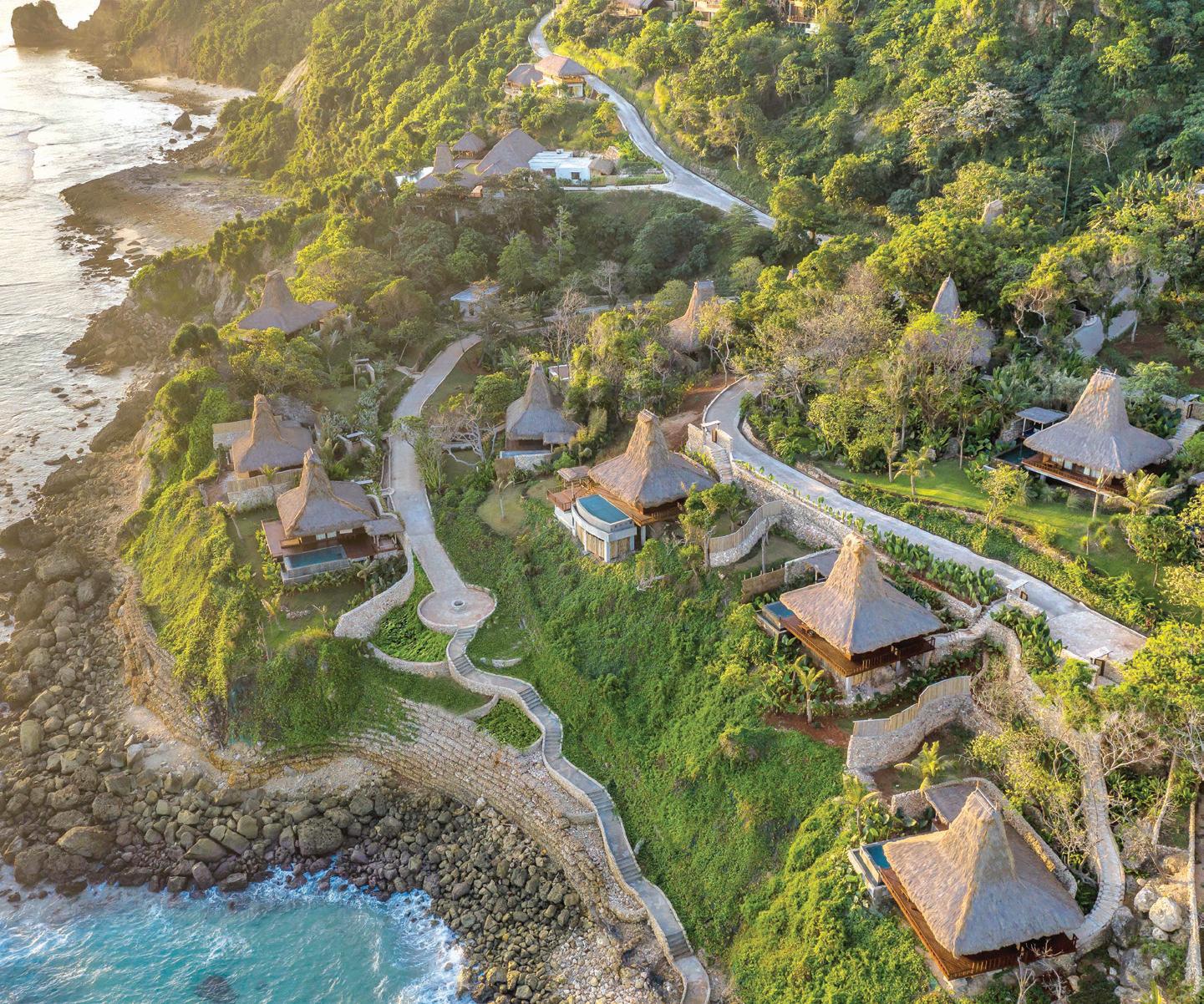
This one might have opened as far back as 2018, but it’s not too often you have the chance to stay in an underground hotel, so it’s still on our radar for the year ahead. An epic project that was a decade in the making, InterContinental Shanghai Wonderland required 5000 architects, engineers, designers and workers, and cost over US$500 million.
The subterranean hotel was ingeniously constructed in an abandoned quarry just outside Shanghai, and is now home to 336 luxurious rooms. Its 16 storeys overlook a 10-metre-deep aquarium, which will be enough novelty for some, but for those seeking extra excitement, another two storeys are positioned completely underwater, giving all-new meaning to the expression ‘sleeping with the fishes’.
The 61,000-square-metre resort features a leisure complex and swimming pool, multiple restaurants and a sports centre cantilevered over the quarry for extreme activities such as rock climbing and bungee jumping. Further adding to the appeal, the hotel is one of China’s most ecofriendly hotels with a ground-level roof garden covered in grass and trees
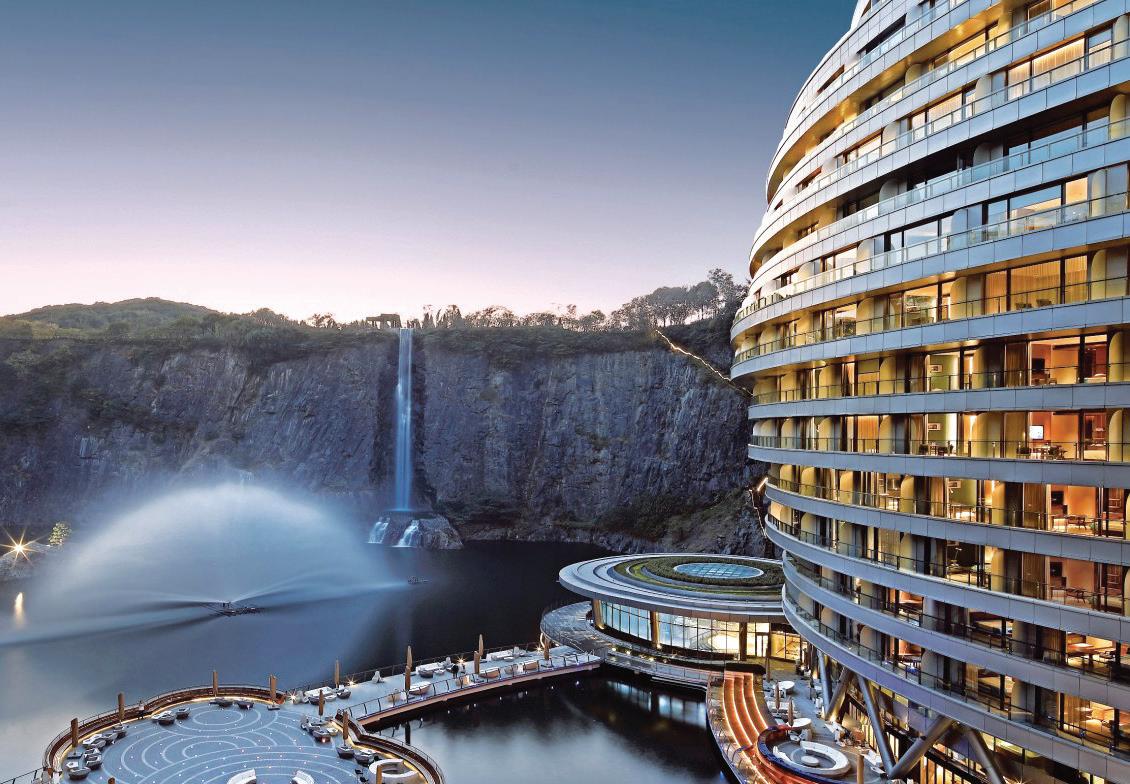
along with an extensive sustainability program and capability to generate its own geothermal and solar energy. ihg.com/intercontinental
When it opens in early 2020, on the banks of the majestic Chao Phraya River, Capella Bangkok will be a sophisticated pied-à-terre in Charoenkrung, the city’s oldest and most historic paved road known for its fashionable cafes, bars and art galleries.

A cocoon of calm in a frenetic metropolis, the hotel, from exclusive Asian brand Capella, will have 101 suites and villas with panoramic river views, private villas, a riverfront gourmet restaurant overseen by Michelin-starred chef Mauro Colagreco, as well as a specialty bar serving creative cocktails and desserts. There will even be a Capella Library (who says print is dead?) and Capella’s award-winning Auriga Spa. Four Seasons Hotel Bangkok at Chao Phraya River will also open in early 2020, further helping the Thai capital elevate its luxury offering. capellahotels.com

Awei Pila
If you’ve ever dreamed of getting truly off the beaten track or spending a week on a near-deserted island, don’t give up now, we may have found your dream holiday. The Mergui Archipelago of Myanmar, which was until recently off-limits to all visitors, has its first resort – Awei Pila. And with nothing on the island except Awei Pila and a community of around 70 Moken fishermen, it might just be one of the world’s last untouched paradises.
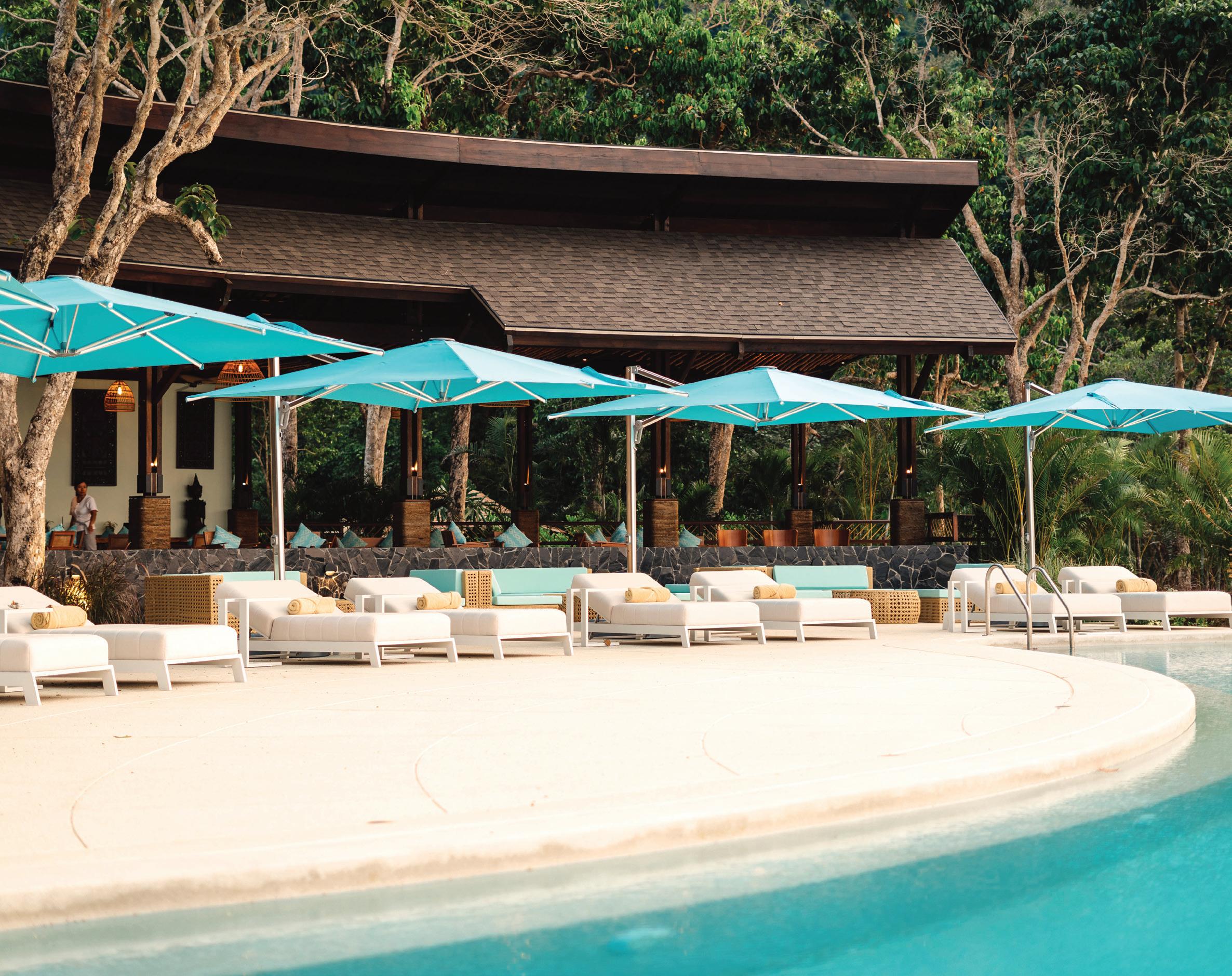
The new eco-resort is situated amid breathtaking atolls and coral reefs within an archipelago of 800 islets, most of which are uninhabited. There are just 24 yurts fronting a white-sand beach – one of 10 as-yet unexplored beaches on the island – plus an open-air restaurant and a spa where guests can relax and recharge.
Sustainability is at Awei Pila’s core. It is plastic-free and there is a resident marine biologist overseeing sustainable policies. The island also has a single source of fresh water. Speaking of water, animal lovers will be in their element with the island’s coves teeming with fish, dugongs and turtles. There is a thriving bird population, too. memoriesgroup.com

Why open one lodge in the Kingdom of Bhutan when you can open five? At least, this is the thinking of Six Senses, which has opened properties in Thimphu, Punakha, Paro and Gangtey, and will debut Six Senses Bumthang in the second quarter of 2020.

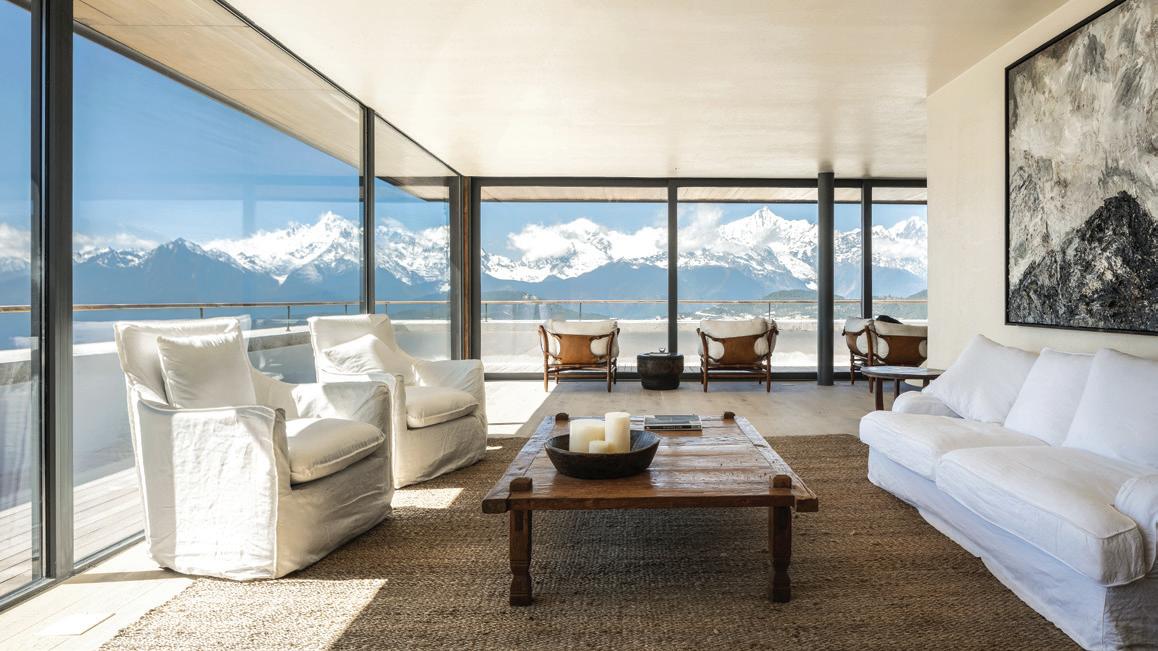
We like what we see so far, with the Himalayan lodges solidifying the brand’s commitment to wellness and sustainability and highlighting Bhutan’s rich culture, warm hospitality and omnipresent spirituality. Each of the five lodges is different in style, showcasing the diversity and special character of the valley it occupies and aiming to immerse travellers in local culture. The spacious interiors are inspired by Bhutanese architecture, from the simple lines of the natural timber furniture to the bukharis (a traditional woodburning stove), and vegetable-dyed, antique-washed Himalayan rugs.
Calling on Bhutan’s infamous Gross National Happiness philosophy, the properties also offer sunrise meditations, holistic spa treatments, private astrology readings, butter lamp lighting ceremonies and incredible hikes and treks through pristine forests. If there’s a place in the world seemingly made for soul-searching, it’s Bhutan, and Six Senses will do a darn good job of keeping you comfortable throughout the journey. sixsenses.com
Japan welcomed 31 million visitors to its shores in 2018, and the country is well on its way to reaching its goal of 40 million visitors in 2020 thanks to an influx of foreign visitors fuelled by the 2019 Rugby World Cup and the Tokyo Olympic Games in 2020. All of these tourists will need somewhere to stay, so it’s a good thing a number of new hotels are coming to the party.
In Tokyo alone, a Four Seasons will debut in the Marunouchi financial district and two EDITION hotels are also due to open, but our pick is Kimpton Tokyo Shinjuku, from San Francisco-based Kimpton Hotels & Resorts, slated to open in early 2020.

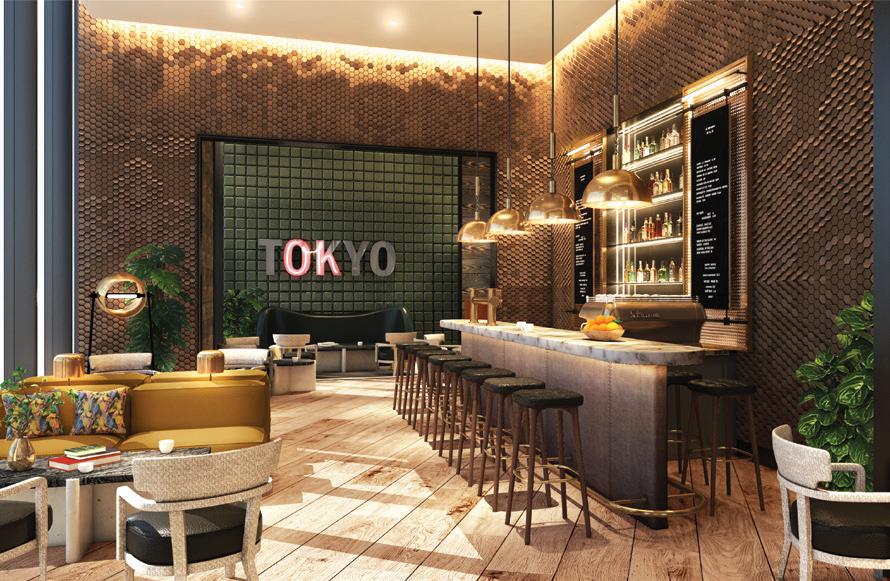
Located in the iconic skyscraper district that is home to many of Tokyo’s tallest buildings, the 162-room hotel will feature Kimpton’s signature bold, playful design inspired by New York’s art and fashion scene. That’s not to say the hotel forgets its location – Kimpton Tokyo Shinjuku will showcase plenty of Japanese culture, not in the least part through its three locally inspired restaurants. With complimentary morning coffee and tea in the ‘living room lobby’ and an evening social hour offered to guests, we’re expecting to find an inner-city oasis amid the delicious chaos of Tokyo. kimptonshinjuku.com
Carved from a former Tibetan home cradled in a sacred hillside 3600 meters above sea level, Sunyata Hotel Meili, which opened in early 2019, took almost three years to complete. Deriving its name from the Sanskrit word for ‘emptiness’, the 19-room hotel showcases an aesthetic informed both by traditional Tibetan architecture and Japanese wabi-sabi philosophy, and harks back to a more poetic, traditional way of life.
The property is nestled among a cluster of 22 Shangri-La households in a centuries-old village, and its simple design, not to be mistaken for basic, celebrates both the beauty of imperfection and the freedom of restraint. Think aged, textured natural materials, salvaged timber, roughly hewn furniture crafted by local artisans, rustic pottery and a soothing nude colour palette. >>
JAPAN
Aman Kyoto
Aman Kyoto, which opened its doors on November 1, is a natural beauty. The ryokan-inspired retreat is set in a hidden valley at the heart of a 32-hectare forest amid lush undergrowth, winding footpaths, tranquil glades and flowing streams. While the intimate resort of just 26 guest rooms embodies the minimalist-luxe aesthetic Aman is known for, it is the natural environment that’s the real star of the show.
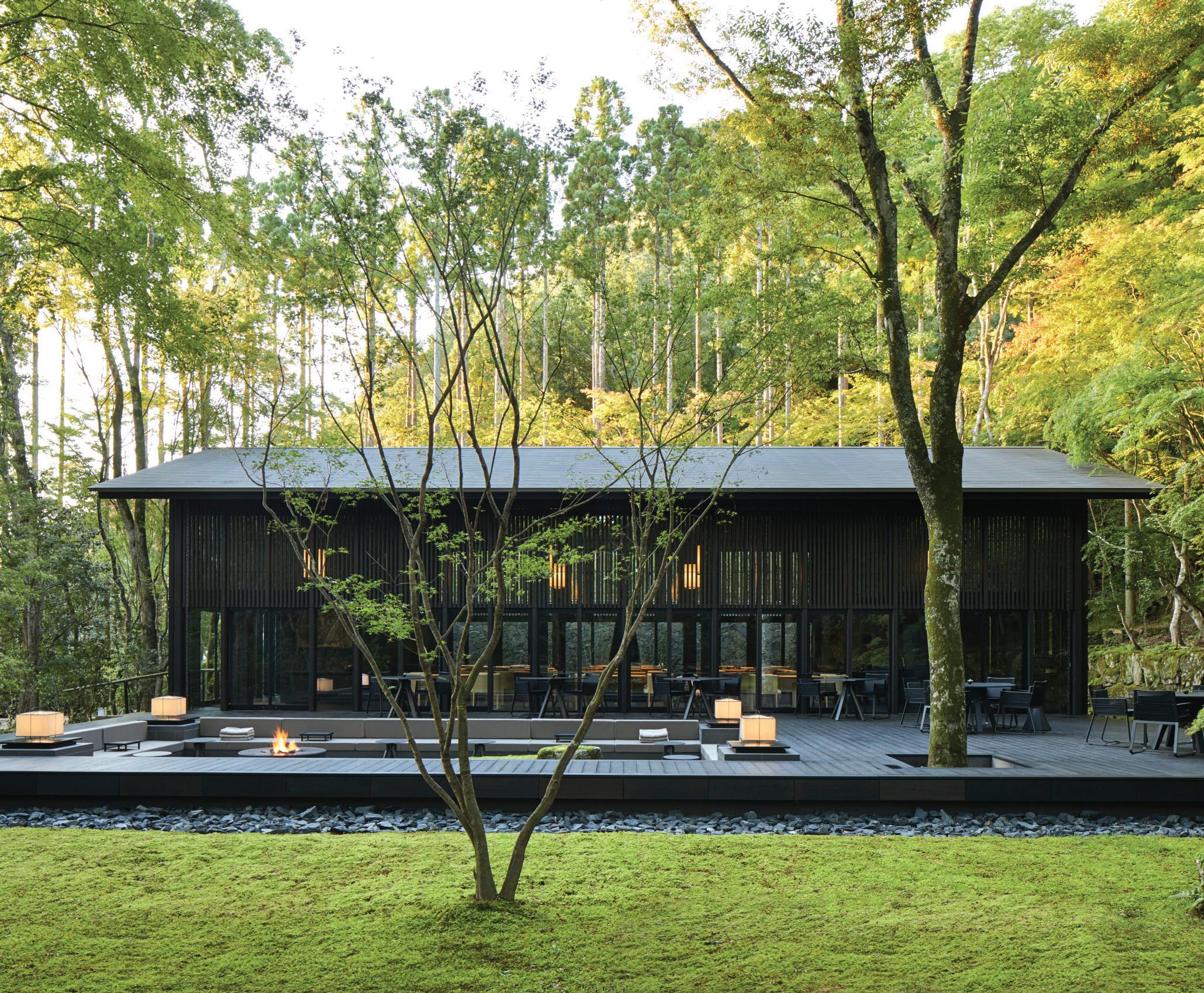
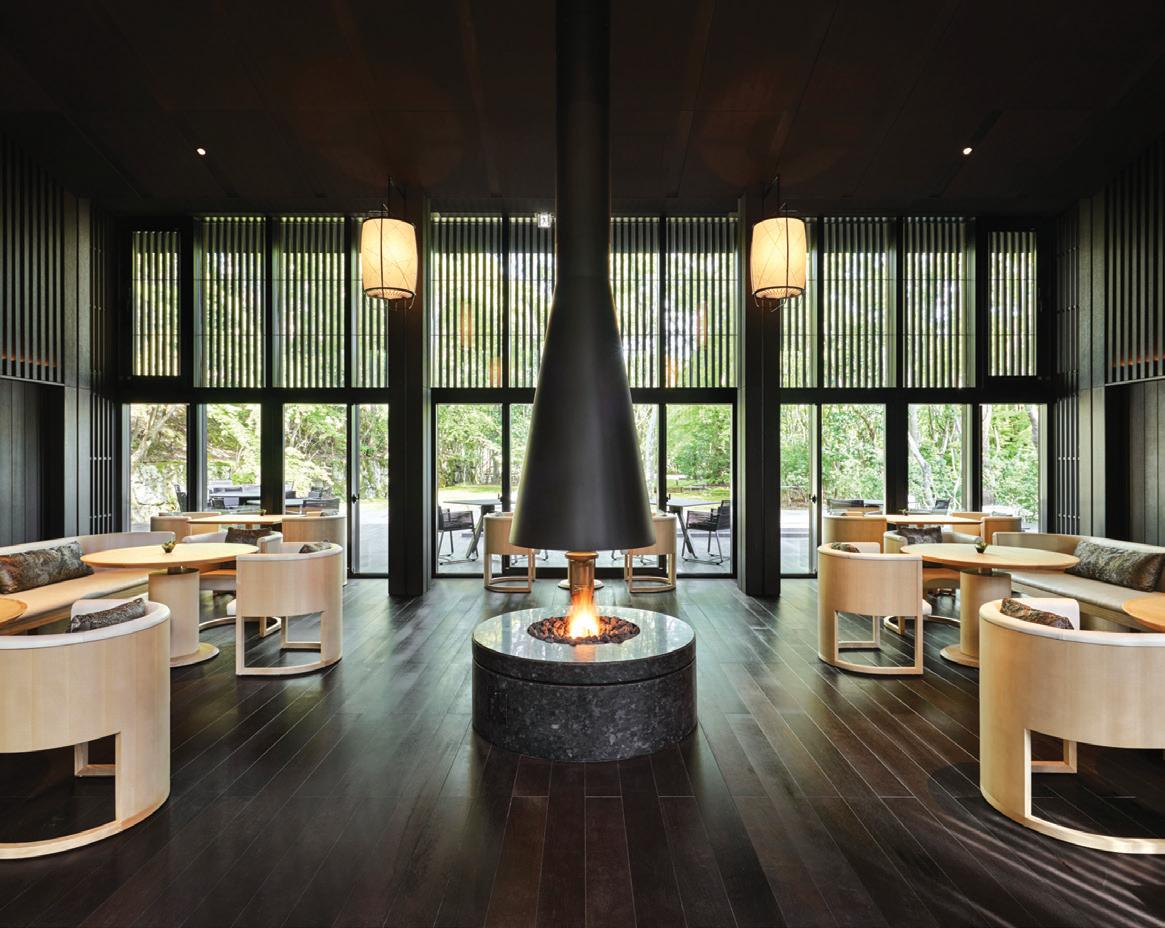
The late, famed Australian architect Kerry Hill is behind the property’s design (along with the two other Japanese properties, Tokyo and Amanemu, and many other Aman properties around the world) and has delivered with manicured platforms, a formal garden, moss-covered stone pathways and mature Japanese cedar, cypress, camellia and Japanese maple trees everywhere you look.
With such an ethereal and peaceful setting, it’s unlikely you’ll want to leave, but if you do get your fill of R&R and are keen to explore, the centre of Kyoto, recognised by many as Japan’s cultural capital, is conveniently nearby, while the iconic UNESCO World Heritage Site of Kinkaku-ji Temple is within walking distance. aman.com
A single restaurant serves authentic seasonal Yunnan cuisine, and the jagged beauty of the sacred Snow Meili Mountain is offered up to guests from the rooftop lounge Kawagebo, which also serves as a neighbourhood hub come nightfall.
All rooms and suites feature an open studio layout and uninterrupted views over the surrounding peaks, but for the best seat in the house, opt for Sunyata’s 70-square-metre standalone villa, Noble House, which boasts a private terrace and bathtub overlooking the gardens and dense forest beyond. If you’ve ever felt the urge to get as far away as possible from the rat race, this unique, two-and-a-half storey homestead-turned-hostel should do the job. designhotels.com
A unique offering for an island property, the six-suite Harding Boutique Hotel is scheduled to open on the Sri Lankan south coast in early 2020. With dense coconut groves to the east and west, ocean and beach frontage to the south, a dynamic local community to the north, and just a 30-minute drive from the UNESCO World Heritage Site of Galle Fort, this is a truly special property.
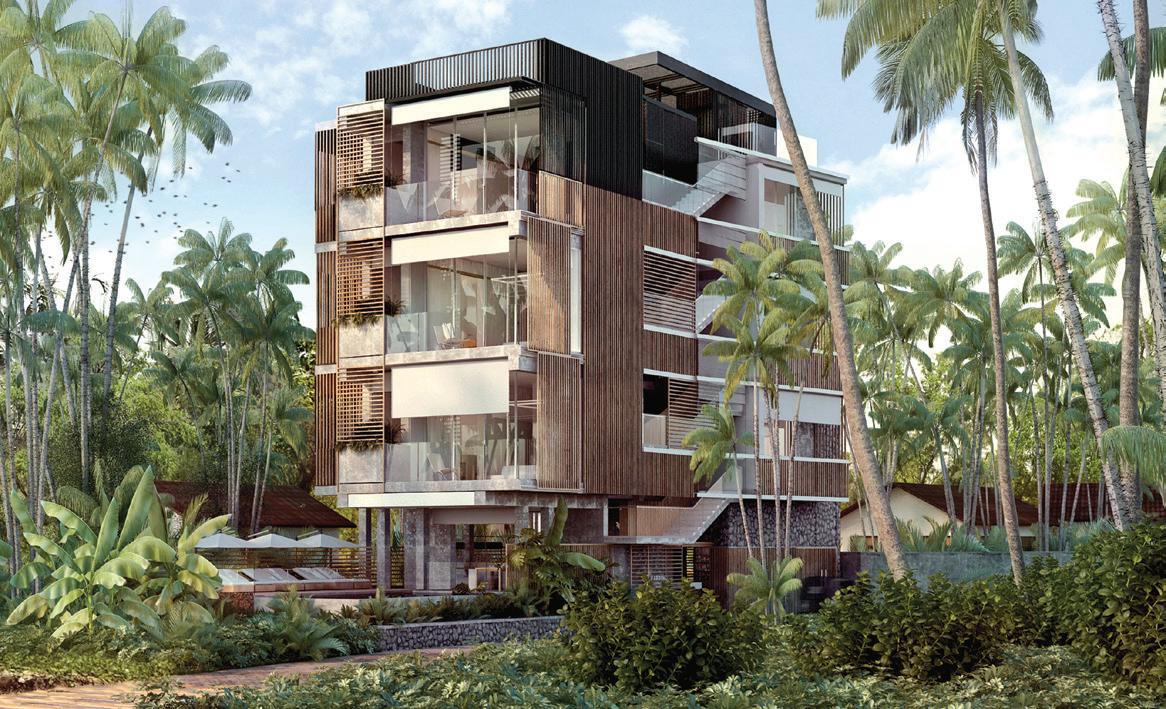
A new venture from Sri Lankan-Australian entrepreneur Paul Harding, whose great uncle was one of Sri Lanka’s first hoteliers, the intimate hotel, which can be rented out exclusively, was designed by British architect Jonathan Ashmore and pays homage to Sri Lanka’s tropical modernist movement.
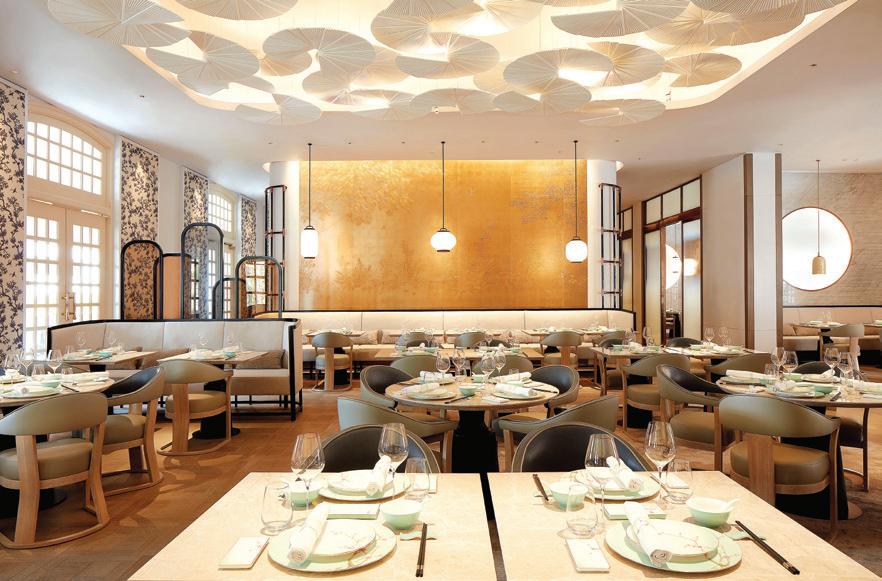
It offers a clean, modern aesthetic with plenty of wide, open spaces, and suites that are elevated among the natural palm groves, seamlessly connected with their tropical surroundings. The private accommodations boast generous private balconies and uninterrupted views over the Indian Ocean, as well as sea-facing private baths, and while there isn’t a restaurant, there is an open-air roof terrace with 360-degree views over the palm tops. Not to mention, you’ll experience a true home away from home in one of the most desirable tropical locales in Asia. hardingboutiquehotels.com
After an extensive two-and-a-half-year, three-phase renovation that saw Raffles Singapore close for almost two years, the home of the very first Singapore Sling reopened in August amid heady anticipation. So, does the revitalised hotel live up to expectations? We think it does, thanks to an immaculate restoration that brings the heritage hotel back to its former glory and then some.


Luxury travellers can expect new levels of comfort and service, with more suites (each outfitted with new amenities), redesigned bathrooms and state-of-the-art technology.
More culinary experiences are also on the cards, with new restaurant collaborations with celebrity chefs including Anne-Sophie Pic of the three-Michelin star Maison Pic in Valence, France; venerable French Master Chef Alain Ducasse; and Chef Jereme Leung, known for his innovative Chinese cooking, all on offer. As for the revitalised Long Bar, fear not – the timeless tradition of tossing peanut shells on the floor isn’t going anywhere, and thanks to this restoration, nor is this 132-year-old Singapore institution. raffles.com
Six Senses continues its hot streak of Asian hotel openings (Singapore, Bhutan et al), this time refurbishing the 700-year-old Fort Barwara, originally owned by the Rajasthani Royal Family, in mystical Rajasthan. Set to open in 2020 on 2.2 hectares, we are eagerly awaiting the unveiling of this ambitious project, which has seen the hotel heavyweight preserve an ancient fort structure, all the while converting it into a five-star luxury retreat.
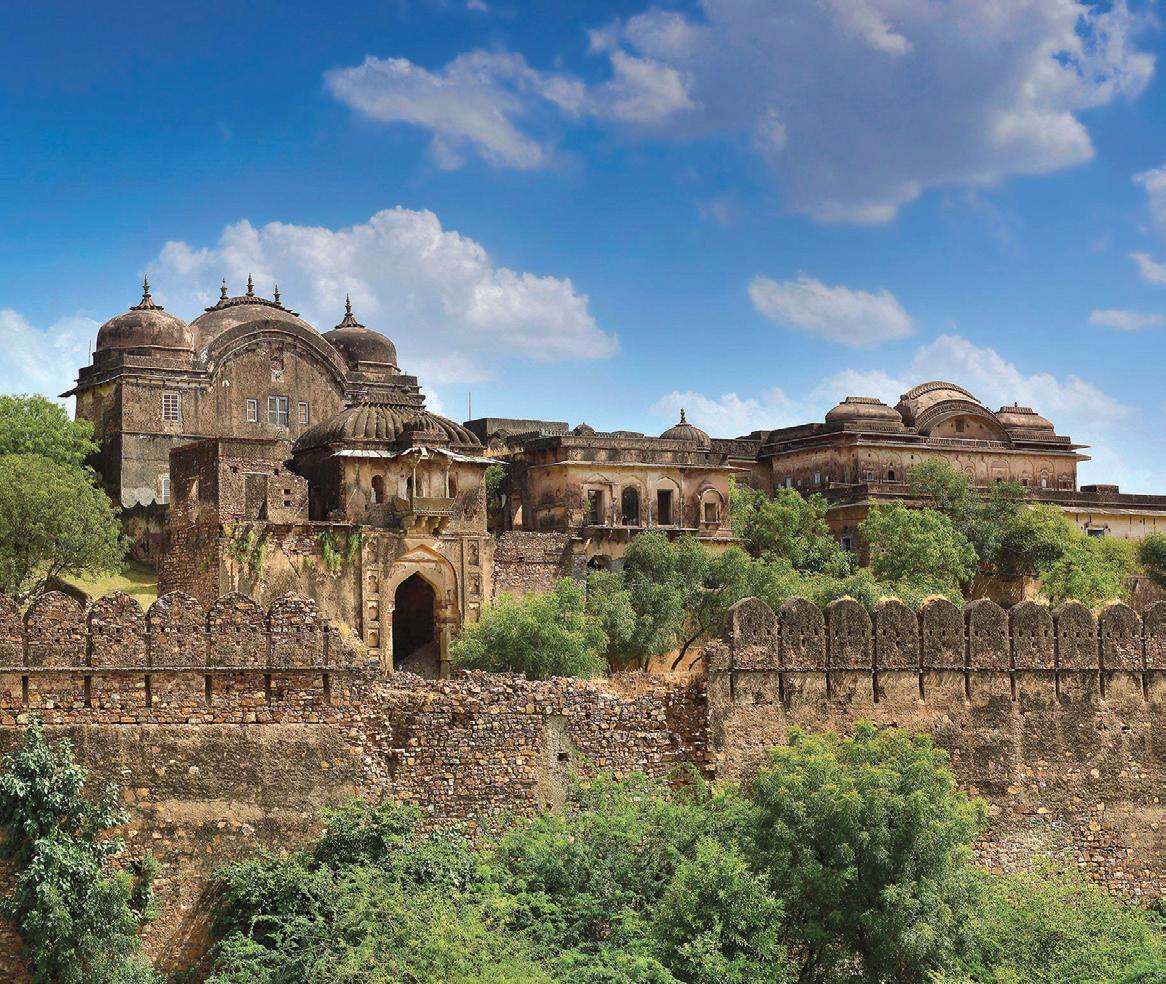
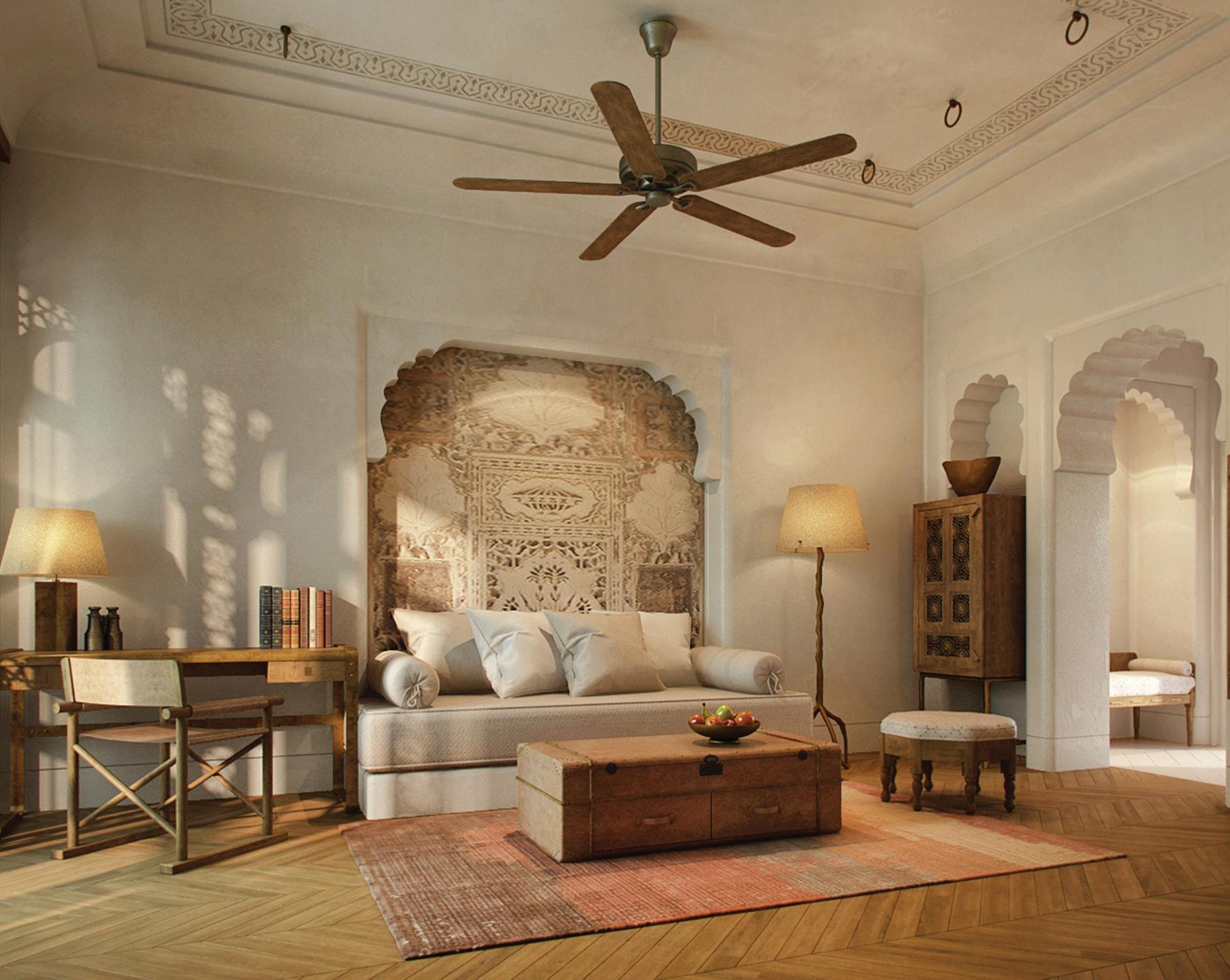
The sensitive conservation effort incorporates a palace and two temples within the walled site, 48 suites, a bar and lounge, and two restaurants, which will serve classic dishes and modern cuisine incorporating fresh local ingredients.
The 2800-square-metre Six Senses Spa and fitness centre is housed in the original women’s palace and will offer comprehensive ayurveda treatments and meditation in addition to the brand’s wellness programs. There are also two swimming pools, banquet areas, a retail boutique and a kids’ club.
This exciting hotel sits directly opposite the temple Chauth ka Barwara Mandir, with Ranthambore National Park, home to tigers, leopards, sloth bears and other wildlife, just 30 minutes from the property, and Jaipur a three-hour drive away. sixsenses.com
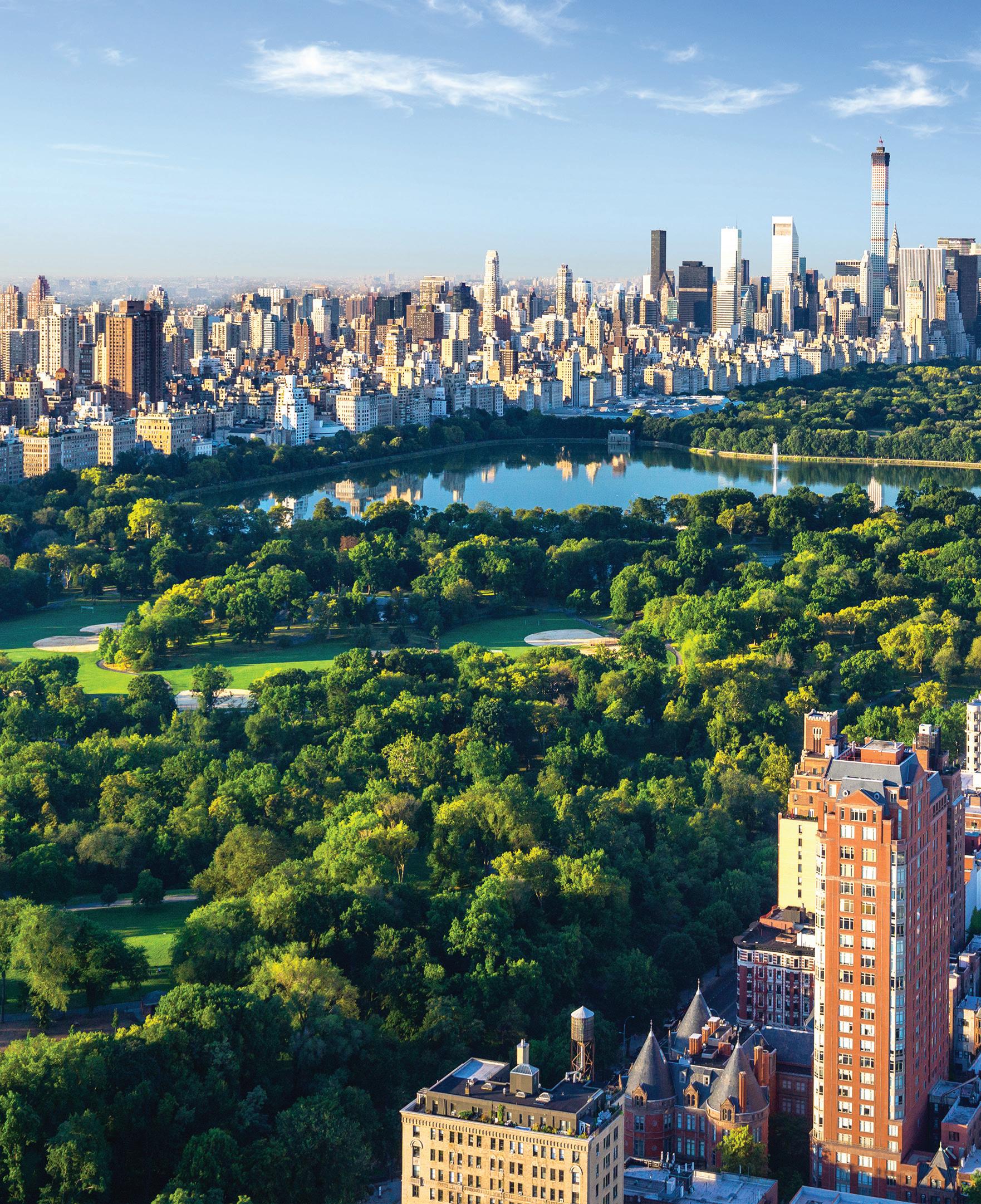
PACKED WITH SIGHTS, STYLE AND A WHOLE LOT OF PERSONALITY, NEW YORK CITY IS UNDOUBTEDLY ONE OF THE WORLD’S MOST IRRESISTIBLE DESTINATIONS. AS KATE SYMONS DISCOVERS, THE CITY THAT NEVER SLEEPS IS ALSO LEADING THE WAY ON SUSTAINABILITY

IT HAD BEEN THREE YEARS IN THE MAKING. THREE YEARS since I first tasted ‘7 Minutes in Heaven’, the smoothie of my dreams from The Butcher’s Daughter in New York City’s Nolita neighbourhood, and three years waiting to taste it again.
It was as delicious as I had remembered, but as I strolled those famous streets, admiring the cast-iron architecture characteristic of Downtown, I soon realised something was amiss. My drink was undrinkable. Literally. It refused to travel up the straw. The lovely paper straw. The lovely, environmentally friendly paper straw. The lovely, environmentally friendly paper straw that, as it turned out, had been ruthlessly sliced open by the razor-sharp prongs of the cup’s lid, rendering it useless.
Imperfect as they may be, the paper straw, it seems, is the eco-effort du jour in New York City, at least for now. There wasn’t a plastic cousin in sight during my recent visit, an effort worth noting and applauding.
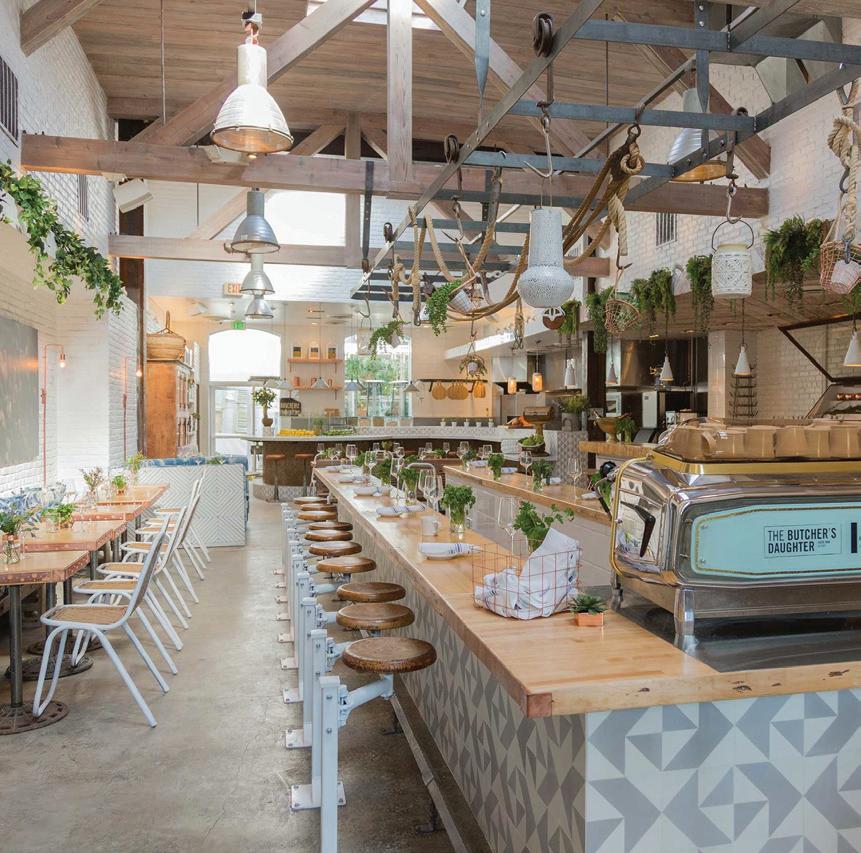
Of course, the city’s sustainability efforts go far deeper than the humble straw. In fact, the Big Apple is the most sustainable city in the United States and 14th globally, according to the 2018 Sustainable Cities Index, which ranks cities on the pillars of people, planet and profit. When graded solely on the planet categories, NYC drops to 20th globally, but still out-ranks all USA contenders.
This might come as a surprise. Thanks to pop culture, even those who have never visited NYC understand it is a city densely packed with people, vehicles and buildings. The convergence of people and resources is one of the unique challenges in urban environments, yet a highly visible commitment, from government level right through to straw-rejecting citizens, is keeping New York City at the forefront of sustainability. >>
For environmentally conscious travellers, there are countless ways to minimise on-the-ground-impact – using the extensive public transport system or, better still, walking or cycling; visiting green landmarks such as the High Line, the elevated rail line-turned-linear park hovering over the city’s West Side; and eating at farm-to-table restaurants, to name a few. Choosing sustainability-minded accommodation to name another. It’s not always simple. Greenwashing (when organisations falsify their environmentally friendly efforts) can be hard to spot, but there are credentials that will help identify authenticity. The NYC Carbon Challenge, for example, involves 19 hotels that have committed to reducing building-generated emissions by 30 per cent by 2025. Among them, the city’s two 1 Hotels: Central Park and Brooklyn Bridge.
In the heart of Midtown, 1 Hotel Central Park is an ivycovered beauty with eco-credentials to match. It was designed using reclaimed and locally sourced materials, which is evident throughout the property, while low-energy lightbulbs, a triplefiltered purification water system, and fresh farm-to-table dining offerings are among the many initiatives that expand on the hotel’s sustainability ethos.
On the other side of East River, 1 Hotel Brooklyn Bridge is equally mission-driven. The aesthetic is similar – raw materials, light-filled spaces, abundant greenery – although the journey to


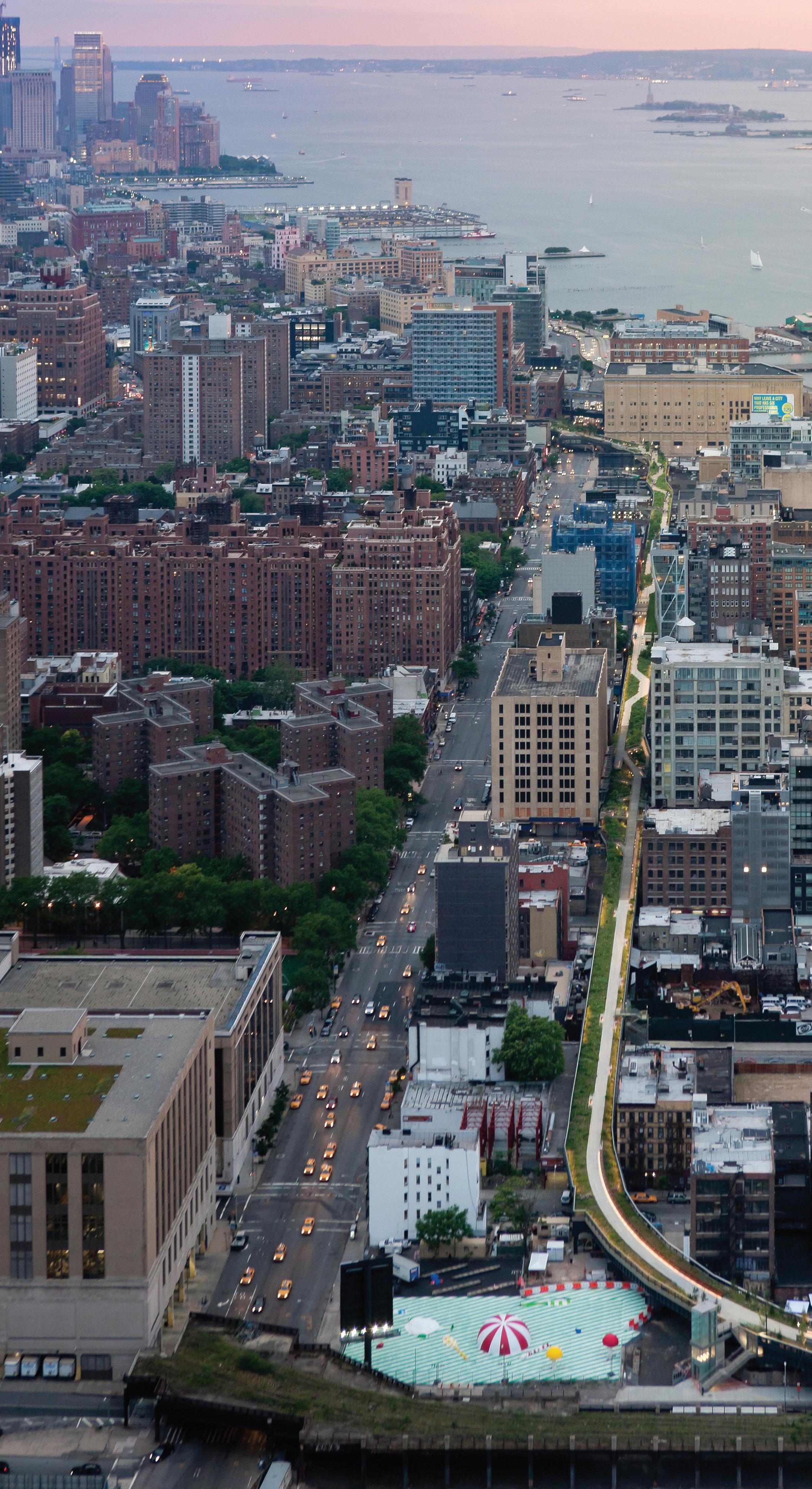
get there was quite different. Arash Azarabarzin, President of SH Hotels & Resorts, which operates 1 Hotels, says a ground-up construction, such as the Brooklyn project, presents a different set of challenges and opportunities.
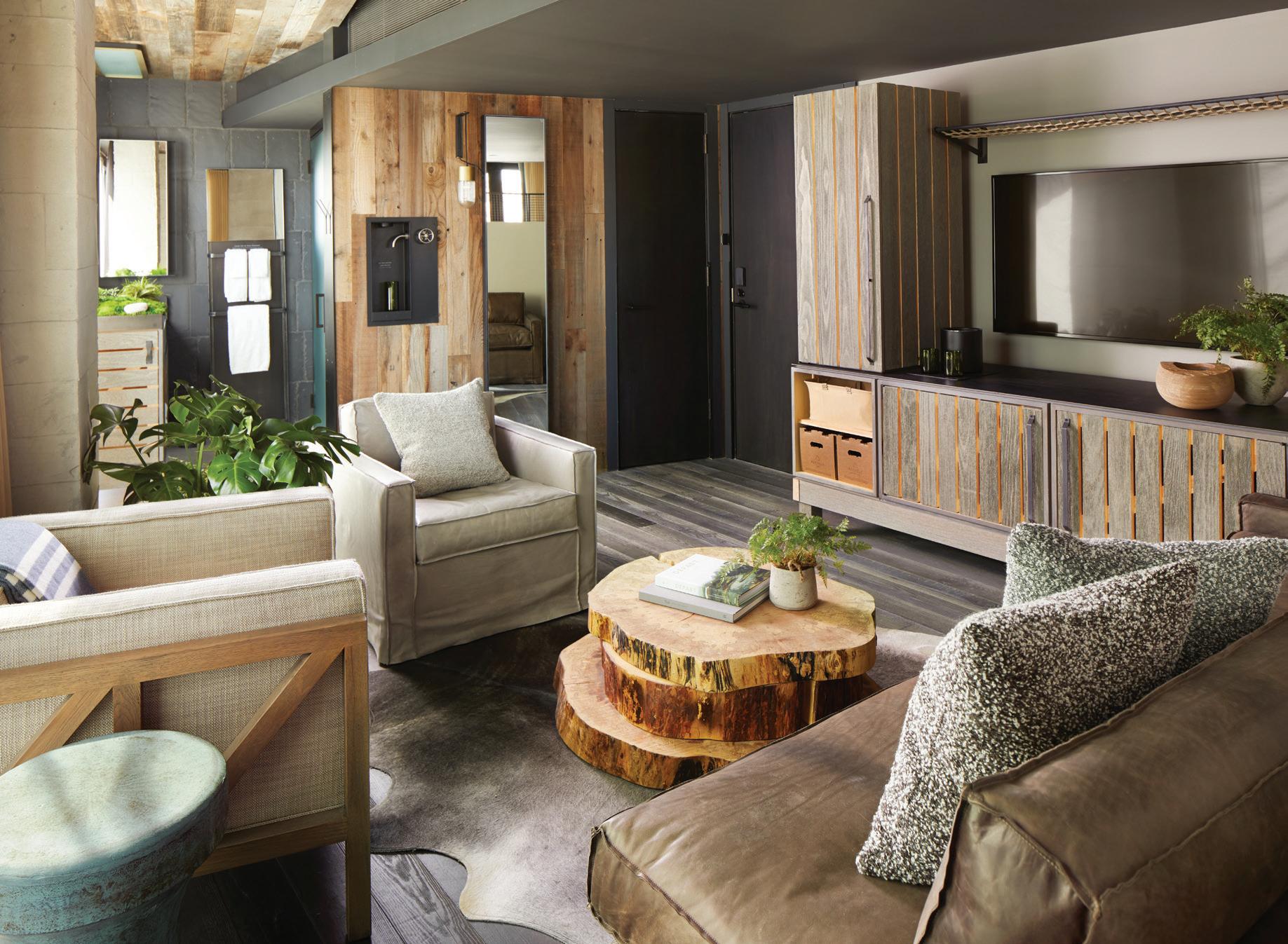


“The urban density does come with its own set of challenges, including ageing infrastructure, conflicting priorities, and increased environmental stressors,” Azarabarzin explains. “When we build a 1 Hotel in an urban context, we strive to understand the boundary where we can provide a positive impact to the environment given the environment’s constraints.
“For new builds, we are able to truly innovate around building systems and, in particular, with the opportunities around the mechanical systems because there is less of a concern around space constraints. For existing buildings and adaptive reuse projects [such as 1 Hotel Central Park], our opportunities lie in reclaiming building materials and thereby reducing the overall embodied energy of the project.”
New-build innovation was rarely more evident than during construction of 1 Hotel Brooklyn Bridge, which coincided with Superstorm Sandy in 2012. Due to the destruction caused in the area, waterfront zoning changed, requiring 1 Hotels to raise the building 36 inches, or a touch over 91 centremetres. New regulations also restricted increasing the building’s overall height. An extensive redesign was required and the result is a building that not only avoids storm surge and flooding, it also captures rain water to reuse on site and in Brooklyn Bridge Park.
A LEED-certified project, the waterfront hotel operates entirely on wind power, boasts energy-efficient heating and cooling systems, uses filtered water in all taps, sinks, and showers, and relies on green cleaning solvents. Refillable bathroom amenities, wooden room keys, cardboard coat hangers and the like are >>
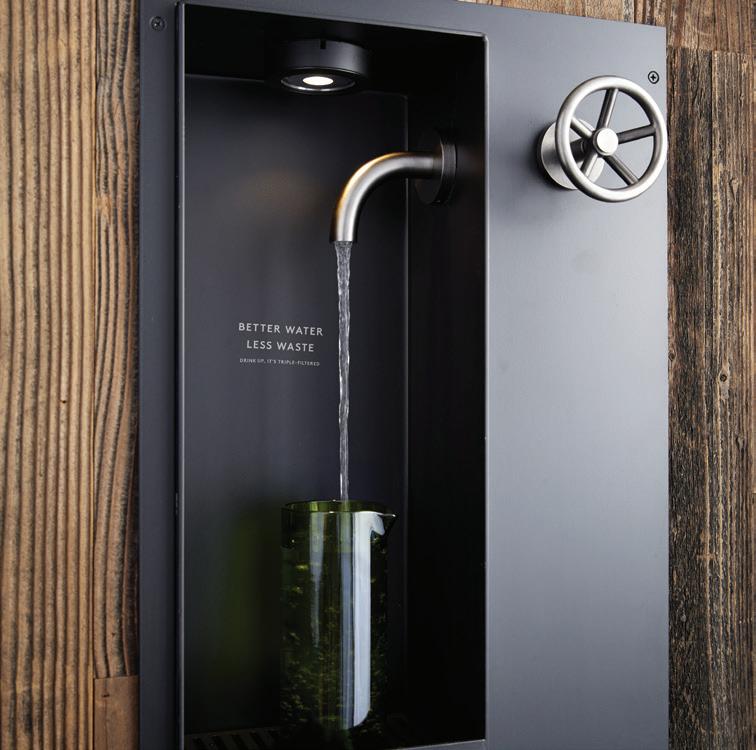
par for the course, and even the handwritten welcome note is penned on bio-degradable, seed-infused paper. Plant it, water it, and watch it grow. Blooming marvellous.
Azarabarzin says providing guests with mindful moments throughout their stay instigates engagement and further strengthens the hotel’s sustainability initiatives.
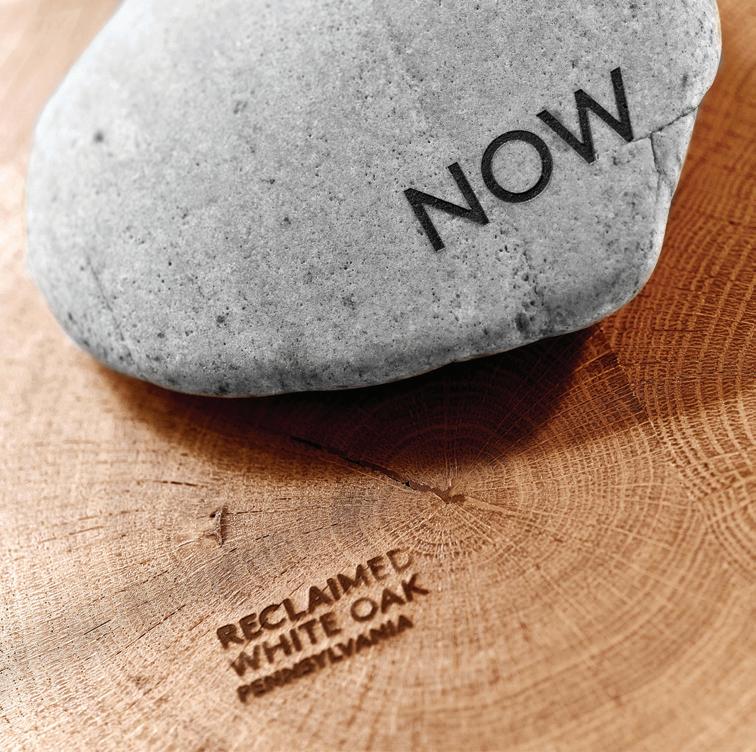
Already a world-leader, New York City stepped up its sustainability game in April by updating targets set by the city’s OneNYC strategy, originally announced in 2015. Carbon neutrality by 2050 and zero waste to landfill by 2030 are two key objectives; the city also became the first in the world to require all existing buildings of 25,000 square feet (about 2300 square metres) or more to lower their energy usage and emissions. This regulation has enormous potential. Almost 70 per cent of emissions in New York City come from its buildings and, citywide, about 50,000 buildings are in excess of 25,000 square feet.
Coming in at 386,000 square feet, The Dominick is already on the case. Last year, the SoHo hotel became the second property in NYC to receive the Green Seal Bronze certification, an acknowledgement of its commitment to sustainable, efficient and recyclable services.
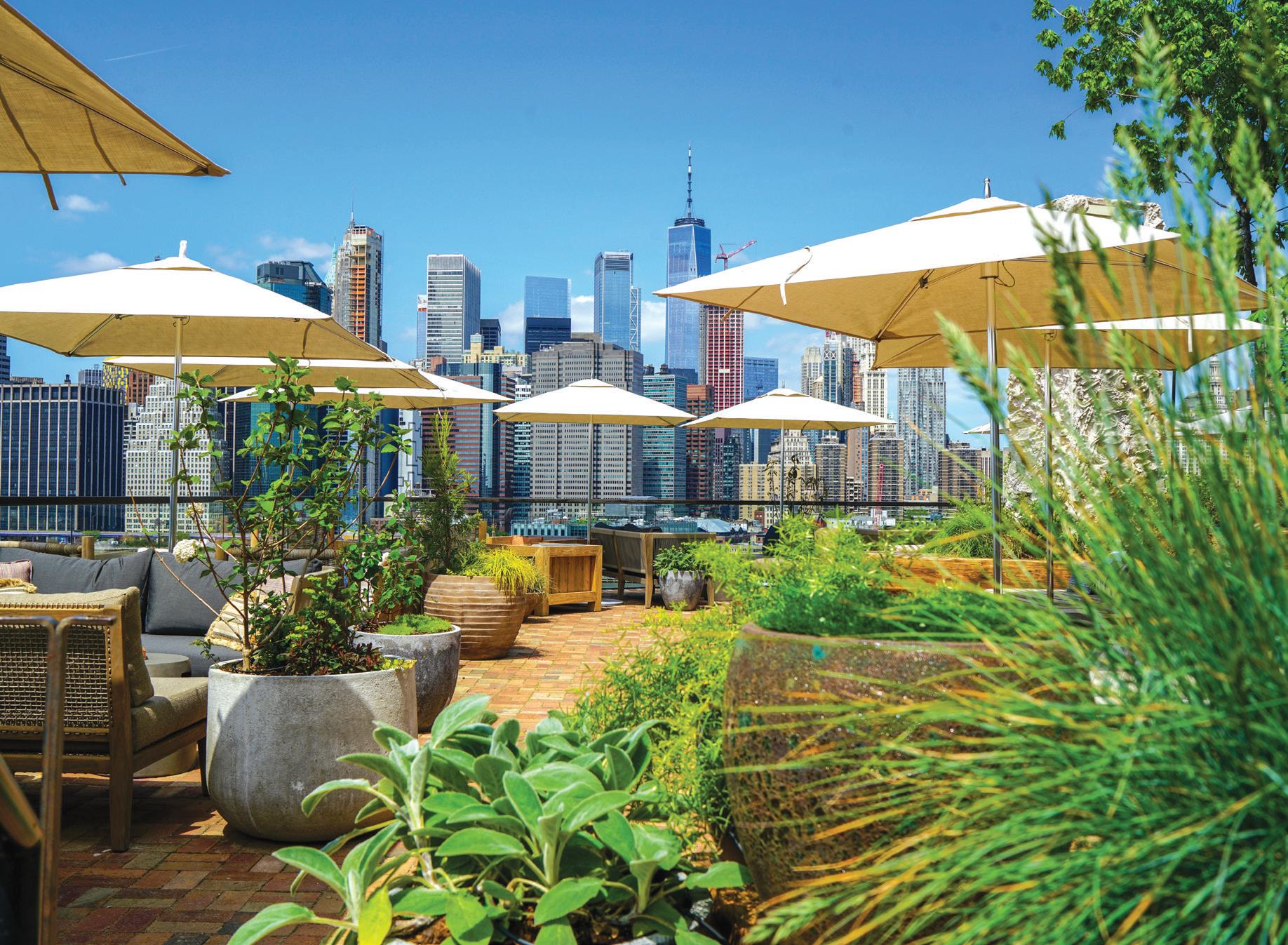
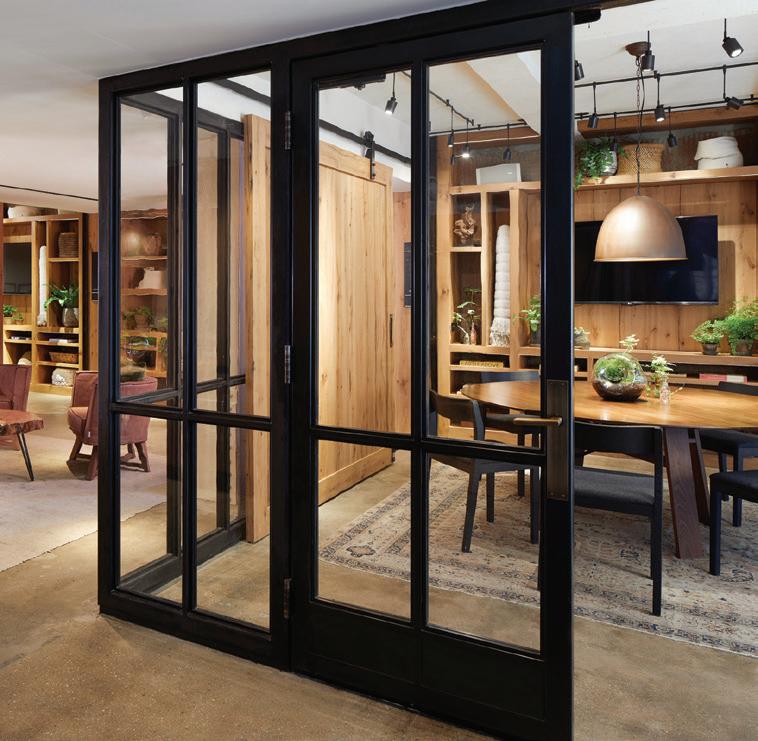

The Dominick General Manager, Edward Shapard, says a genuine commitment to sustainability is not only good for the planet, it is increasingly important to guests.
“Today’s travellers are looking to stay at hotels that help them reduce their environmental impact and provide a local experience,” he says. “As this consumer intention continues to grow, we are continuing to amplify our efforts to seamlessly combine luxury with sustainability.”
As part of the hotel’s commitment all major heating, ventilating and air-conditioning units follow schedules, which
allows for decreased energy consumption; 90 per cent of lighting has been switched from halogen or fluorescent to LED, which has decreased heat emissions from 80 per cent to about 10 per cent; and a food-waste management system funnels refuse into Manhattan’s sewage, reducing landfill waste.
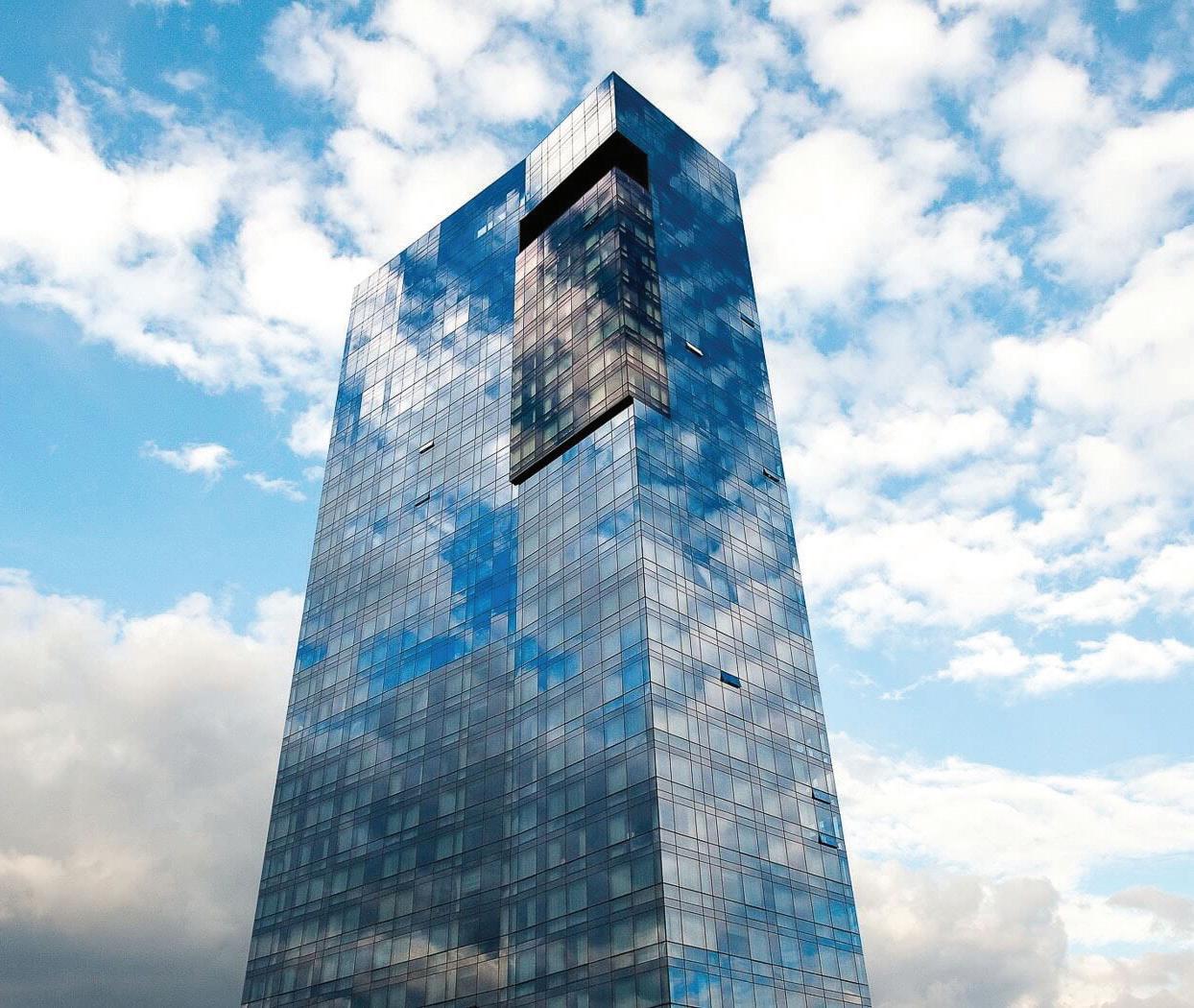
The food waste system is run by ORCA, touted as the leading technology in environmentally friendly waste management. It works by using air, along with water and microbiology to turn food waste into an environmentally safe liquid.
Shapard says keeping abreast of new and emerging technologies is critical to maintaining the hotel’s lofty green standards.


“As technology improves we look to stay on the cutting edge, constantly looking to evolve our initiatives and programs in lockstep with the trends,” he says. “For example, we are working to complete the conversion of all lighting to LED, applying this to the entire building to make The Dominick as energy efficient as possible.”
To be sure, cutting-edge technology is a long way from paper straws, but actions big and small are required to better protect our environment. And while the so-called concrete jungle is already an extraordinary travel destination, the lure of a green jungle is surely even stronger.
AN EXCLUSIVE WELLNESS JOURNEY AT KOKOMO PRIVATE ISLAND FIJI

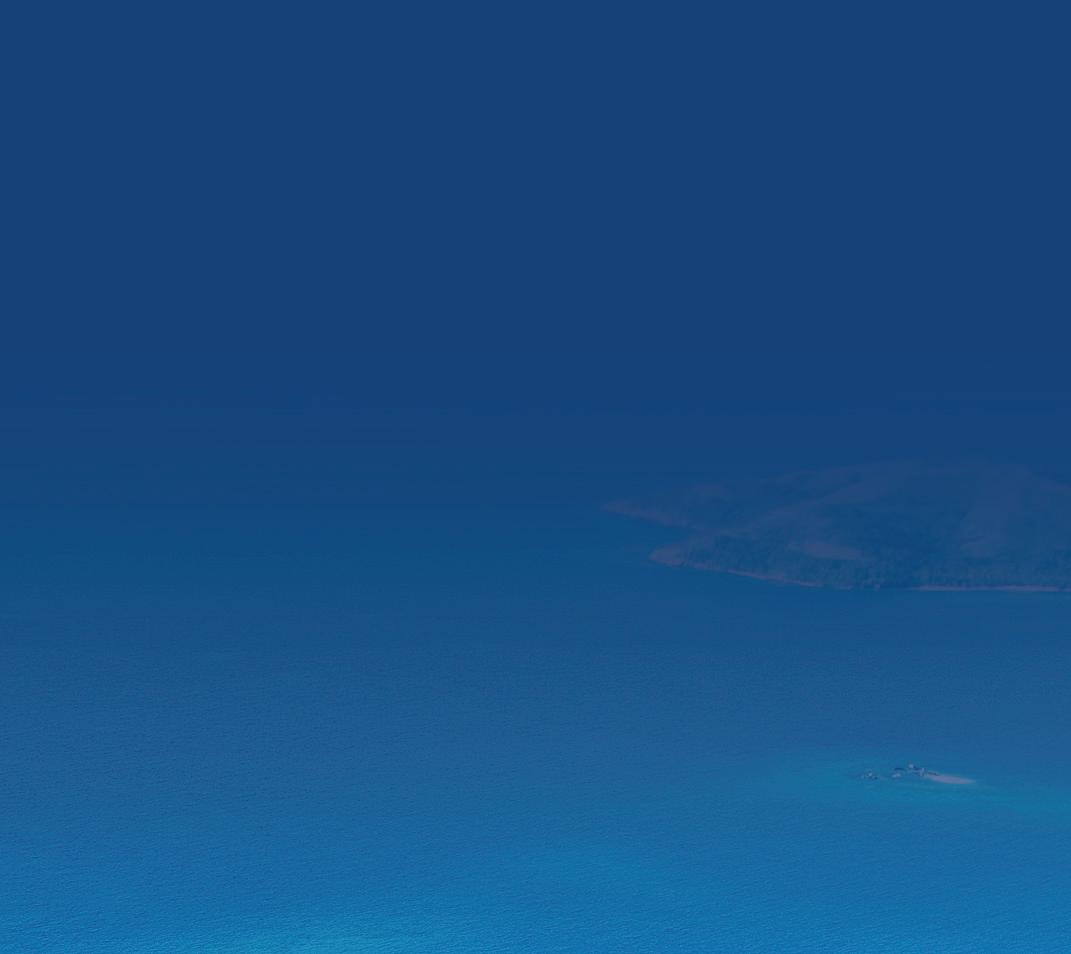
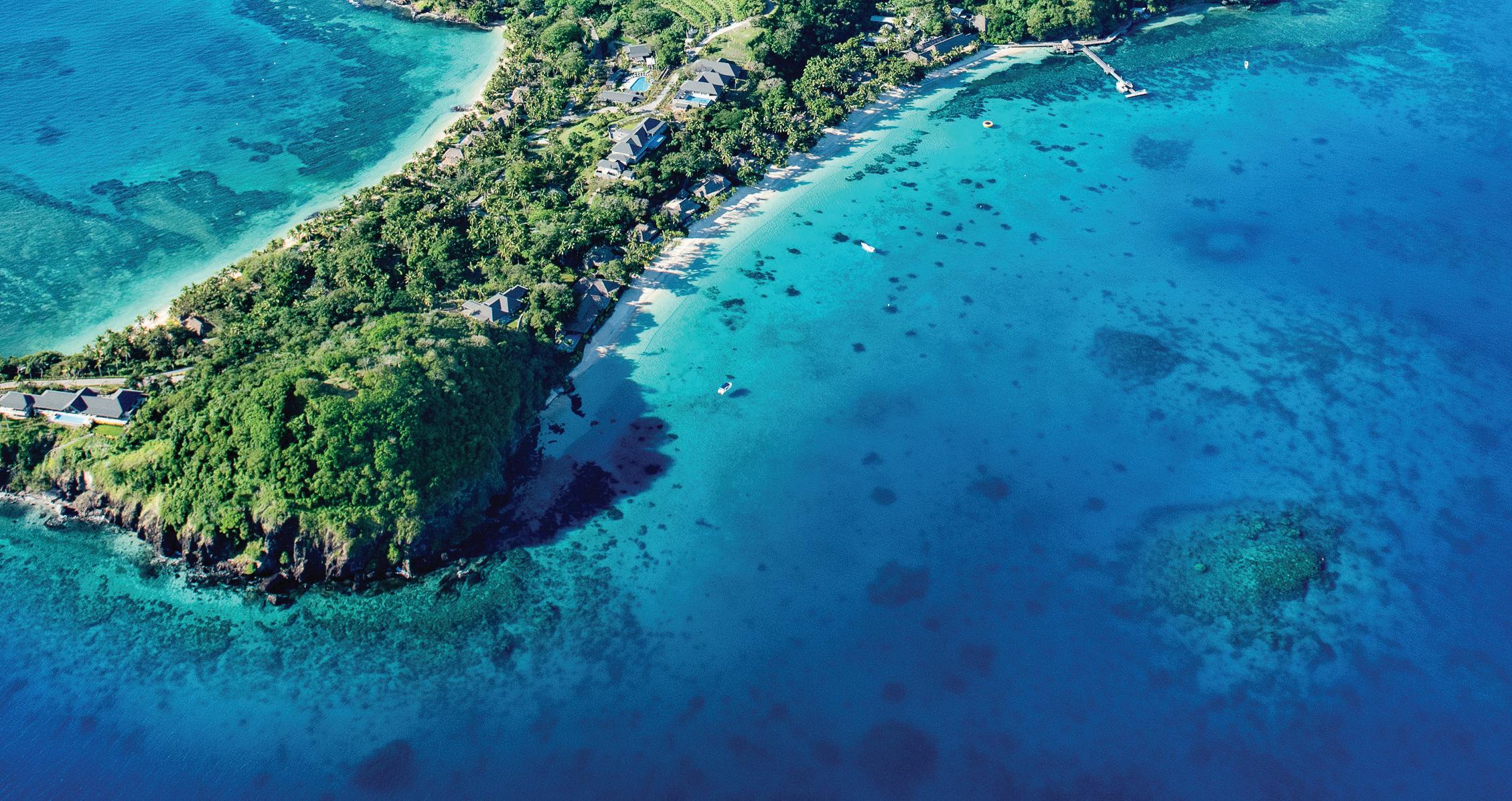
Surrounded by nature in its most pure form, Kokomo Private Island is the perfect luxury haven for those seeking restoration, rejuvenation and relaxation. Under the guidance of Australian spa consultant Naomi Gregory, Kokomo has curated a dedicated program of activities, spa treatments and nutritious cuisine, as well as an array of visiting practitioners, to assist you in reaching your wellness goals.
5 NIGHTS
$10,899
PER PERSON / TWIN SHARE TRAVEL DATES


27 JANUARY -
1 FEBRUARY 2020 IN PARTNERSHIP WITH

Each journey begins with Kokomo's Resident Health Practitioner, Kim Campbell (above) . Specialising in natural therapies, Kim holds a Bachelor of Health Science in Naturopathy and a Diploma in Health Science for Clinical Nutrition. In your initial consultation, Kim will take a holistic approach to your health, recommending nutritional meal plans, herbal remedies and restorative therapies.
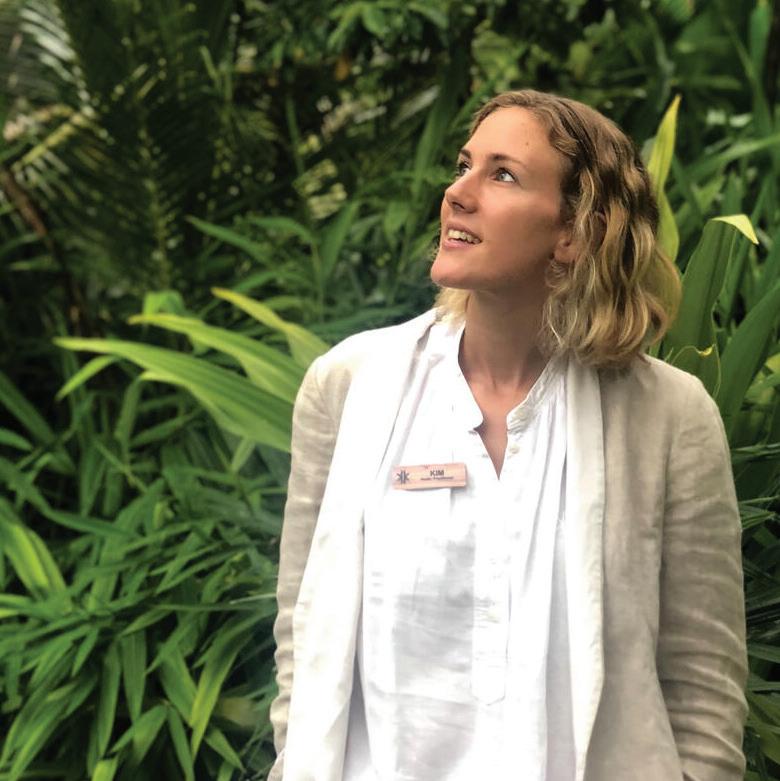
Guests interested in diving deeper into wellness are encouraged to explore one of Kokomo's three dedicated Wellness Journeys. Each program focuses on a different wellness journey, tailoring movement sessions and spa treatments to assist you in reaching your personal wellness goals.

Designed to connect you to the natural beauty of the island while embracing traditional Fijian nuances, Kokomo’s Yaukuve Spa Sanctuary is nestled in a lush, tropical garden. The relaxation pavilion is located at the heart of the spa and serves as a place to start your journey and relax between treatments. Nine treatment rooms and a wet and dry hammam offer head-to-toe pampering. Spoil your senses with a tailored treatment or browse our delectable menu. Treatments harness the luscious Sodashi skincare range and include rejuvenating facial therapies, Pacific Mastery massages, restorative Kokomo journeys, and the revival of hands and tired feet.
Through its yoga, fitness and movement offering, Kokomo has made it easy to disconnect from your schedule and make time for fitness that will reawaken your senses and help you to reconnect with yourself. Relish the benefits of the physical experience, and reap the mental and emotional rewards from a little ‘you’ health time. Whether you plan your stay around an itinerary full of workouts and wellness experiences or whether you’re more likely to opt for the occasional yoga class, small changes that positively impact your wellbeing can have a lasting effect.
Breakfast,
Non-alcoholic beverages
Non-motorised watersports
Inner reef motorised watersports
THE DAYS OF BOX-TICKING, SURFACE-SKIMMING, HIGHLIGHTCHASING HOLIDAYS ARE OVER. FROM MAKING HANDICRAFTS WITH LOCALS IN MOROCCO TO OFF-THE-BEATEN-PATH PILGRIMAGES IN CHILE AND DECADENT AROUND-THE-WORLD JOURNEYS, HERE ARE 20 IMMERSIVE TRAVEL EXPERIENCES THAT WILL TAKE YOU DEEPER IN 2020
 Words by MADELIN TOMELTY
Words by MADELIN TOMELTY
Let’s start this list with a bang, shall we? Few things could be more exclusive – and luxurious – than travelling by private jet, and this South American journey from tour operator Captain’s Choice will take you from the earth, up to the heavens and back down to sea on trains, planes, automobiles, ships and even a helicopter.
The ultra-luxurious 23-day adventure, departing Sydney in May, kicks off in Argentina, where a secret, closed-door dining experience, private polo match and Rojo Tango show await.
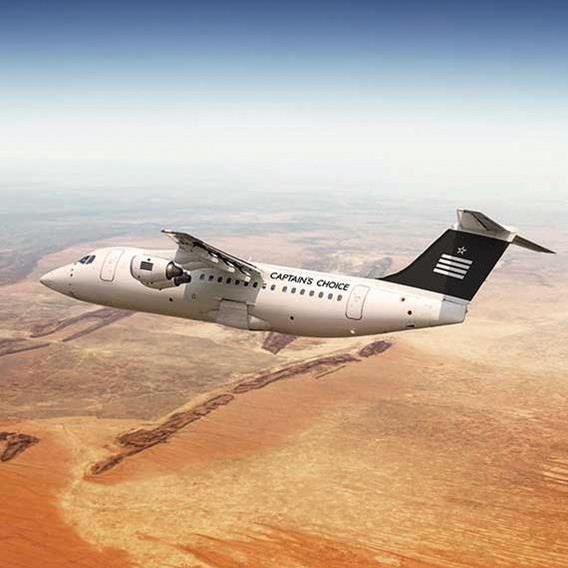
Back up in the air, take a side trip to Iguassu Falls for lunch with a oncein-a-lifetime vista of the Devil’s Throat, and then head to Brazil’s festive and deeply religious Rio de Janeiro, where jet-setters have the opportunity to visit Christ the Redeemer unencumbered by crowds. Take in a bird’s-eye view of the city from a helicopter – as you do – before landing at Sugarloaf Mountain and then witnessing a private, Carnival-style samba show.
In Panama, cruise through the Panama Canal and take a leaf out of Charles Darwin’s book, albeit in more luxurious lodgings, sailing the rugged Galapagos Islands on a privately chartered, four-night cruise. But the immersive extravagance doesn’t end there. Meet renowned archaeologist Jean Jacques Decoste and board the luxurious Hiram Bingham train to Machu Picchu before arriving in your final stop before returning home – Easter Island, where time appears to have stood still. This journey is the true definition of a trip of a lifetime, and worth every moment of the postholiday blues you’re bound to experience on your return. captainschoice.com.au
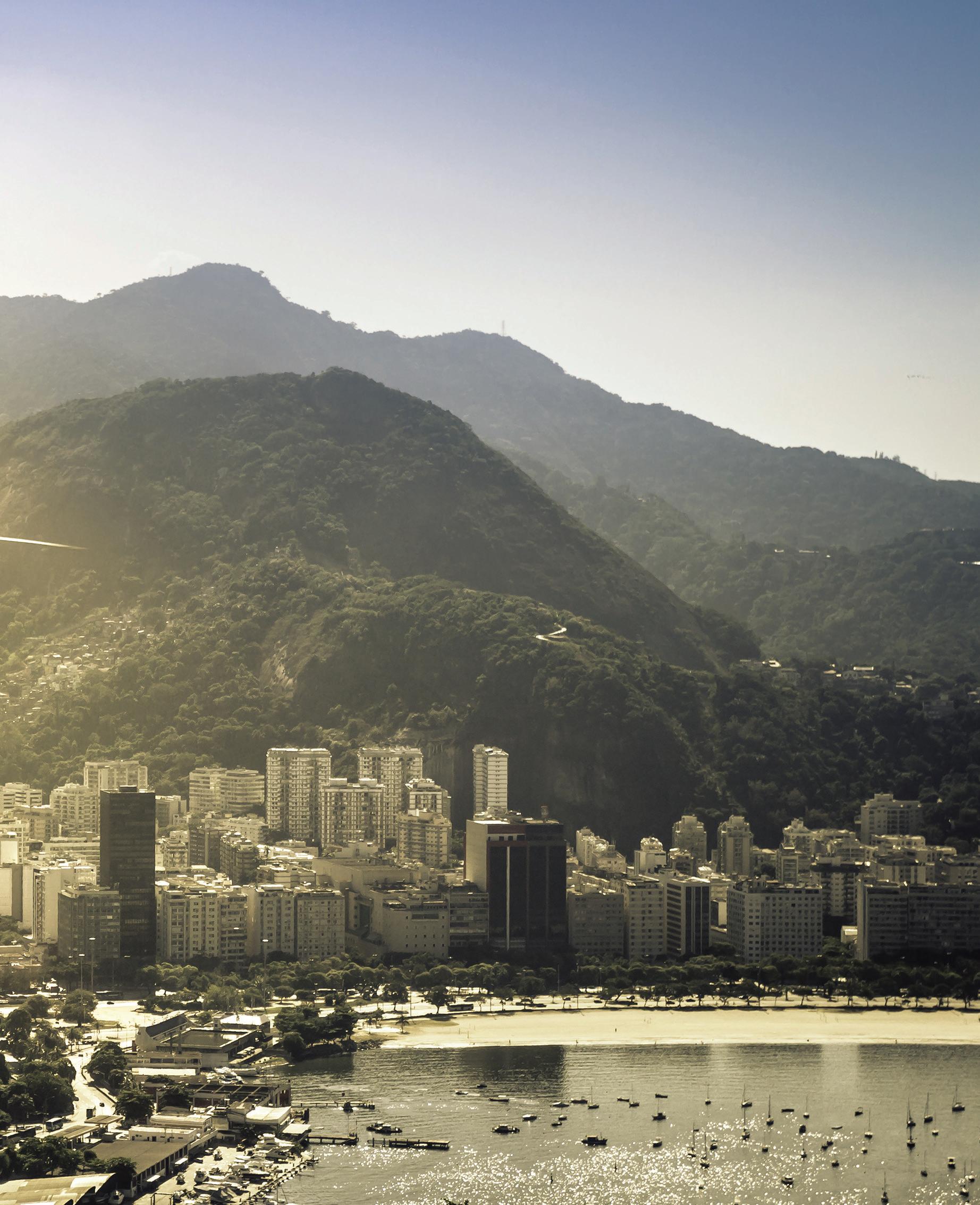
2 CULTURE
Sure, you could visit India’s Pink City of Jaipur on any old day and be charmed by the blush-coloured buildings lining the streets, or you could visit during the holy festival of Holi and encounter an event so kaleidoscopic it makes Mardi Gras look like a scene out of an old black-and-white film.

This is India’s famed Holi Festival, a technicolour celebration marking the arrival of spring, and the joyous new beginnings the season represents after the gloom of winter. This colourful nation doesn’t do rituals by halves, and with the vibrant powder dyes –gulal and abeer – exploding in the streets and covering everyone and everything, it’s hard to imagine another time when India is so abuzz with festive cheer. Think this is something you can get behind? Only in utmost style, of course. Being a personal guest of the Maharaja and the SUJÁN Rajmahal Palace should do the job. On this ultra-exclusive experience, do as the likes of Jacqueline Kennedy Onassis and Princess Diana have done before you, and experience Holi like the VIP that you are. Activities throughout the four-night soirée include attending a party with India’s Royal Family; an exclusive dinner within the iconic City Palace; watching a polo match from the Royal Family’s private box; private appointments with Jaipur’s most skilled fabric makers and craftspeople; and dinners with some of the city’s most elite residents. This rainbow-coloured event is one for the ages. prior.club



Prepare for your blue-blood fantasies to be fulfilled as you rub shoulders with the British Royal Family on this regal adventure in the Scottish Highlands. Members-only luxury travel club PRIOR’s ‘High Art and Highland Culture’ experience transports travellers to the most famous event from the Highland Games circuit – the Braemar Gathering – to experience Highland culture at its most riveting.
The 900-year-old celebration, taking place every year in the north-eastern village of Braemar near Balmoral, attracts crowds from all corners of the world. Not even Her Majesty the Queen is immune to the ceremonious excitement of the occasion – reputedly her favourite day of the year – with the Royal Family having attended every year since 1848.

Enter the ring of pipe bands, tartan-a-plenty and a full day of fierce competition as you watch the Scots track-race, ‘toss the caber’, ‘put the stone’, ‘throw the hammer’ and then throw themselves into dances and a tug-of-war battle. The next day, the royal treatment continues with Sunday mass at 9thcentury Crathie Kirk with the Royal Family, and opportunities for a distillery tour and whisky tasting, golfing on Scotland’s highest course or mountain biking.
Experience a ‘ceilidh’ (evening of folk music, dancing and storytelling) at Mar Lodge Estate and even dine in a bothy – a traditional moss-covered rest house nestled in the Scottish wild. All the while, the magnificent, verdant hills are on full display, offering plenty of opportunities to ramble through dramatic Highland landscapes, just as Queen Lizzie likes to do. Throughout the experience you’ll lodge at The Fife Arms, a 46room boutique hotel that was recently restored and redesigned by Europe’s most dynamic art couple, Manuela and Iwan Wirth, and be privy to over 12,000 priceless pieces of art by venerable artists including Pablo Picasso. Bring your appetite, and an adventurous spirit – and do the Scots proud. prior.club

4 FOOD
Take private dining to new heights as you dig into a delicious multi-course Tuscan meal in the presence of a formidable masterpiece: Michelangelo’s David.

But first, scrub up on your history, with a tour of David’s home – the Galleria dell’Accademia – led by the ultimate Florence insider, Italian nobleman Count Vittorio Carioni, whose Florentine roots date back to the 15th century. Take in the museum’s scores of famous Renaissance artworks with exclusive viewings of Michelangelo’s unfinished sculptures, Prisoners, rare paintings by Sandro Botticelli, and one-of-kind masterpieces from Bartolomeo Cristofori, the inventor of the piano. But it’s coming faceto-face, or rather, face-to-torso with the man of the hour, David himself, that will make the biggest impression. With David as a humble guest, sit down to a Tuscan feast prepared by one of the best chefs in Florence, with Steak Florentine, ribollita and regional delicacies such as the city’s famous schiacciata alla fiorentina – a sweet sponge cake filled with cream – on the menu. As far as dinner dates go, we reckon this one will be hard to top. ifonly.com
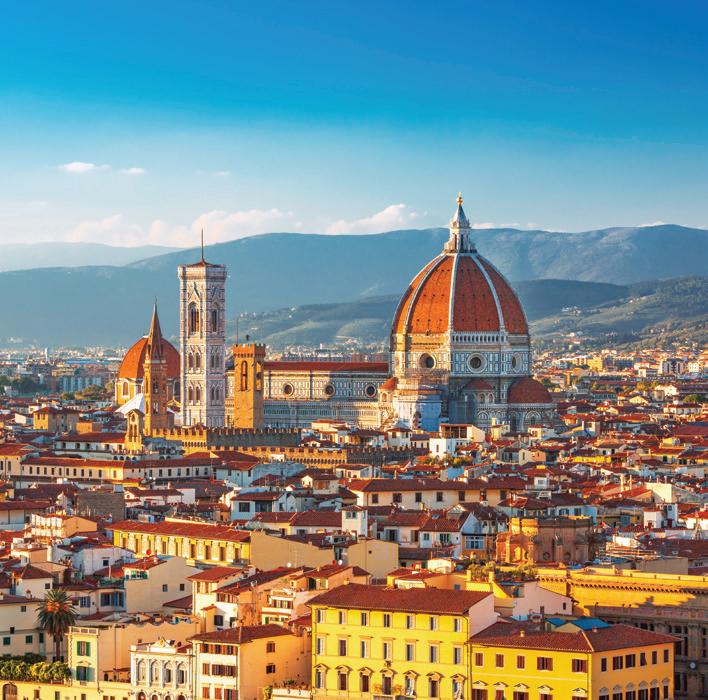
With the catastrophic effects of Climate Change being felt around the world, it’s no wonder more and more luxury travellers are seeking out philanthropic experiences that allow them to give back to the destinations they visit.
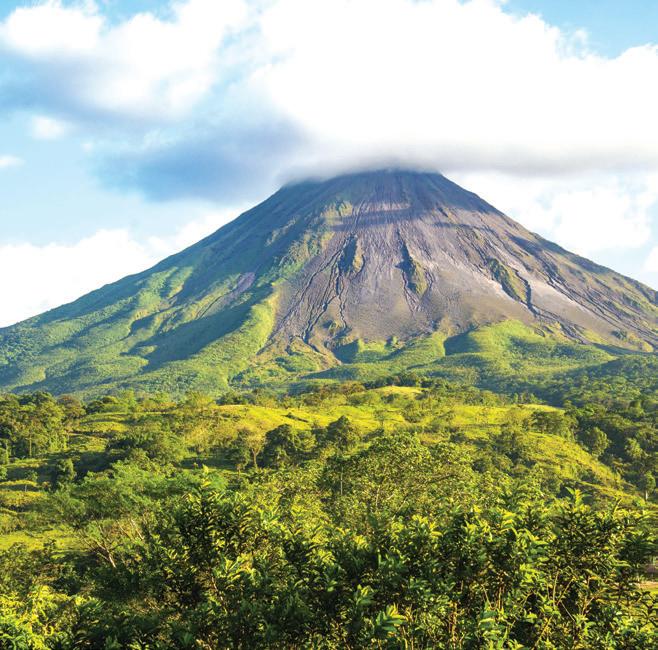

When it comes to conservation, few experiences would make more of an impact than one where you accompany a world-renowned conservationist, evolutionary ecologist and biologist for the day. Impact Destinations’ journey through Costa Rica sees travellers teaming up with Daniel Janzen, aka the ‘Darwin of Conservation’, to assist him and his team of parataxonomists. Beginning with a scenic private helicopter ride over Area de Conservacia Guanacaste, fly around craters and down into jungle valleys, soar over waterfalls and observe geothermal activity with an expert guide by your side. Down on earth, document forest specimens, take photos and learn how to record DNA samples, before enjoying an enlightening dinner full of unbelievable stories from Daniel’s career.
After dark, it’s back into the forest for another unforgettable moment. The sounds of the night forest have been scientifically proven to bring the mind into the here and now, and with this night orchestra as your soundtrack, you’ll witness hundreds of moths, butterflies and other insects dance in a moving spectacle, as Daniel conducts with a fluorescent baton. impactdestinations.com

Wellness gurus, this one’s for you. New Zealand’s breathtaking Southern Alps paint a magnificent backdrop for what is considered one of the most transformative wellness retreats in the world.
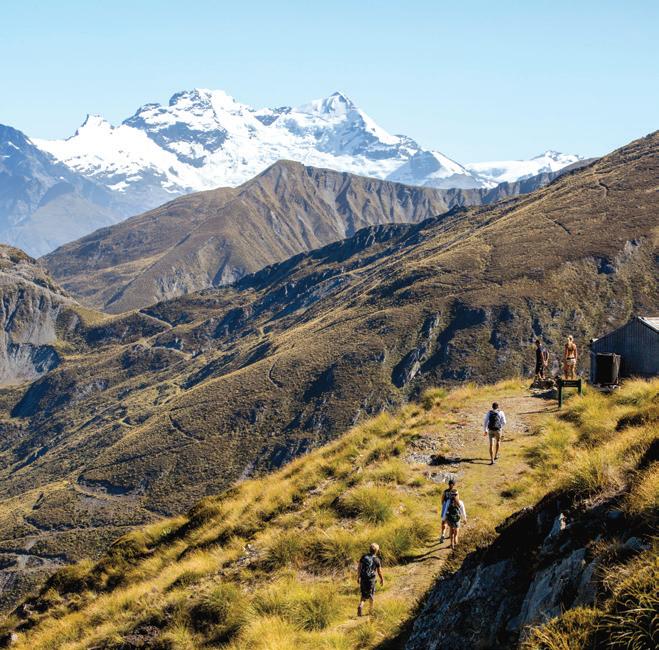

At Aro Ha, the mission is to rejuvenate the human spirit. No easy feat, right? Well with Aro Ha’s team of experts guiding you every step of the way, this goal is within reach, and the process begins by placing your smartphone out of reach.
During this unparalleled retreat experience, all aspects of natural health are addressed – mind, body and spirit – as you disconnect from technology and reconnect with your inner self. The retreat suggests that for every participant, their inherent potential lies dormant, just waiting to be awakened through positive daily habits, and past participants have spoken of leaving Aro Ha not just leaner, stronger and more flexible, but also calmer and more present with a clearer head and a stronger sense of direction.
Sunrise yoga and subalpine hikes that fully immerse guests in nature take place each day, along with regular mindfulness practices and curated activities, such as informative cooking classes, strength training sessions, relaxing infrared saunas and daily massage, designed to transform from the inside out.
aro-ha.com

Not even Amazon’s artificial intelligence can help you with this one, but we know of another Alexa that can.
ALEXA J is a spectacular 38-metre, single-cabin sailing vessel built for two, offering tailored cruises around Greece’s magical Ionian islands, considered one of the best sailing destinations in the world.

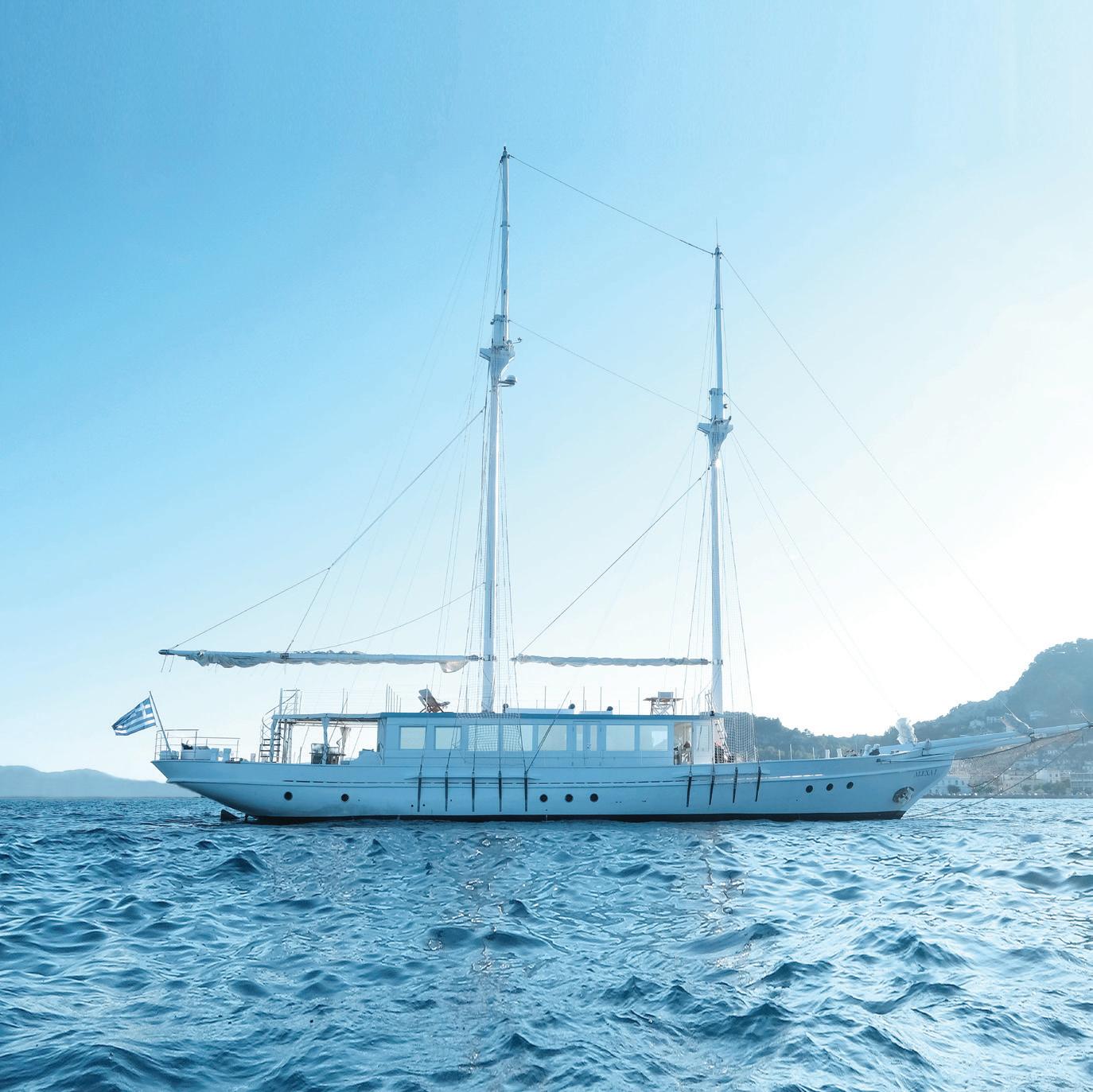
Sit back with a glass of bubbles on the boat’s immaculately designed main deck, where several open lounge areas invite languid afternoons, or head down to the lower deck where a big screen TV and library stocked with travel books and maps await. Not that you’ll need any travel inspiration with a paradisiacal, 360-degree panorama ever present, and the beautiful islands of Corfu and Zakynthos – home to Instagram favourite Shipwreck Beach – a stone’s throw from your floating home.
And forget the stock-standard galley found on most yachts –ALEXA J’s has been replaced with a modern open kitchen, designed for gourmands who like to cook or, rather, be cooked for. A dedicated gourmet chef whips up culinary delights for you and your better half at breakfast, lunch and dinner, and a fully stocked bar with quality wines and spirits from around the world are yours at any time, at any place, be it on the yacht, the beach or under the stars.
A total of seven multilingual crew accompany you on board, but try not to play favourites with the spa therapist, who is on hand to pamper whenever a rub-down becomes a higher priority than looking out at the endless blue horizon. It’s a tough gig, but someone’s got to do it.

alexaprivatecruises.com/alexa-j

8 THEATRE




Few countries can claim the tumultuous, storied and fascinating past like Russia can. From its Imperial legacy of tsars and revolution of dethroning, murder and witchcraft (Rasputin, we’re looking at you) to a subsequent seven-decade era defined by Communist rule, the intrigue of Russia’s history is immense.
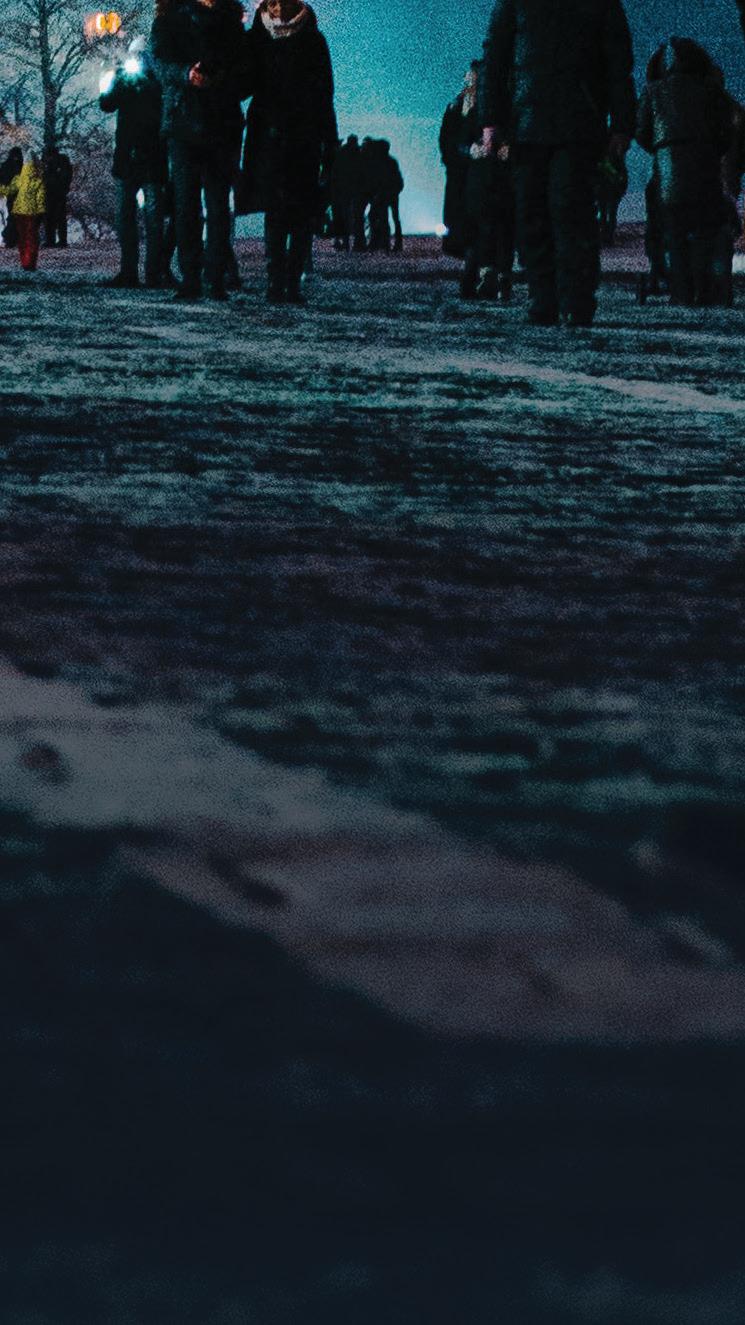
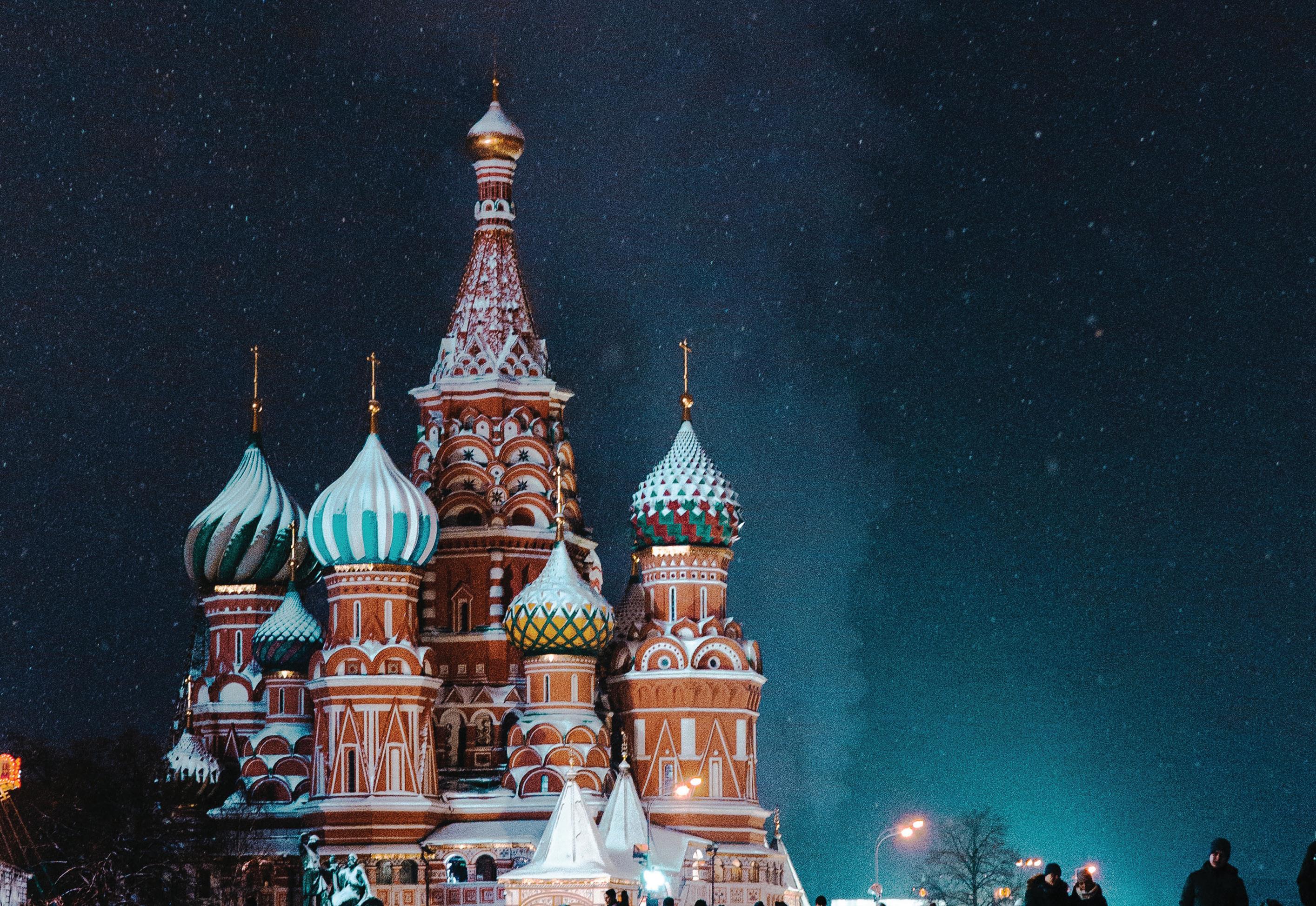
On this historical Moscow tour, you’ll be driven around in a luxury car as you travel back in time to Imperial Russia, beginning with a private guided tour of the formidable Kremlin, now the seat of government. At Russia’s national treasury, the Armory, feast your eyes on historical artefacts, exquisite works of gold and silver, legendary Faberge eggs, knights’ armour and weaponry, bejewelled crowns and the opulent thrones of the tsars. Take a break over flaky pirozhki and almond croissants at the chic, neo-Baroque Café Pushkin, housed in a magnificent Baroque mansion, and as the sun sets, don your finest attire for a night at Russia’s grand Bolshoi Theatre. Learn about the famous opera stars and dancers who have graced its stage on an exclusive backstage tour before settling in to witness an unforgettable performance. And to top it all off? But of course, it’s got to be dinner at the unbearably elegant Bolshoi Restaurant, where live jazz accompanies diners as they indulge in potato blinis with salmon and caviar, and gnocchi with lobster.
priceless.com


FESTIVAL
Vast, remote and mysterious Mongolia is one of the world’s most coveted adventure destinations, home to seemingly never-ending, untouched landscapes and a fascinating, centuries-old nomadic culture.

One of the country’s most exciting celebrations is the Golden Eagle Festival in the far west of the country, where Kazakh horsemen test their birds for speed and accuracy, competing for the prized golden eagle. On this rare, 12-day small-group journey by Abercrombie & Kent spend two days taking in the spectacle of this competition and experience Mongol hospitality and traditions first-hand, with award-winning freelance photographer and published author Palani Mohan as your guide. Discover Ulaanbaatar’s vibrant textile heritage, sleep in a traditional ger, stargaze in the harsh but hauntingly beautiful wilderness of the Gobi Desert, hike through craggy canyons and marvel at Buddhist monasteries in one of the world’s last travel frontiers. You wanted cultural immersion, you’ve got it. abercrombiekent.com.au
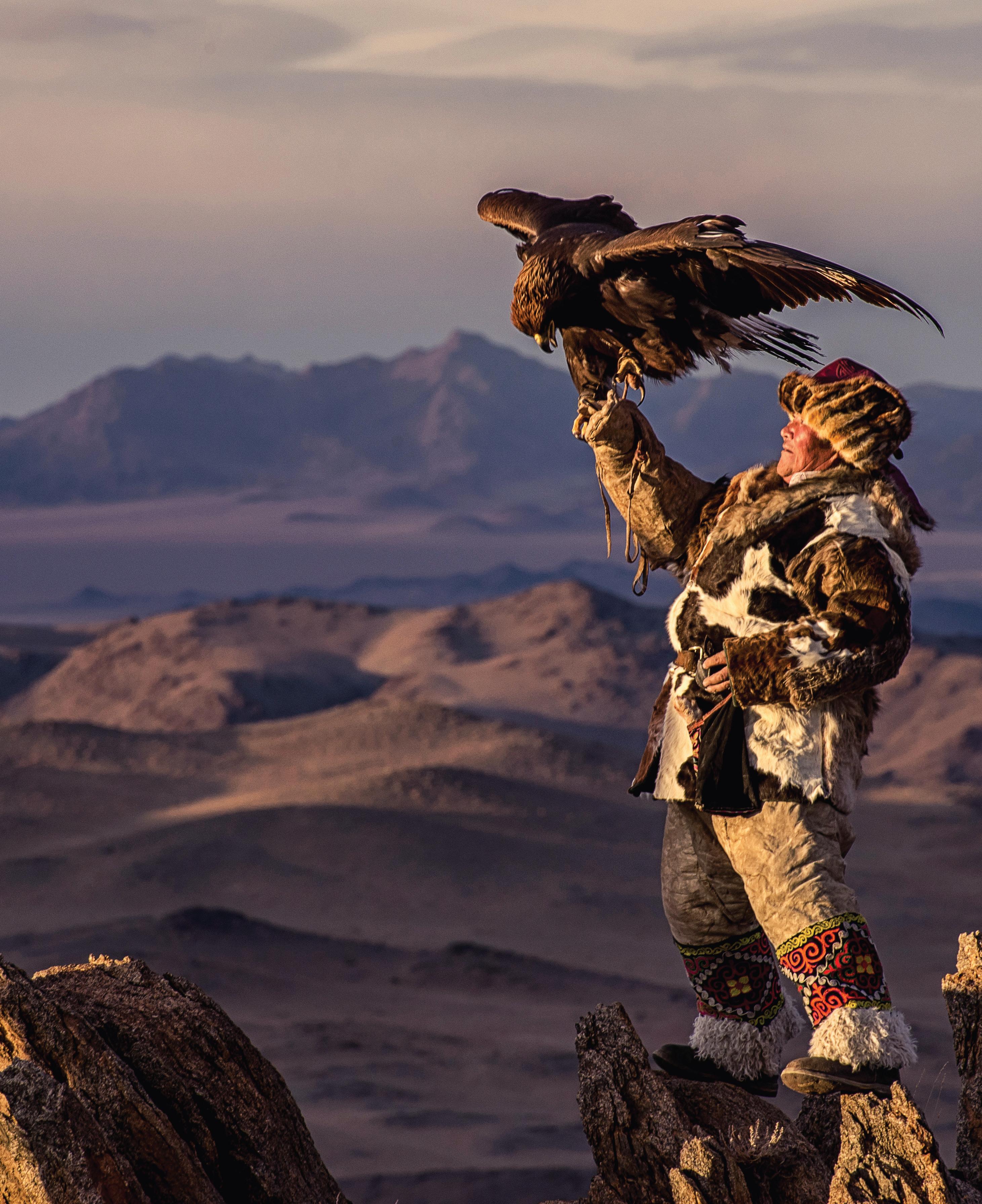
If you’re the kind of traveller that loves to explore local markets, fishing out elaborate textiles, handmade ceramics and trinkets made by local craftspeople, prepare to get giddy over this 12-day tour of Morocco.
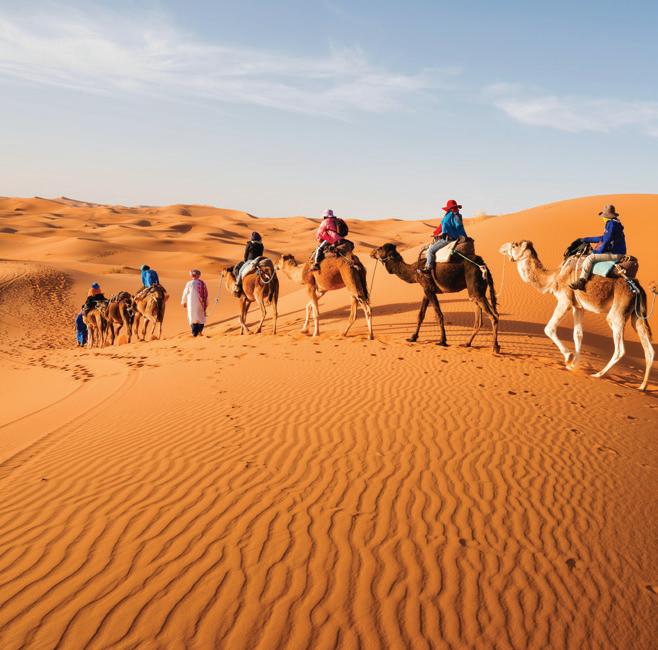
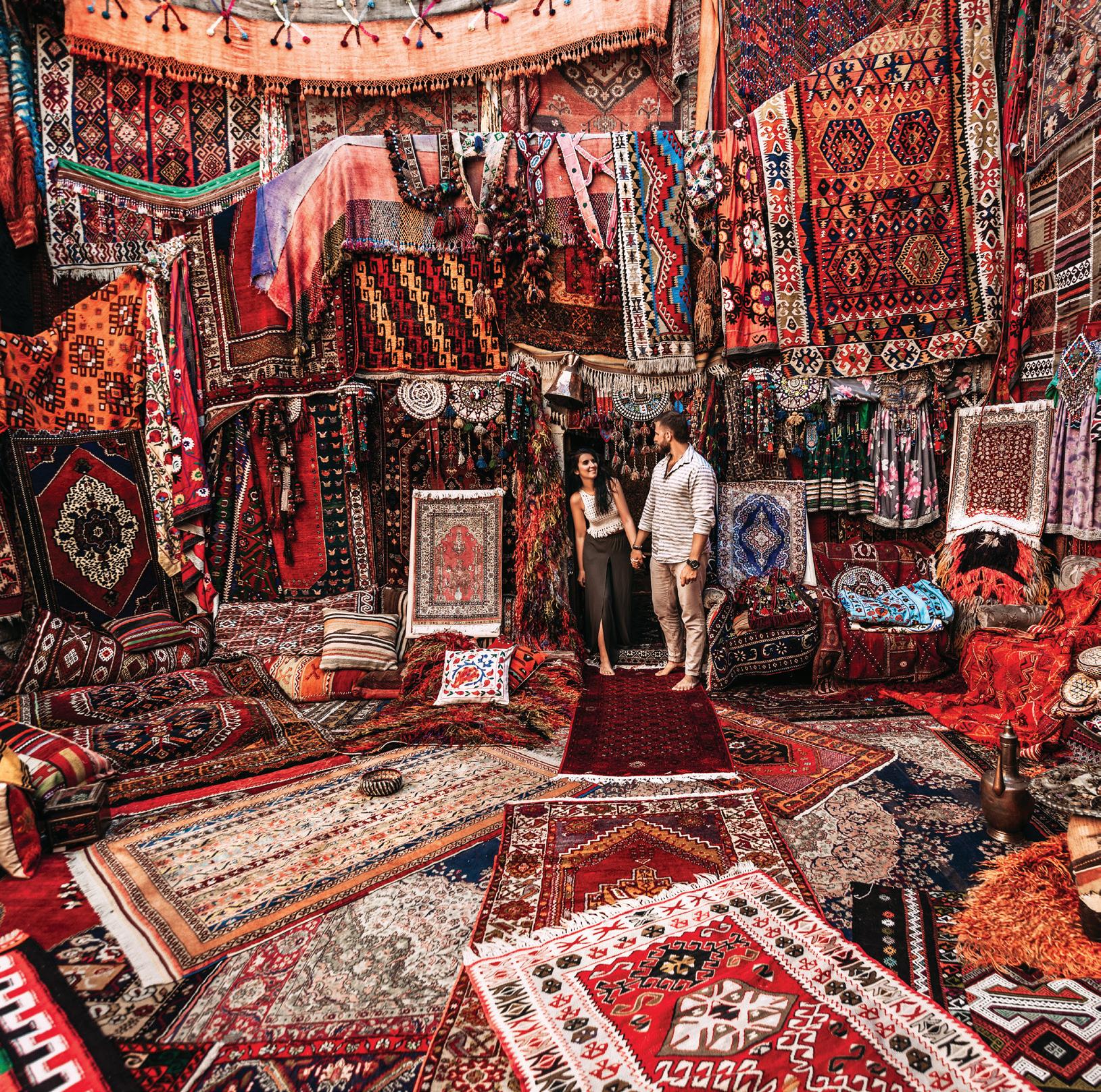

It’s arts and crafts all day, every day as you immerse yourself in Morocco’s seven timeless handcrafts, meeting with master artisans who continue to practice their time-honoured traditions. Design your own kaftan under the guidance of a master-weaver; witness an exquisite Moroccan rug come to life; learn to craft leather slippers, from dyeing the materials to sewing the shoes; shape a tagine clay pot with a master potter; and witness the intense focus required to craft delicate mosaics of zellige tiles.
As you find your inner artist you’ll see the north African country’s culture, history and artistry unfold, travelling through the mountains, valleys, desert and coastline. On the itinerary is a visit to the cosmopolitan, seaside city of Casablanca as well as the famed hubs of Fes and Marrakech. You’ll also take the Caravan Trail to the Sahara Desert, where you’ll spend a night in a luxury camp beneath the starry skies. With a captivating culture that never fails to cast a spell on all who visit, we challenge you to not to be enchanted by magical Morocco. zicasso.com
Regularly ranked as one of the happiest countries in the world, Denmark’s focus on supporting the common good means equality, social welfare and safety are valued more highly than in many other countries, and its inhabitants experience higher overall levels of satisfaction and contentment as a result. Even in the corporate world, the tendency is towards honesty and trust, which means corruption is incredibly low, while the Danish concept of hygge is a constant reminder of the importance of taking time away from the stresses of work to enjoy the good things in life with friends and family.
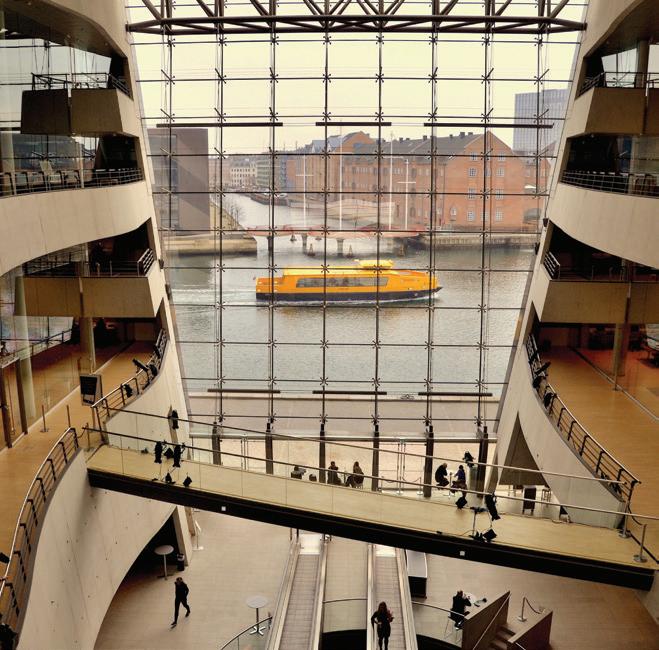
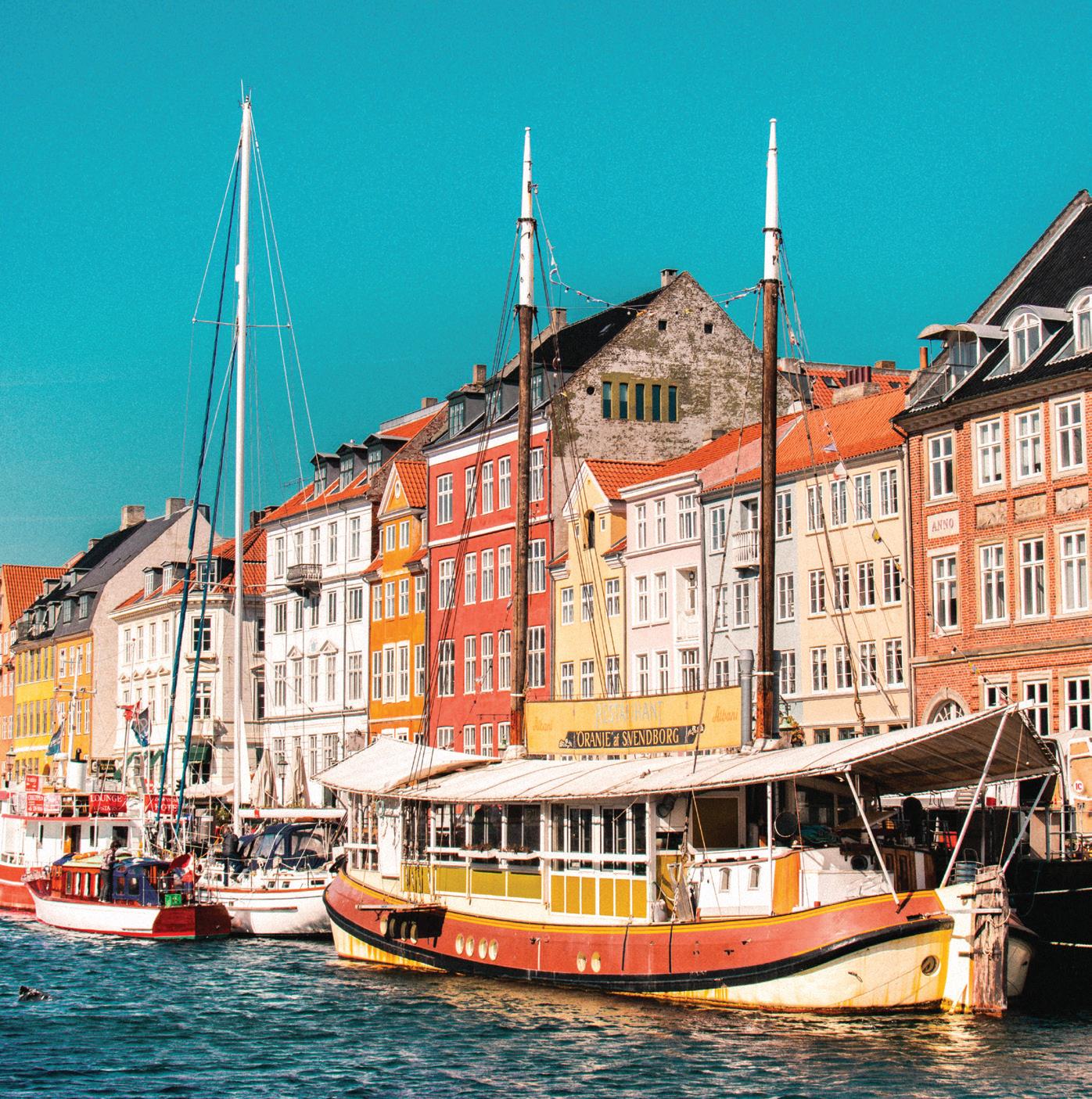
Tour curator Black Tomato’s unique experience from its Bring it Back collection is a full Nordic immersion, designed for those who are burnt out from the rat race. Spending a day in Copenhagen with a Danish journalist known for his promotion of work-life balance and parental leave, visitors embed themselves in Danish culture, witnessing firsthand an exemplary working lifestyle that embraces both efficiency and the human element in equal measure.
Learn how the routine of a high-ranking executive at a leading global organisation in Copenhagen differs from that of other cities where she has lived, and learn how the Danes foster creativity, productivity and motivation over dinner at one of the city’s cuttingedge restaurants. This journey will make you question how you could transform your own life, and business, and even send you on your own hygge journey with a personal plan to integrate the concept into your everyday life.
blacktomato.com

The struggle is real when it comes to finding work-life balance, but leave it to the Danes to find a solution.
Japan might be well and truly in the festive spirit with the recent Rugby World Cup and upcoming Olympic Games, but when it comes to the Japanese art of ninja (shinobi), there’s no fun and games about it.
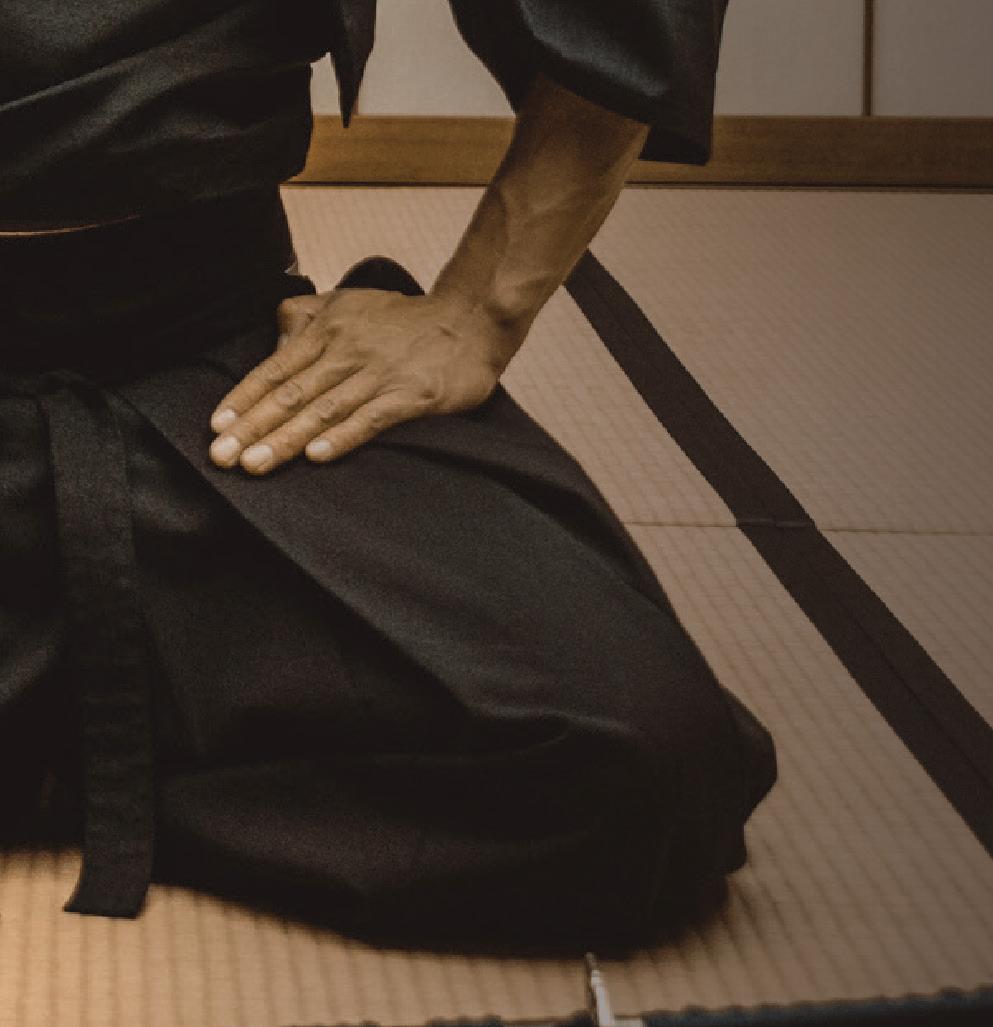
During the 700-year Feudal Japan period, ninjas were covert Japanese spies and experts in the dark arts of espionage and silent assassination. With a history dating back to the 12th century, these masters of deception were fabled to be the descendants of a halfman, half-crow demon called tengu. Fast forward to 2020 and while today’s ninjas may no longer hunt down baddies in the dead of night, they still know their way around a sword, along with the rich history of this mysterious ancient martial art that’s as fascinating today as it was once formidable.


In Black Tomato’s Learn the Way of the Ninja experience, the history of ninja becomes a fascinating conduit for an intensive cultural reconnaissance mission. Travellers embark on a 10-night journey from Tokyo to Kyoto uncovering the ancient ninja and sumo culture and their fascinating traditions, all the while exploring The Land of the Rising Sun’s breathtaking landscapes.
Earn the ultimate bragging rights as you don an authentic ninja uniform and receive martial arts lessons from one of Japan’s most legendary sensei, even handling ninja weapons such as throwing stars and blowguns. Go deeper and learn about the spiritual side of the discipline, including meditation, ancestor veneration and the concept of ‘ku’ (no-self), and practice ninja techniques such as stealthy steps, hardened hands and the ‘inner eye’.
Expect to train like a sumo wrestler, try your hand at making ramen and the edible art that is amezaiku candy, get into the mind of a gadget nerd at electronics mecca Akihabara, witness indescribably beautiful temples, experience a traditional ryokan and even see the famed Mount Fuji.
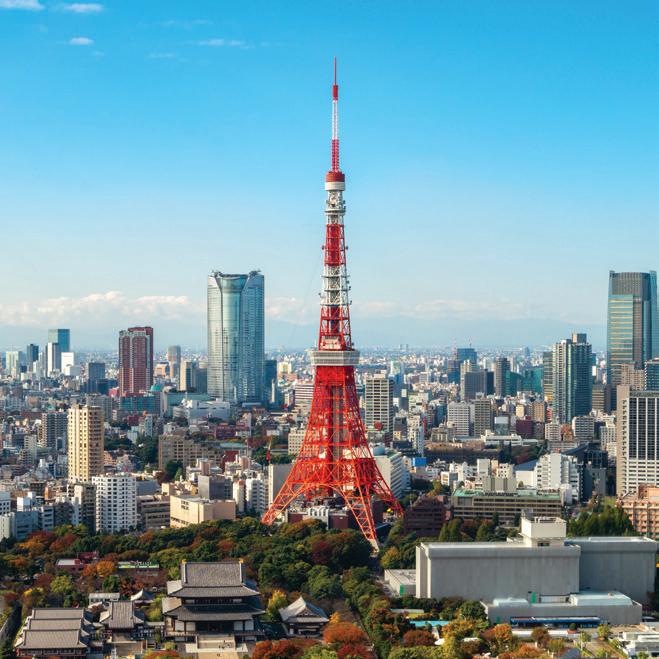
Your Japanese mission, if you choose to accept it, will certainly give you a few stories – and maybe even some war wounds – to take to your next dinner party.
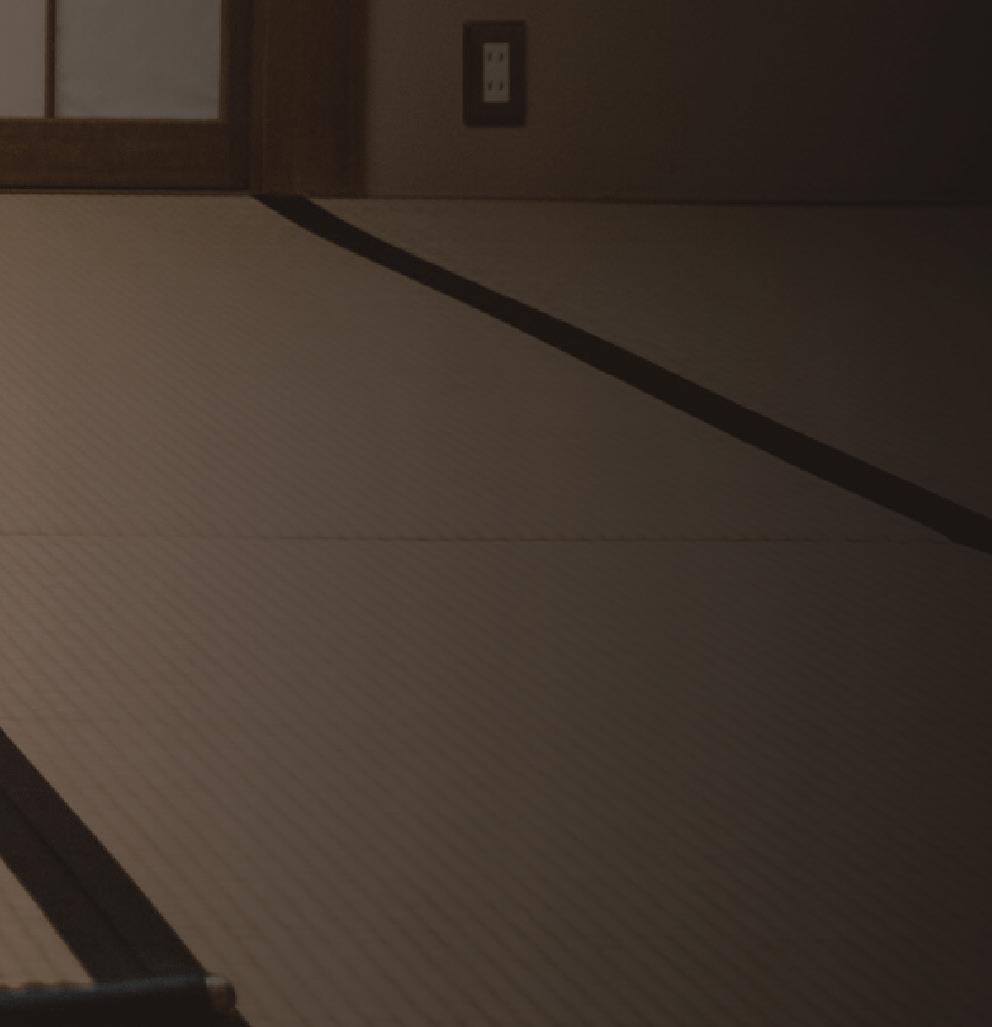
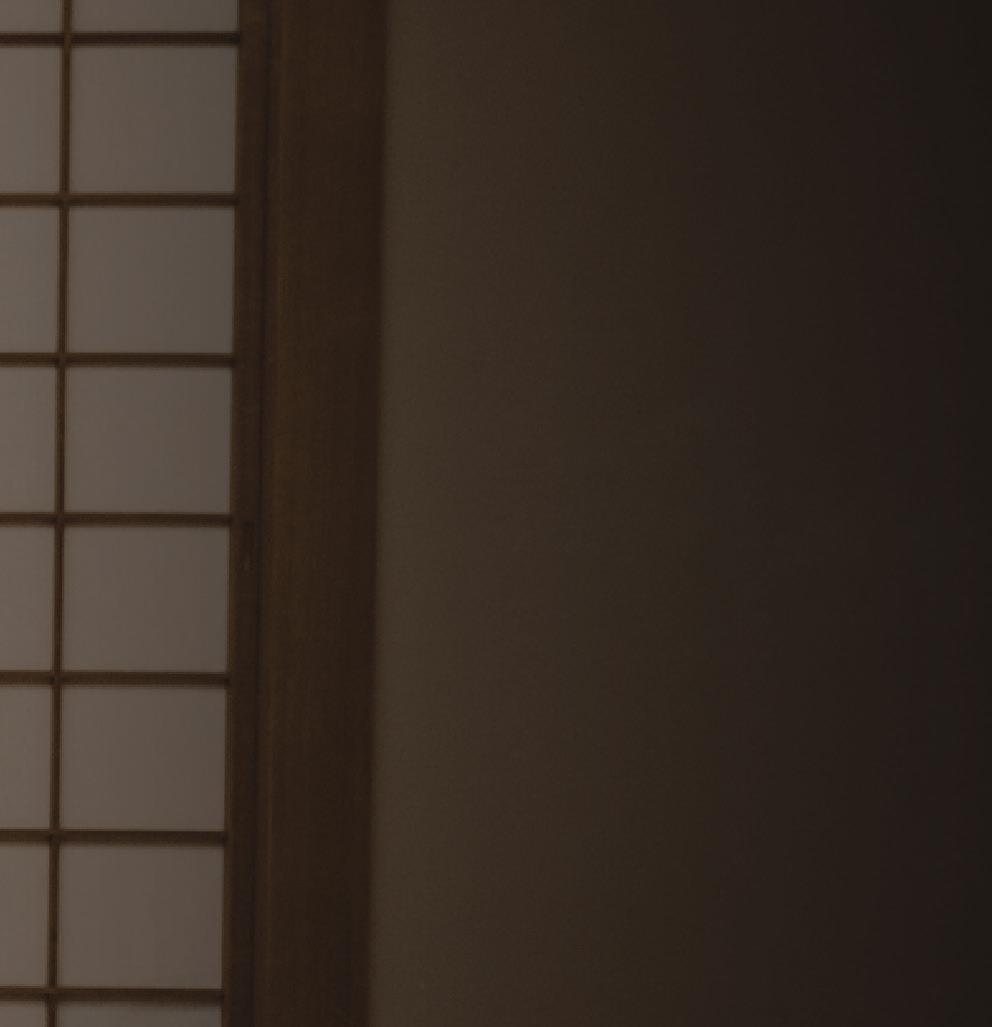
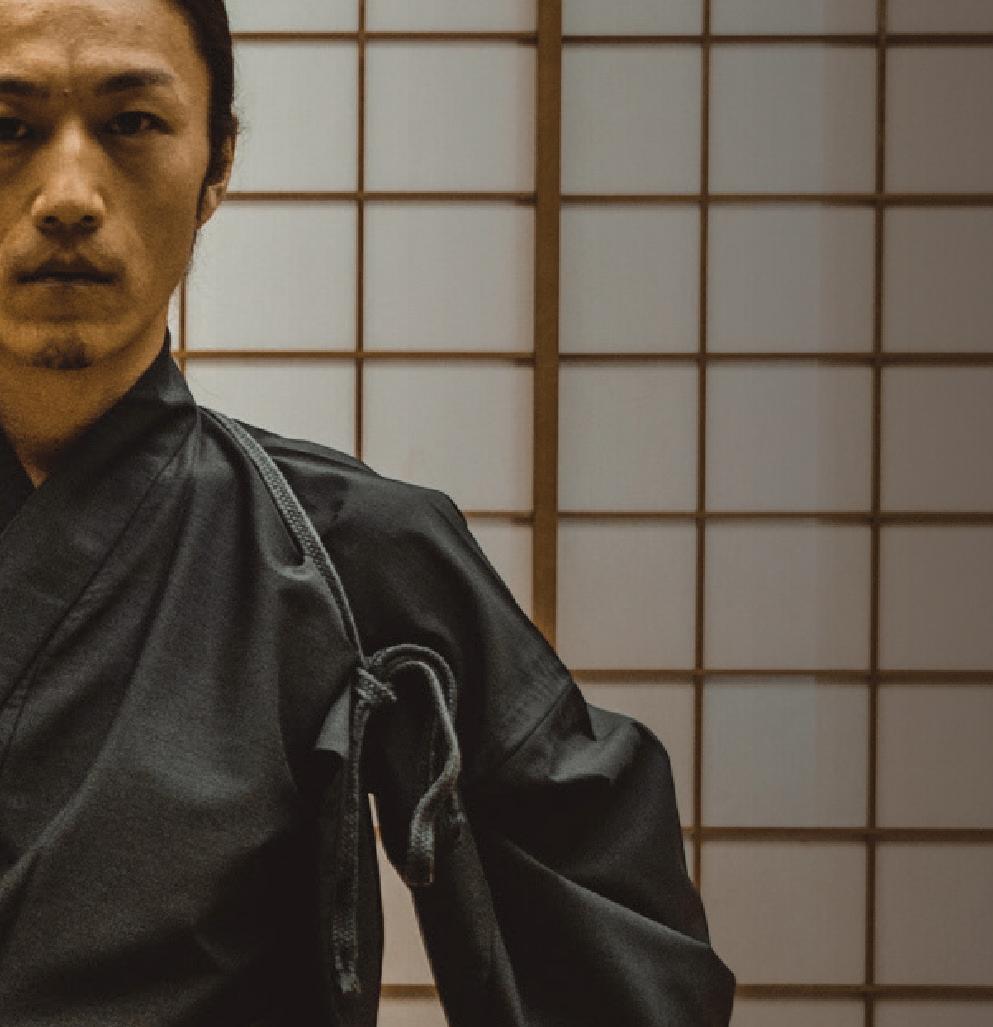
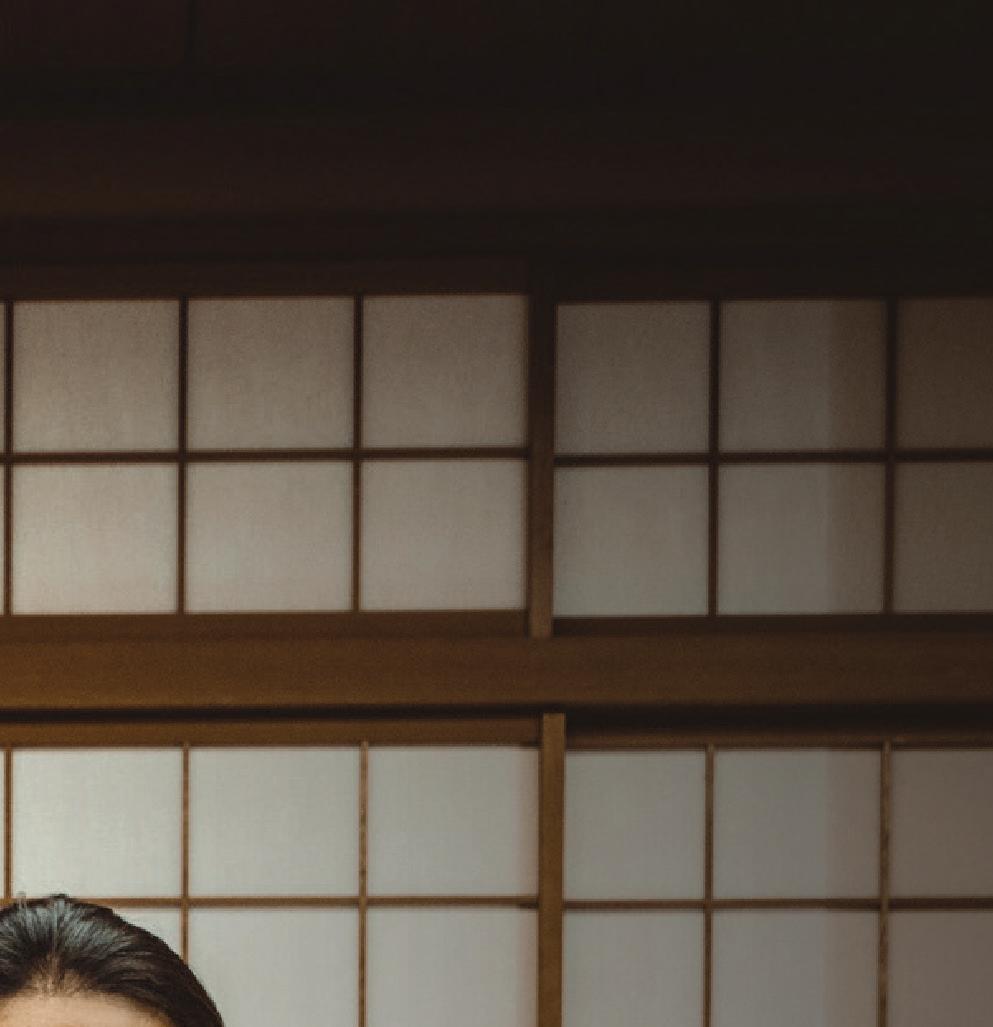
blacktomato.com

In what would make an unbeatable milestone adventure for a family or group of friends, this adventure on ice sees guests exploring Iceland’s rugged, volcanic landscape over six action-packed days.

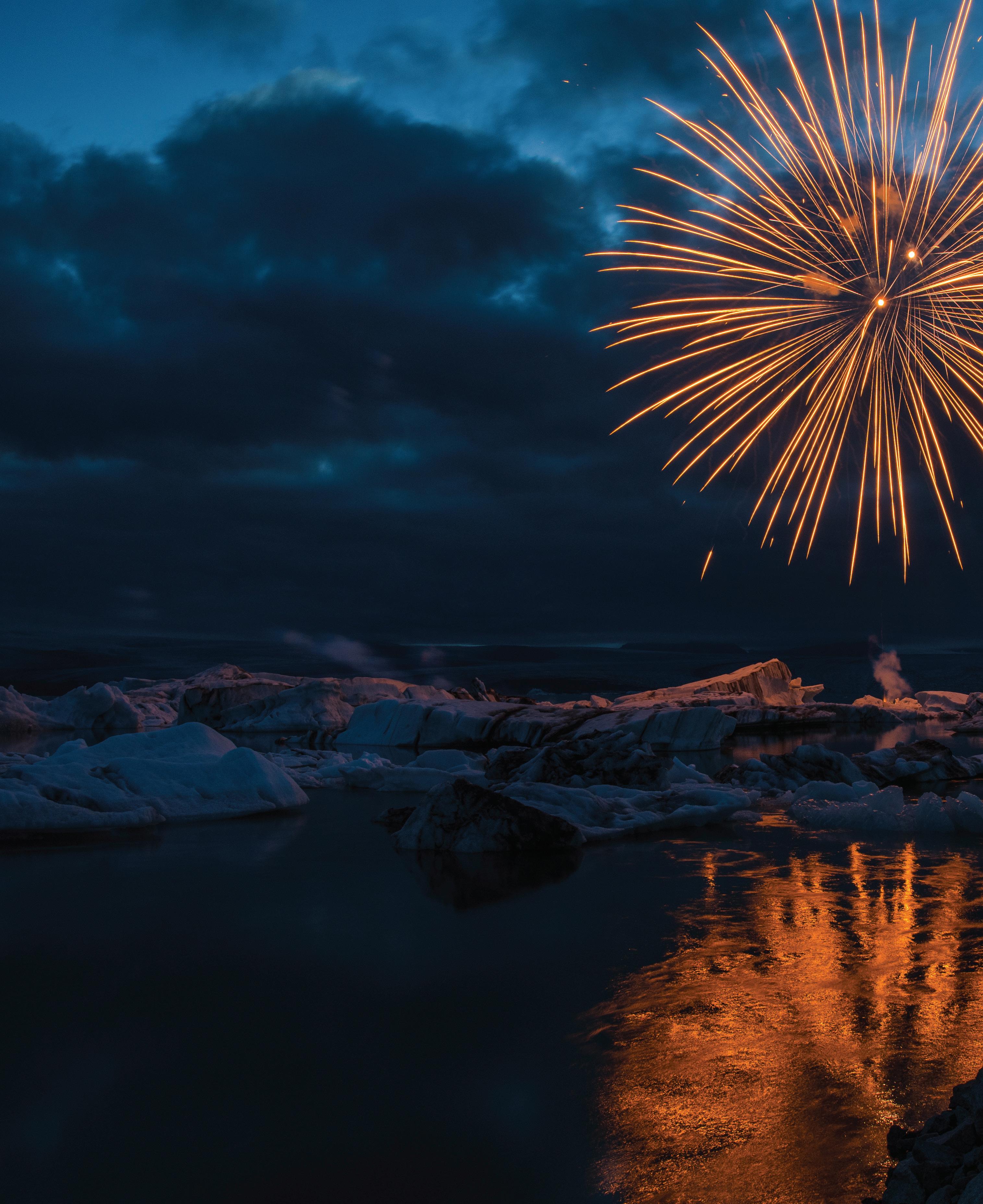
Strap into a Super Jeep, snowmobile, dog sled and set of skis as you’re navigated by expert guides and speed off on a Northern Lights safari, bearing witness to otherworldy natural phenomena and jaw-dropping views. Then, melt away the stresses of day-to-day life with geothermal spa treatments or – if you’re game – a snorkel between tectonic plates.
Come sundown you’ll dine by candlelight in an underground lava tube, eating and drinking like a king on freshly caught lobster accompanied by fine wines, before your trip of a lifetime culminates in the party to end all parties. Helicopter arrival? Check. Glacier? Check. World-famous international DJ? Check. Burn a hole in the ice as you dance the night away with your nearest and dearest at a private party pavilion complete with a gourmet banquet, a hearty supply of drinks, beats straight out of an Ibiza nightclub and nothing around you but a star-filled sky. niquesatravel.com
14
NATURAL WONDERS
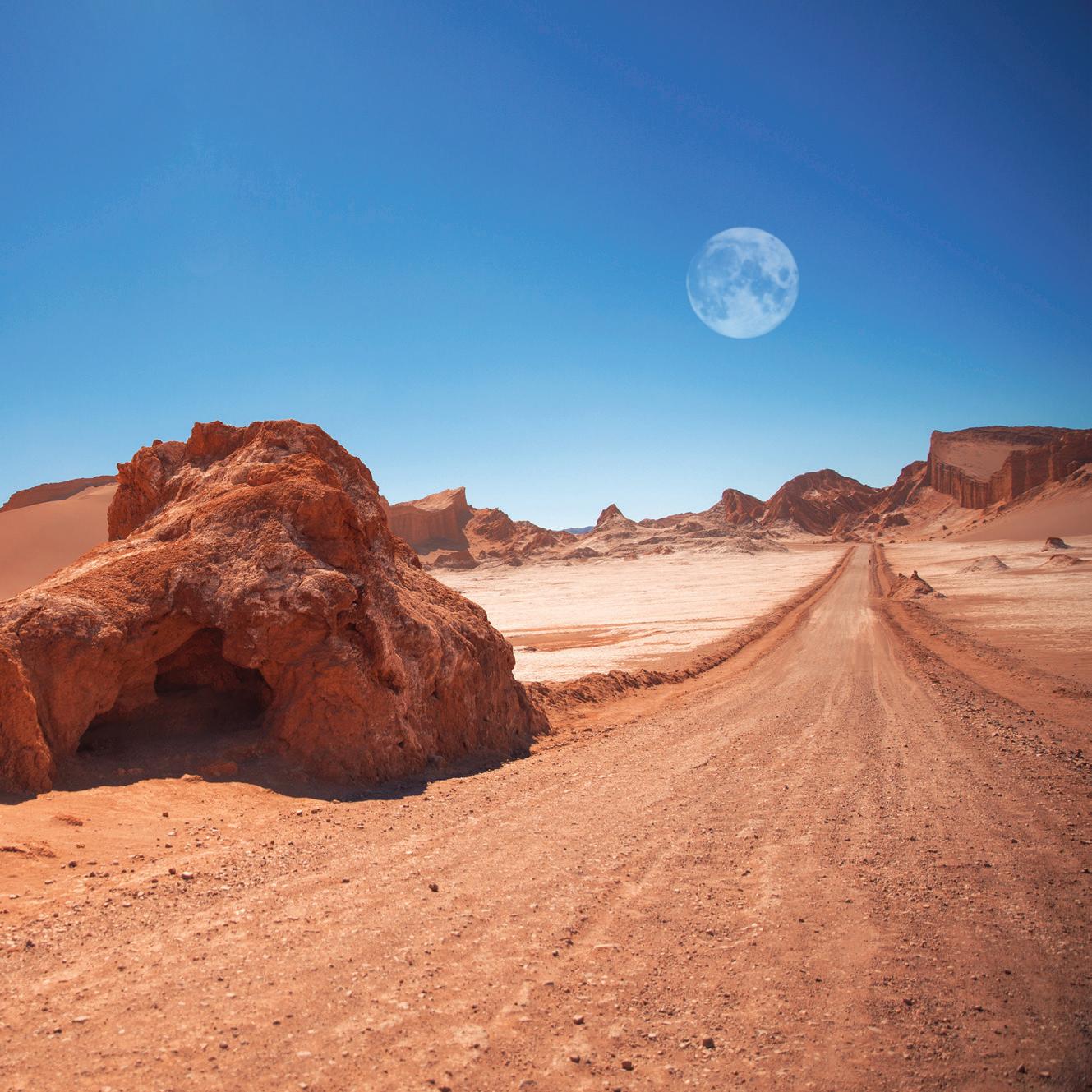
While lunar eclipses, also known as Blood Moons, are fairly common natural phenomena, a total solar eclipse only happens in the same location about once every 375 years.
In December 2020, that location will be central Chile’s volcano-dotted Araucanía lakes region, and you could have a golden ticket to this rare and wondrous event. With PRIOR’s purpose-built camp making a memorable home for this unforgettable experience, adventurers will bear witness to a moment of pure magic from a private, remote viewing observatory, as the nearby Quetrupillán and Lanín volcanoes descend into total darkness... and that’s just the tip of the iceberg.

This is a truly hands-on journey where the opportunities are rife for going deep – physically, into this South American land’s diverse landscapes, but also spiritually, if guests so choose. Glacial lakes, mountain ranges and moonscape salt flats provide an ethereal setting for contemplation and transformation, with the celestial, moving solar eclipse along with the indigenous people’s palpable love for their land providing a platform for deeper connection.
Plenty of lighthearted adventure is on offer, too, as travellers venture through the national parks and ranching outposts of Patagonia at the southern reaches of the Andes; visit the Atacama Desert’s historic villages where Chilean tradition prevails; and buddy up with South American cowboys and Chilean gaucho cattlemen to traverse the Patagonian terrain with an expert horseman by their side.
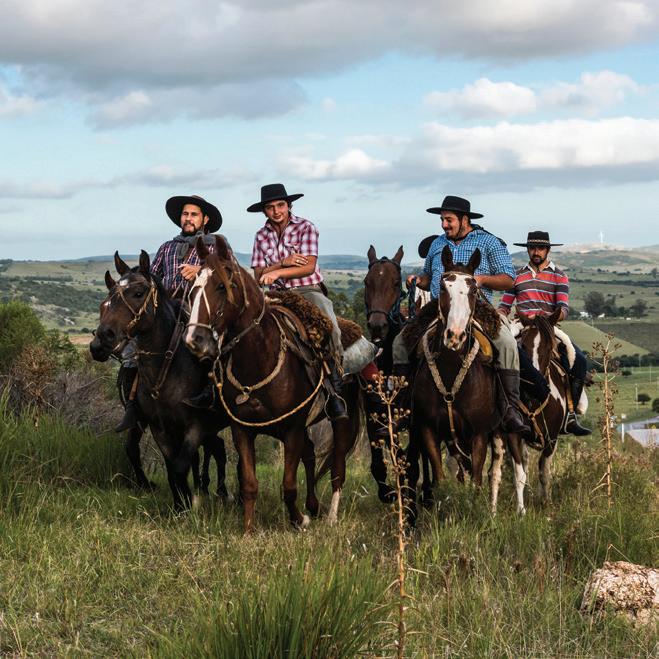
When it’s time to rest your head, you’ll do so in a private villa inspired by traditional ranching outposts with breathtaking views of the Patagonian landscape. You won’t be left wanting for a decent meal, either, with lots of local delicacies served up along the way including a traditional asado (barbecue) and wines from the vineyards of the Casablanca Valley.
prior.club
You’ll want to consider fasting in the days leading up to this seven-day foodie marathon by Epitourean that takes you to Mexico’s northern Yucatán region.


The cuisine of Yucatán is utterly distinct from the rest of Mexico, heavily influenced by its Mayan historical roots along with Caribbean, Spanish, North African, and Middle Eastern cultures, so you can forget about Taco Tuesday.
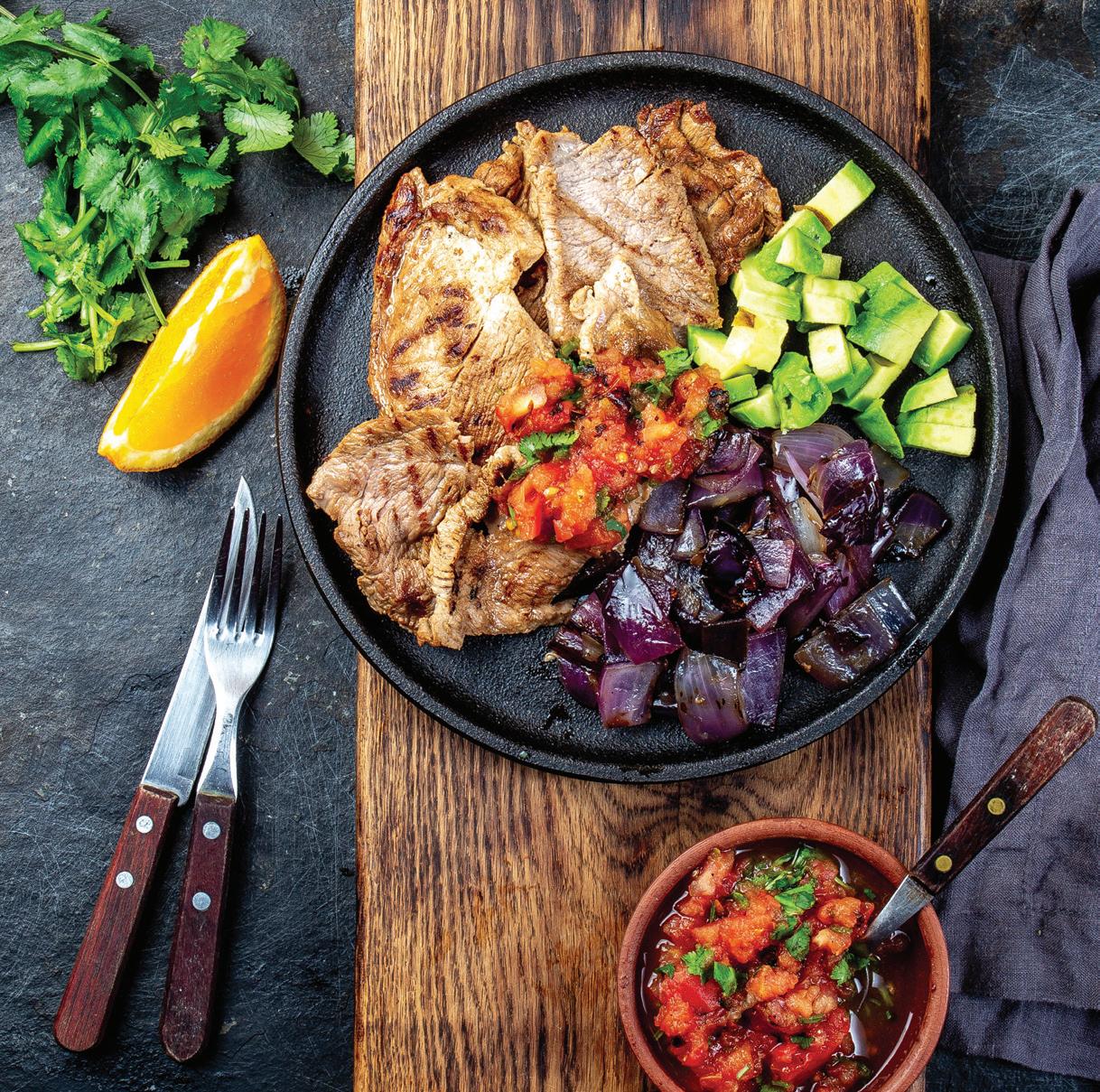
Don an apron and roll up your sleeves in the kitchen of 17thcentury, Mayan-settled estate Hacienda Petac – where you’ll rest your head in five-star luxury in between culinary experiences – and cook shoulder to shoulder with a talented Maya chef, learning the secrets of authentic Yucatecan cooking. Delve into the distinctive flavours of the Maya as you expand your repertoire to include local dishes like pork and beans, a roasted habanero sauce called chile k’ut, the fastfood treat known as panuchos, traditional Yucatán grilled pork cutlet and Mexican favourite, tortilla soup.
And don’t think you’ll be confined to a steamy kitchen for the duration of your stay. Yucatán is also known as ‘The Mundo Maya’ thanks to its immense significance in Mayan civilisation, and you’ll have the chance to learn about this fascinating history on an excursion to the Mayan Ruins in the ancient city of Uxmal, a World Heritage Site. Also on the cards on this journey is a visit to a spectacular underground lake (cenote) thick with stalactites, and the chance to meander through the vibrant, aromatic markets of Mérida. A beautiful city known as the Paris of North America thanks to its elegant architecture and broad boulevard, the dynamic city was also once home to more millionaires per capita than anywhere else in the world, so well-heeled globetrotters will feel right at home.
A true adventure for foodies, expect to leave Mexico with a deep respect for the fiercely independent spirit and distinctive culture of the Mundo Maya… and perhaps a little extra padding around the waist. epitourean.com
Put
16 DRIVING
On Going Wild in West Texas, brought to you by All Roads North, explorers get behind the wheel of a luxury car and hit the road for an eye-opening exposé of the Lone Star State. Challenging those age-old Texas stereotypes, you’ll go far beyond the barbecue food culture, live music and rugged, sprawling landscapes of this cowboy state. On this unique journey, gain unprecedented access to some of the USA’s most exclusive private ranches, visit an art gallery with a private curator and even meet with wildlife biologists, archeologists and astronomers.

Pulling out from El Paso, drive to the contrasting town of Marfa, known for its contemporary art scene and the mysterious Marfa Lights, before speeding off to the foothills of the Chinati Mountains. At high-end Cibolo Creek Ranch, founded by cattle baron Milton Faver, you’ll have more than 12,000 hectares at your disposal to traverse on horseback, mountain bike or ATV.
Sleep under the star-filled skies of Big Bend National Park on an overnight river trip through the canyons of the Rio Grande; recharge your batteries at luxurious Chalk Draw Ranch in the Santiago Mountains; and explore Bee Cave Canyon, the largest prehistoric rock shelter in the region. With plenty of hiking, swimming and animal-sighting opportunities afoot, this is the kind of journey that satisfies mind, body... and that insatiable need for speed.
allroadsnorth.com

In the world of cruising, it doesn’t get much more adventurous than exploring the polar regions, and on Hurtigruten’s 17-day Exploring the Frozen Continent voyage, passengers venture as far south as the Antarctic Circle on a once-in-a-lifetime expedition.
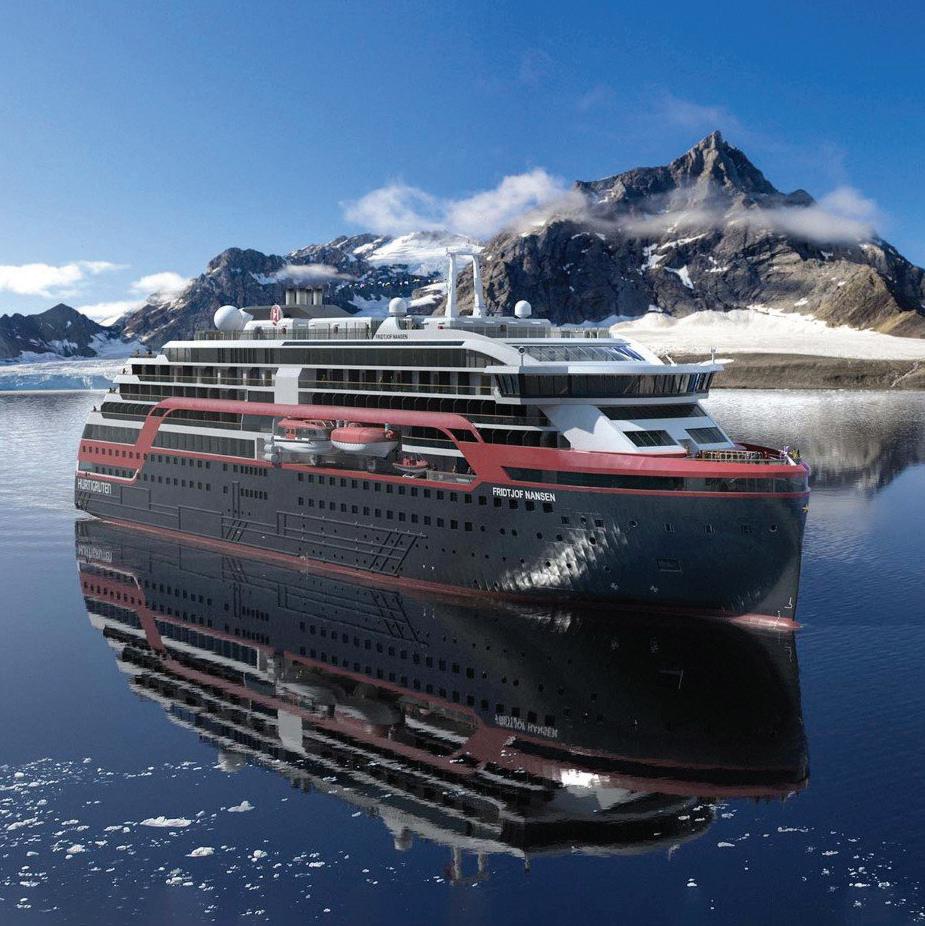
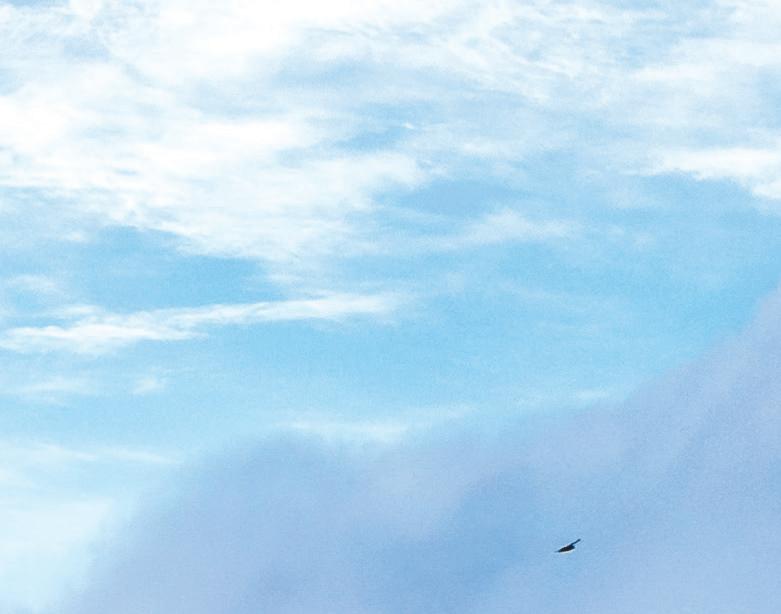
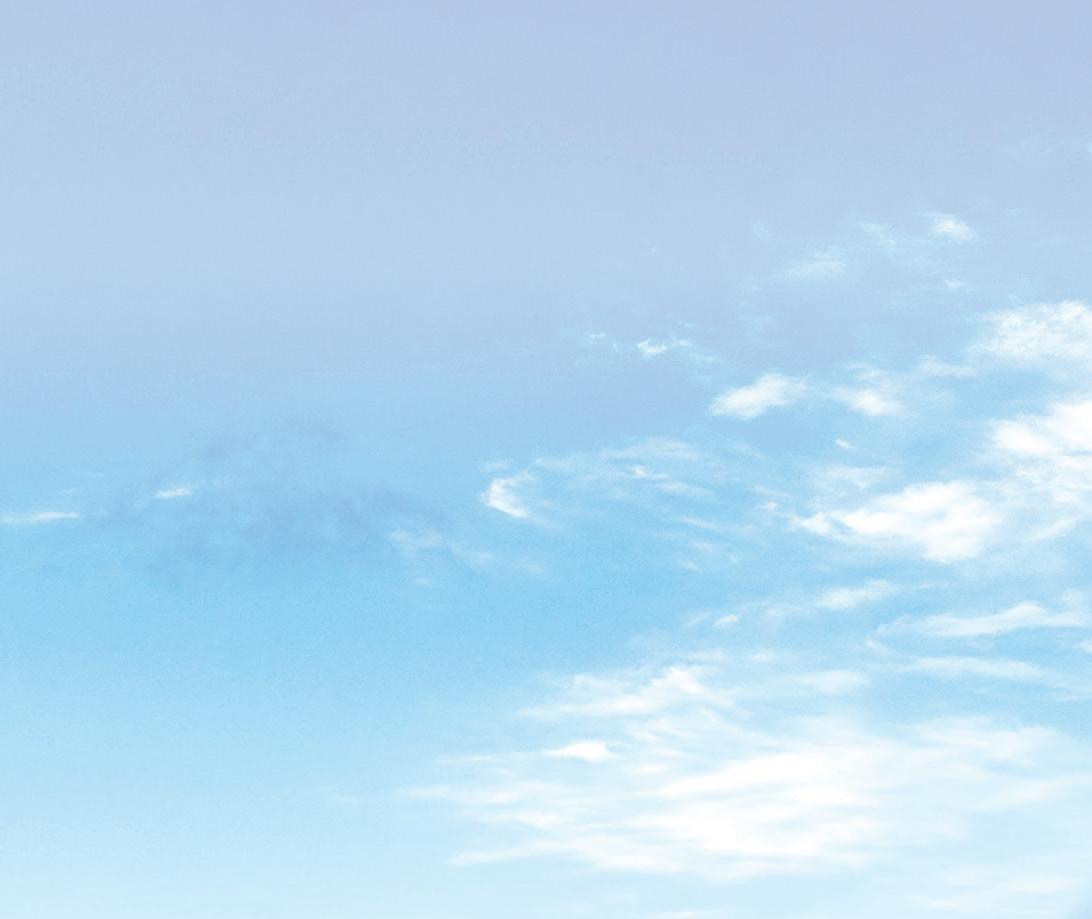
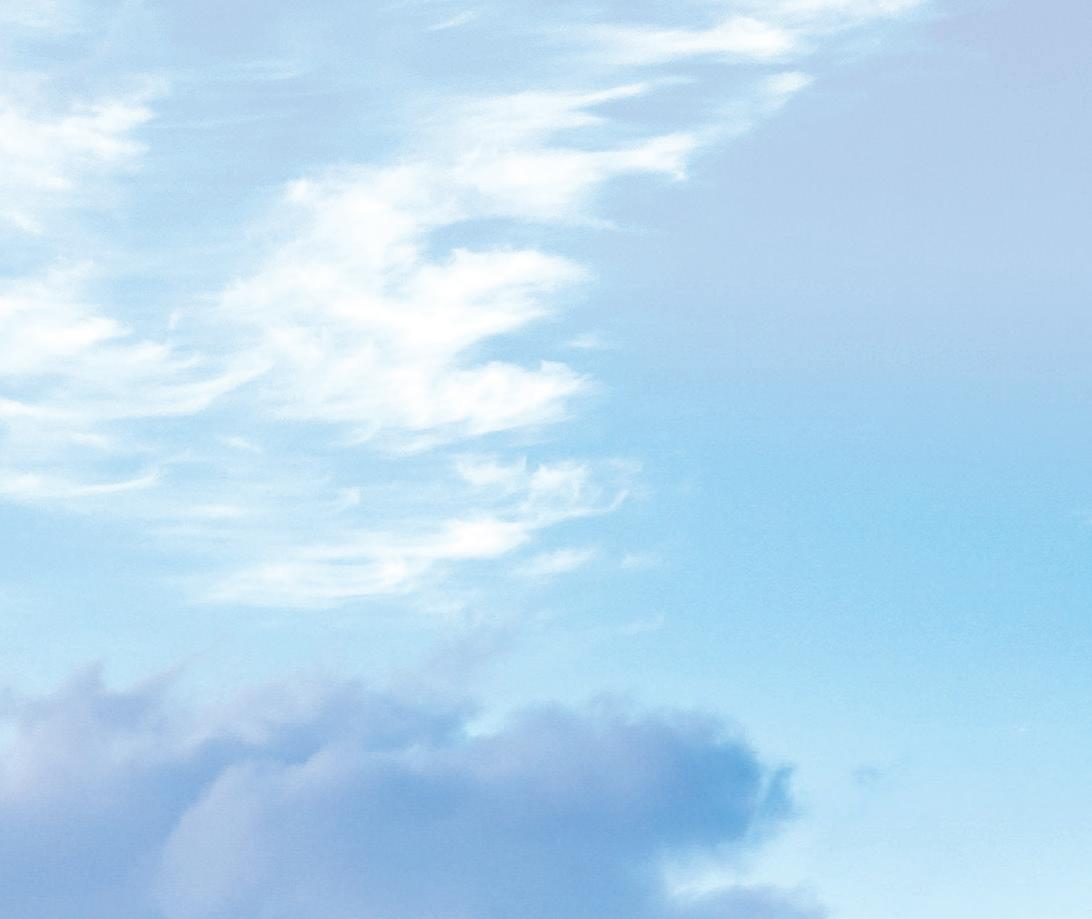
Departing Buenos Aires and crossing the Drake Passage, where the Atlantic and Pacific Oceans meet and where marine life is teeming, Hurtigruten’s Expedition Team prepares passengers for the intense polar exploration ahead with fascinating lectures and presentations.
Ten full days of exploration follow in the most remote corner of Earth. Antarctica’s breathtaking scenery is on full display, with opportunities to get up close and personal with penguins, seals and ice so cold it appears to glow. With an unfathomable 90 per cent of the world’s ice found here, some of it more than four kilometres thick, this is an awe-inspiring place where wonder knows no bounds.
Travelling in late summer, there are plenty of opportunities for encounters with penguins, whales and seals, and you’ll have on-land time in the South Shetland Islands and on the Antarctic Peninsula, going even deeper into this unforgiving but wildly beautiful land.
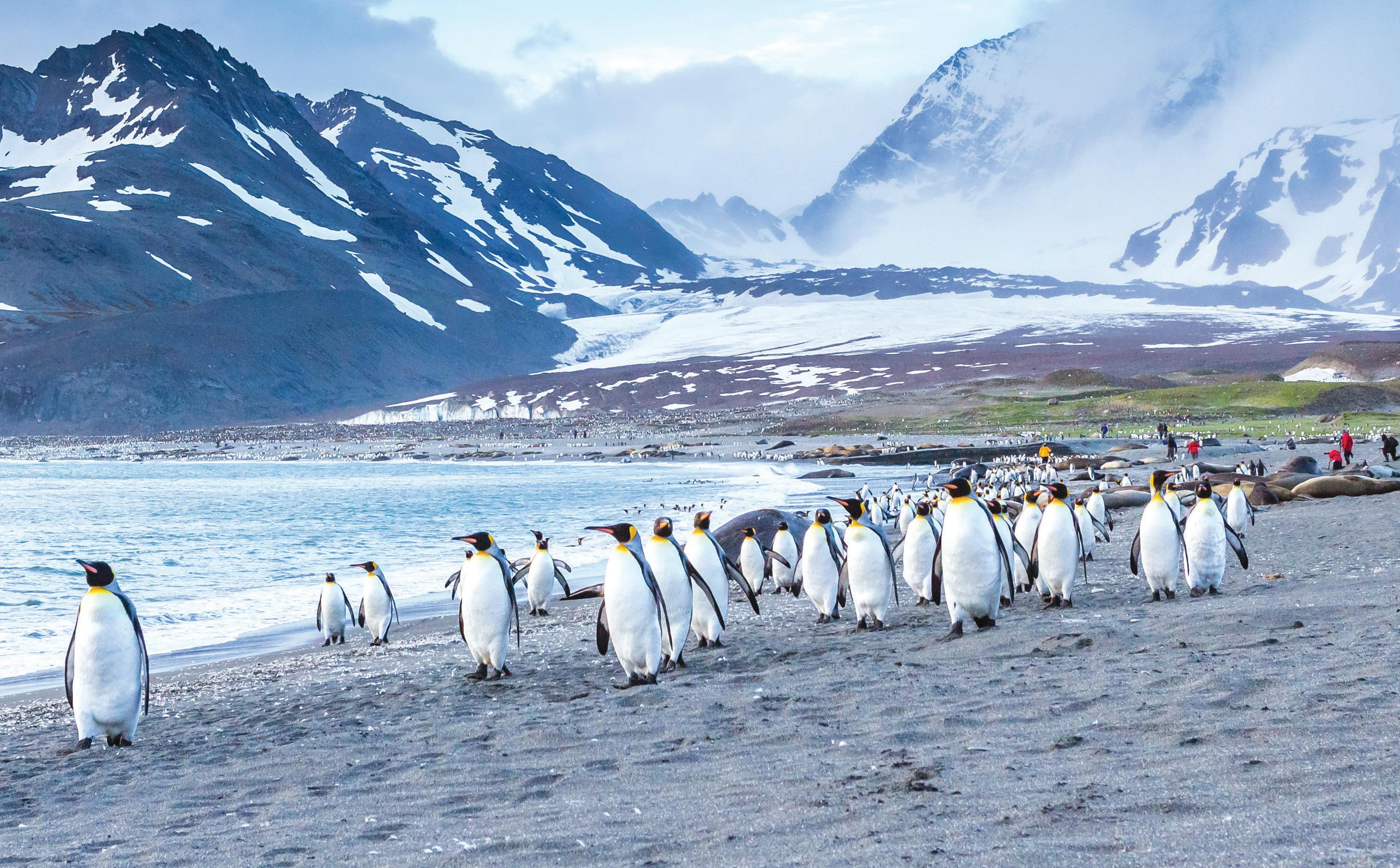
An Antarctic expedition is not only immersive, it’s transformative, so this one isn’t for the faint-hearted. hurtigruten.com.au
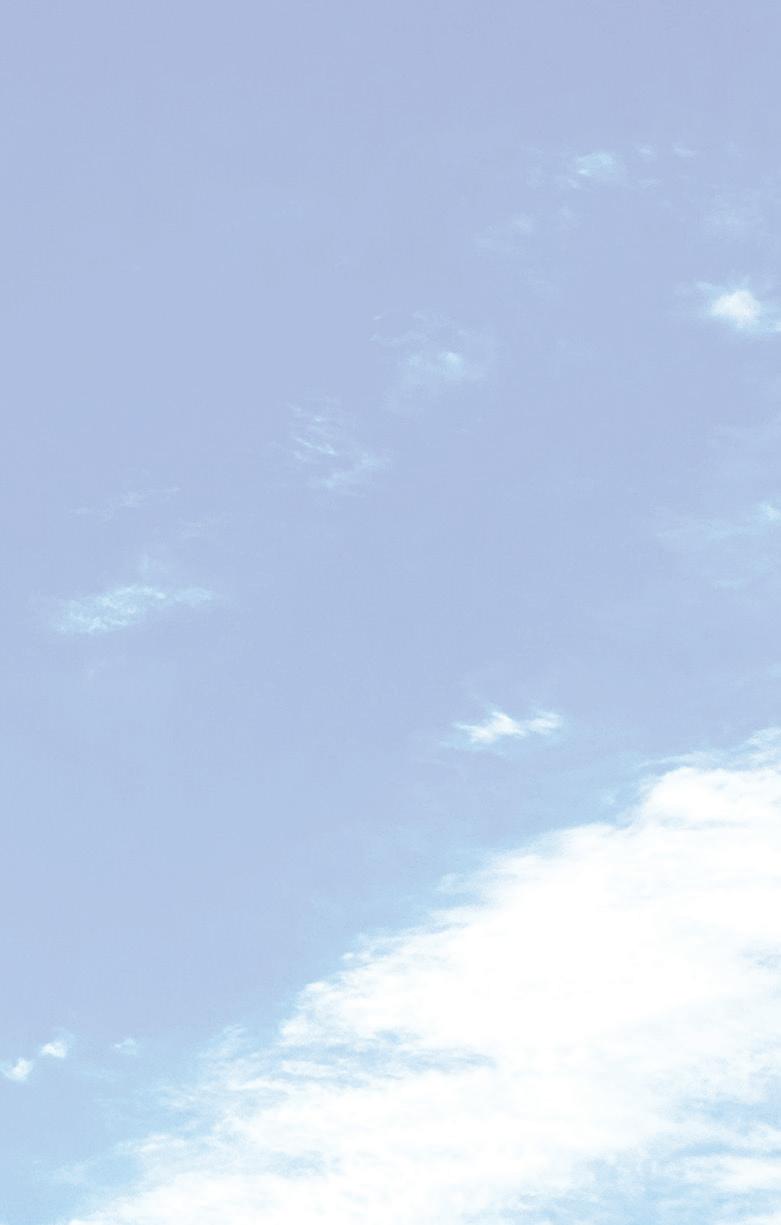

If you’ve ever yearned to embark on a voyage of selfdiscovery, UK-based Niquesa Travel has all the answers –and we mean that literally.

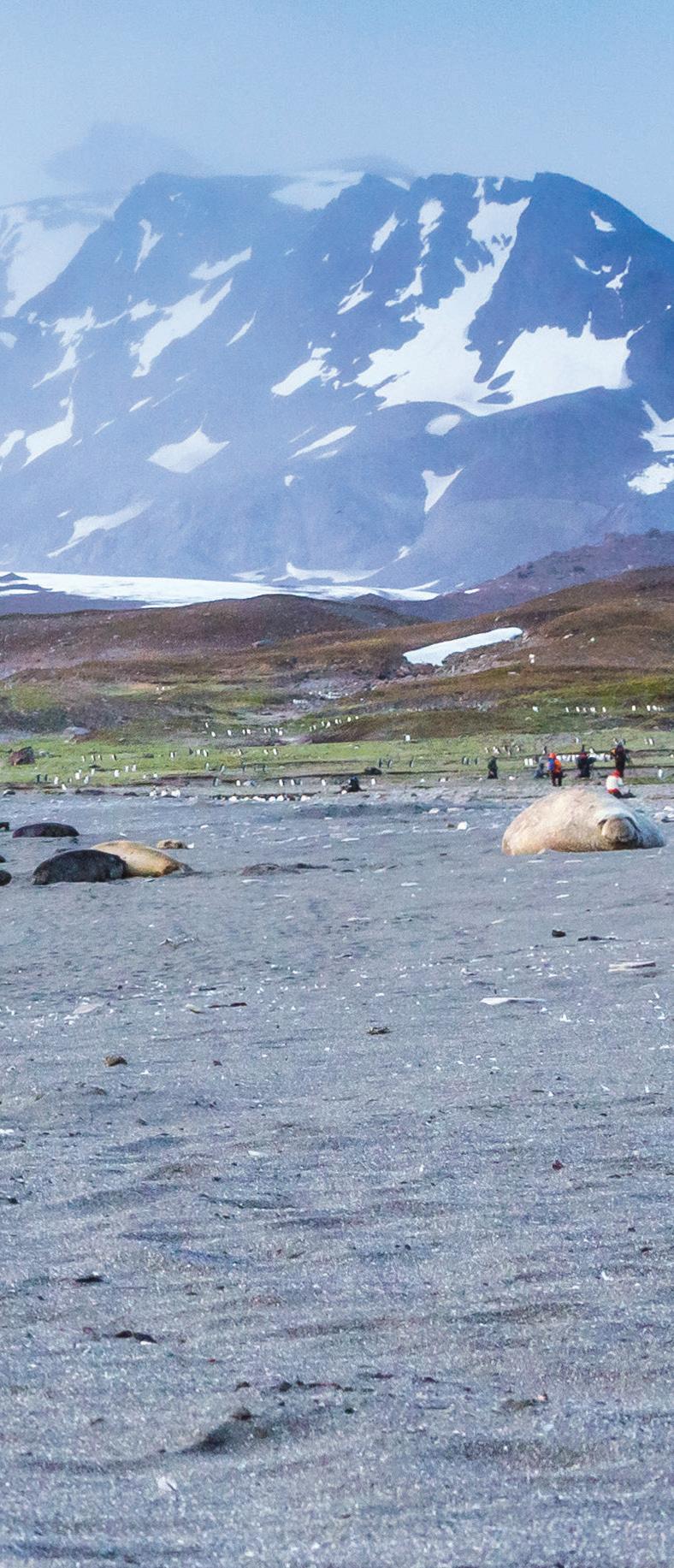
A giant leap from your run-of-the-mill, soulsearching retreat, it doesn’t get more personalised than the DestiNation You experience, which calls on science and genetics to create a completely unique holiday tailored to you. Using advanced genome sequencing techniques and even artificial intelligence, industry-leading geneticists analyse every letter of the soul searcher’s DNA to determine their precise cultural origins and lineage. Niquesa’s team of dedicated travel consultants then weave the client’s DNA profile into a rich and fulfilling cultural holiday immersion that connects them to the countries of their ancestral roots. An ancestry genealogist can even accompany the guest on their journey as they deep-dive into their family history and discover where they come from and what makes them who they are. If you’re looking for an adventure with deeper meaning, this is as transformative as they come.
niquesatravel.com
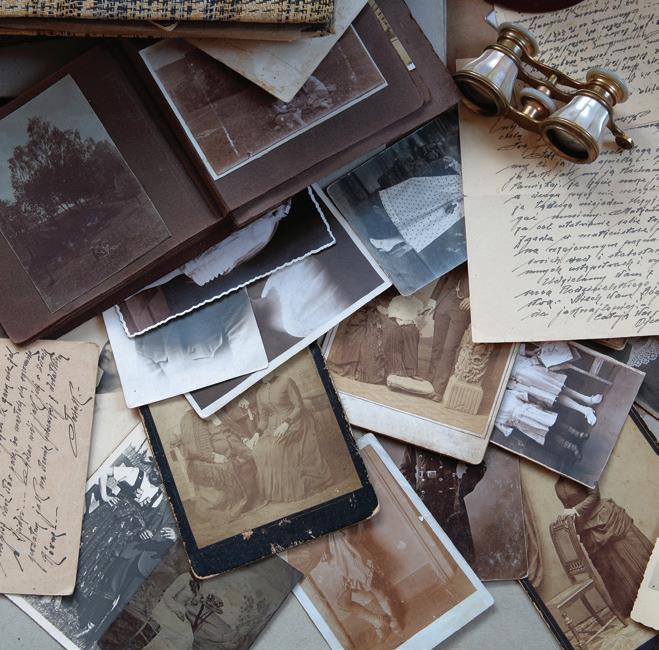

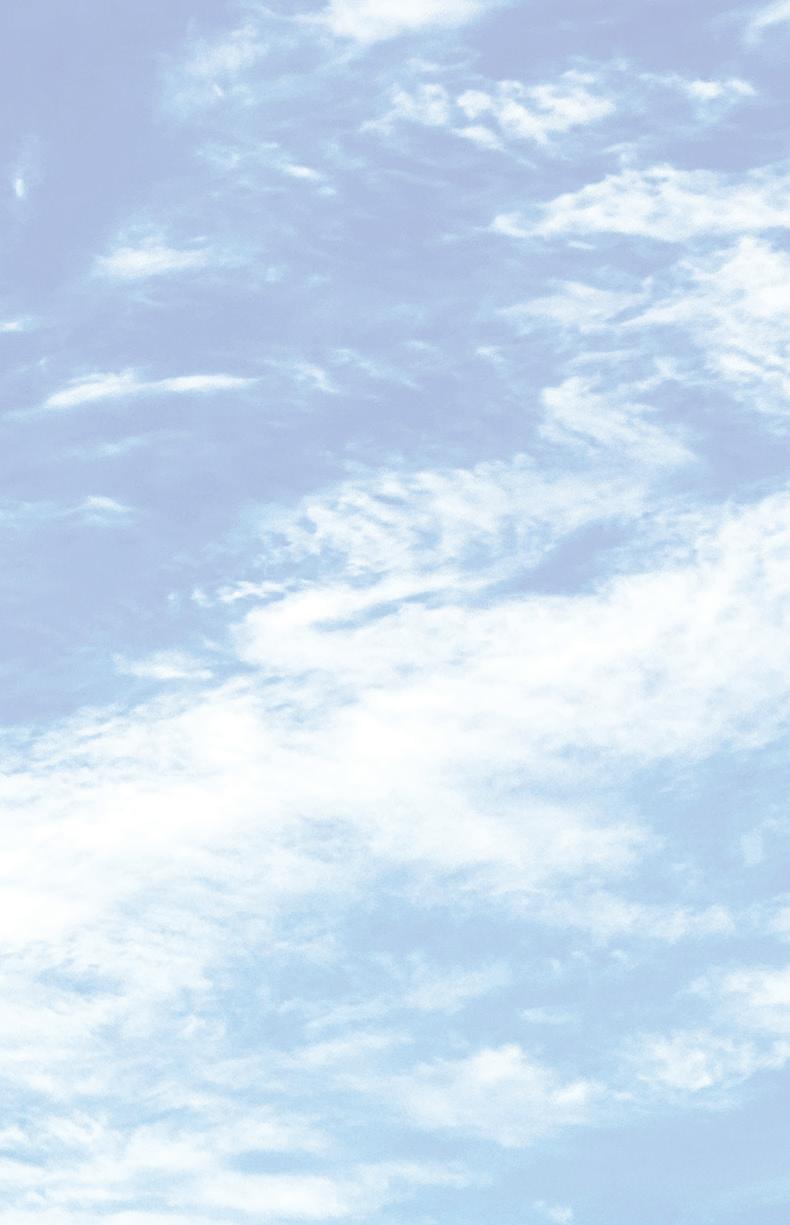
Cape Town might not be the first place that springs to mind when it comes to shopping, but for those willing to venture beyond the well-trodden, designer-store-fringed paths of Paris, New York and London, the rewards come thick, fast and, when it comes to South Africa, oh-so colourful.


This private, full-day shopping tour by Explore Sideways is a backstage pass to Cape Town’s best retail experiences, fully customised to the shopper’s desires. Whether you’re an avid collector of up-and-coming artists, or skew more towards handbags, jewellery, clothing and leather goods, this shopping tour will put your usual amble up the High Street to shame.
Led by a dedicated, personal art and fashion insider who knows their way around the city’s small, creative ateliers and one-of-a-kind treasure troves, you’ll be exposed to those hidden gems only known to the most fashionable locals. Art aficionados can visit the Bronze Age Foundry and see sculptures come to life, meet local emerging and established artists and designers in their personal studios and even see the first concept store in Africa to focus on contemporary Pan-African design. Or, for those more interested in art of the wearable variety, have your own private jeweller bring some of South Africa’s finest gems into your private residence to custom design a spectacular bit of bling just for you. The finished product will be delivered direct to your door within days, leaving you far from logistical headaches and free to focus on some serious retail therapy. Mental health first, right? exploresideways.com
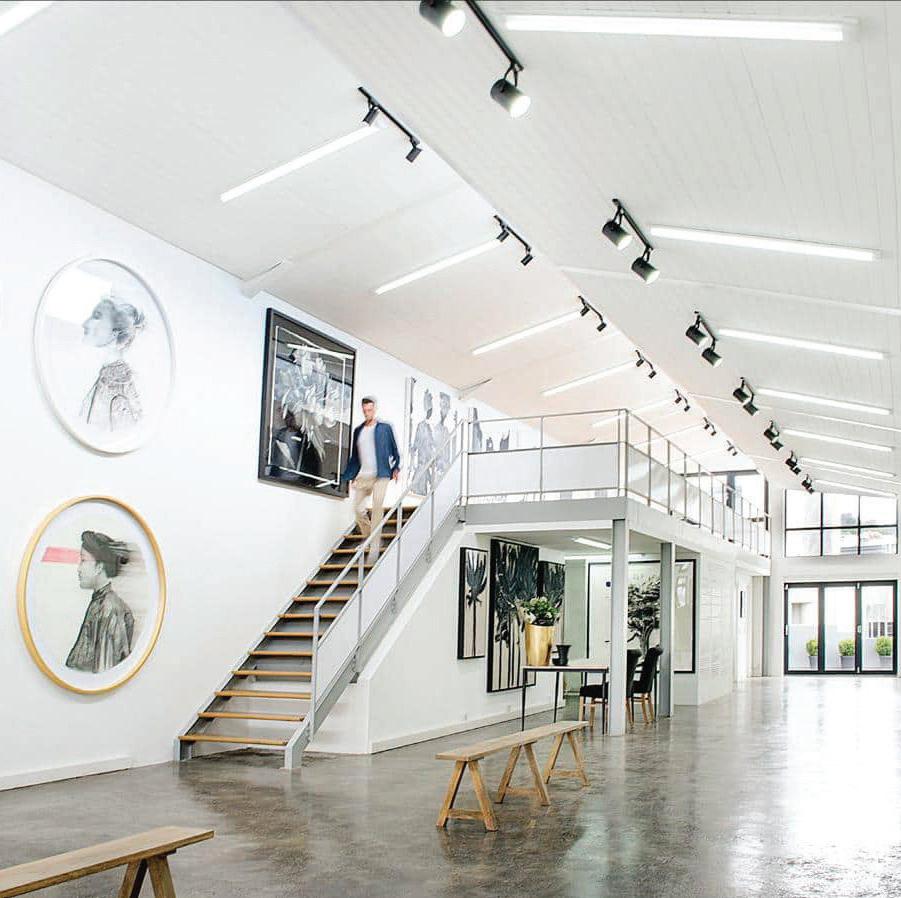
Take your next camping adventure up a peg or two with an immersive desert glamping experience in untrodden southern Oman.
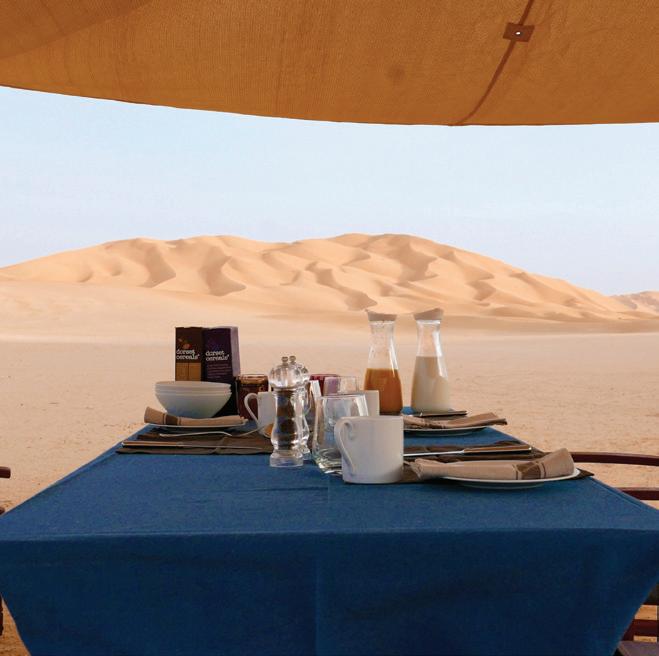

Al Baleed Resort Salalah by Anantara and Oman Expeditions have buddied up to create Luxe Mobile Camping Adventures, taking explorers into the inner reaches of the Dhofar province, unleashing a wilderness of star-studded skies, vast deserts, rugged mountains and empty beaches.
Drawing on the vast country knowledge and experience of Oman Expeditions’ founder, Sean Nelson, itineraries weave in the region’s rich, traditional heritage as explorers travel in luxury 4×4 comfort to some of the most intriguing, scenic and historically significant spots in the region. Taking the authenticity factor to a new level, expeditions are accompanied by members of the Mahrah – a tribe that has travelled along frankincense trading routes with their camels since the time of the Queen of Sheba. And for those wanting to go deeper, specially themed trips can be arranged with experts ranging from Oman’s leading whale and dolphin expert to anthropologists, geologists, archaeologists, astronomers, artisans and religious scholars.
At the end of each day’s excursions, guests retire to the comfort of a luxurious mobile camp, where each tent has a private tented bathroom with open-air showers, comfortable mattresses, cotton sheets, Arabian rugs, candles and oil lamps. Chefs prepare Middle Eastern, North African and Mediterranean dishes onsite using local ingredients, and dinner under the stars is served on a beautifully set table by a crackling fire. The adventure draws to a close by retreating to lush, beachside Al Baleed Resort Salalah by Anantara, leaving you to reflect on your journey into old Arabia from the luxury of a pool villa. zicasso.com




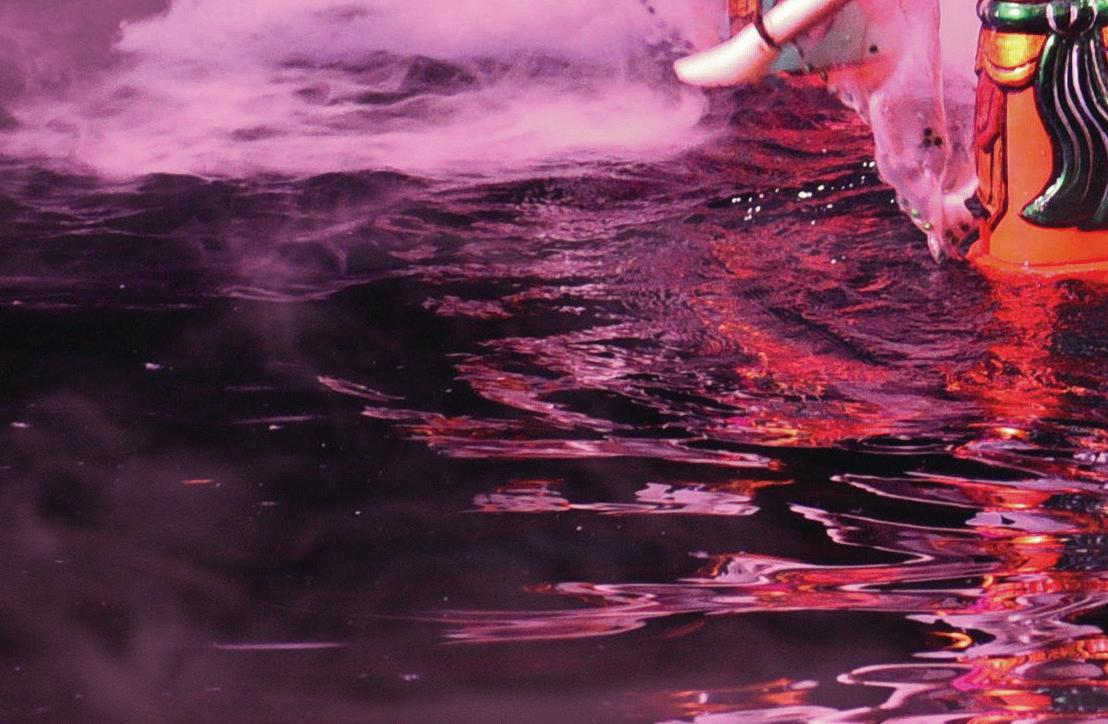





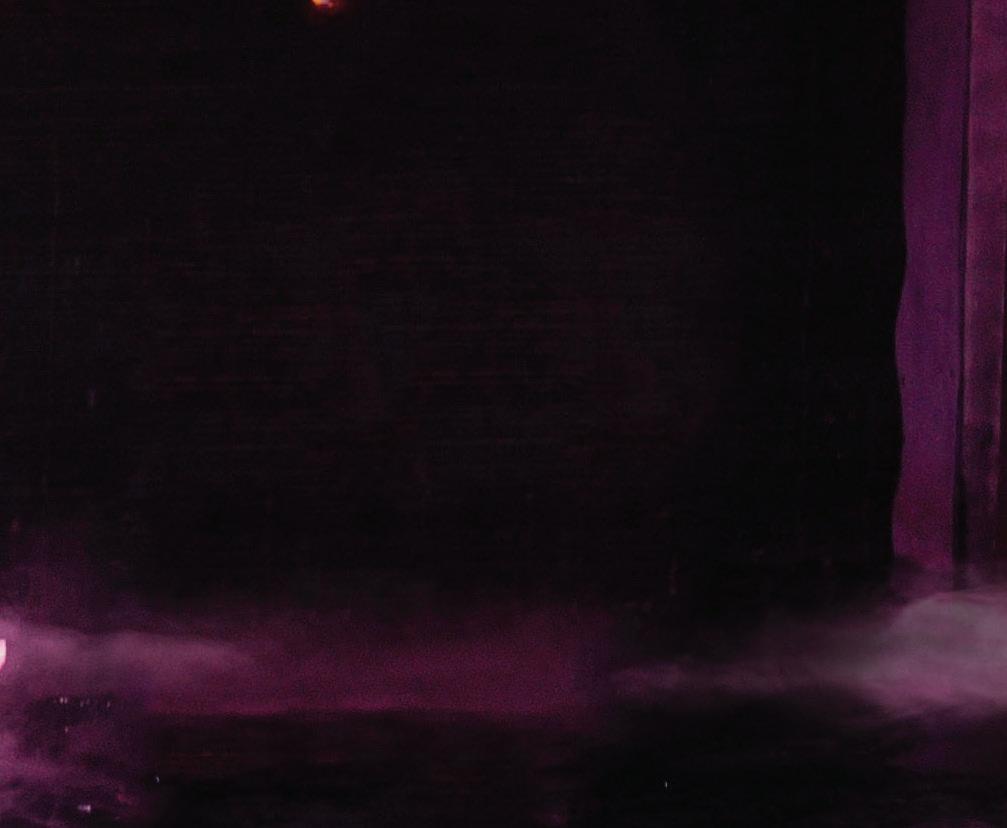


LAZING POOLSIDE IS OUT. DEEP SELF-IMPROVEMENT IS IN. KATE SYMONS INVESTIGATES THE WELLNESS TOURISM BOOM AND EXPLORES WHERE THE INDUSTRY IS HEADED FROM HERE
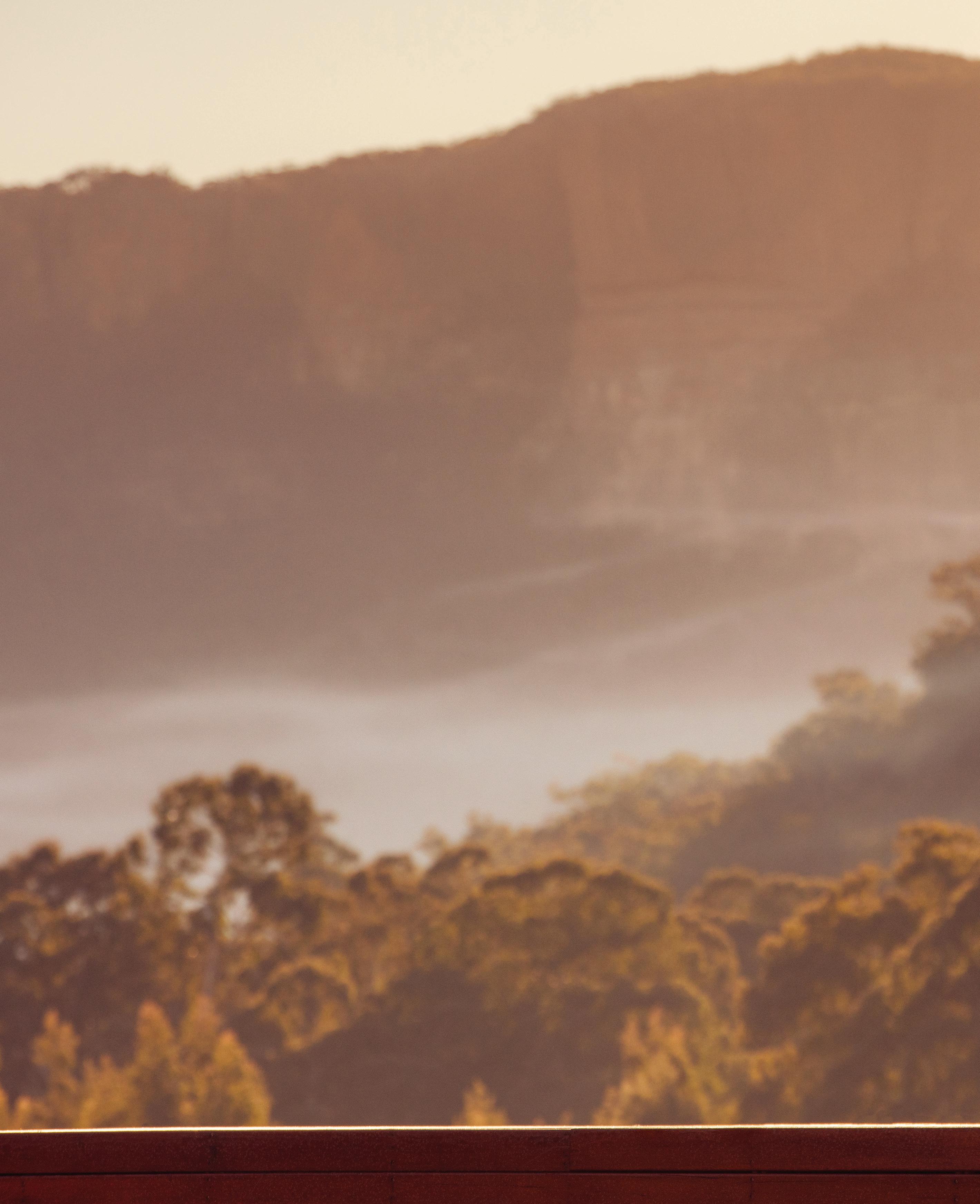
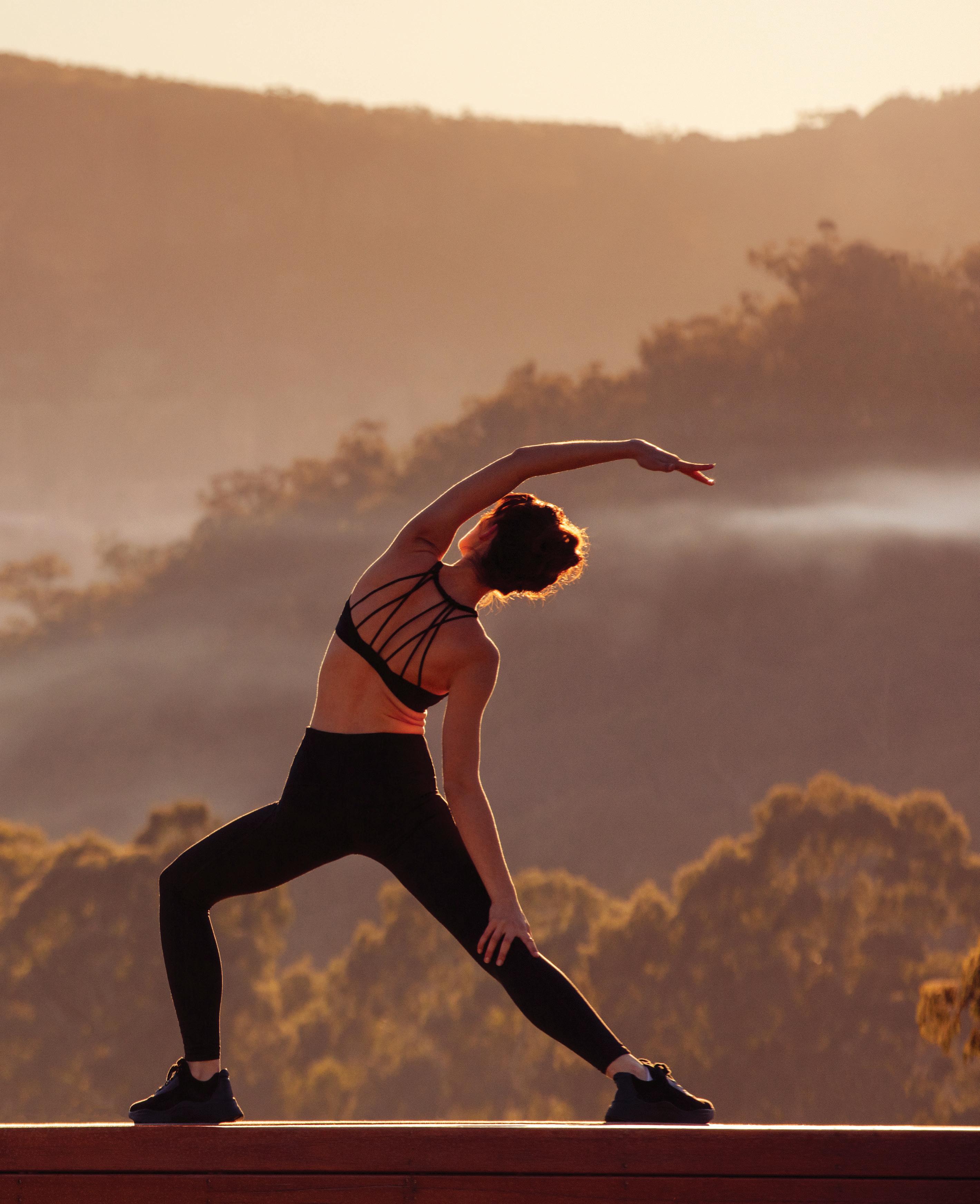
Breathing in: one, two, three, four. And out: one, two, three, four, five, six, seven, eight.”
I am trying to follow Brandon’s instructions, but my ever-wandering mind continues to find its way back to my car, which was forced to make a surprise visit to the mechanic on my way out of Sydney 48 hours earlier.
I shake it off and bring my attention back to Brandon’s soft voice. With the best of intentions, I breath in: one, two, three, ‘for-god’s-sake, will my car be okay?’
This is not going how I had planned. I am staying at HOSHINOYA Tokyo, a heavenly property in the city’s financial heart, where beautifully composed Japanese hospitality whisks guests well away from the bustle of street level. The deep-breathing stretch class I am attending is offered each morning, giving guests the opportunity to balance the mind and body. I figure I could do with a good recalibration and the statistics tell me I am not alone.
Despite the conveniences of modern life, we are more stressed than ever before with work pressures, lack of sleep, social media and juggling too many things at once among the key contributing factors. And while lazing poolside may have once reigned as the rejuvenation method of choice, travellers are increasingly seeking more meaningful results from their holidays. Case in point: wellness tourism grew by 6.5 per cent annually from 2015 to 2017, more than twice as fast as tourism overall.
830M
This is big business, and Karina Stewart saw it coming. Karina and her husband John established Kamalaya Koh Samui in 2005, a wellness retreat motivated by a shared passion for holistic wellbeing. And although they suspected they were “on the cutting-edge of something”, it wasn’t the projected boom that was in their sights. Rather, the couple set out to offer guests a deep and authentic healing experience by combining the best of both Eastern and Western therapies.
“Our sense was ‘build it and they will come’ [but] it was this uphill battle [getting investors] because no-one else could feel it then.”
They can now. In 2017, world travellers made 830 million international and domestic wellness trips, accounting for 17 per cent of all tourism expenditure. Moreover, the $639 billion market (2017) is projected to reach $919 billion by 2022.
The explosion is a natural progression of the thriving wellness economy, estimated by the Global Wellness Institute as a $4.2 trillion industry and representing about 5.3 per cent of global economic output in 2017.
Samantha Lippiatt, director of wellness holiday specialists Health & Fitness Travel, says the growing pursuit of holistic health has simply crossed over to the tourism setting.
“Holistic healthcare and disease prevention are increasingly at the centre of consumer decision-making, and people now expect to continue their healthier lifestyles when they are away from home,” she says.
“Consumers are also seeking a more experiential form of travelling, which is what wellness tourism is about — a personal experience that not only resonates with the traveller’s aspirations but helps them achieve their goals.” >>
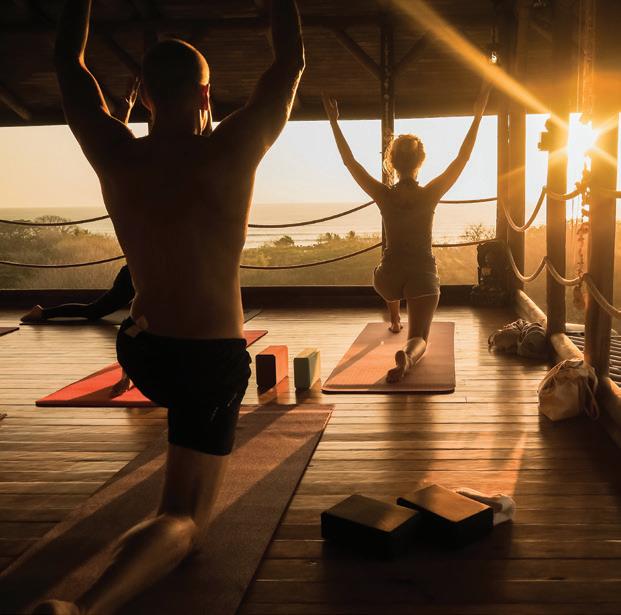

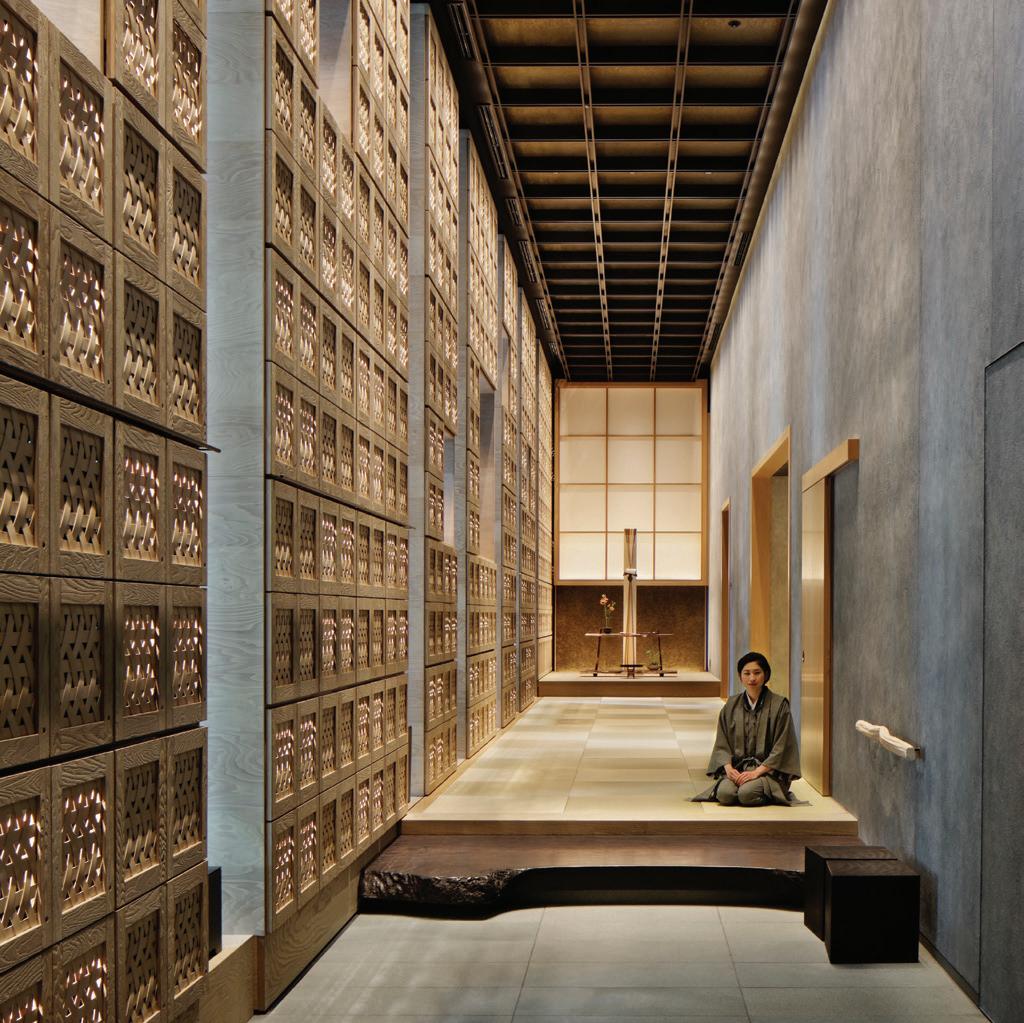
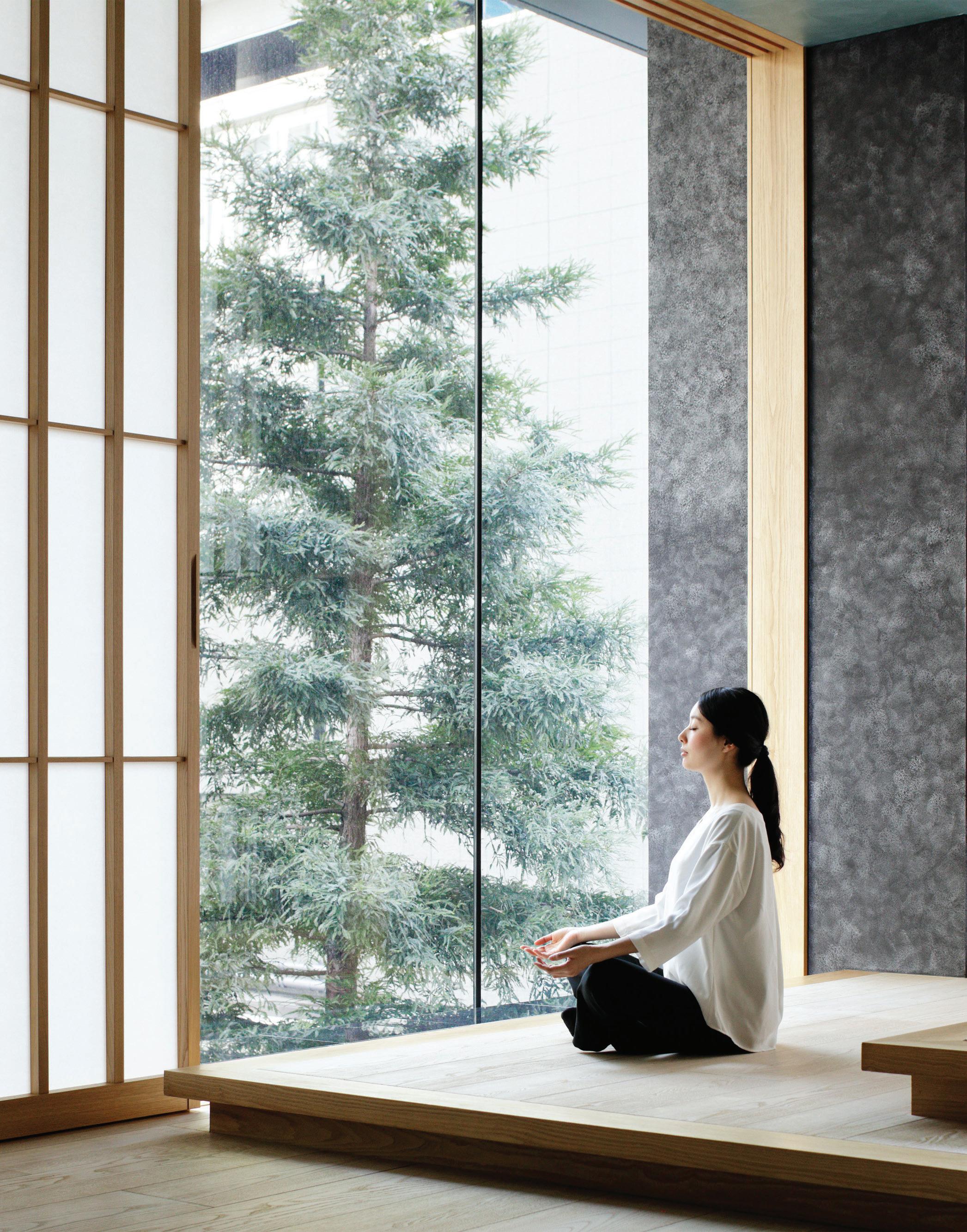
“Wellness tourism attracts a clientele of burnt-out professionals of all ages, families seeking healthy or active travel alternatives, and Baby Boomers focused on a later-life health reboot as they head into retirement.”
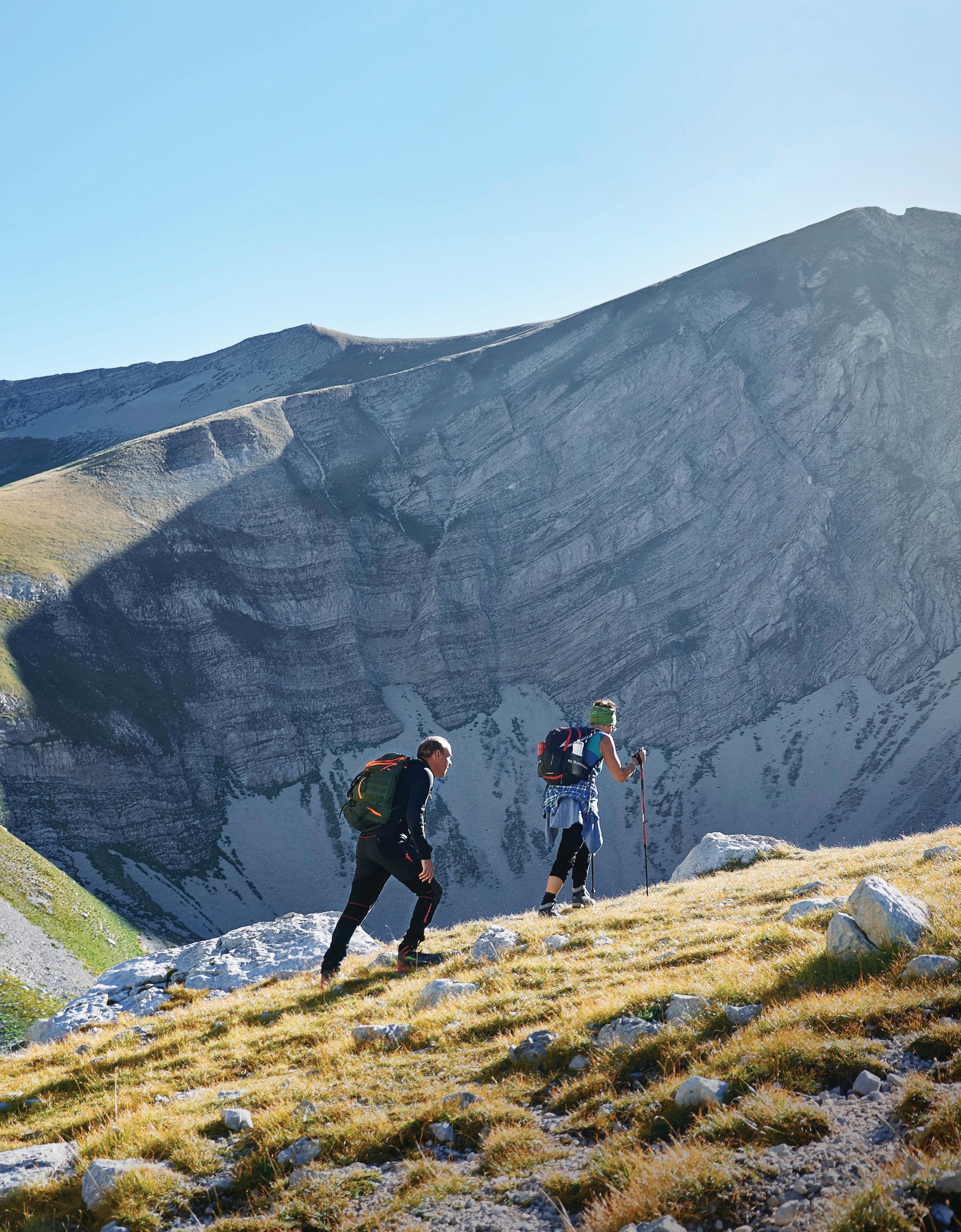 SAMANTHA LIPPIATT Director, Health & Fitness Travel
SAMANTHA LIPPIATT Director, Health & Fitness Travel
This trend is visible across all demographics, but Millennials in particular are driving growth. The largest generation by population, Millennials – those born between 1980 and 1996 – are lifestyle-focused and, according to Eventbrite data, 78 per cent choose to spend money on experiences rather than material goods.
When it comes to wellness tourism specifically, the demographic broadens. Samantha says the primary audience is time-poor Generation Xers (born between 1965 and 1979) and most are female (74 per cent), but she adds: “Wellness tourism attracts a clientele of burnt-out professionals of all ages, families seeking healthy or active travel alternatives, and Baby Boomers focused on a later-life health reboot as they head into retirement.”
At Kamalaya, the ‘burnt-out’ profile rings particularly true. Fifteen years after opening its doors, the Thai retreat remains a leader in the industry, despite the influx of competitors. In that time, the retreat’s catalogue of programs has grown from five to 14, a steady increase that has been based purely on guests’ needs.
“We don’t just create something for the sake of creating it,” Karina says. “We respond to what we’re seeing, [to] the changes in our guest profile.” In 2005, detox was the program du jour
at Kamalaya and although it remains one of the best-sellers, Karina says there has been a significant shift towards mental health and emotional balance.
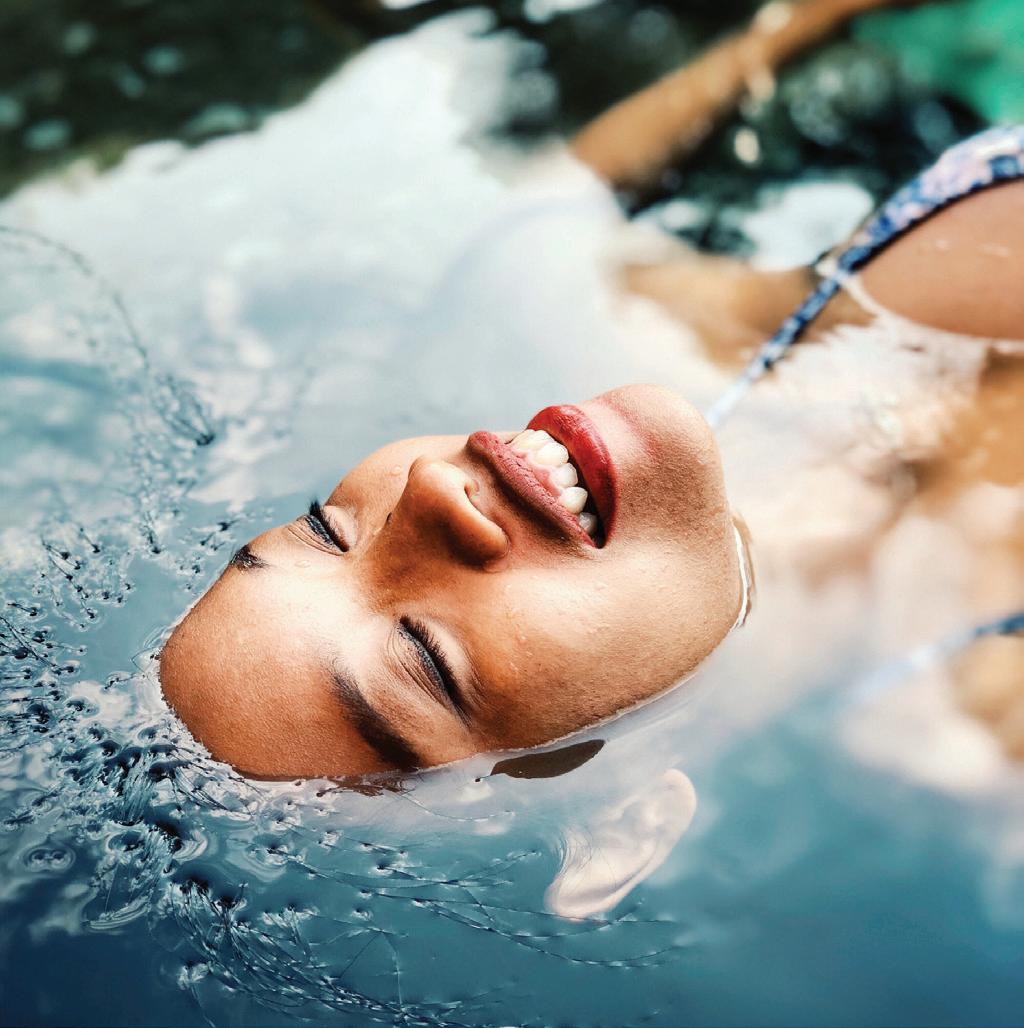
“We started developing our stress and burnout category of programs because I saw the need… and I would say that’s one of the biggest changes [since we opened].”
Kamalaya now offers four stress and burnout programs –Relax and Renew , Asian Bliss , Basic Balance and Revitalise , and Comprehensive Balance and Revitalise – and they are among the most sought-after. Meanwhile, the retreat’s emotional balance program, Embracing Change , which launched in 2014, is fast gaining popularity.
The pattern is similar on Australian soil. Sharon Kolkka, General Manager and Wellness Director at Gwinganna, an award-winning retreat located in the Gold Coast hinterland, says the most common thread connecting guests is that they are “exhausted by life”.

On the upside, the stigma surrounding self-care and mental health is starting to fade.
“I think people are more open to coming to a place like this now because the word ‘wellness’ is accessible,” Sharon says. “If you’re choosing a place like this, it doesn’t mean to say that something is broken… people are engaging for various reasons.
“At a wellness retreat or a lifestyle retreat, we’re steeped in wellness, we’re about supporting people to live well in their life and to perform well in their life. That’s what we do.”
Predictably, as the wellness uptake increases, so does consumer expectation, paving the way for unique and, at times, groundbreaking new offerings. Take fitness, for example. No longer >>

78% of Millennials choose to spend money on experiences rather than material goods, according to Eventbrite data
satisfied with the standard resort pool and gym, consumers are now demanding intensive programs, celebrity-endorsed experiences and inventive fitness challenges.
In New York City, gym chain Equinox opened its first fitness hotel earlier this year. Complete with a 556-square-metre workout space, the hotel is described (on its own website) as a “manifestation of high-performance living”. Who’s to argue when cryotherapy chambers, an on-call sleep coach and a minibar stocked with wellness goodies (think: face masks, sleep supplements and superfood snacks) are part of the package?
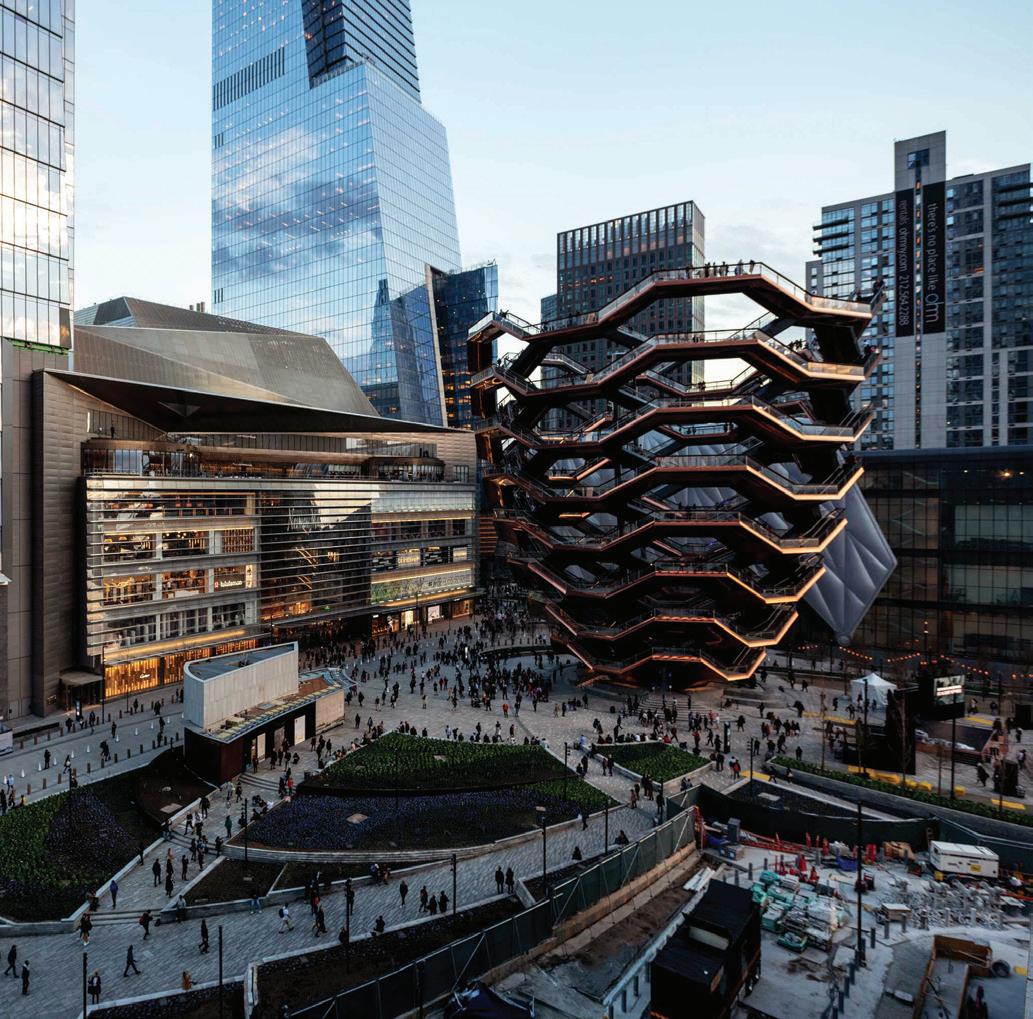
Anna Kaiser, the woman responsible for the incredible body tone of Sarah Jessica Parker, Karlie Kloss and Shakira, among other A-listers, is just one celebrity trainer to create a retreat version of her fitness product. Brands are also getting in on the act. Cult activewear retailer Lululemon, for example, launched The Immersion last year, a five-day yoga and personal development retreat held in Malibu.
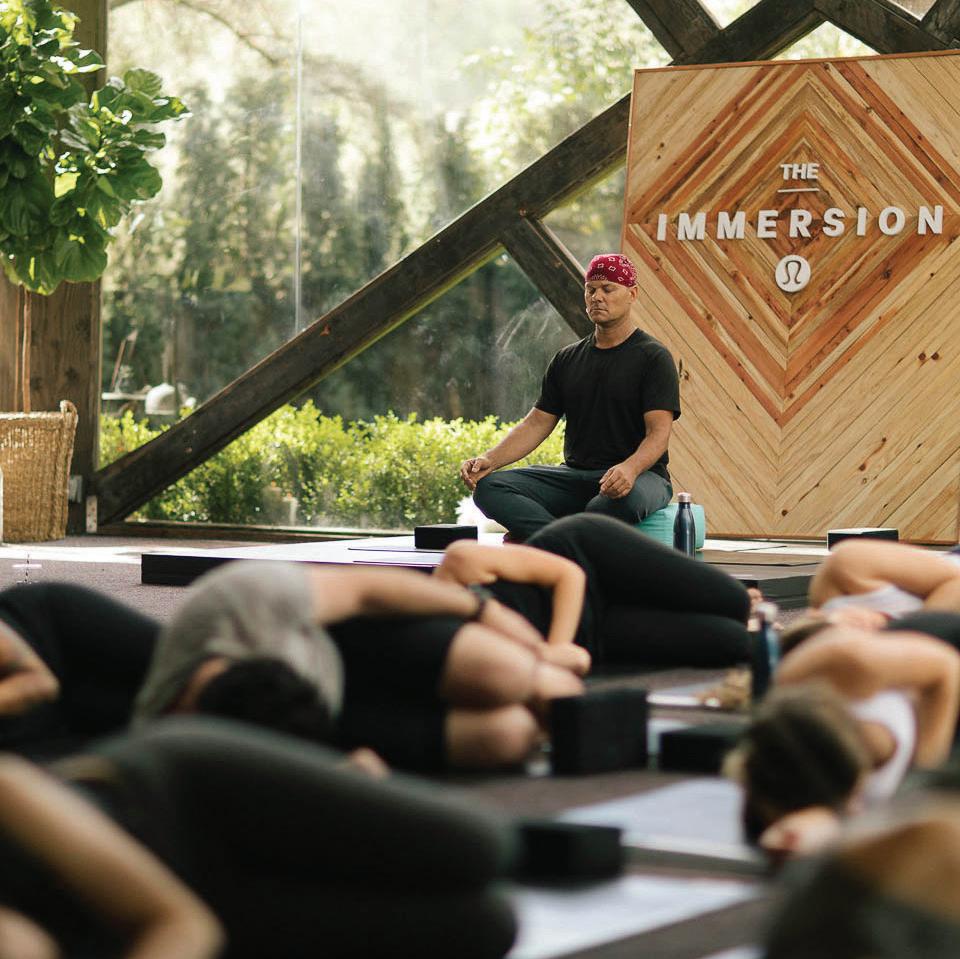
In Thailand, at Thanyapura Health & Sports Resort, guests can train like elite athletes across various disciplines, with help from integrative health care and expert coaching. Closer to home, Emirates One&Only Wolgan Valley in the NSW Blue Mountains has recently launched the Wolgan Warrior Adventure Challenge , an exclusive 21-kilometre trail run available to only 10 guests each month. It is a change of pace for the conservation-based nature resort, but is certainly in keeping with industry trends.
If consumers are seeking healthier travel experiences, then it stands to reason they would also welcome healthier travel. To that end, wellness is already infiltrating the journey itself. Airports around the world are increasingly equipped with fitness and wellness services. Be Relax spas, located in more than 52 airports across the USA, Asia, Europe and the Middle East, offer relaxation and beauty treatments; ROAM Fitness, a gym and wellness centre located behind security at Baltimore/ Washington International Airport, has plans to expand across the US; and Sanctifly is a game-changing app that grants air
travellers access to nearby health and fitness services, including airport hotel facilities, while in transit.
In-flight health programs could also be en route. A modular plane design, created at Airbus’s Silicon Valley outpost, A³, would allow aircraft to be quickly and easily customised and includes cabin modules such as a spa, a yoga studio and a gym. For now, though, in-flight stretches and aisle walks will have to suffice.
Wellness is also being elevated where it was once merely an afterthought. In-room yoga mats, health-focused menus and sleep aids are among the myriad touches working their way into mainstream hotels. InterContinental Hotel Group launched EVEN Hotels, an offshoot chain designed to meet the needs of wellness-minded travellers, in 2012. In the same year, Westin Hotels and Resorts launched its RunWestin program, providing guests with scenic running routes and a unique sneaker-lending program. >>
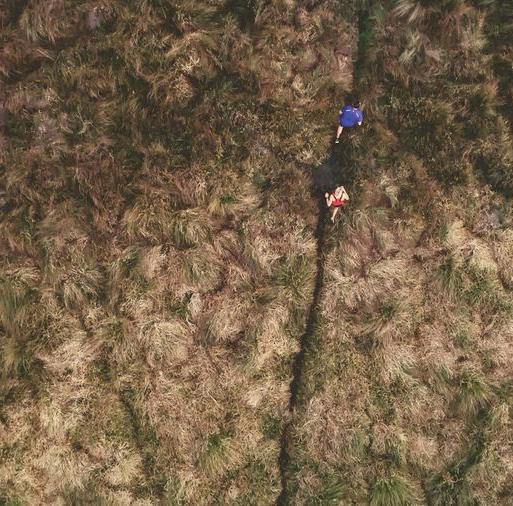
“No longer satisfied with the standard resort pool and gym, consumers are now demanding intensive programs, celebrityendorsed experiences and inventive fitness challenges.”

“We’re all about trying to keep a human body healthy [and] it’s not like the people who work at a health retreat are immune to the challenges and temptations of life. We’re all in it together.”
 SHARON KOLKKA General Manager and Wellness Director at Gwinganna
SHARON KOLKKA General Manager and Wellness Director at Gwinganna
Such initiatives, and their proliferation, aren’t just good for guests, they’re good for society. Some (detox-friendly) food for thought: globally, the population aged 65 and over is growing faster than all other age groups; healthcare costs are rising faster than GDP in most developed countries; and the United Nations has predicted a global health-worker shortfall of 18 million by 2030.
Healthy ageing has never been more critical and this, according to Sharon, is one reason why wellness is here to stay.
“What we’re doing [at Gwinganna] is not rocket science,” she says. “What we’re doing is we’re capturing information, we’re sharing that information and we’re focusing our attention on a how our human health is impacted by a lifestyle.
“Will that become mainstream? I think it has to because we’ve got an ageing population and in that ageing population we are going to have more old people than we’ll have younger people, which essentially means the economy will not float unless all those people are functioning.”
In a saturated wellness market, it can be challenging to choose the right wellness provider. There is currently no regulating body or certifications to help, but there are industry awards that usually point travellers in the right direction.
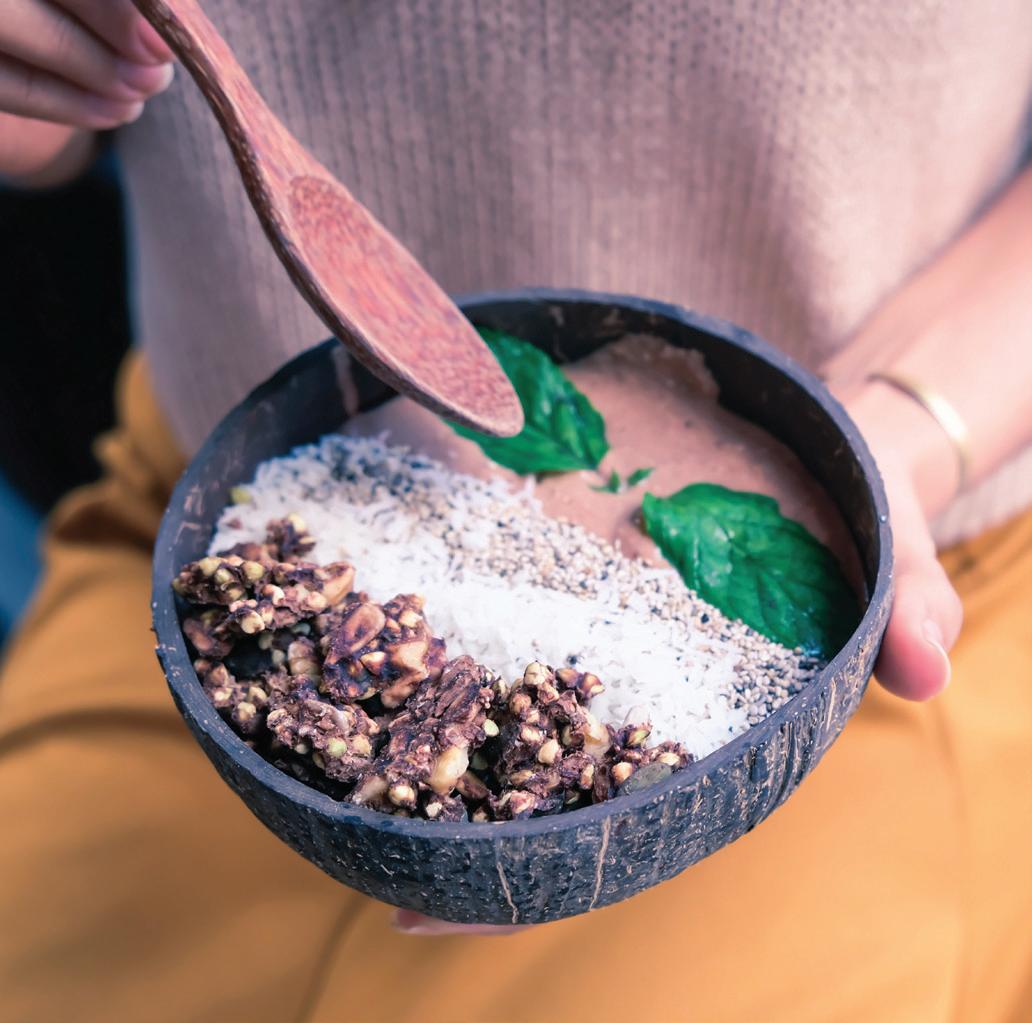
No stranger to such accolades, Karina suggests conducting some research before booking a new health retreat and ensuring staff hold the appropriate experience and, where necessary, qualifications.
“Any time something catches on… and becomes a hot trend, so to speak, there are always people who are opportunists and they will use the right language and they will use the right imagery and they will use all those things,” she says.
“You have to look at the depth and quality of the people behind the wellness component. Is there depth? Is there know-how? Ask those questions because I know of… places throughout the world where… they get hold of an idea and they implement it and it’s kind of faddish and you can really hurt your health.”
At Kamalaya, where treatments can include reflexology, sound healing, reiki, Japanese acupuncture, blue light energy healing,

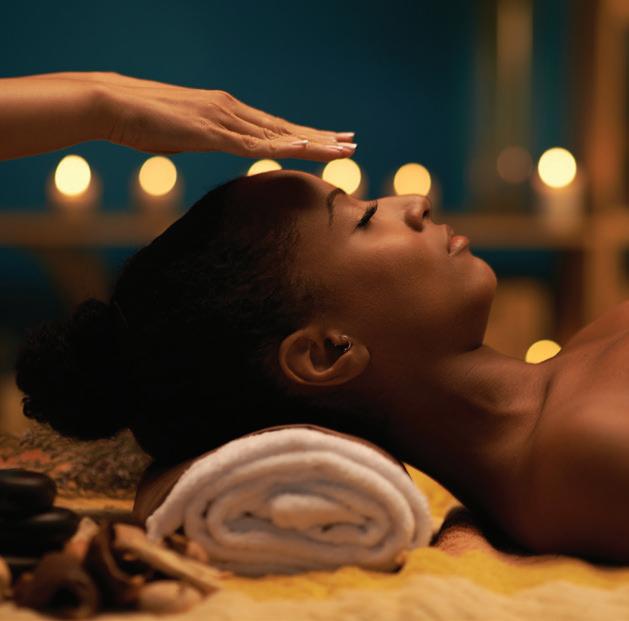
18M
The global health-worker shortfall by 2030, as predicted by the United Nations
craniosacral balancing, kinesiology, cognitive behavioural therapy – the list really does go on – programs are tailored to the specific needs of guests.
Similarly, Gwinganna is broad yet focused, and openmindedness is a true asset for both staff and guests.
“It is a privilege to be involved in people’s lives in this way, but it’s also really important for me and my team to maintain a nonjudgmental approach,” explains Sharon. “We’re all about trying to keep a human body healthy [and] it’s not like the people who work at a health retreat are immune to the challenges and temptations of life. We’re all in it together.”
LONG CELEBRATED FOR ITS WELLNESS CREDENTIALS, SIX SENSES NINH VAN BAY, ON VIETNAM’S EAST COAST, IS ALSO PUTTING SUSTAINABILITY AT THE FOREFRONT OF ITS CONSIDERED APPROACH, DISCOVERS KAITLIN JANE
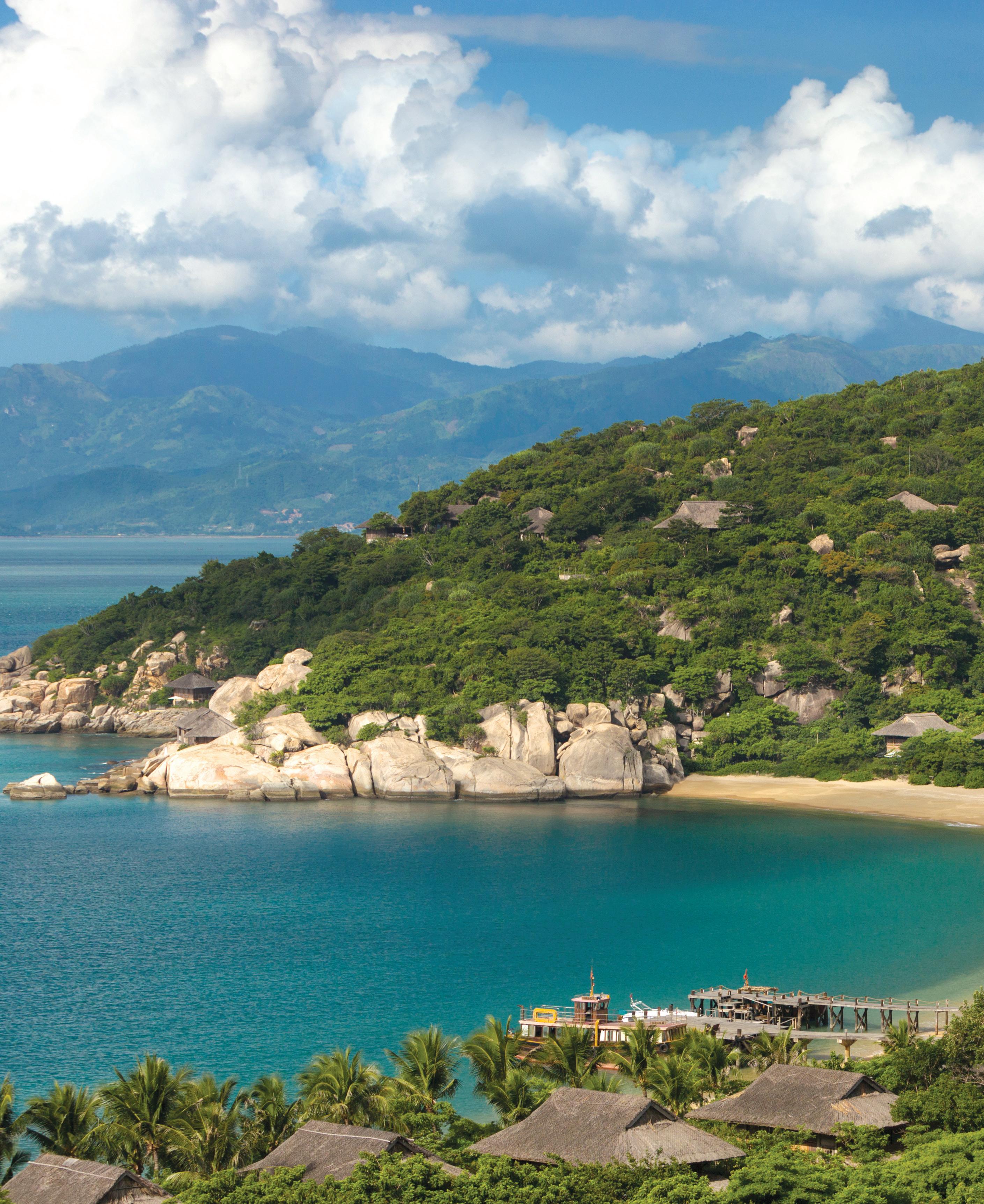
THERE IS A SOUND SYSTEM THAT PLAYS MEDITATION music in the afternoon. That’s not surprising, I suppose. I am at Six Senses Ninh Van Bay in Vietnam, part of the resort chain renowned for its commitment to all things wellness. But I am not in my villa. And I am not in the pavilion. I am in the chicken coop and yes, the music is for the chooks.
It’s more of a chicken palace, truth be told. There’s a playground, obstacle course, perches galore, and even a chicken bar complete with crystal chandelier. I reach into one of the nesting boxes and grab a couple of still-warm eggs, place them in a woven basket and hop on my bicycle to deliver them to the chef for my breakfast. Forget about meditation and yoga, I think this might be the best morning routine ever.
Accessible only by boat, Six Senses Ninh Van Bay is just north of the popular tourist resorts of Nha Trang, but you would never know it. With hectare upon hectare of jungle, 700 meters of white sandy beach and a backdrop of towering mountains, it feels like I have entered Jurassic Park. But I don’t think even Universal Studios could create the stunning scenery that surrounds me here.
The resort’s 59 villas, all with private pools, have an opulent Robinson Crusoe-vibe with thatched roofs, ruggedly hewn timber walls, an outdoor shower, giant wooden soaking tub and bamboo accessories.

Along with the 160 happy chooks (and 20 roosters to keep order), there are 1800 square metres of organic vegetable gardens that produce more than 40 varieties of edible plants for the kitchen. Next to the garden stands an oil distillery, which produces organic lemongrass, cumquat and eucalyptus oils for the spa. Four solar panel stations provide hot water, and a wastewater treatment plant produces grey water for the gardens. Then there’s the water filtration system, fed from a nearby reservoir, that uses reverse osmosis for the glass-bottled drinking water. Energy and water use, vegetable production, even the crownof-thorn starfish numbers are monitored and posted on a large sign at the ‘Earth Lab’ for resort guests to see. Transparency is a significant part of Six Senses’ sustainability game.
Impressed by these efforts, I scour my villa for anything offbrand – single-use plastics or anything that isn’t ‘zero waste’ –and the only thing I can come up with is one shower cap. Bravo.
Riding my bike along the dirt paths surrounded by ancient boulders, I half expect a dinosaur to emerge from the lush, dense jungle. Cruising around on the bike, complete with a personalised name-plate, is a highlight for me, but if biking is not your thing, you can always call for a buggy.
As with all Six Senses properties, nature takes centre stage at Ninh Van Bay, and my trek to Bai Nho is by far the best resort hike I have ever done, despite stiff competition. For two hours, my guide Ninh and I traverse hilltops, walk across the top of narrow stone walls, clamber over giant boulders, and scurry backwards, rope in hand, down steep ravines. We end up on the top of Hon Heo Mountain overlooking the bay before joining a family of langur monkeys on a private beach where we are picked up by boat and taken back to the resort. I highly recommend it if you enjoy a bit of a challenge and are reasonably fit. It was absolutely incredible and I couldn’t wipe the smile off my face.
Not a hiker? Not a problem. There are dozens of activities on offer from romantic sunset cruises on traditional wooden boats to temple and shopping excursions back on the mainland. >>
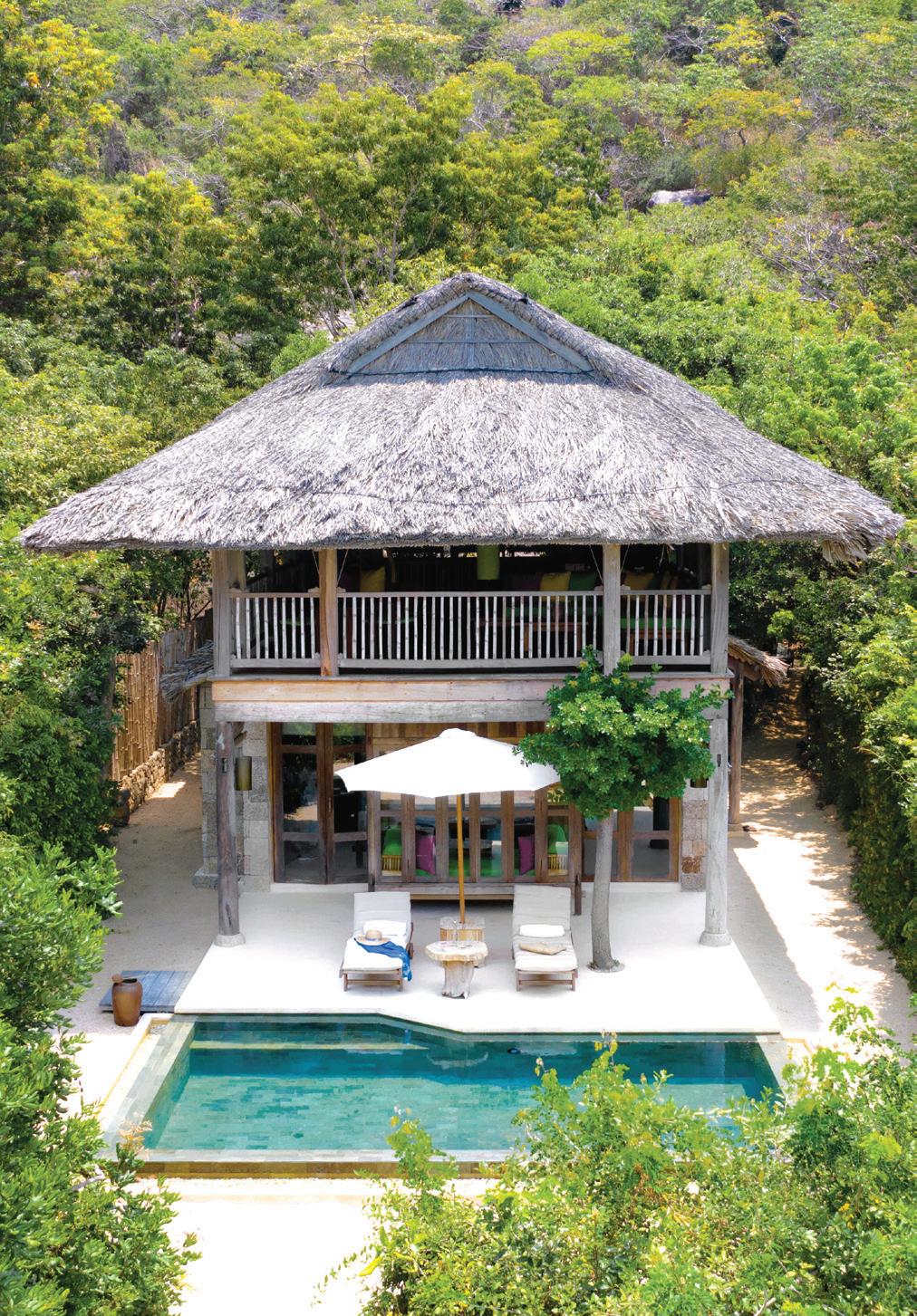

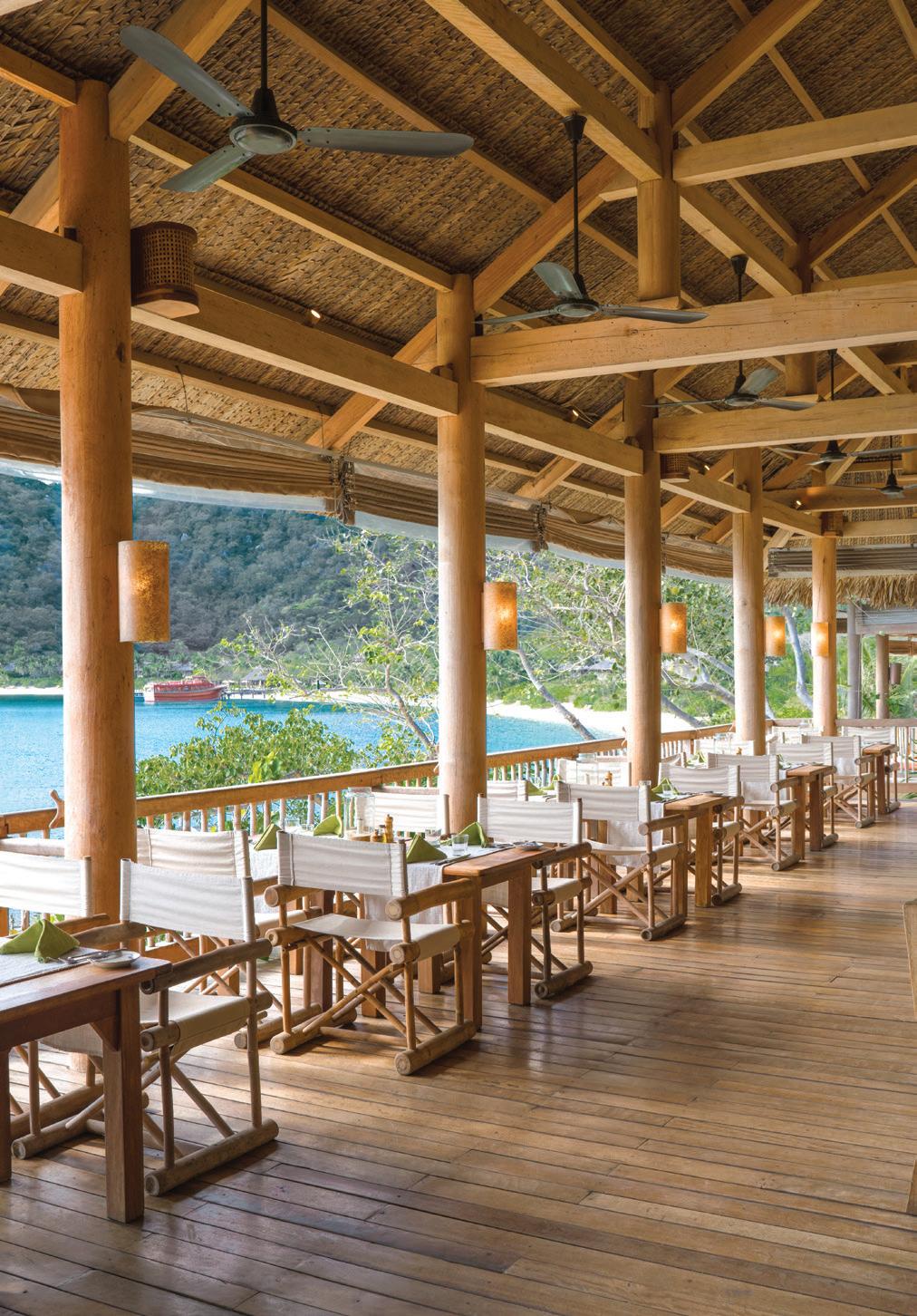
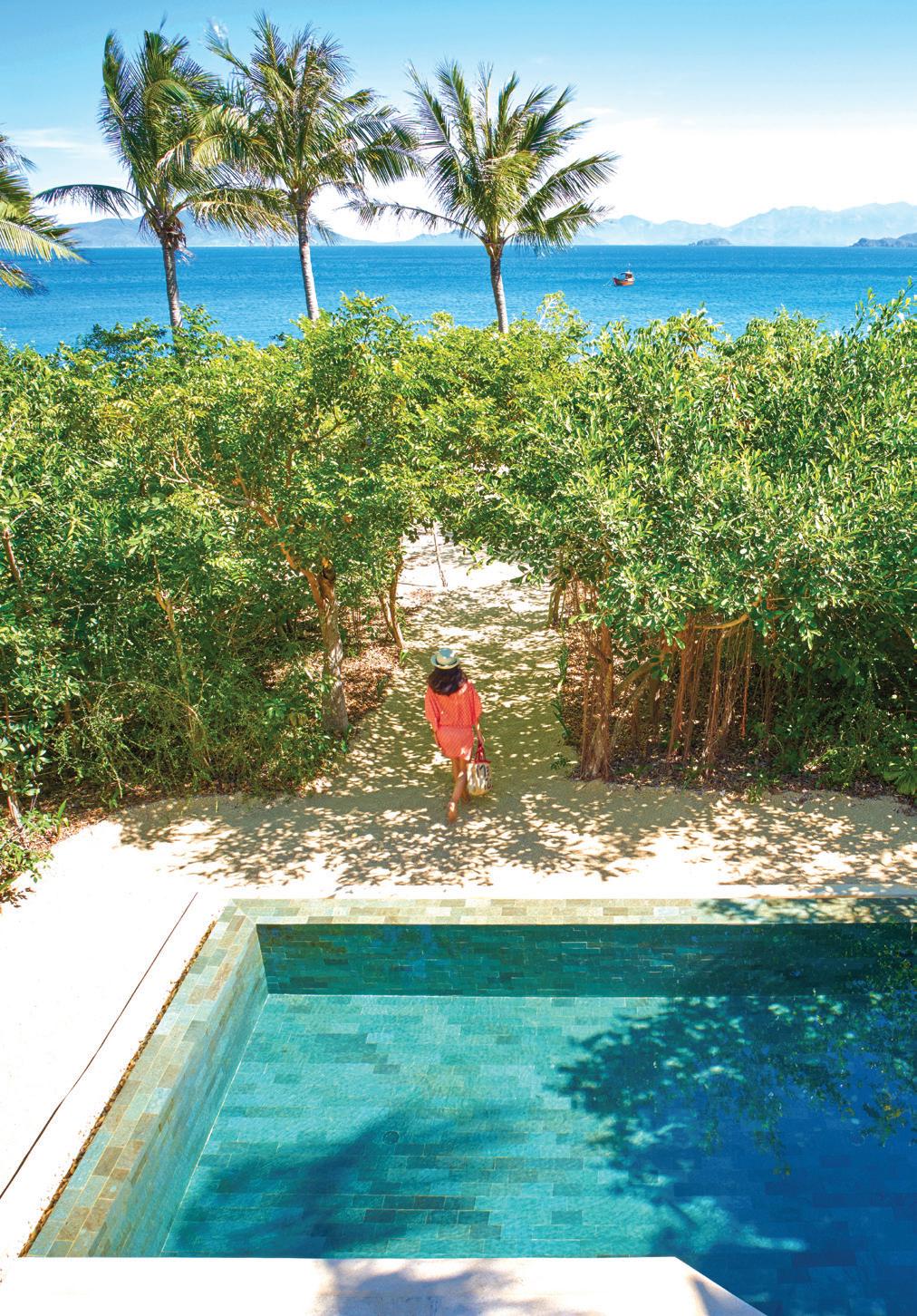
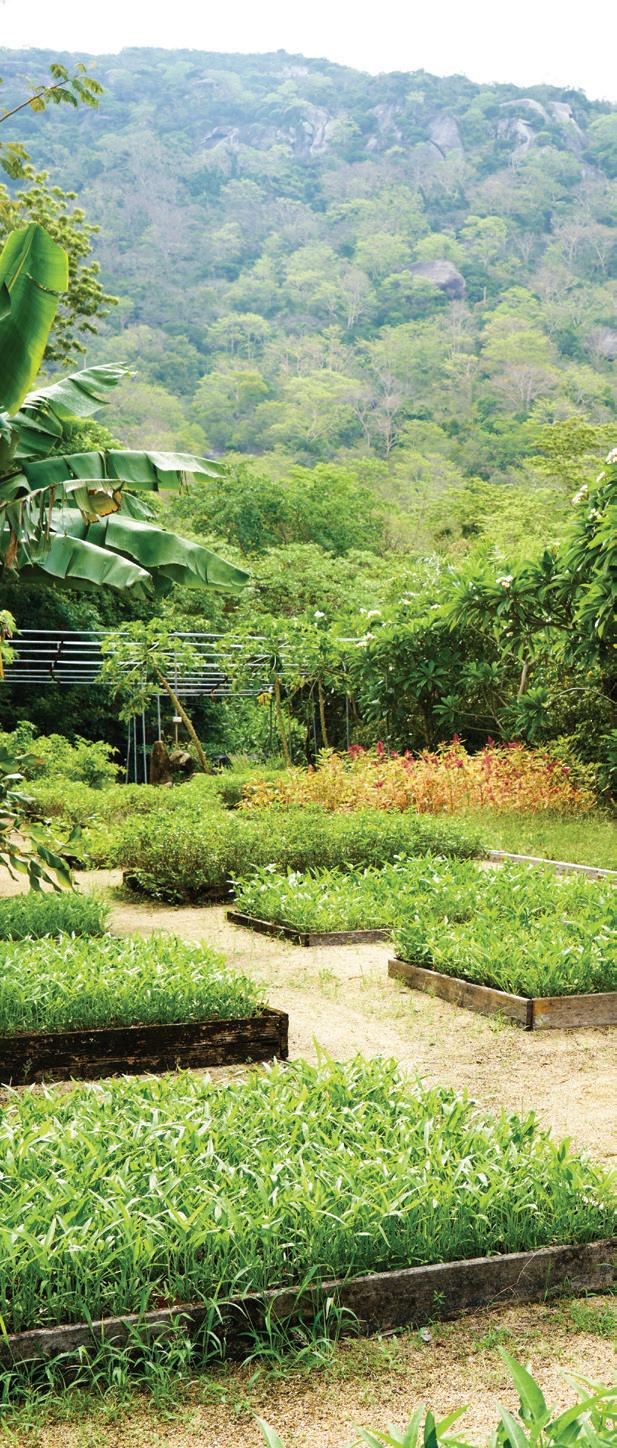
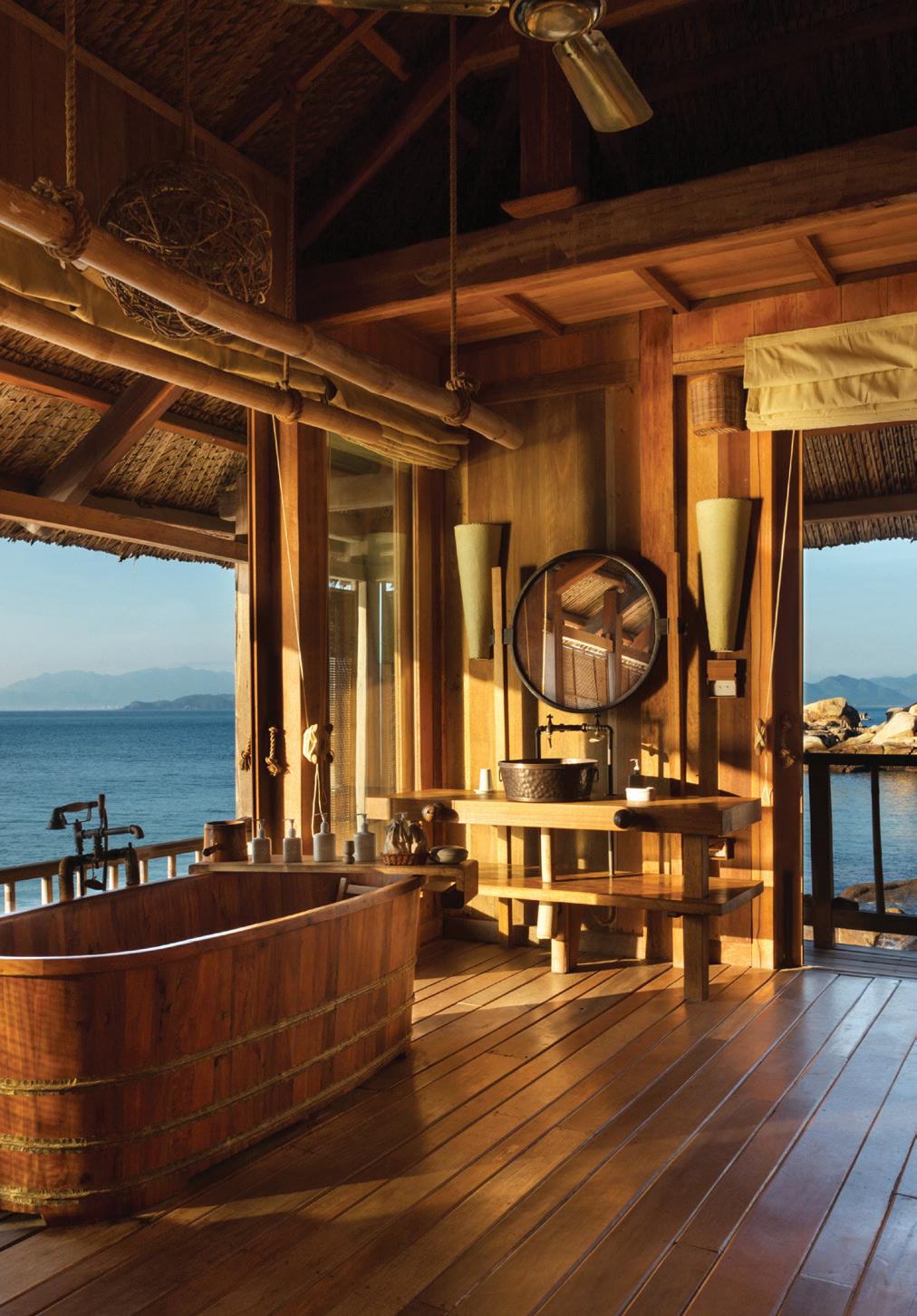
Of course, wellness is important at Six Senses and the spa has recently been renovated, adding a new gym and several extra treatment rooms, along with a steam room and sauna that overlook a waterfall. Whether it’s trying an aerial yoga class in the new yoga pavilion (more challenging than I thought), indulging in a relaxing massage, or meditating to the sounds of the singing bowls in the glass meditation space overlooking a stream, I kept finding reasons to return to the spa.
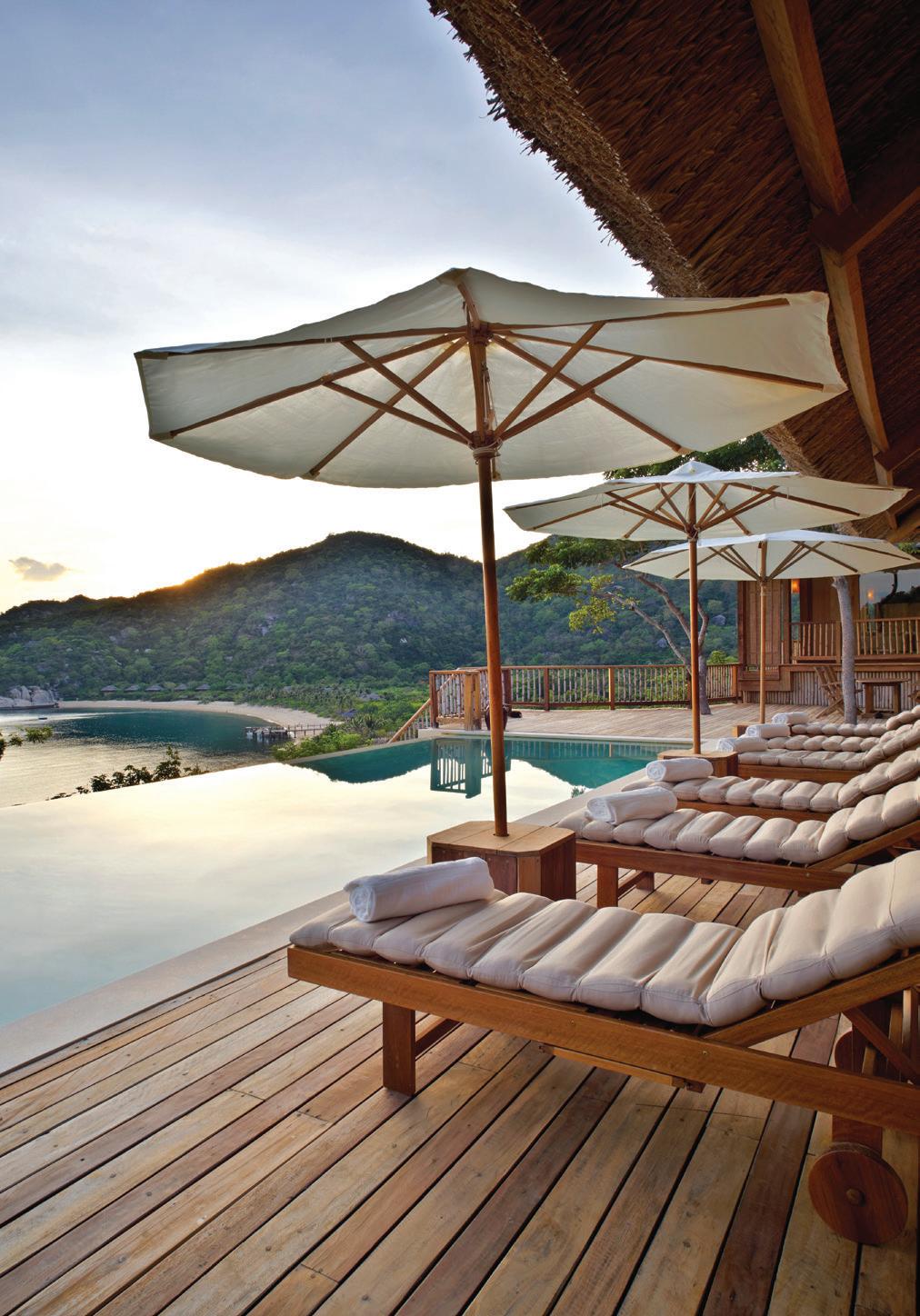
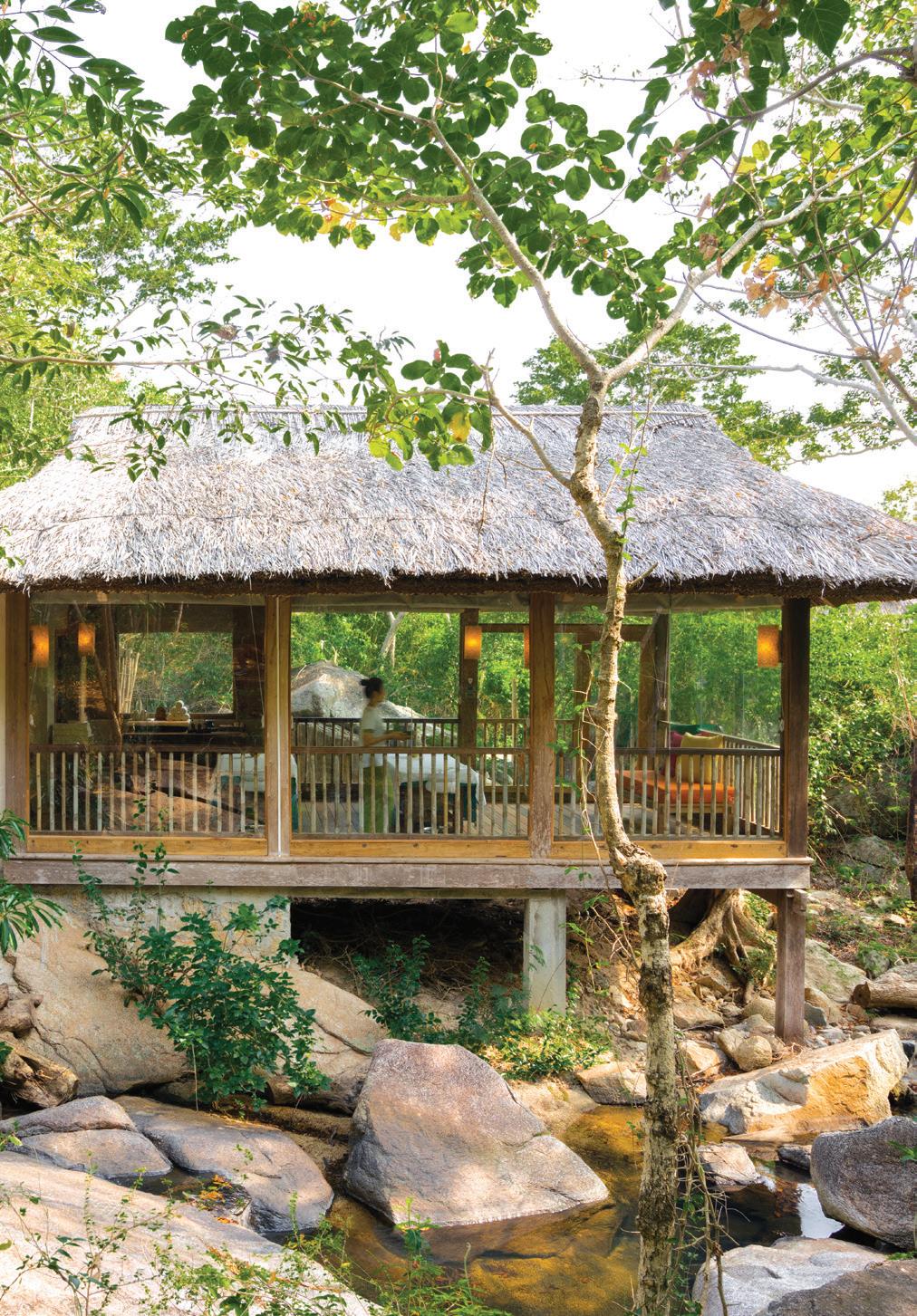
After meeting with on-site naturopath Dr James Aravind from India, I decide to add a wellness program to my stay. My consultation begins with a non-invasive health screening to measure key physiological biomarkers of health, including metabolism, cardio fitness, circulation, hydration and oxygen distribution, and the results are used to prepare an individualised program. I was a bit skeptical at first. I wasn’t sure how putting my hands and feet on a tablet-type machine for a few minutes was going to produce the information I normally get from a blood test. But after going over the results with Dr Aravind, it was amazing to see that the health issues identified were the same problems my GP at home had previously highlighted, although they were explained to me in far greater detail than my doctor would ever have time for.
Eat with Six Senses is another initiative focusing on good health. Head chef Alex has been with Six Senses for four years and explains the three guiding principles: food should be local, seasonal and sustainable; cooked from scratch using natural ingredients; and uphold the idea that ‘less is more’ in terms of how far ingredients have to travel. Most choices on the menu fall under this program, which make it easy to stay healthy and still enjoy fabulous food. Meals are fresh and flavourful and can be enjoyed at four different venues (along with in-room dining). The main dining area, Dining by the Bay, has a focus on Vietnamese specialties like pho, and local seafood, but there are also favourites such as grilled Australian beef, duck and braised pork belly. For something intimate, reserve the candlelit wine cave, an authentic hillside rock cavern that is bound to heighten the senses. Dining by the Rocks is the signature restaurant, its clifftop location overlooking the bay making sure of that. To reach the fine-dining, adult-only venue, you’ll need to climb 163 stone steps, but both the view and the meal will make the effort worth your while. For casual all-day dining, check out Dining by the Pool, and don’t miss the complimentary ice-cream bar and coconut-water station next door.
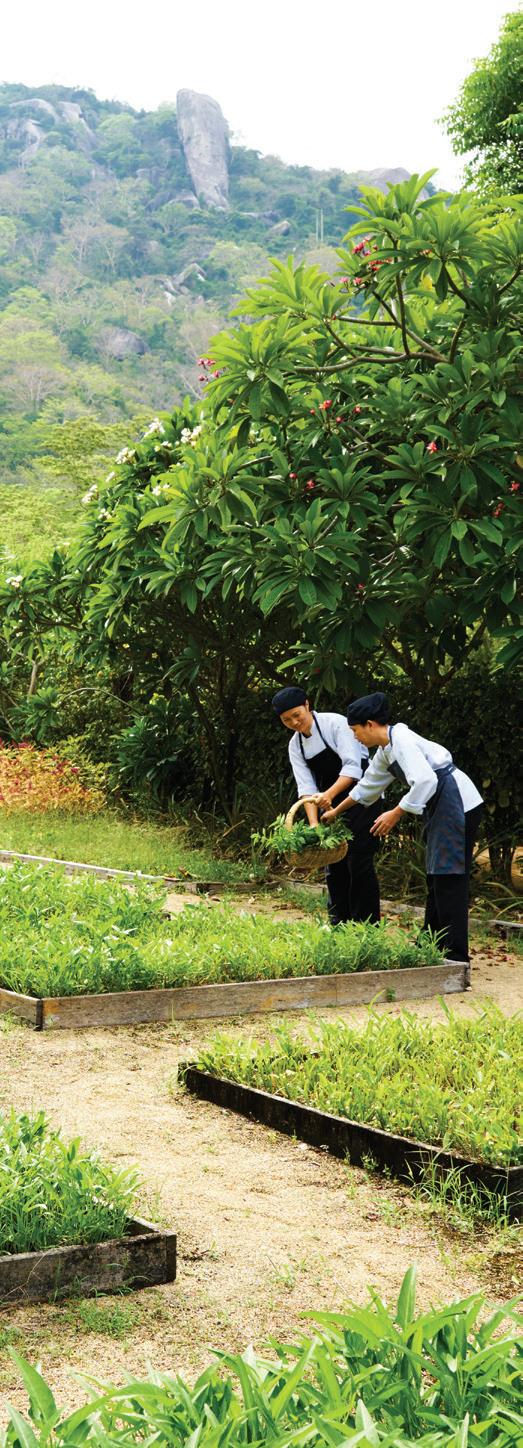
As for my new health regimen, Dr Aravind advises I stay away from excess sugar (goodbye ice-cream), drink more water and take up meditation to relieve stress. The good news is my cholesterol is fine, so those visits to the chickens for fresh eggs each morning continue. And so, too, the beautiful state of calm the simple daily ‘chore’ inspires.

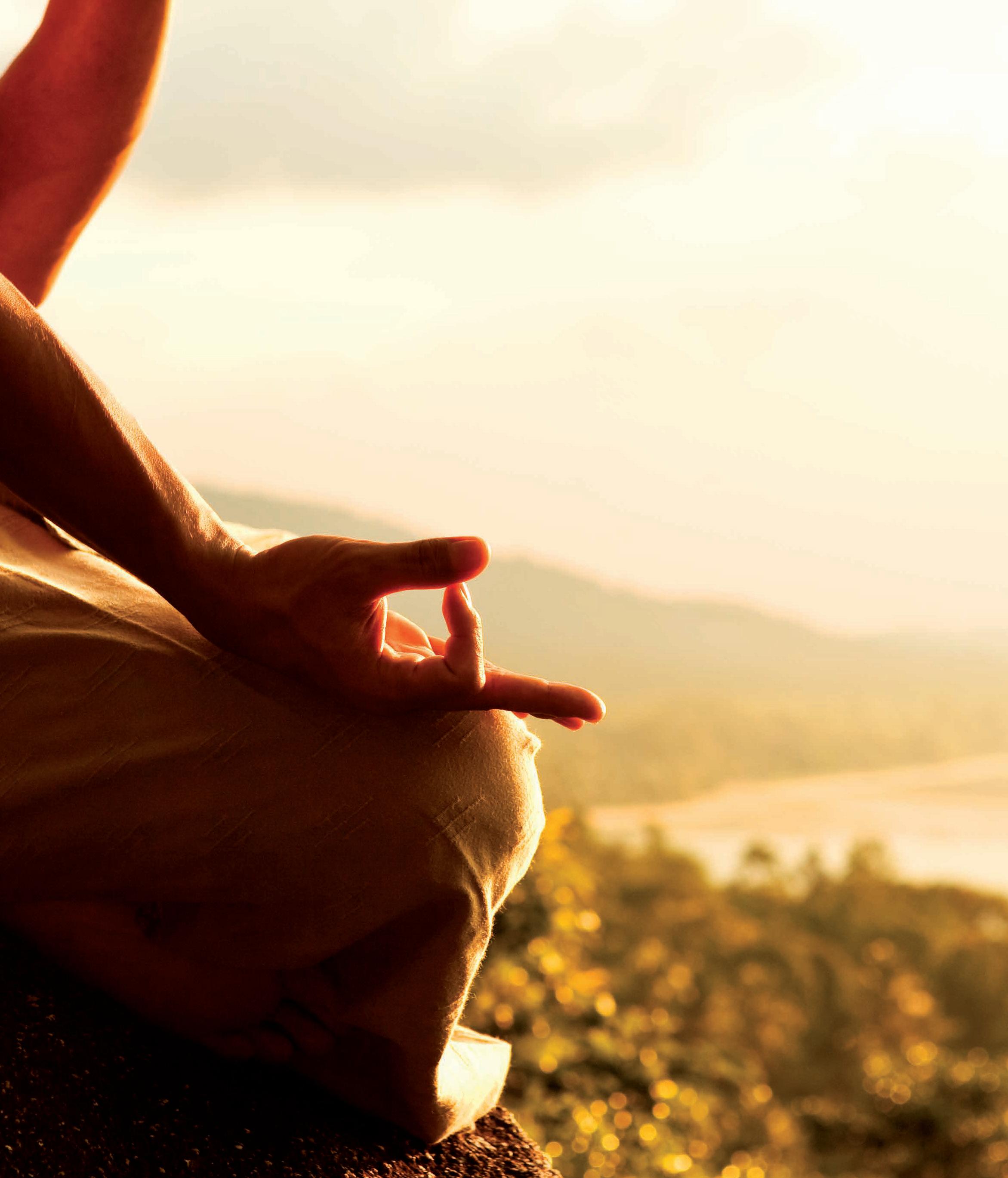







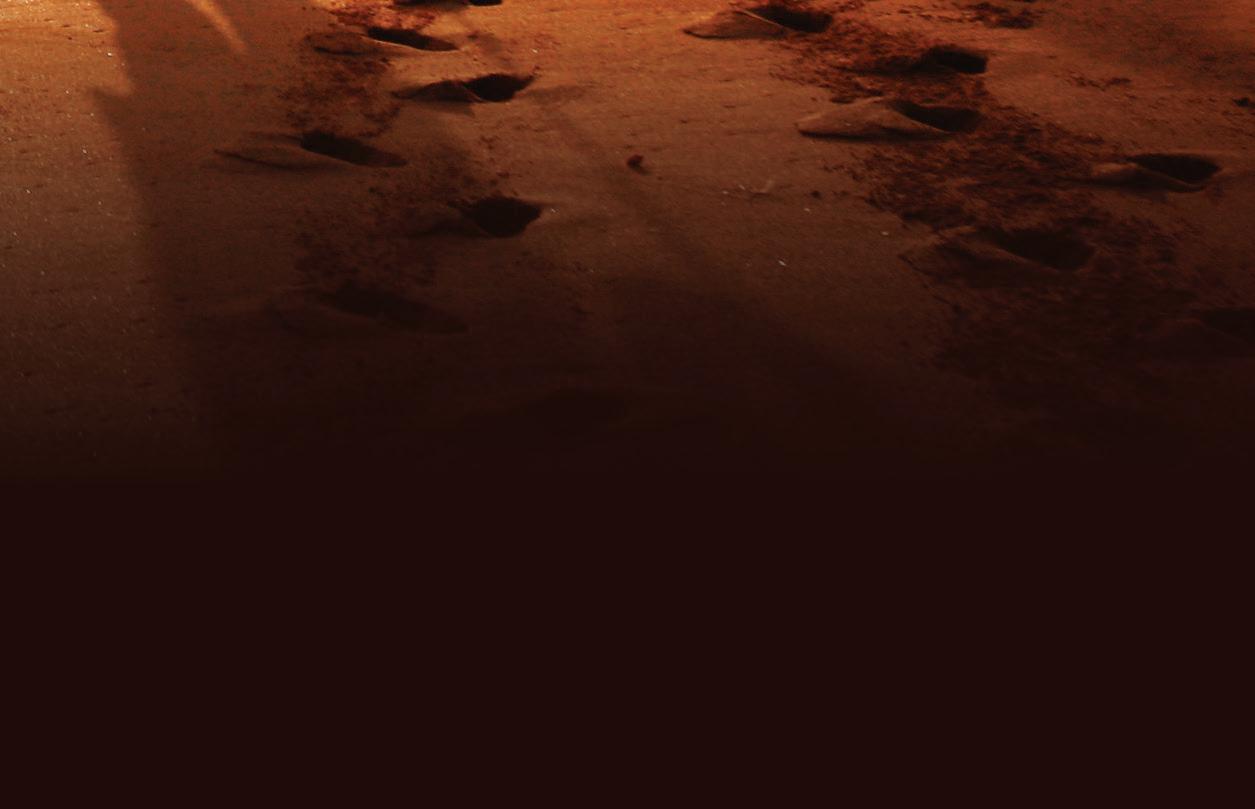
DRAMATIC AND MESMERISING, THE 12 APOSTLES IS ONE OF THE COUNTRY’S MOST RENOWNED ATTRACTIONS. AS KELLY ALLEN DISCOVERS, THE JOURNEY CAN BE JUST AS REWARDING AS THE DESTINATION
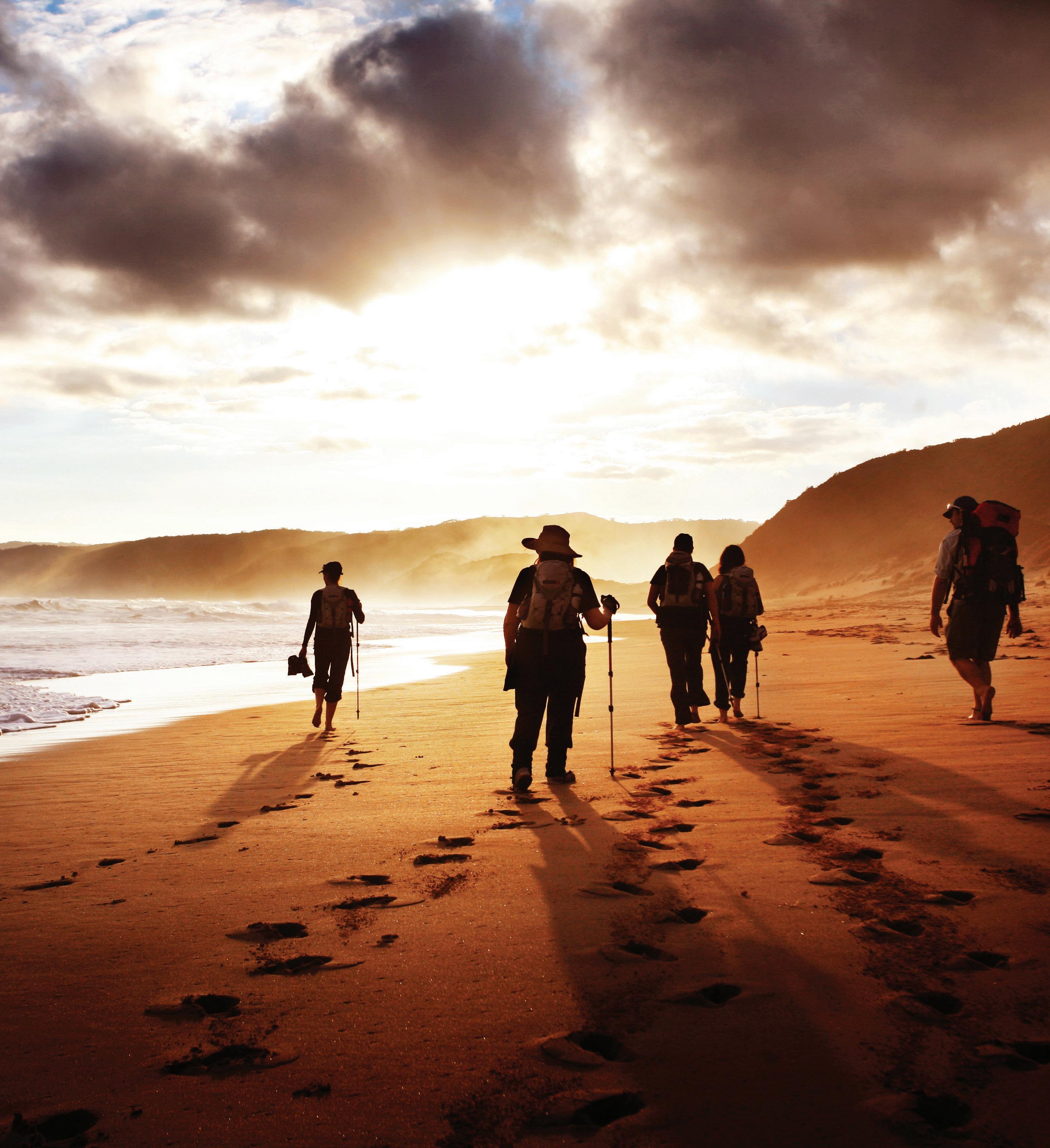
WE’RE BARELY 45 MINUTES INTO WHAT PROMISES TO BE four incredible days on foot when I nearly step on a copperhead snake sunning itself in the middle of the path. Our guide Hugo has unknowingly stepped around it, but those behind me freeze as I stop dead in my tracks and yell “SNAKE!” Before I can get my camera out, he slithers into the bush. The next couple of hours are spent on alert, but it turns out to be a one-off sighting. Of snakes, that is.
As well as my slithery friend, echidna, kangaroos, fairy penguins, whales and myriad birdlife are among the creatures to be sighted on this 50-kilometre section of one of Australia’s most scenic walking trails, the Great Ocean Walk. At 104 kilometres from start to finish, the entire trail takes about eight days. You can certainly complete it on your own if you don’t mind organising food, water, accommodation, heavy packs and the like. But, as
much as I like to think of myself as a nature-loving, tree-hugging adventurist, at the end of a long day of hiking I’m partial to a hot shower, comfy bed, and delicious food and wine… that has been prepared by someone else. And a light day pack is much easier on the body than lugging a heavy backpack through the bush for up to seven hours at a time.
The Australian Walking Company’s Twelve Apostles Lodge Walk encompasses the best of both worlds on their four-day/three-night hike exploring the last 50 kilometres of this track. Beginning at Castle Cove, the trail traverses long rugged coastline, dense eucalypt and tea tree forest, and lush fern gullies before finishing at the famous 12 Apostles with an incredible helicopter ride.
All you need is a pair of boots and a reasonable level of fitness (daily distances range from seven to 17 kilometres); everything else, from backpacks to walking poles and gaiters, are provided. >>
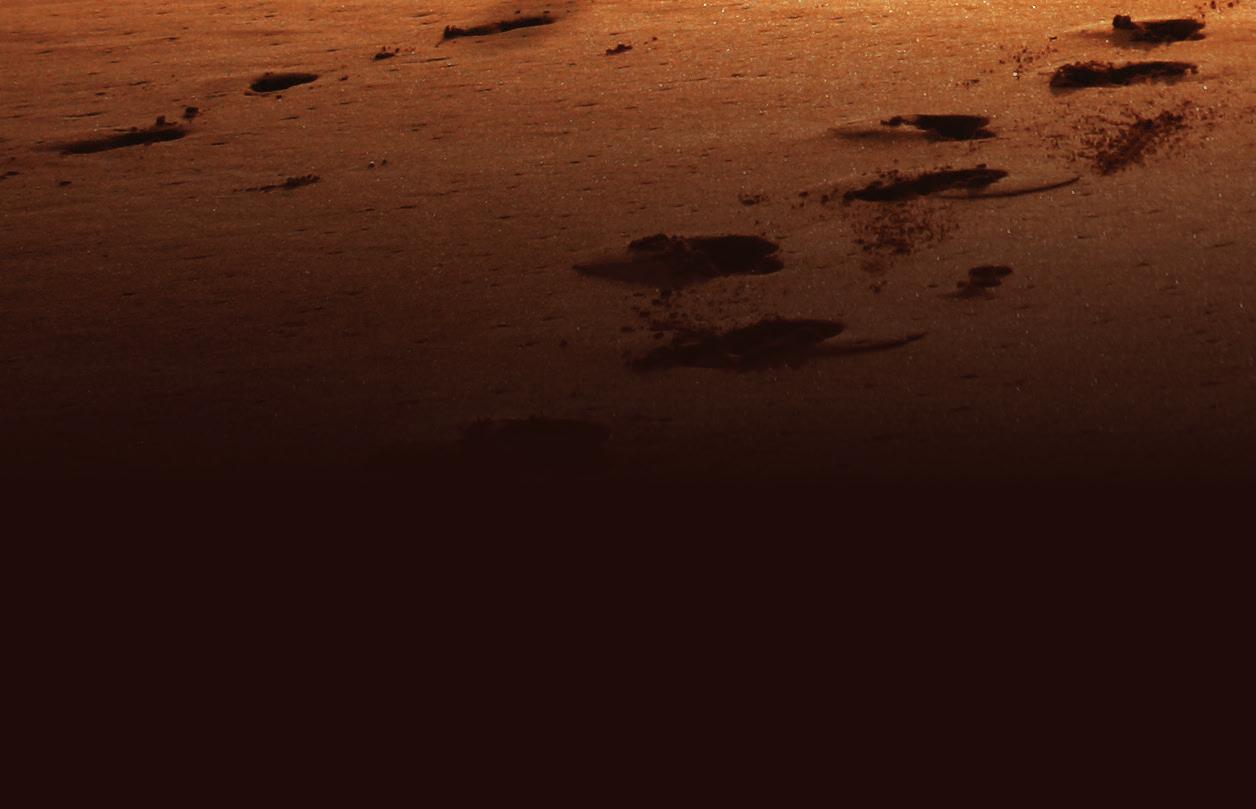
I can’t wait to unplug, ditch the phone, and enjoy the serenity that comes with the steady rhythm of putting one foot in front of the other. I’m breaking in a new pair of ECCO hiking boots after my trusty old boots finally died on the Overland Track last year (who knew boot glue didn’t last forever?) And the promise of meeting others who share my love of the outdoors is always a draw.
Day one begins three hours southwest of Melbourne at the eco-lodge in Johanna. Made up of five cabins, the lodge can sleep up to 10 guests with each room able to convert from a king to two singles by way of a sliding wall.
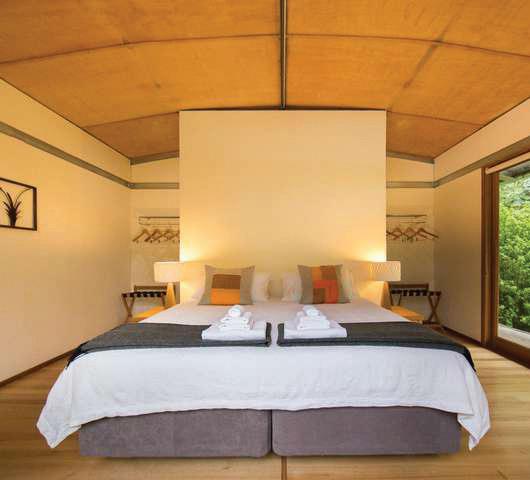

After meeting our guides, Tom and Hugo, we feast on a delicious lunch of spicy grilled fish on a bed of quinoa before heading out for an easy half-day hike, starting in the tea tree forest at Castle Cove and finishing on the sands of Johanna Beach. I ditch my boots for the two-kilometre walk along the shoreline, watching for hooded plovers nesting along the high-tide mark and enjoying the sand between my toes. I welcome the camaraderie that naturally forms
in our group, but also purposely lag behind at times to enjoy the sound of the ocean and give my busy mind a rest. Several members in our group of eight (the maximum group size is 10) are solo travellers, which isn’t uncommon. Walking trips are an easy way to travel independently without feeling like a third wheel.
At the end of each afternoon, the van is waiting for us and delivers us back to the lodge where we are spoiled with hot foot baths, tasty charcuterie platters, delicious local cheeses and dips or homemade pizza, along with local wines and craft beer – this is definitely better than camping.
Dinner at the communal table each night is full of laughter and discussion of the day’s events – snakes, blisters, bush tucker and ‘losing your keys’ (that’s trail talk for needing to lag behind for a toilet stop). I smile at how quickly friendships seem to form as we swap stories on a range of topics from travel adventures to politics. The campfire after dinner further encourages this connection as we relax around the open fire watching for shooting stars.
Day two is the toughest, covering about 15 kilometres and several inclines including the treacherous ‘Heartbreak Hill’, a steep grassy knoll that has us all huffing and puffing. It’s well worth it, though. The views of the wild Southern Ocean over the rocky headland are spectacular.
Tom and Hugo are brilliant at distracting us when the going gets tough and they sense we are losing steam, even if we do suspect they are sometimes fibbing to keep us walking (we never did see the echidna Tom swore was only 50 meters ahead).

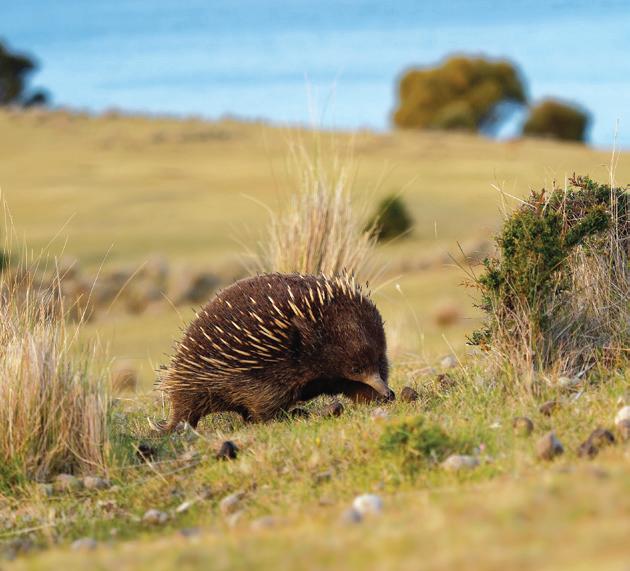
The history lessons, shipwreck tales, and knowledge of local bush tucker and the indigenous people that called this area >>
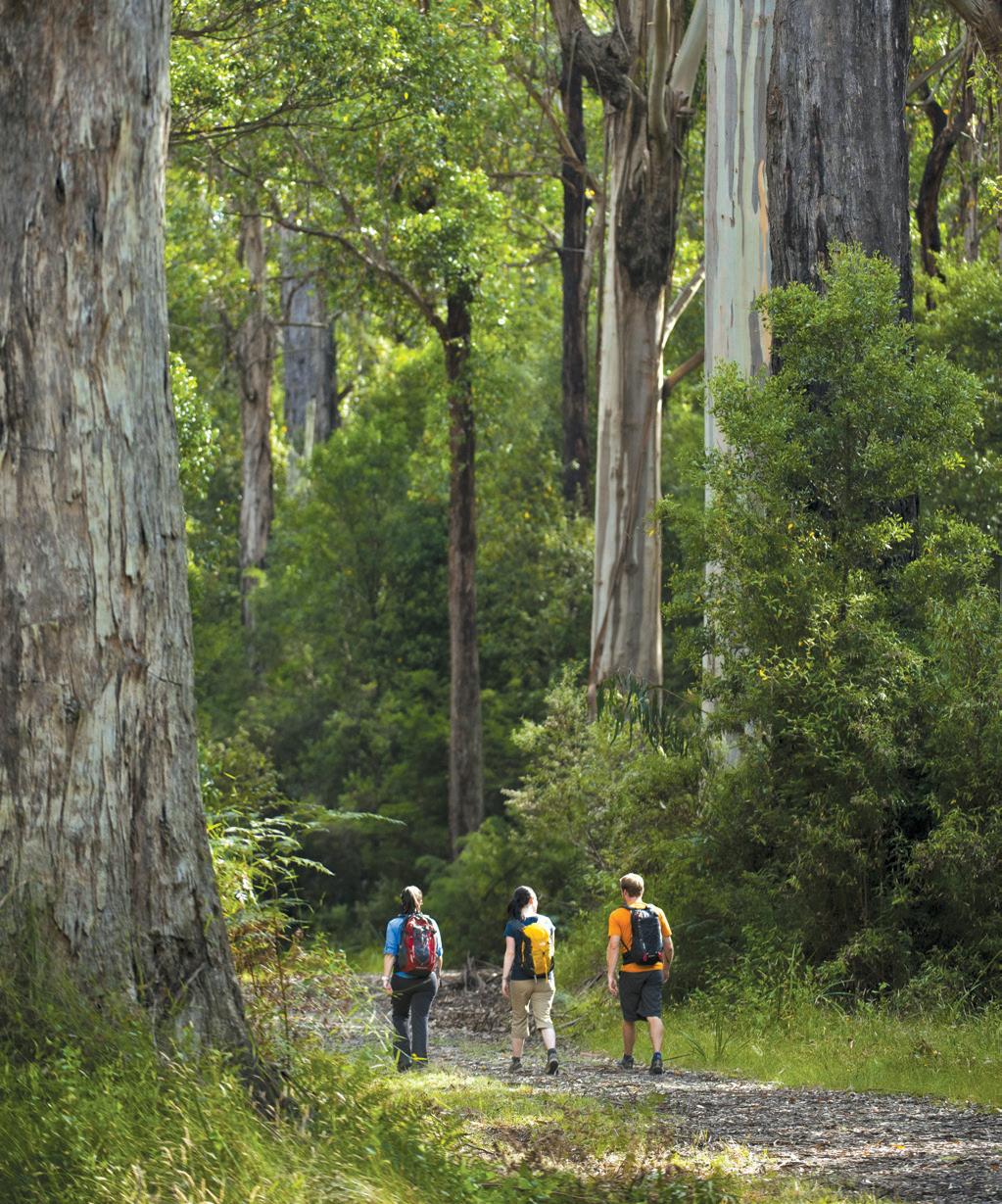
“I ditch my boots for the two-kilometre walk along the shoreline, watching for hooded plovers nesting along the high-tide mark and enjoying the sand between my toes.”
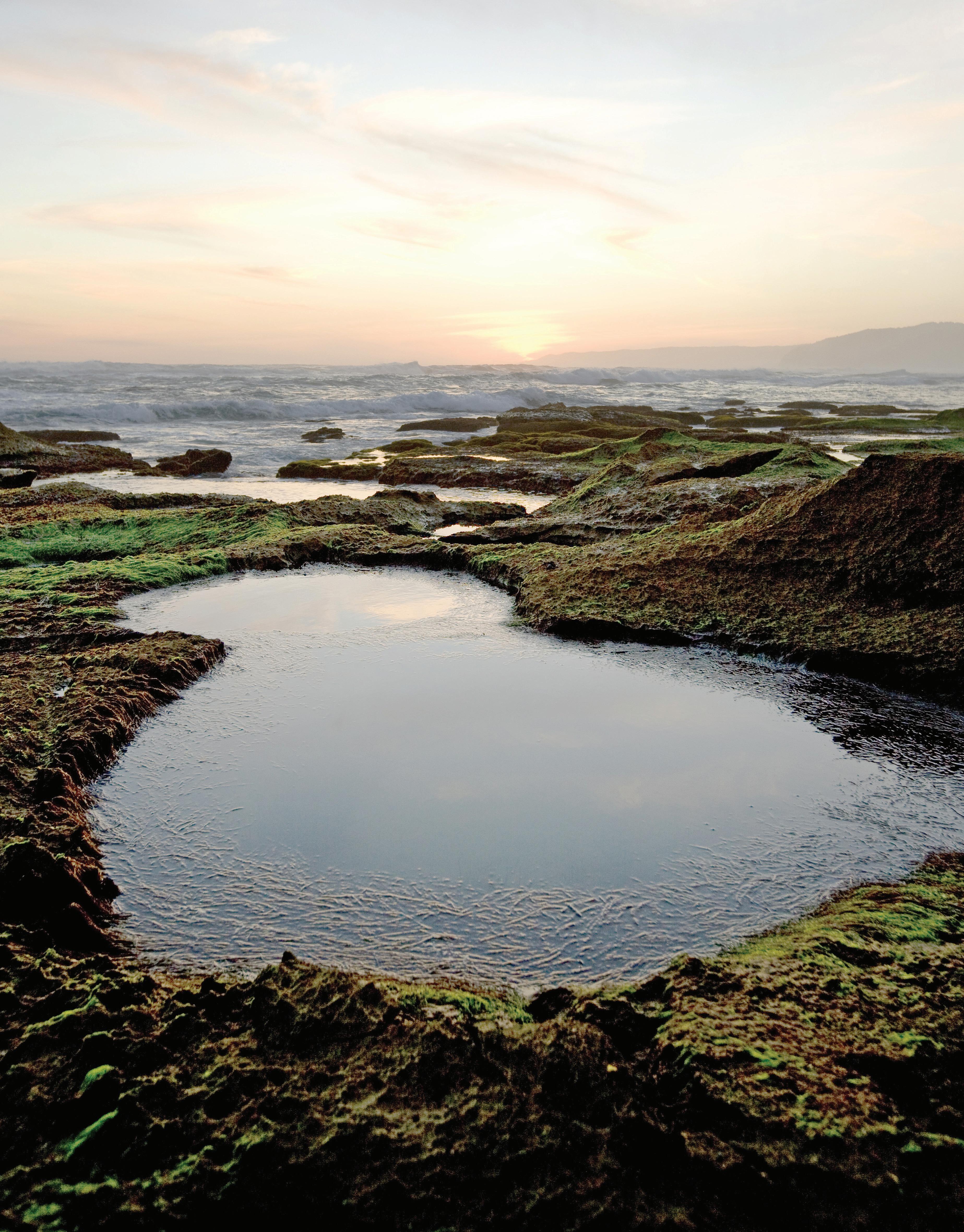
home further enhance the experience. There are blackberries and bower spinach on the path to snack on and I get chills when Hugo takes a moment to pay respect to the indigenous land owners, the Gadubanud, at morning tea. You can feel the energy of the people who had so much respect for the land we are exploring.
We make it through the toughest day and feel quite pleased with ourselves on the drive back to the lodge for a much-anticipated cold beer and three-course dinner. Meals are all impressive, but the dinners are a standout. Grilled salmon with roasted vegetables; lemon chicken and risotto with mint and peas; and, my favourite, slow roasted beef cheek ragu with tagliatelle followed by sticky date pudding. The portions are generous and despite all of the exercise, my hiking pants are feeling tighter.
Day three is my favourite, covering a similar distance to the previous day’s trek but without all of the ups and downs. After exploring Wreck Beach, with its half-buried anchors and various remains of the hundreds of shipwrecks this area is believed to have seen, we head deeper into the Great Otway National Park. Tom suggests a silent walk and we spend 45 minutes at a staggered pace through an area known as ‘The Enchanted Forest’. It’s easy to miss things when you’re busy chatting, but take the distraction away and a whole new world appears. From tiny insects to rosellas
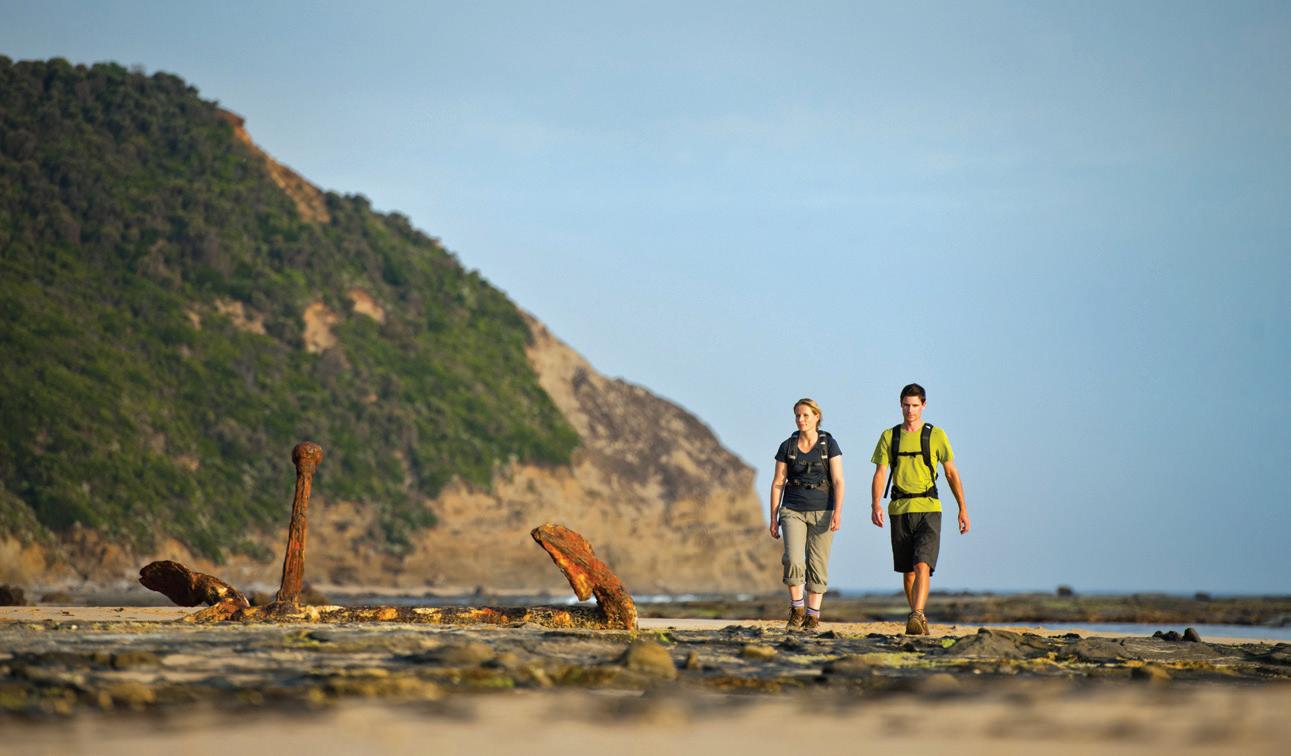
From top: The 12 Apostles viewing platform; yellow-tailed black cockatoo; helicopter is the ultimate way to take in the view; Wreck Beach.
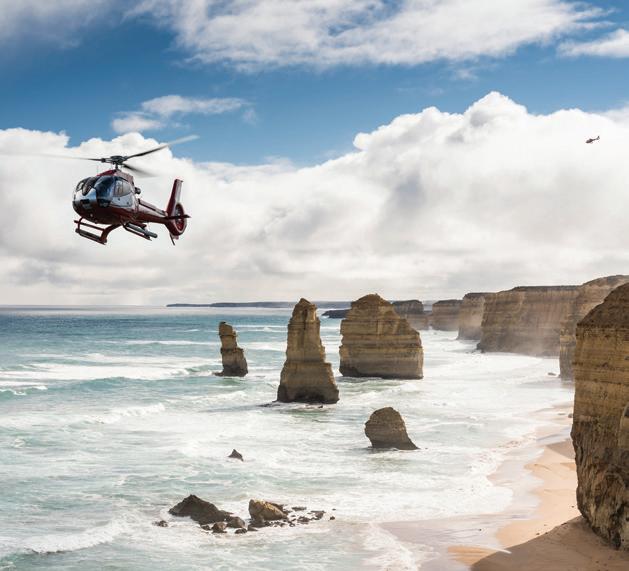
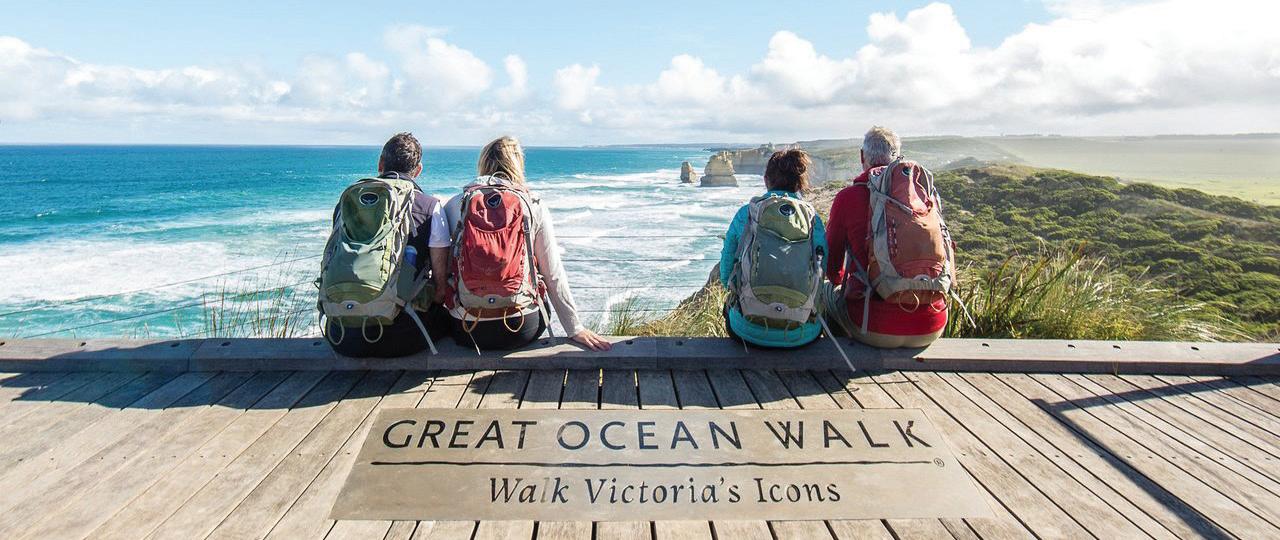
and yellow-tailed black cockatoo, the forest suddenly comes alive. The day ends with a revitalising dip in the Gellibrand River followed by a glass of bubbles and some local chocolate as we dry off in the sun on the riverbank.

On the morning of our final day we get our first full view of the magic 12 Apostles. After descending the 86 Gibson Steps, a steep passage down the cliff face carved by local settler Hugh Gibson, I feel dwarfed by the 70-meter-high cliff line and in awe of the two giant stacks known as Gog and Magog. While the view of the Apostles has been our goal of sorts over the past few days, the crowds of tourists are a jolt to the senses the closer we get. We have had the entire coast to ourselves, without the sounds of civilisation or technology, but as we approach the viewing platform, we have to watch out for selfie sticks and general chaos.
I’m pleased when Tom escorts us to the helipad for our 15-minute flight over the famous limestone towers. The view from above is better than I could have imagined, and as we follow along the coastline, it puts the trek we have just accomplished into perspective.
For the of your life...
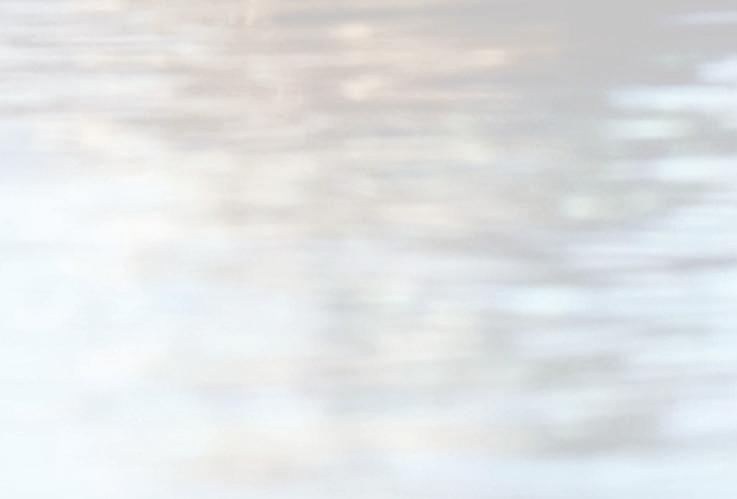




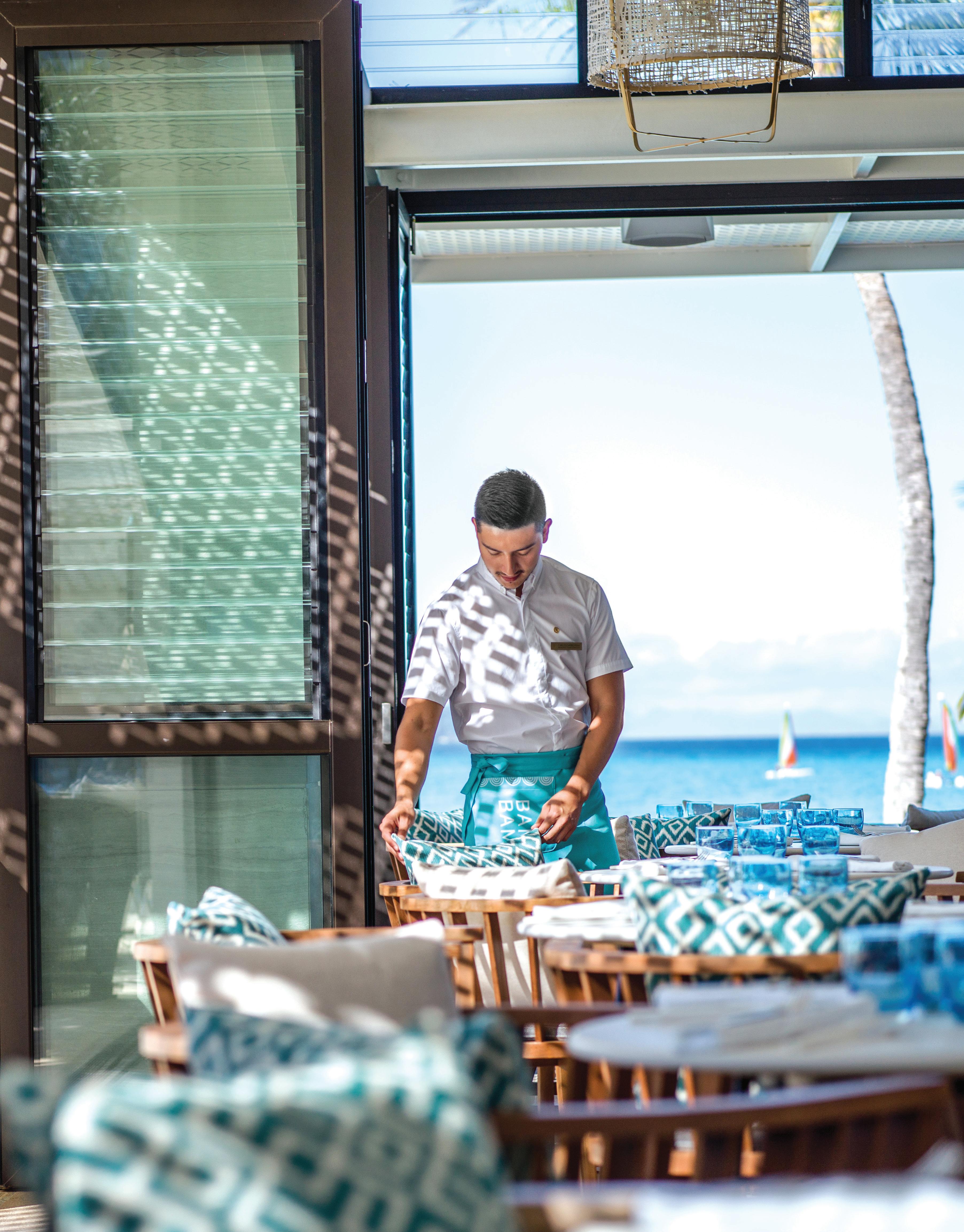
IT IS A RENOWNED HOLIDAY DESTINATION APPROACHING ITS 70TH BIRTHDAY, BUT THAT DOESN’T STOP THE SURPRISES FROM COMING AT INTERCONTINENTAL HAYMAN ISLAND RESORT, WRITES MADELIN TOMELTY
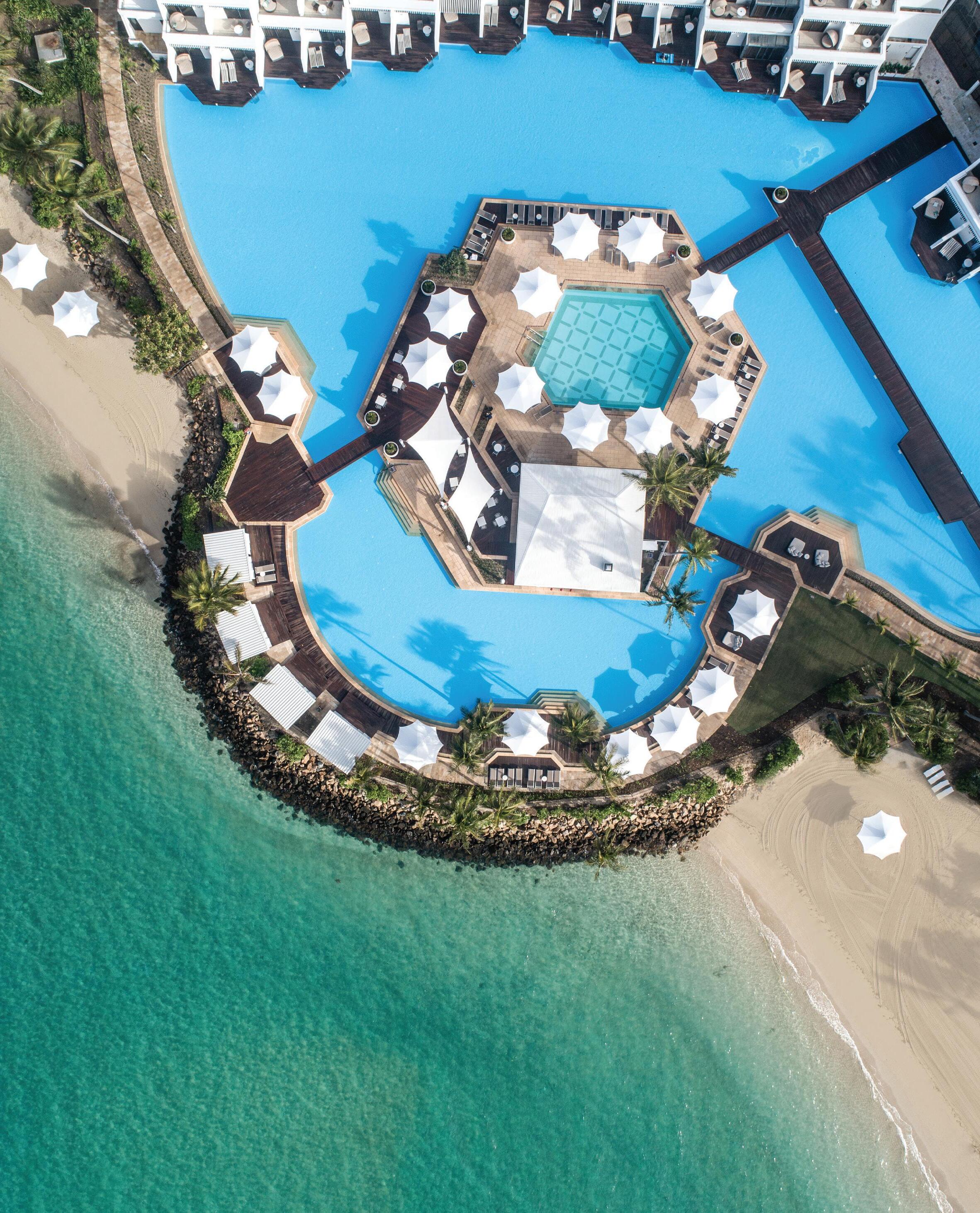
Imake it a rule not to shop when I go on holiday. Not because I don’t want to, but because for me, shopping in a new destination full of shiny, pretty things is like peeling the lid off a tube of Pringles – once I pop, I can’t stop. My accountant would definitely tell me it’s something I should avoid at all costs, so it’s a good thing he can’t see me as I pack for my departure from Hayman Island and try to fit two pairs of shoes that I didn’t have on my way over into my suitcase.
In my defence, I’d bet that few would be immune to the charms of InterContinental Hayman Island Resort’s boutique-meetsfood-store, Grove, even if your vice is a glass of wine at the end of the day, rather than a new silk kaftan. I guarantee your resolve will be toast when you discover not only bottles of wine for sale, but also cheeseboards and takeaway platters you can take to the beach or back to your room. It’s refreshing, to say the least, to find a resort that has cottoned on to the fact that sometimes all you want is an easy grab-and-go snack, rather than a full-service meal in a restaurant... for the third time that day.

Equally refreshing are the filtered water fountains scattered around the resort, where you can fill up your complimentary water bottle as often as you like. “We’re not nickel and diming people,” General Manager at InterContinental Hayman Island Resort Mark Eletr tells me on an August afternoon in the impeccably designed interior of oceanfront restaurant, Aqua. “We serve free water in all of our restaurants – we’re not making you pay $16 for a bottle of San Pellegrino.”
This is something I can definitely get on board with, and I am happy to discover similar sparks of ingenuity during my threenight stay – my first time on the island, despite its lengthy tenure as a resort destination and countless iterations. They might not be in your face, but they will bring a smile to your face – things like the self-serve juicing station at the expansive
Above: The InterContinental remains the centrepiece of Hayman Island. Below: Book a poolside cabana and settle in for the day. Opposite page: Pacific restaurant.

and pretty darn magnificent buffet breakfast, where you can get your mixologist on and make a fruit and veg elixir worthy of a Millennial’s Instagram story.
Just don’t go looking for a plastic straw to complete the picture, nor should you get your hopes up about adding to your bathroom miniatures stockpile – there is a strict no singleuse-plastic policy at Hayman Island. Plus, the only sunscreen for sale is reef-safe, and state-of-the-art in-room technology conserves and maximises energy on the island. “We take environmental responsibility very seriously,” Eletr explains. “We want people to feel that they are being responsible when they come here… and that we are a responsible operator.” >>
“We take environmental responsibility very seriously, we want people to feel that they are being responsible when they come here… and that we are a responsible operator.”

MARK ELETR, RESORT GM
These eco-conscious decisions are part of a broader sustainability initiative by InterContinental Hotels Group (IHG), which announced in July that its entire hotel estate of almost 843,000 guest rooms will switch to bulk-size bathroom amenities by the end of 2021 – the first global hotel company to do so.
And there are other changes taking place at IHG. Hayman Island, which opened on July 1, is one of four resort openings for InterContinental this year, as it evidently expands further into the leisure resort space. It’s a recent development for a brand that has historically been known for its city locales and sleek, universally appealing (aka inoffensive) corporate style. The opening of a ‘destination location’ property like Hayman Island InterContinental Resort, then, is a big statement.
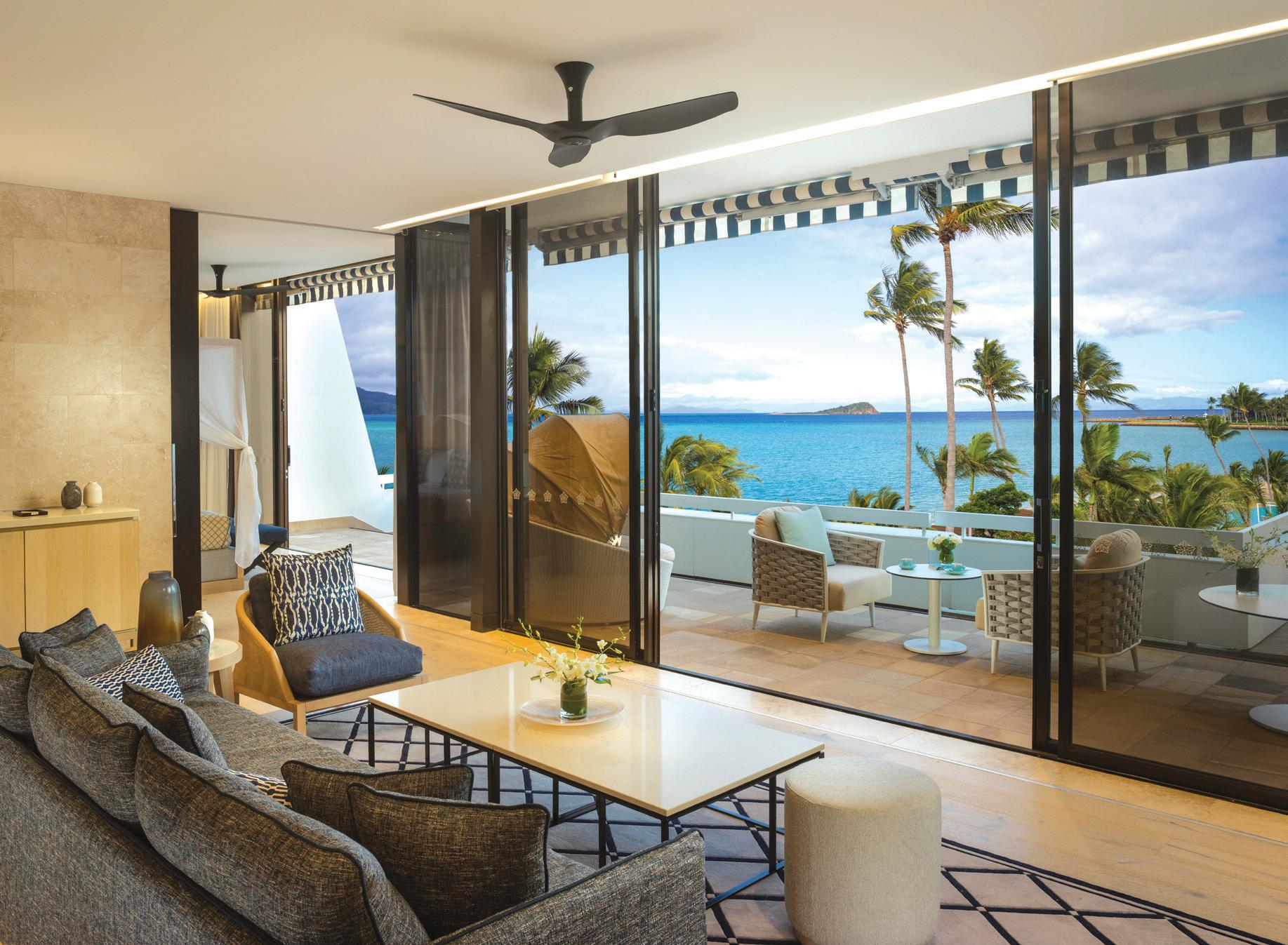
“I think we’re going to see rapid growth in this particular space for the InterContinental brand,” Eletr says. “I think what is a really interesting shift is how [IHG is] starting to think in terms of how can they grow into this resort leisure [space with] very unique properties.”
Eletr adds that InterContinental has a history of going into unusual buildings and surprising cities where the luxury sector has not really penetrated yet. The onseninspired ANA InterContinental Beppu Resort & Spa in the emerging Oita Prefecture in southwestern Japan, the region’s first international luxury resort, is a clear example of this. InterContinental Lyon – Hotel Dieu in France, which opened in June after an extensive four-year restoration of an historic former hospital, also shows the brand’s appetite for incorporating boutique-inspired, unique design and a sense of place into their new properties.
“It’s good to see InterContinental changing its flavour a little bit to be much more experiential, to be much more holistic,
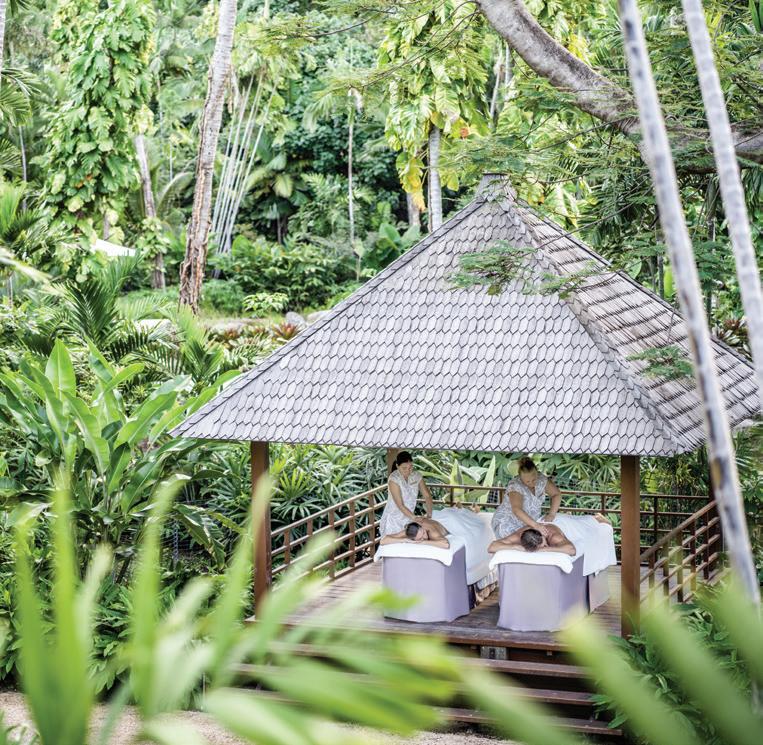
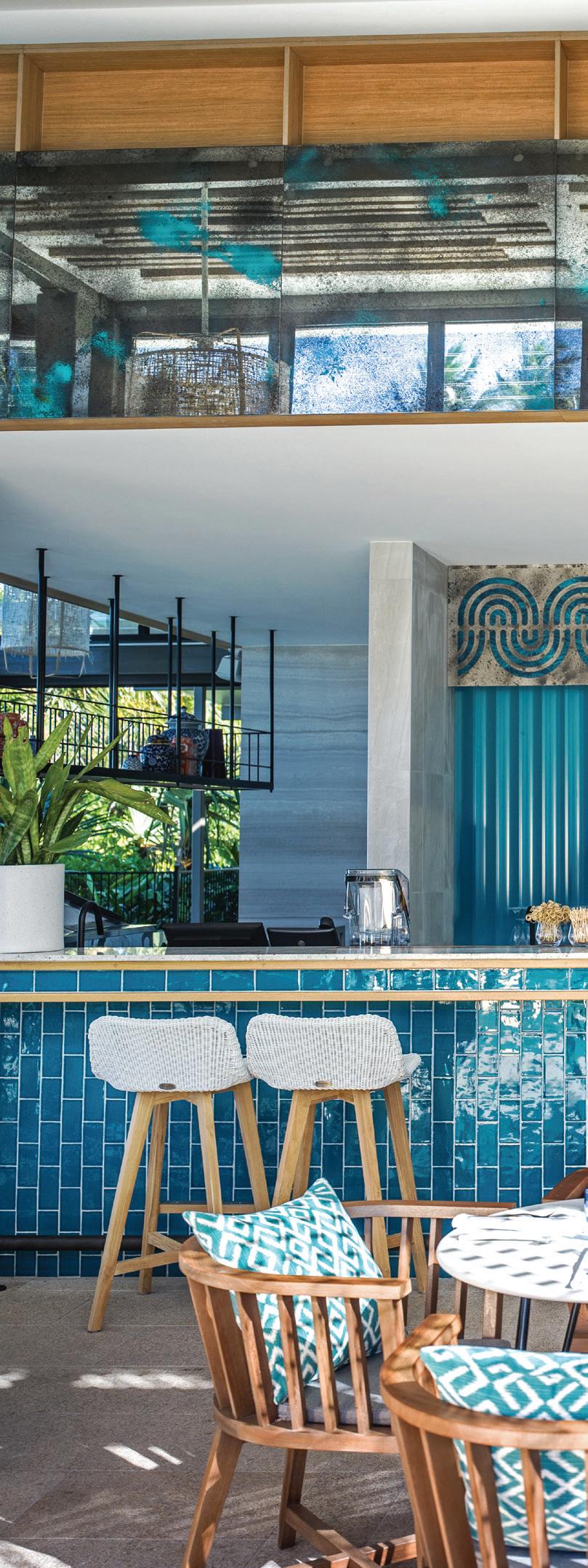
and to be much more grounded to each individual location… so you come to Australia or you go to Beppu and you’re having those very local experiences,” Eletr says. “You have to anchor the resort to the location. [At Hayman Island] we want that message that we are a truly immersive luxury experience – you will feel like you are on holidays from the moment you step onto our boat and into our care.”
Immersive. It’s a word being thrown around even more than ‘luxury’, ever since the travel industry determined that luxury travellers want experiences, not things – but what does it actually mean to visit an immersive resort? I’m not sure even the consumers, to whom the word is marketed, know. For Eletr, InterContinental Hayman Island Resort is immersive because the guest experience of the resort is inextricably linked to the natural environment and there is an overwhelming locality to a stay there.
The Great Barrier Reef is a mere 35-minute boat ride away, and the island itself has reef systems just off-shore, like that found at Blue Pearl Bay, or in the coral gardens off Langford. On land, you can also do a three- to four-hour trek that will take you around the coast and back around behind the ultraluxurious Hayman Island Residences – currently for sale with an eight-figure price tag.
“It’s all too often that you’ll go to a destination and you won’t be able to access things, you’ll only see it from the surface. And when you go into the restaurant the menu is full of imported product and imported wine… and the spa product is an international brand. We wanted everything to be really honest and local and authentic and value-driven… yes we are doing Italian [food], yes we are doing Asian [food], but it’s all local product and it’s served in a very Australian style.”
He’s right about that. The Australian-ness of the staff at InterContinental Hayman Island shines through – a relaxed, friendly and personable but still professional approach, all served up with that unique accent Americans love to call ‘cute’. “I think the Australian style of luxury is not having this robotic, cookiecutter style of service,” says Eletr. “That’s not that relevant anymore.” He calls the Hayman style “heartfelt hospitality”. >>
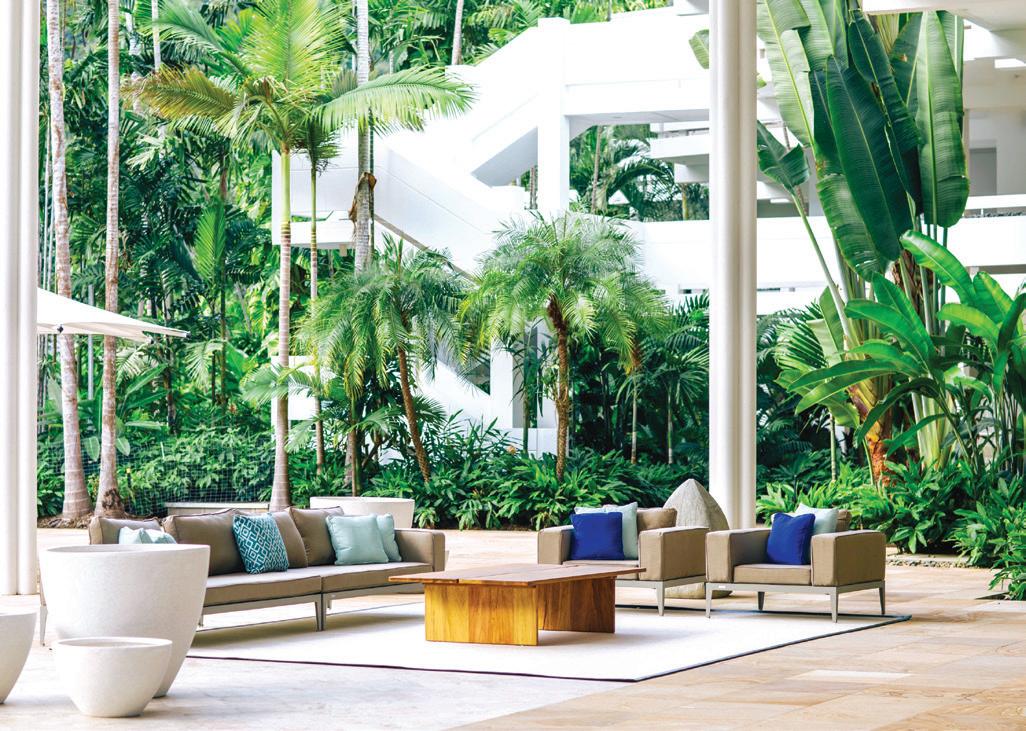


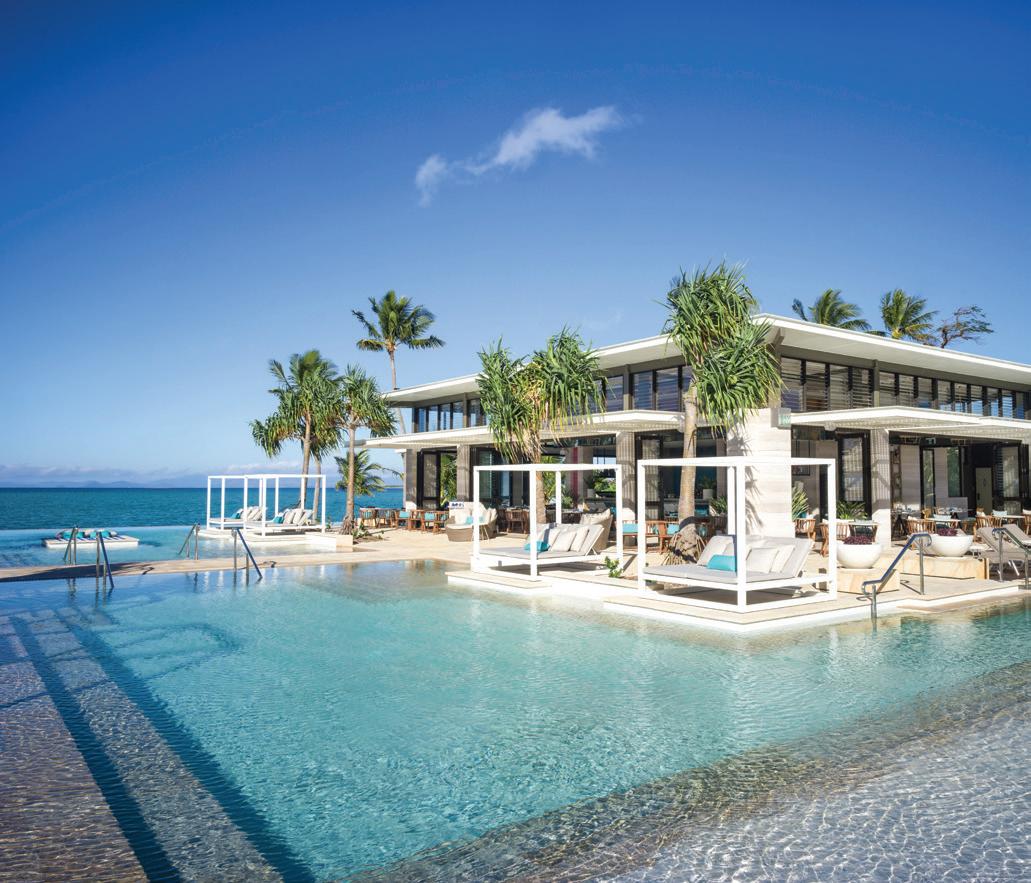
Clockwise from above: Hayman’s Beachside Pool Villa provides a true sanctuary; the island is renowned for its glittering blue waters; Aqua offers relaxed dining next to the resort’s iconic pool.
“We don’t want that Maldivian style of luxury where there’s staff falling from the roof… we want meaningful interactions and people can really walk away thinking, ‘wow, there’s such a human element to Hayman; it’s not just about the hardware, not just about the beach’.”
On the subject of those purely superficial elements, however, they do deserve a mention, because InterContinental has done a great job of breathing new life into Hayman Island. They haven’t gone so far as to start from scratch, following the destruction of Cyclone Debbie in 2017, which caused the island’s subsequent two-year closure. Most of the resort’s buildings pre-existed and that ginormous pastel blue pool – loved by many – is ever-present. But the interiors have been redesigned and reinvigorated with an art deco-inspired, mid-century flourish and a neutral, coastal palette broken up with the occasional modern pop of colour. It’s all very easy on the eye.
And if you think there is something familiar in the air… you’re right, it literally is in the air – InterContinental’s signature fragrance. I notice it as soon as I walk into the lobby and surprise myself by proclaiming, “It smells like InterContinental”, to a few raised eyebrows. I couldn’t tell you what the actual scent is, but that’s not really the point. This brilliant, subtle sensory tool not only creates a sense of luxury, but also subconsciously sparks a feeling of comforting familiarity – and affinity with the brand. Smart.
As for the accommodation, my Executive Room is huge, and the bathroom and dressing room design is well thought out, although I sense the credit for that may go to a previous resort iteration. Do I get all tingly over the ‘iconic’, bright blue Hayman pool, a step from my deck? Not particularly. As far as pool designs go, the industry has moved on and I’d much sooner opt for one of the resort’s luxurious beachfront suites. But there are plenty of impressive features inside the room itself to admire, like a spacious lounge area, coffee machine and a gorgeous fourposter bed. Not that I spend much time in it – there is simply too much else on offer, and before we leave island life and head back to civilisation, it’s time for an ocean adventure.
I head off on a boat with my group of eager, wetsuit-clad travel companions who have decided they’ll be damned if they let a little rain stop them from the day’s snorkelling adventure. The ocean’s hue is a far cry from that quintessential, postcardworthy ‘Whitsundays blue’ you’d expect, and the sky’s clouds are an anti-tropical shade of grey, but nothing is raining on their parade. We’re at Hayman Island, after all, and she’s a trueblue beauty, come rain or shine.
Rates at InterContinental Hayman Island Resort start from $750 per night. Transfers to the island aboard InterContinental’s boat cost $210 per person, one way. Seaplane and helicopter transfers are also available. ihg.com

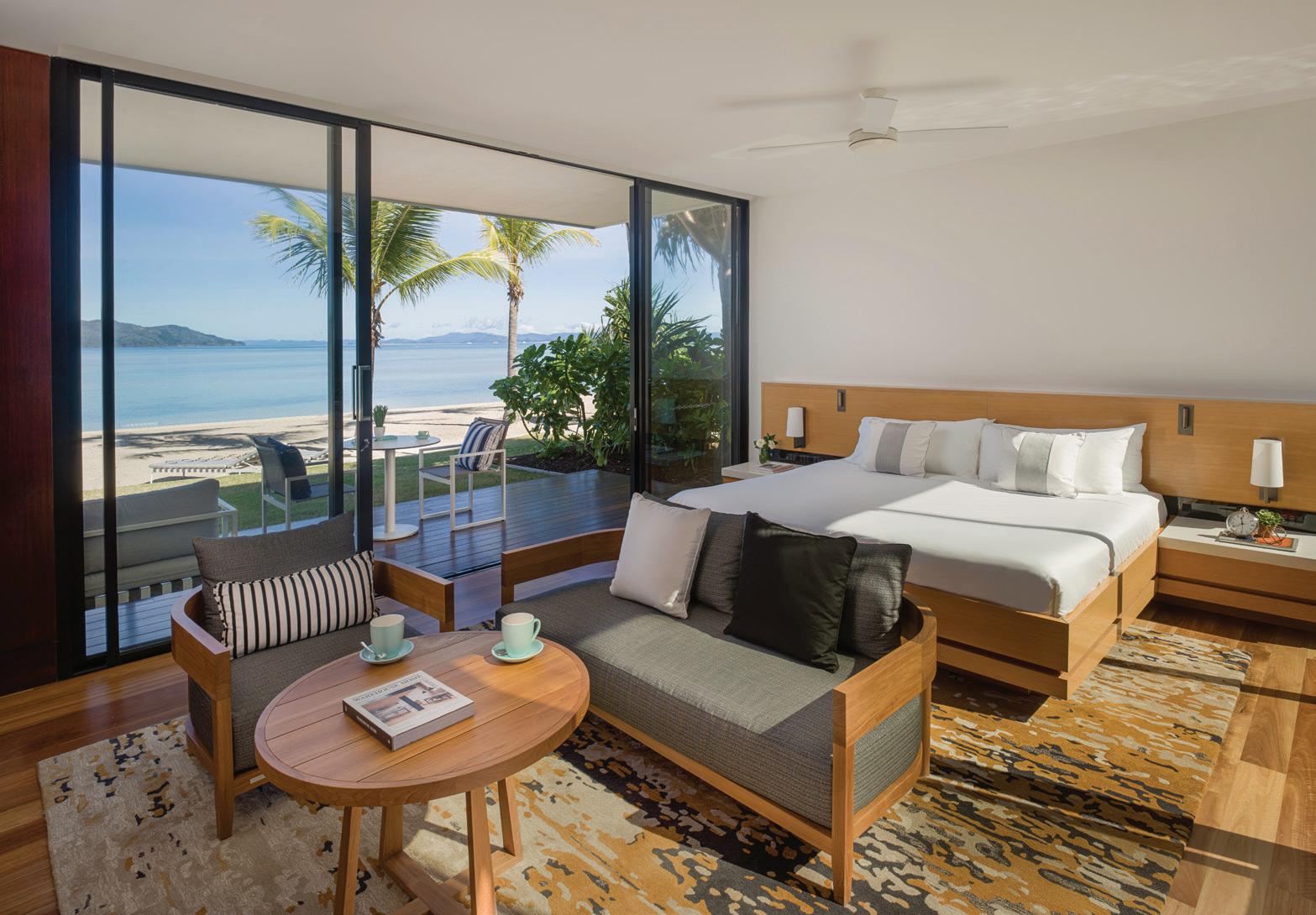





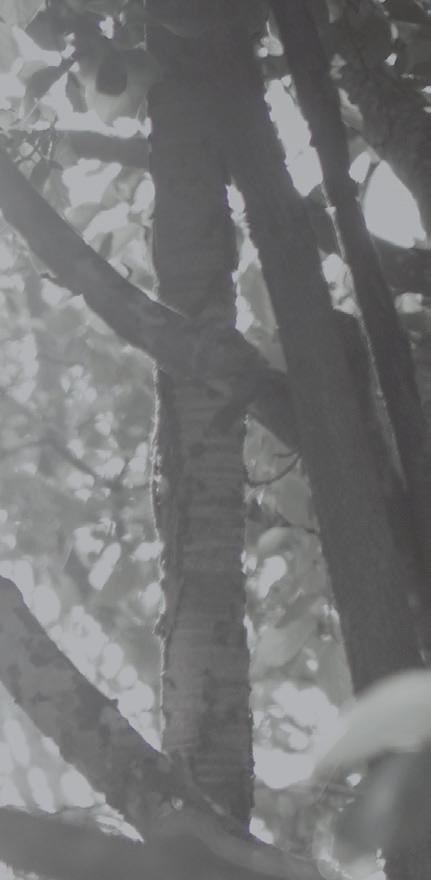

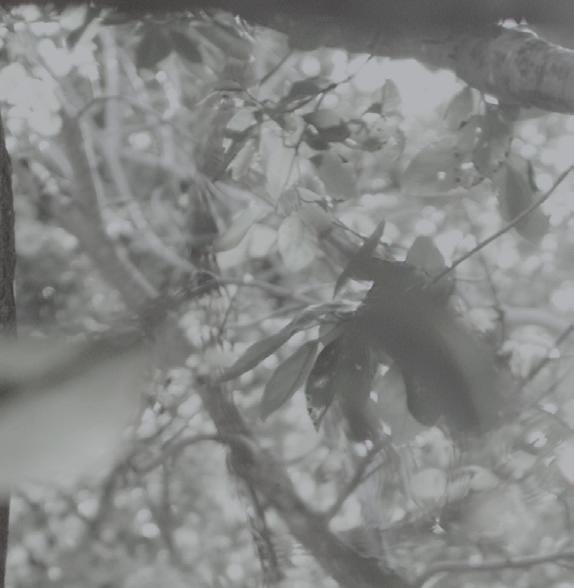


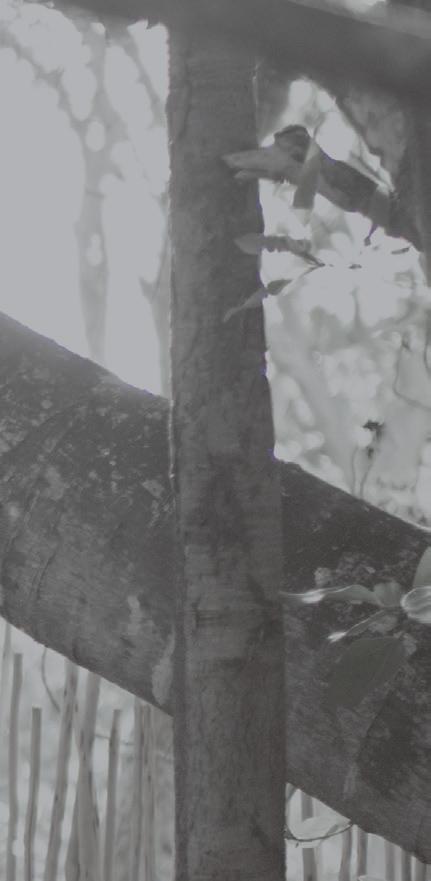
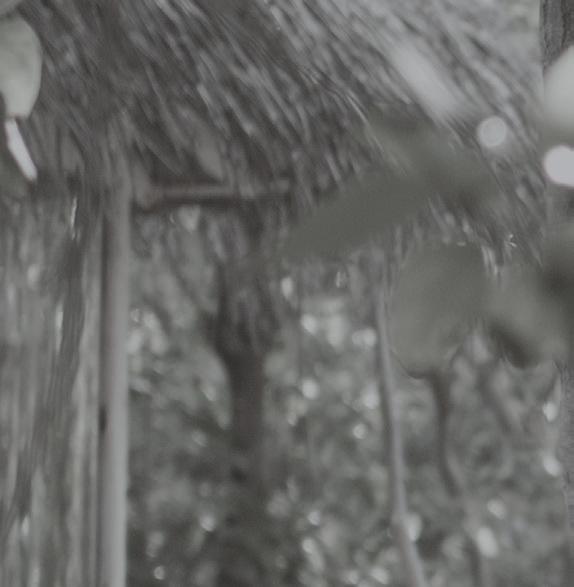
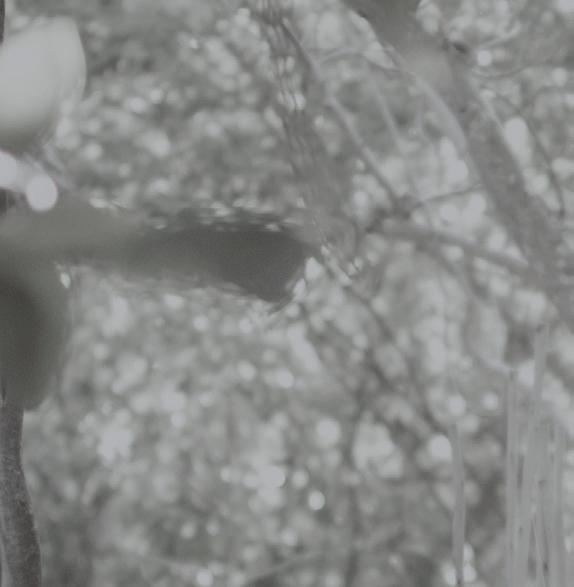

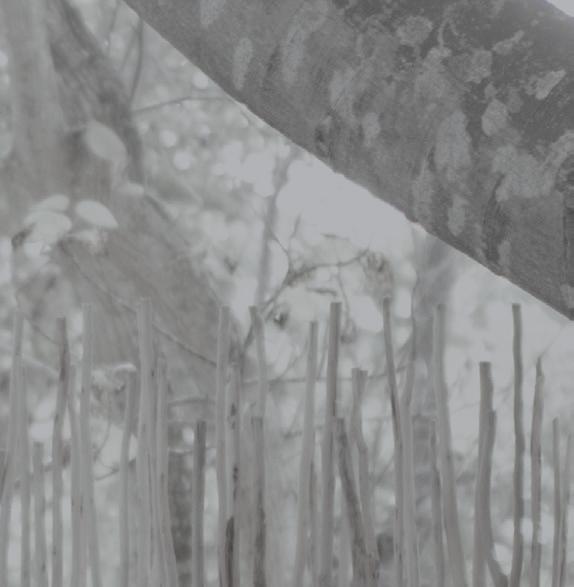
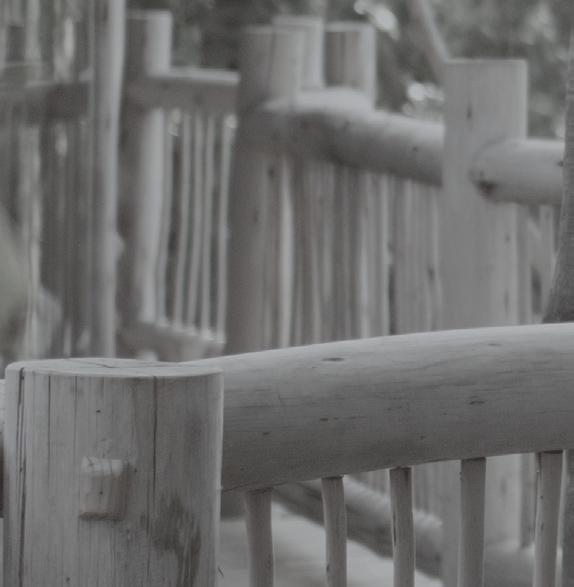
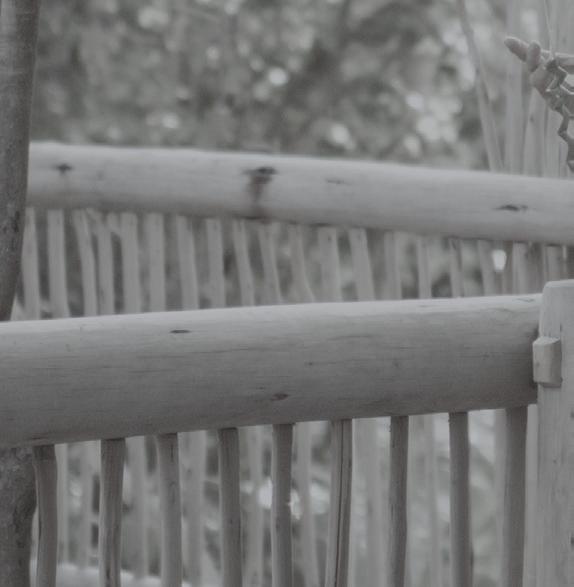


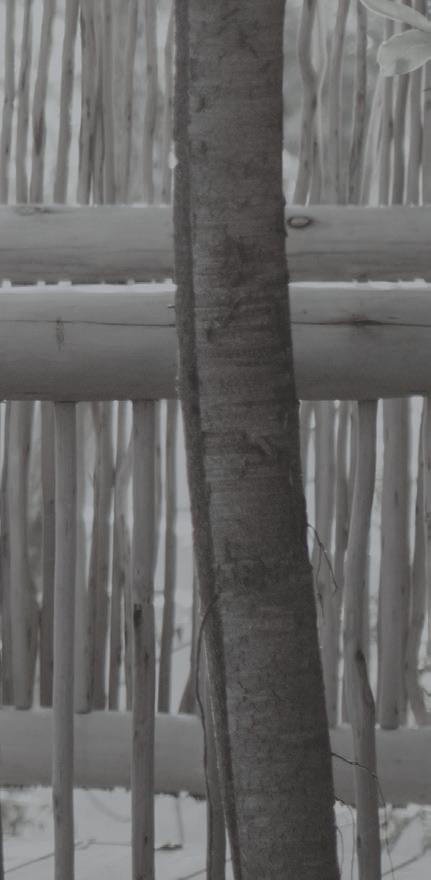
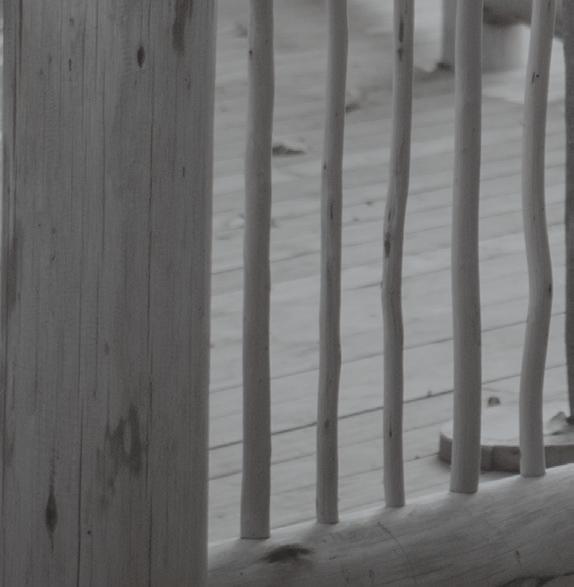
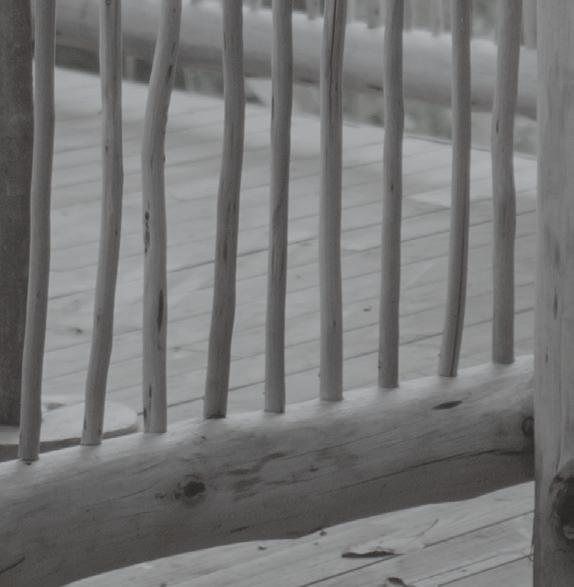

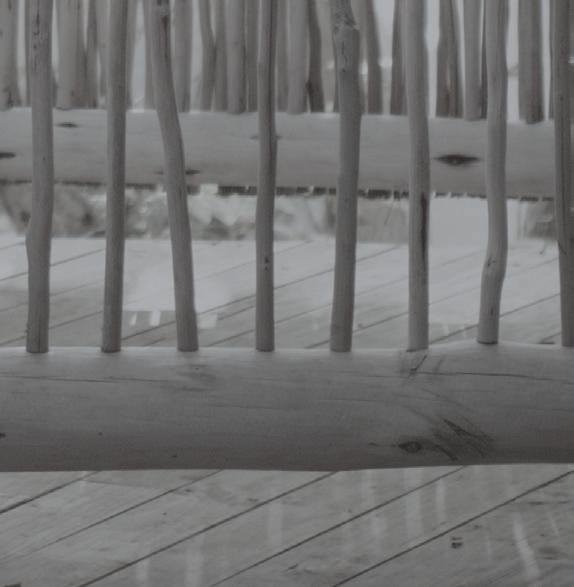

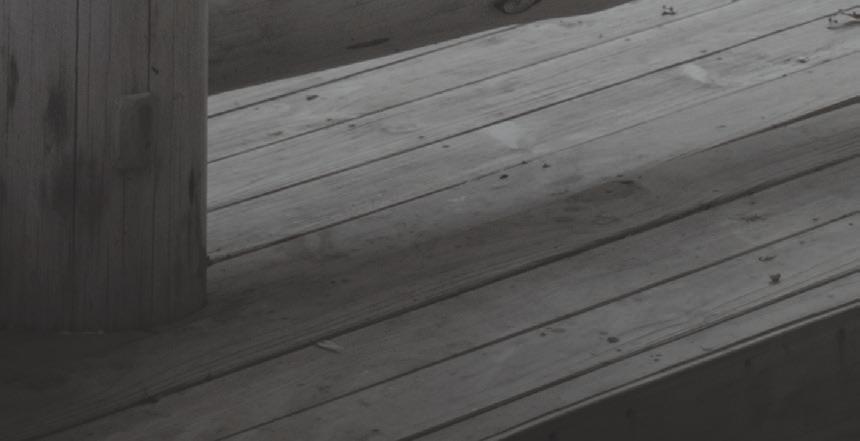


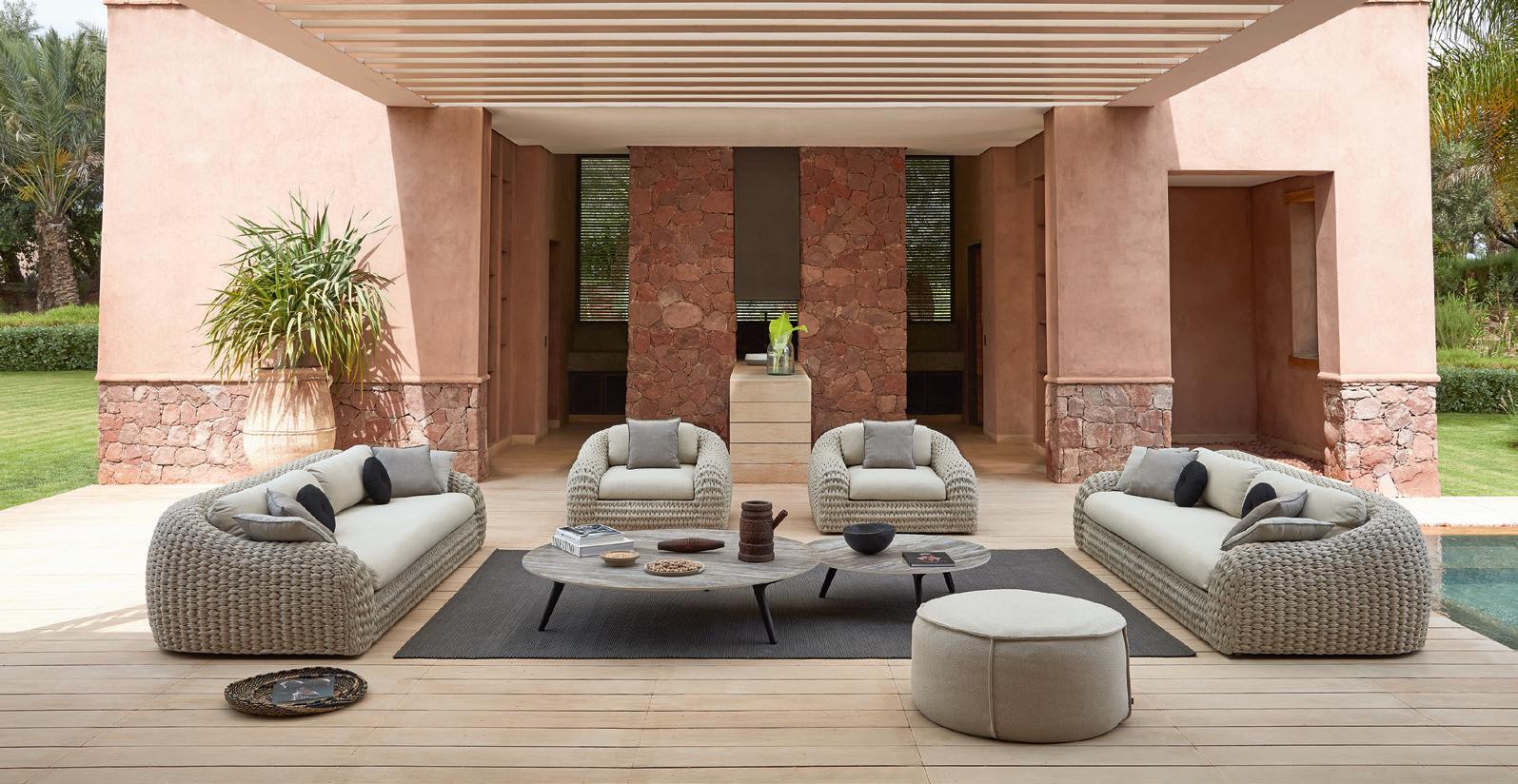
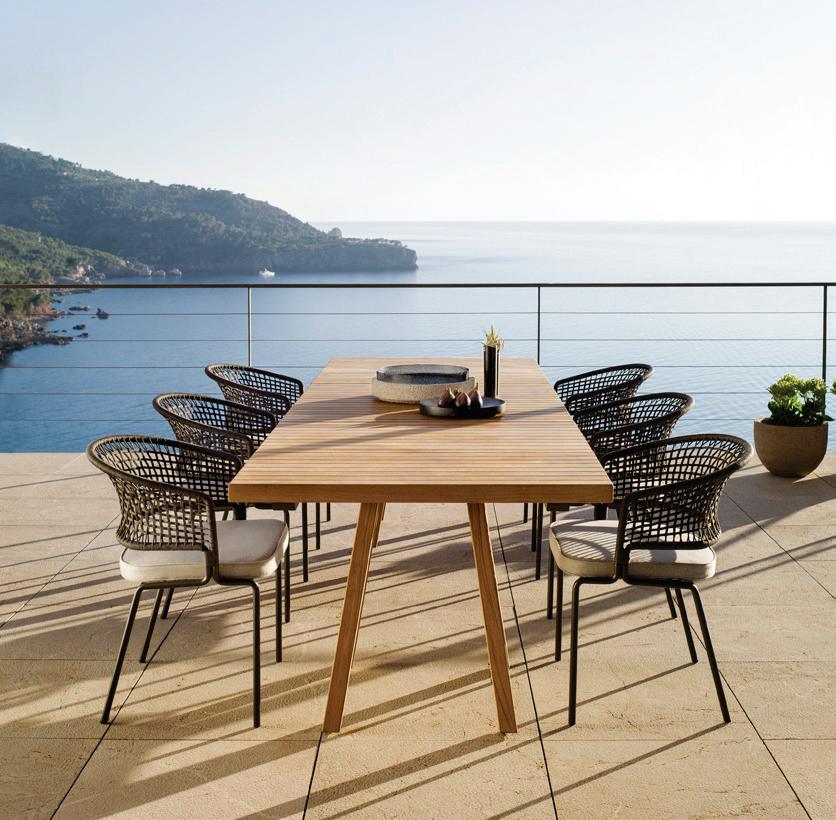
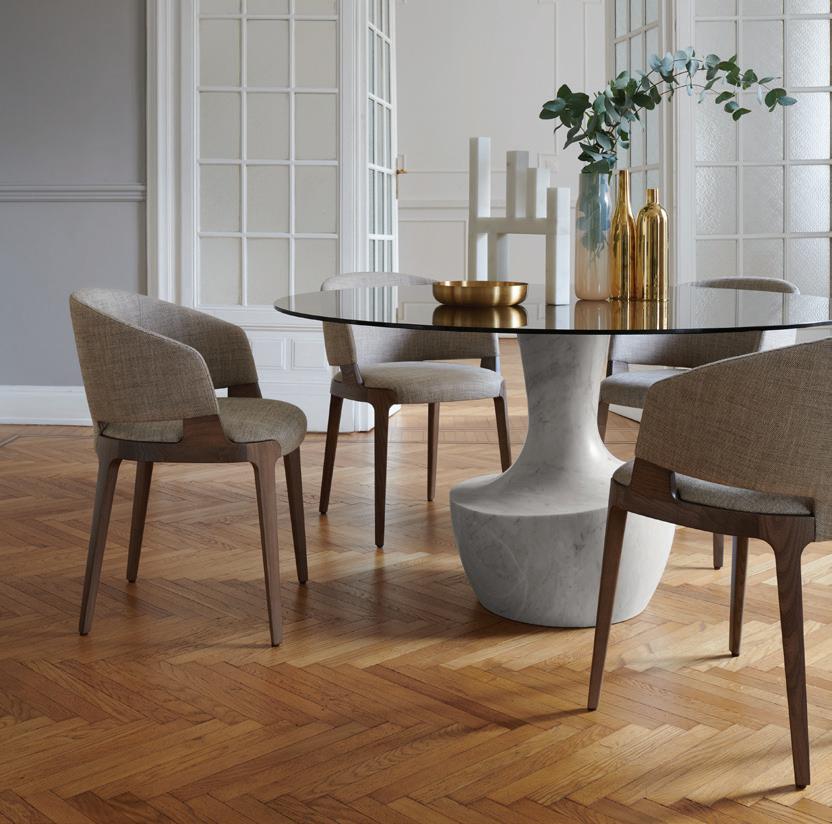



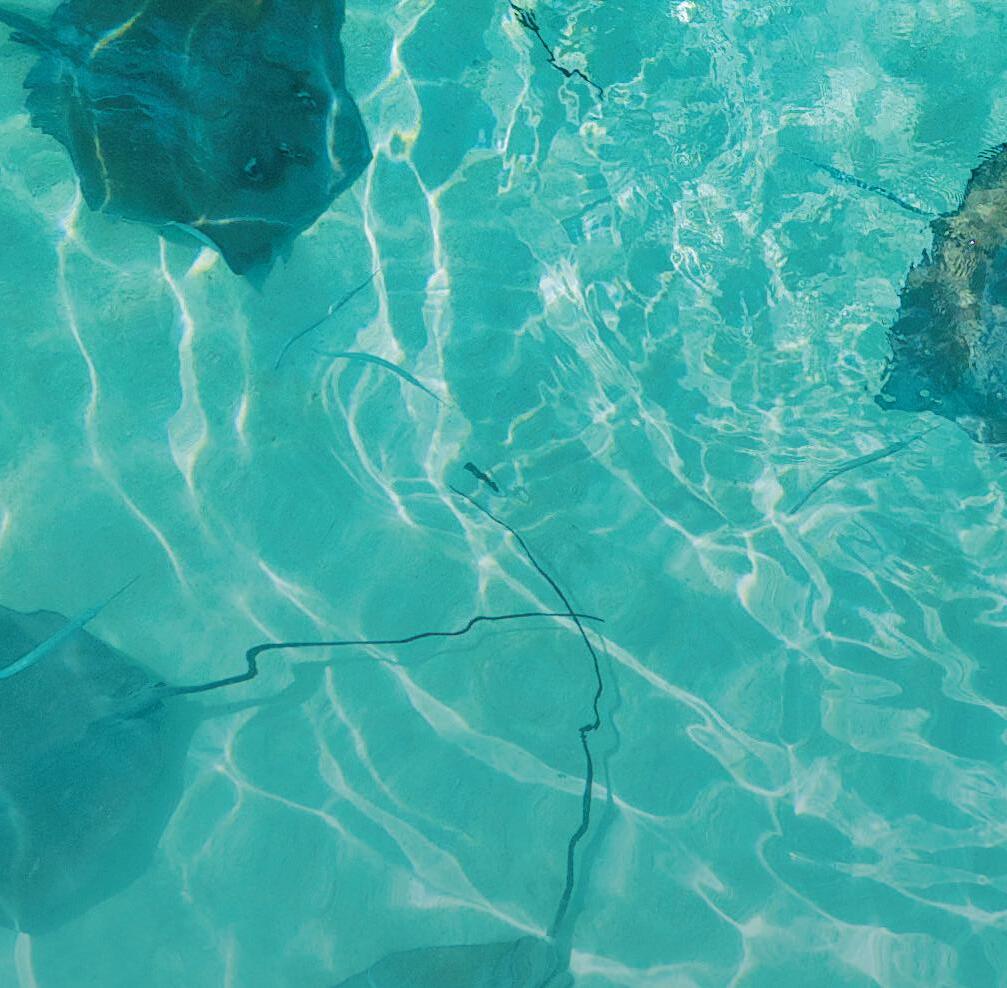

FRENCH POLYNESIA IS FAMED FOR ITS IDYLLIC RESORT ISLANDS, BUT JOURNEY BEYOND THESE HIGHLY CELEBRATED DESTINATIONS AND YOU’LL FIND A RICH HISTORY AND SPIRITED CULTURE, WRITES CAROLINE RICHES
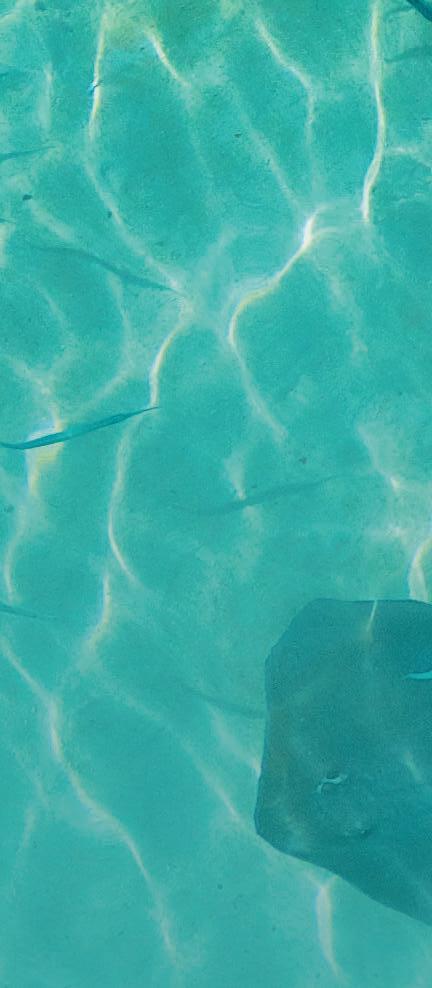
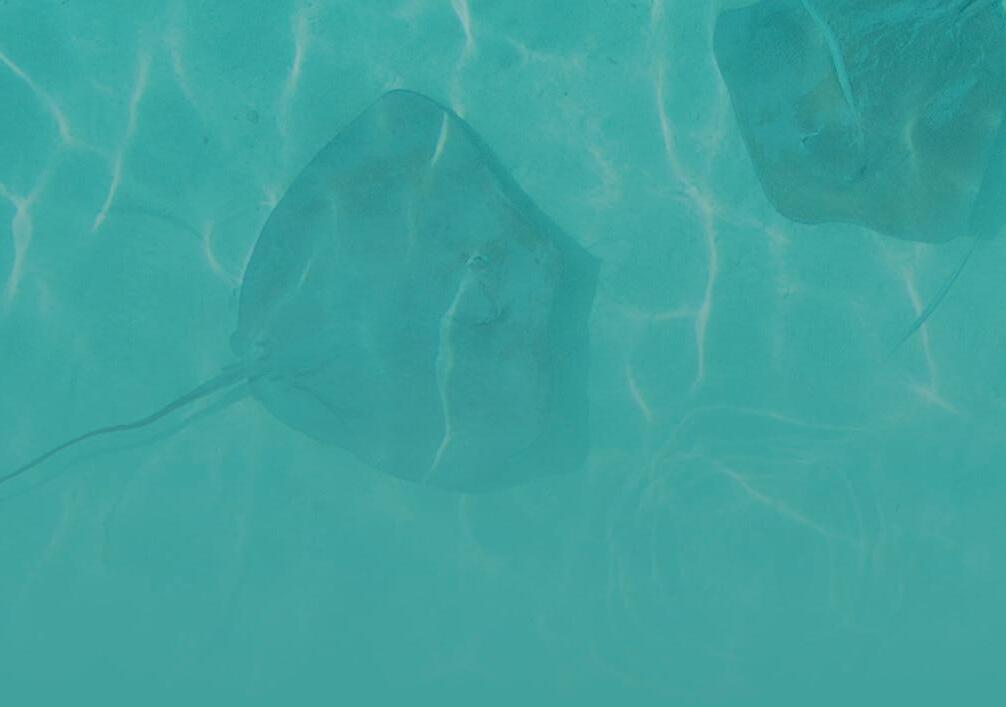

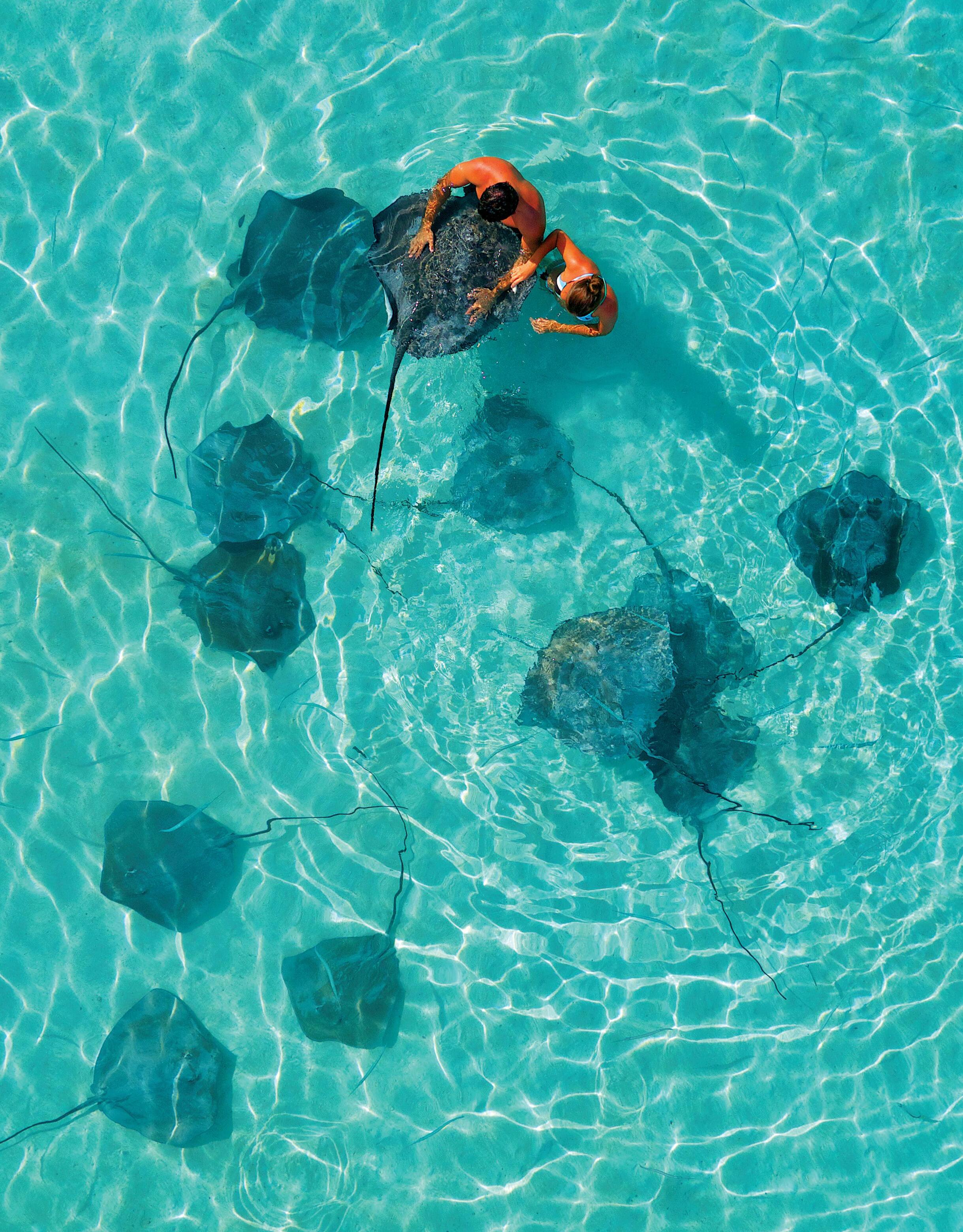

THE BOULES CLASH WITH A METALLIC CLUNK ON THE patchy grass amid jovial French chatter. In the distance, waves break gently on the busy shore. With my eyes closed, I might be on the Cote d’Azur, not deep in the heart of French Polynesia.
Casuarina trees provide shade, but the harsh Tahitian sun has already lost its bite for the day. I wander from the park onto Point Venus, the black sandy spit that nudges into the calm, cyan South Pacific.
For the British sailors who arrived at this spot 250 years ago, Tahiti was a foreign world. If they could see it today, with skimpy bathers nattering in French, I doubt they’d be impressed. They’d also be in the minority – the beach is packed.
The French eventually claimed French Polynesia in 1880. Today, the country retains significant autonomy and its Polynesian culture is deep-rooted, but French influence is everywhere, from the road signs to the school system and food. Propped up financially by France, it also enjoys a high standard of living, with clean drinking water, solid infrastructure and one of the highest GDPs per capita in the Pacific.
The capital Pape’ete is the entry point for most visitors to French Polynesia and often the only place they see on Tahiti before they head to other islands such as Bora Bora.
But to do so would rob them of French Polynesia’s history and spirited culture. Tahiti, which contains around two thirds of the nation’s population, offers a chance to experience local life and cuisine without compromising on luxury.
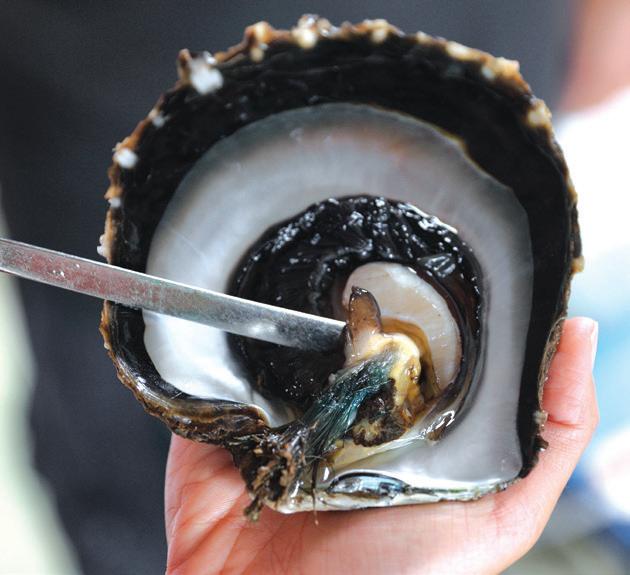
On a Sunday morning in Pape’ete, locals queue outside sweet smelling bakeries selling baguettes and brioche. At the Municipal Market, tables of bright fish and neat piles of fruits and vegetables vie for the title of most colourful. I imagine myself in Paris, but as the market prattle fades, the tradewinds carry polyphonic Tahitian hymns from the windows of packed-out churches.
I take a walk past the town’s famous black pearl boutiques to Pape’ete’s bustling waterfront. Along a promenade lined with ornate lamps, the French and Tahitian flags fly side by side. Behind me, food carts, or roulottes, serve raw fish marinated in lime juice and coconut milk alongside pomme frites and Chinese noodles.
Beyond the capital, jagged volcanic peaks of Tahiti’s interiors slope down into luscious green rainforest and powder-soft beaches lapped by crystal-clear lagoons. I imagine it was a similar view for the Austronesians who first arrived on double-hulled voyaging canoes around 2000 years ago.
Since then the people’s identity has been defined by waves of colonisers, but their mana (spiritual energy) remains strong, expressed through music, tattoos, sports, crafts and cooking.
The best place to experience the rhythmic drumming and hip-wriggling of traditional Polynesian dance is at the InterContinental Tahiti Resort and Spa, just 20 minutes from Pape’ete. The hotel is on a stunning 13 hectares of tropical gardens encompassing serene pools and a snorkelling lagoon teeming with tropical fish. We tuck into a sumptuous breakfast of island fruit and homemade pineapple and mango jam on French pastries while admiring the red raffia skirts, proud smiles and joyous movements of large, rounded bodies.
From here we drive around Tahiti Nui, a loop of 114 kilometres where lush forests, caves and waterfalls are natural traffic stoppers. The cool blue waters of Mara’a Grotto once provided privacy to the royal family and inspiration to French artist >>

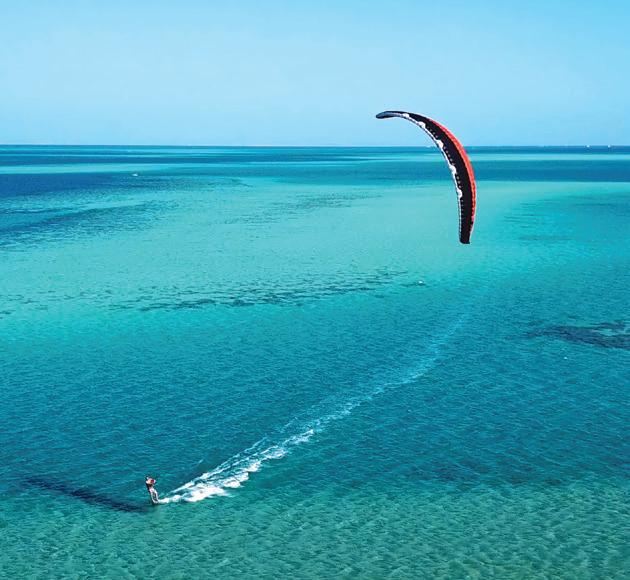

Paul Gauguin. At the stunning Vaipahi Falls, water spills from tall hanging vines into a little cove.
On this Sunday afternoon, local families are cooling off. We join them in the Vaima river, where they smile warmly but – like the occasional eel who flicks our legs – they leave us be. They just want to know we appreciate their paradise. “Tahiti, c’est jolie eh?”
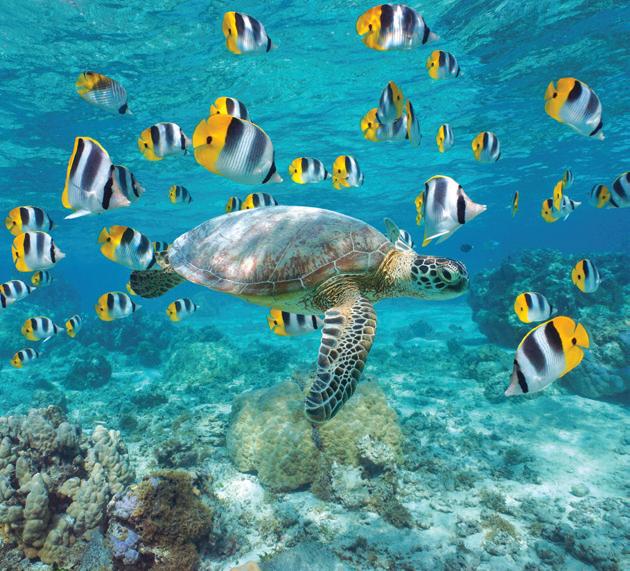
Our resting place for the next two nights is Tahiti Pearl Beach Resort, just 10 minutes outside Pape’ete but a world away with its infinity pool, tropical gardens and beautiful black volcanic sand beach of Lafayette. All rooms enjoy a sweeping view of Matavai Bay where European explorers once came ashore, and where tropical fish, eagle rays and turtles glide around us as we snorkel through the warm water.
In the distance, the neighbouring island of Mo’orea beckons. French Polynesia is 118 islands strung across the Pacific like pearls, many of which are days apart. Mo’orea is just 30 minutes from Tahiti by ferry, a trip that’s surely one of the world’s most beautiful commutes for those who work in Pape’ete.
As I step off the ferry, I see why they choose to live here. With one quiet road circling the lush mountainous interior, Mo’orea is the perfect place to while away some days swimming, surfing or kayaking.
Fishing is a local pastime; huge fresh-caught tunas, mahi-mahi and swordfish hang on hooks by the roadside. Cooking and tasting is another. Everything grows in this fertile soil, with pineapples and vanilla particularly prized.
Wonderful places to stay are the tranquil Mo’orea Beach Lodge, where you can cook your own food, or for an overwater bungalow, Sofitel Mo’orea la Ora Beach Resort offers some of the most spacious on the island.

Out in the lagoon, Tahitian kids paddle past in their canoes, navigating the waves and reefs with a skill passed down over generations. With small tiare flowers tucked behind their ears, they flash big Polynesian smiles as they call out to us in French, “bonne journee!” And ‘have a nice day’ we did.
Air Tahiti Nui offers three weekly services from Auckland to Pape’ete, connecting with Qantas codeshares from Sydney, Melbourne and Brisbane.
For further information, visit airtahitinui.com.
For further information on the islands of French Polynesia, Visit tahititourisme.com.au.
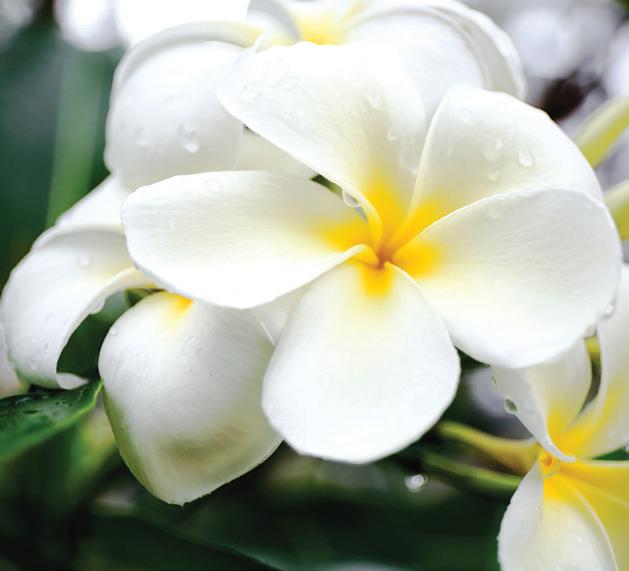
Rooms at InterContinental Tahiti Resort and Spa start at $590 per night. Visit tahiti.intercontinental.com.
Rooms at Tahiti Pearl Beach Resort and Spa start at $459 per night. Visit tahitipearlbeach.pf.

Rooms at Mo’orea Beach Lodge start at $550 per night. Visit mooreabeachlodge.com.
Rooms at Sofitel Mo’orea la Ora Beach start at $750 per night. Visit accorhotels.com.
“As I step off the ferry, I see why they choose to live here. With one quiet road circling the lush mountainous interior, Mo’orea is the perfect place to while away some days swimming, surfing or kayaking.”InterContinental Tahiti Resort and Spa Sofitel Mo’orea la Ora Beach

Welcome to a promise of indulgent wellness and immersive experiences with four new breathtaking resorts from InterContinental. Discover transformative experiences in unique destinations, from the billowing steam of traditional Japanese onsens at ANA InterContinental Beppu Resort & Spa, to Great Barrier Reef adventures with Hayman Island by InterContinental.
Reconnect with nature at InterContinental Maldives Maamunagau Resort as you swim with the manta rays, or escape to InterContinental Phuket Resort for a holistic health journey. Every journey promises to rejuvenate your mind and body with a sensory experience unlike any other you’ve had before.
To discover where your next unforgettable journey will take you, visit www.intercontinental.com/new-resorts Live the InterContinental ® life.
THIS YEAR HAS CERTAINLY BEEN GRAND, BUT 2020 IS CALLING, AND WITH IT, A HOST OF DESTINATIONS ON THE RISE ARE JUST WAITING TO BE EXPLORED
In partnership with G ADVENTURES

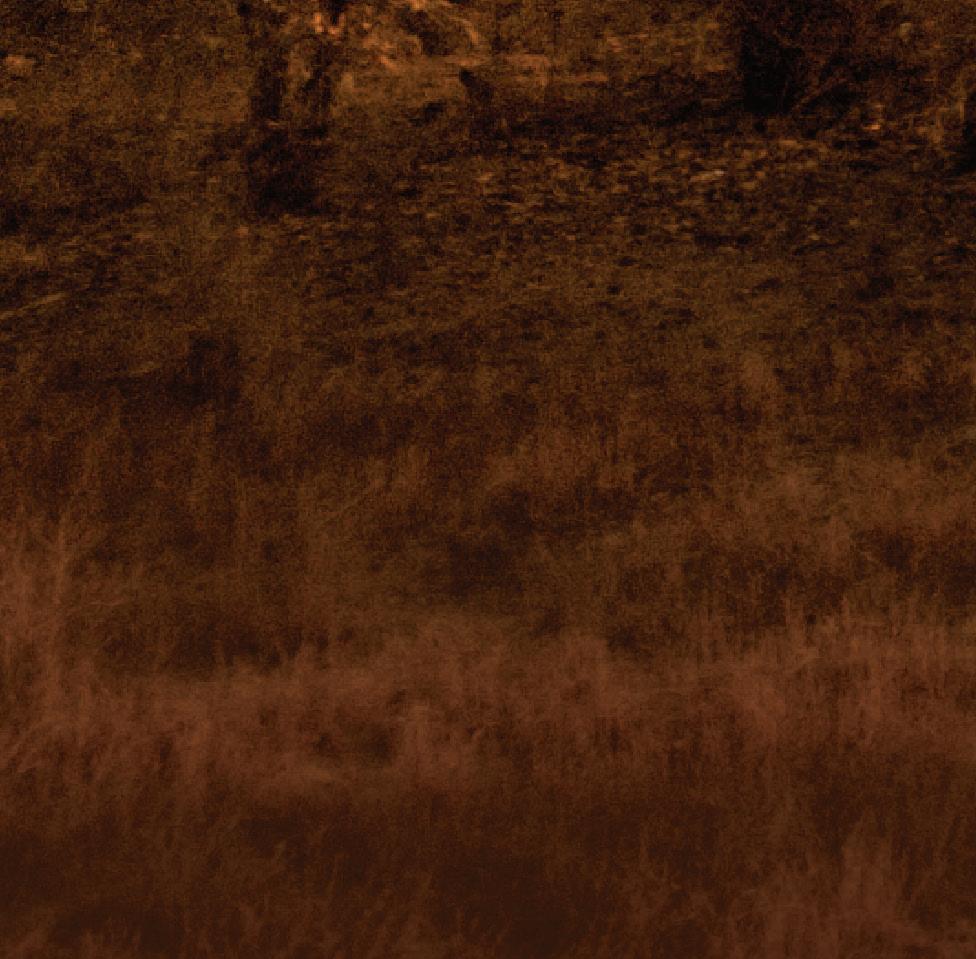
IN 2019, IT WAS THE LIKES OF TAHITI, NAMIBIA, JORDAN AND MONTENEGRO – destinations that were rapidly trending and, seemingly all of a sudden, on travellers’ radars. And while the white sand beaches of French Polynesia and luxurious lodges of Africa aren’t dropping off our travel itineraries any time soon, there are already whispers of entirely different – and surprising – destinations topping the must-visit lists of 2020.

Tour operator G Adventures is forecasting a colourful mix of emerging destinations, well-trodden cities hosting global events, and countries on the rebound where tourism can truly be a force for good for local communities.
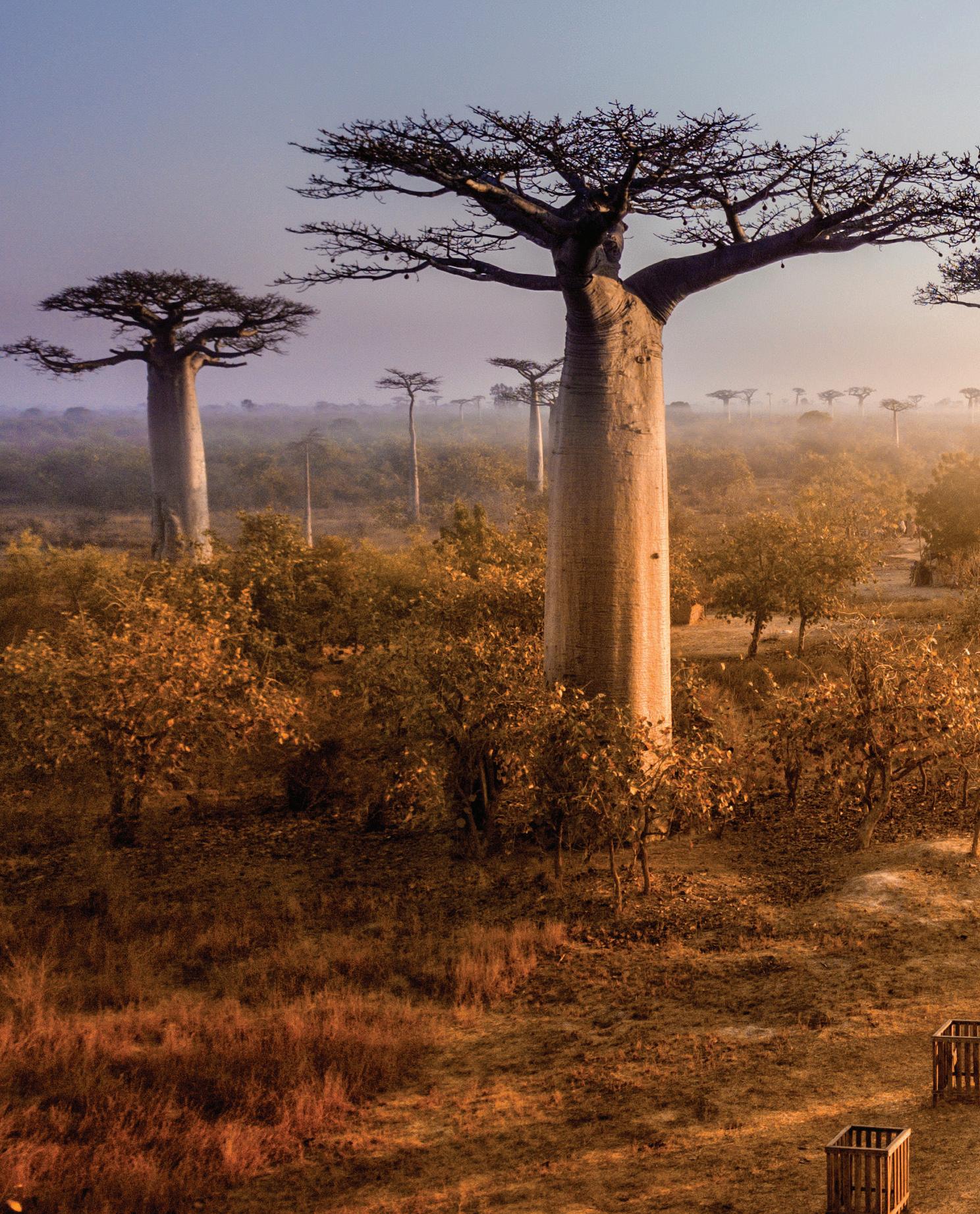
“As pioneers of community tourism, our mission is to change people’s lives through travel, going beyond the lives of our travellers to the locals we visit, particularly people who are marginalised,” says G Adventures’ founder Bruce Poon Tip. “When we return from a transformative travel experience, we can then bring back what we learnt to make a difference in our own communities. That’s what we call the ripple effect.”
Wise words. Some other wise words? As the Dalai Lama once said: “Once a year go some place you’ve never been before.” G Adventures’ list seems like a good place to start. >>


Travellers experiencing a mindful trip in the peaceful home of Buddha next year will find it hard to recall that 2020 marks five years since the April 2015 earthquake hit. The country has been busy rebuilding and is now encouraging tourists to return with the launch of its ‘Visit Nepal 2020’ campaign, which aims to attract two million visitors in the calendar year. G Adventures has experienced a 90 per cent increase in the number of travellers visiting Nepal since 2017, so the word is officially out on this breathtaking country.
This gem off the coast of southern Africa has long attracted adventure travellers, but the destination has been experiencing an upswing in tourist arrivals since 2013, with more travellers being lured to the exotic land that feels a world away from it all. Thousands of animal species can be found in Madagascar, including lemurs, which can’t be found anywhere else on Earth. Then there’s exquisite rainforests, beaches and reefs as well as the photogenic ‘Avenue of the Baobabs’ near the busy capital, Antananarivo, providing a magnetic landscape ripe for exploration.

After a meteoric rise to become one of the hottest destinations of the past few years, Sri Lanka’s tourism was heavily impacted following the Easter attacks of April 2019. According to the Sri Lanka Tourism Development Authority, arrivals fell 71 per cent in May; the lowest number since the civil war ended a decade ago. But with all foreign advisories lifted, 2020 is the perfect time for travellers to return to experience the country’s kind people, rich culture and stunning shoreline. And with the Sri Lankan government offering a free online visa for travellers from 48 countries, including Australia, it’s now even easier to go.

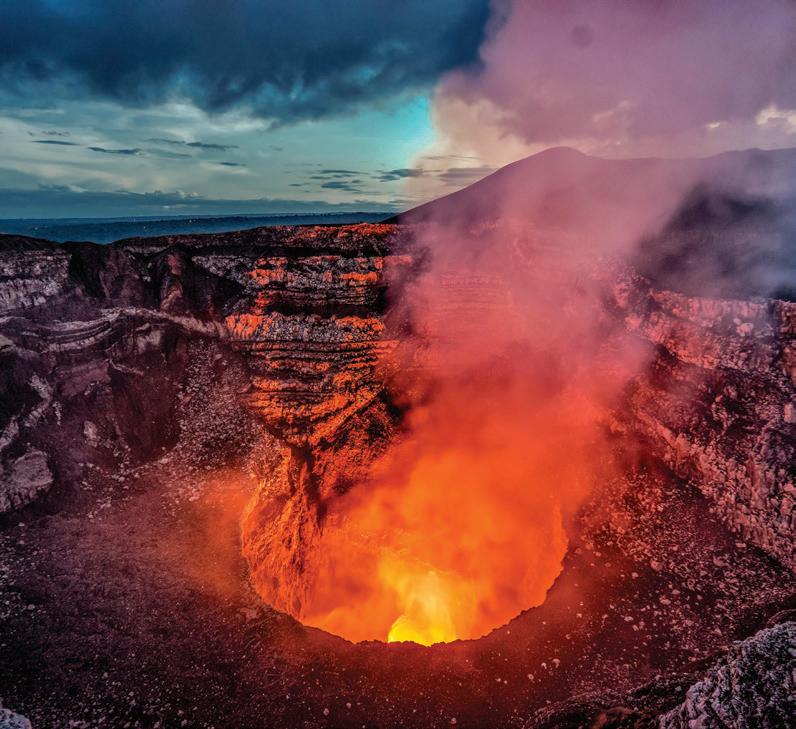
With its beautiful beaches, world-class surf and stunning classic colonial architecture, Nicaragua is back on its feet and ready to welcome tourists. The country underwent a period of unrest in 2018, and tourist arrivals dropped as a result, but now that the calm has returned, the friendly locals are hopeful the tourists will follow. And with one look at the dramatic beauty of this land, we think they’ll be happy to oblige.
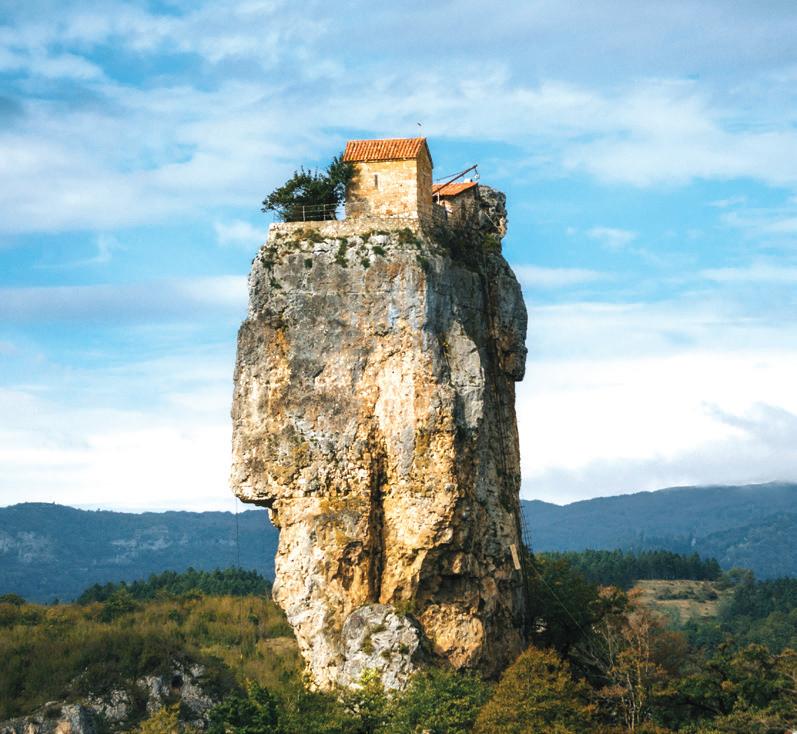
It’s safe to say Georgian food and wine are having a moment right now, with the media spotlight highlighting delicacies such as khinkali (soup dumplings) and the country’s traditional winemaking process. G Adventures has witnessed a 44 per cent increase in travellers visiting the country over the past three years and its profile as an international tourism destination will continue to build with the UNWTO selecting Georgia to host its June 2020 board meeting. New budget flight routes through Europe will also help open up this emerging destination.
Did you know 2020 is a leap year? So where better to visit than the country with its own leap-year tradition? On the Emerald Isle, age-old proposals are turned on their head and popping the question comes down to the fairer sex. Whether or not she has to bend the knee is still up for debate, but what isn’t is Ireland’s incredible natural beauty and exciting urban scene. Galway has been named a European Capital of Culture for 2020, along with Rijeka in Croatia, so make sure you schedule in a visit. The harbour city is often referred to as the “Cultural Heart of Ireland” thanks to its emphasis on Irish language, music, song and dance traditions.
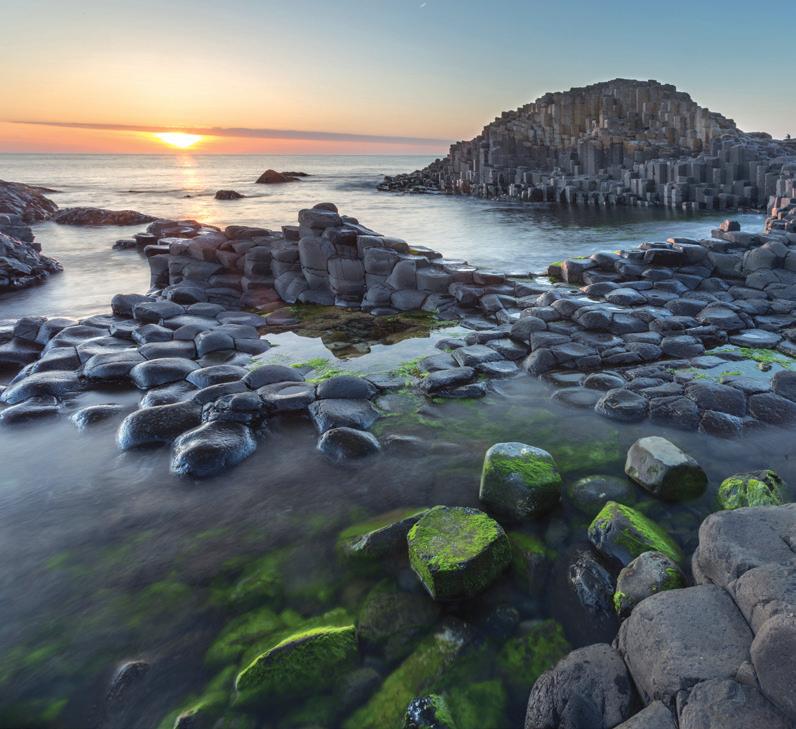
With Rio de Janeiro named UNESCO’s first World Capital of Architecture for 2020, the famed Brazilian city just became even more appealing. According to UNESCO, Rio will host discussions centred on how urban planning and cultural heritage can help promote inclusive societies and effective institutions. And for those who aren’t so design-inclined, there’s always Brazil’s ethereal and diverse landscapes of picture-perfect beaches, historical colonial towns and lush rainforests. Not to mention that little soirée called Carnival, taking place on February 21, 2020.
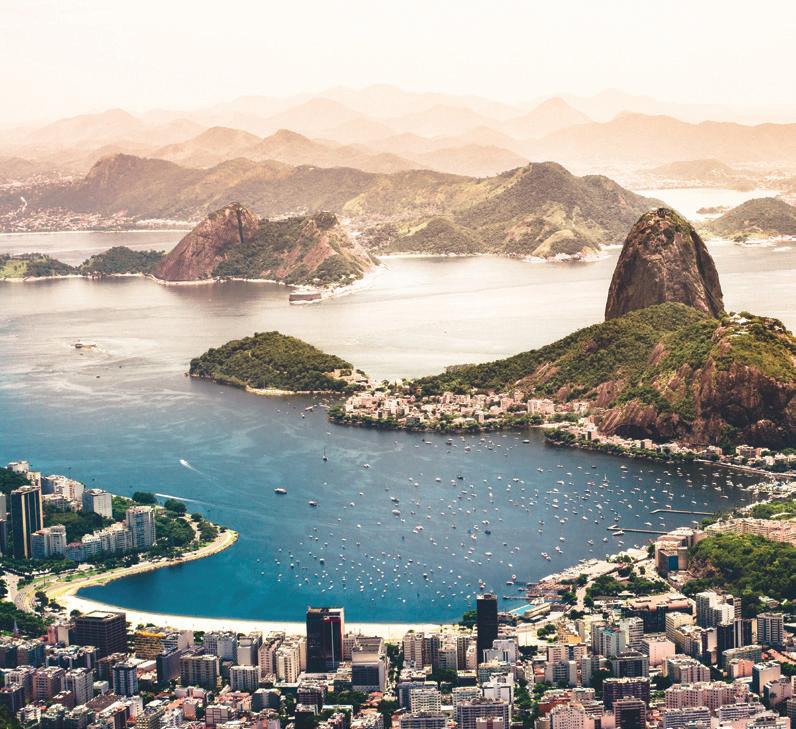
Often overlooked on a Southeast Asian adventure, the evergreen, mountainous nation of Laos is located at the crossroads of Asia and, as a result, is one of the region’s most ethnically diverse countries. Laos has been far slower to develop than its neighbours, leaving it deliciously untainted by mass tourism and offering a slower, more authentic Asian experience full of opportunities to witness thriving local traditions. In Luang Prabang, Buddhist monasteries pepper the land and mornings see slews of saffron-robed monks walking the streets, while fascinating journeys await on the famous Mekong River.

Tourism in South Africa has been steadily growing since 2013. In 2018, 16.44 million people arrived in the country and this figure is expected to reach 19.6 million by 2023. Given the spectacular coastline, national parks and lush winelands, it’s no wonder why. The nation’s 2019 Rugby World Cup win is sure to bring fresh tourism interest in 2020, but we’d say the myriad opportunities for game-spotting on safari and the buzzing atmosphere in cosmopolitan Cape Town are even more likely to pull the crowds.
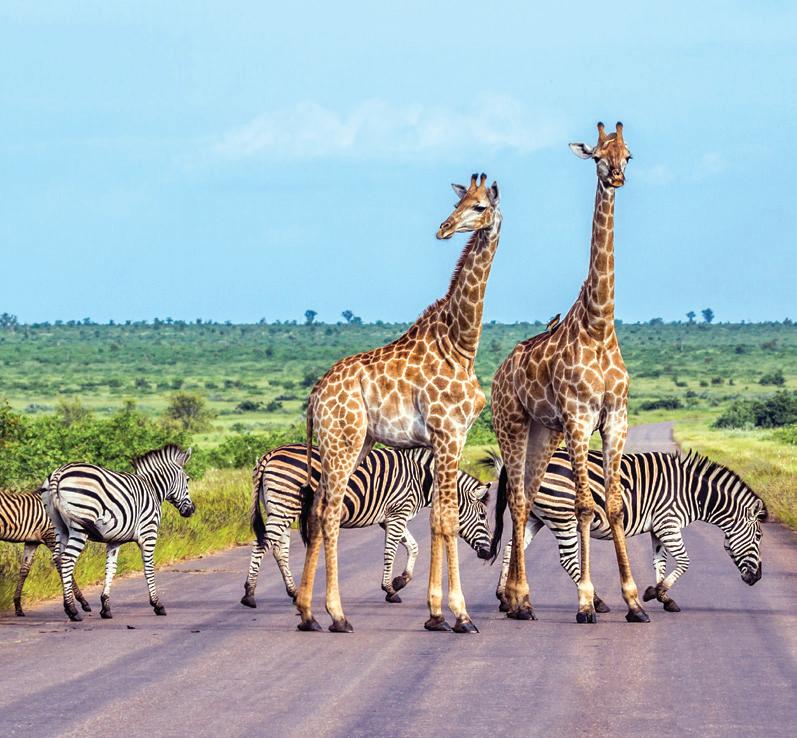
Greenland hit the headlines earlier this year when President Trump stated he wanted to buy the autonomous Danish territory. Online search results doubled, and this otherworldly destination is now growing in popularity. While the US president’s interest might be political, it’s the country’s unique geography and culture that appeals to leisure visitors. The majority of Greenland’s residents are Inuit and three-quarters of the country is covered by the only permanent ice sheet outside Antarctica. Natural phenomena such as summer’s midnight sun and winter’s Northern Lights make Greenland truly a one-of-a-kind destination.

The Caribbean might not be the most obvious choice to Australians for a holiday, but with affluent Aussies increasingly priding themselves on visiting surprising, out-of-reach destinations, that’s precisely the point. As a major sailing destination, this yacht-dotted chain of islands serves up private islands with hidden coves, secluded beaches and crystal-clear waters inviting snorkelling adventures. The beguiling volcanic landscape is a photographer’s dream, and the capital, Kingstown, is a pretty port city boasting panoramic views of the archipelago beyond.

This small island country is on a roll, its popularity bubbling and set to boil over ahead of the 2020 Olympics. Travellers to Japan are spoilt with a formidable food scene, magnificent natural beauty and a unique culture that has fascinated visitors for centuries. Going hand in hand with ancient traditions is a feeling of incredible modernity, with the Shinkansen (bullet train) network a symbol of the nation’s efficiency in the bustling modern world. A trip to Japan may not be complete without getting a seat on one of these, but a visit to a ryokan (traditional Japanese inn) is just as vital.


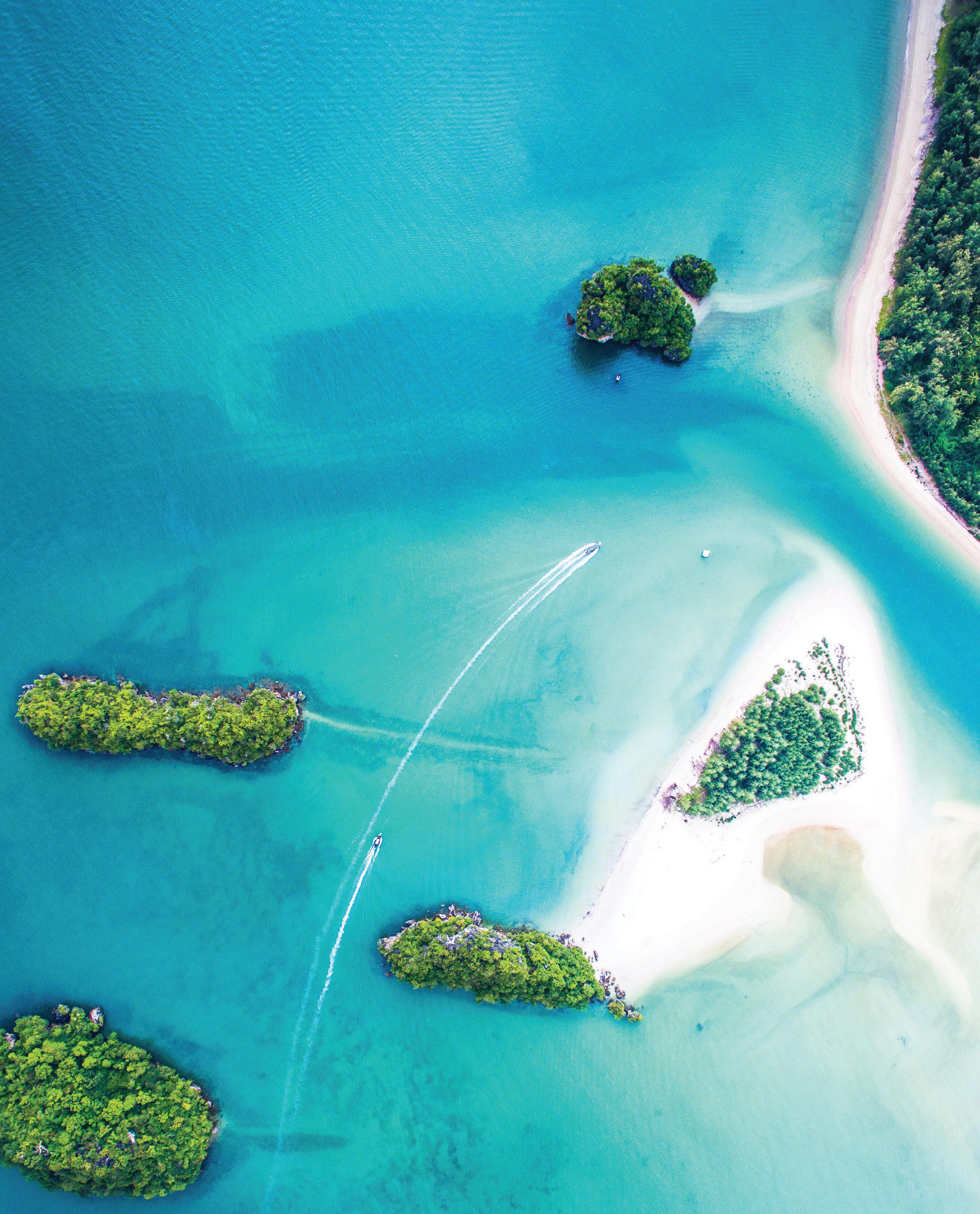
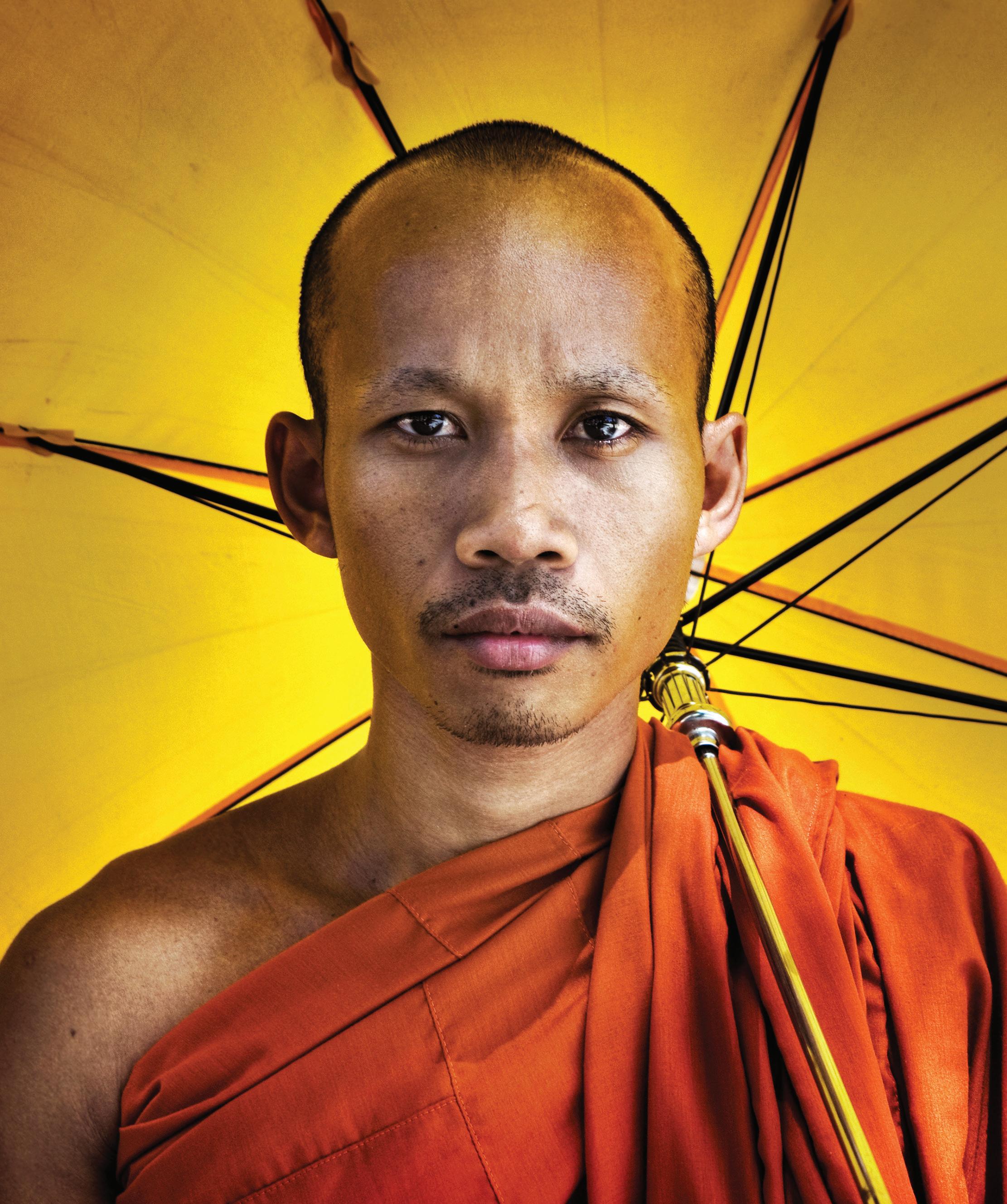
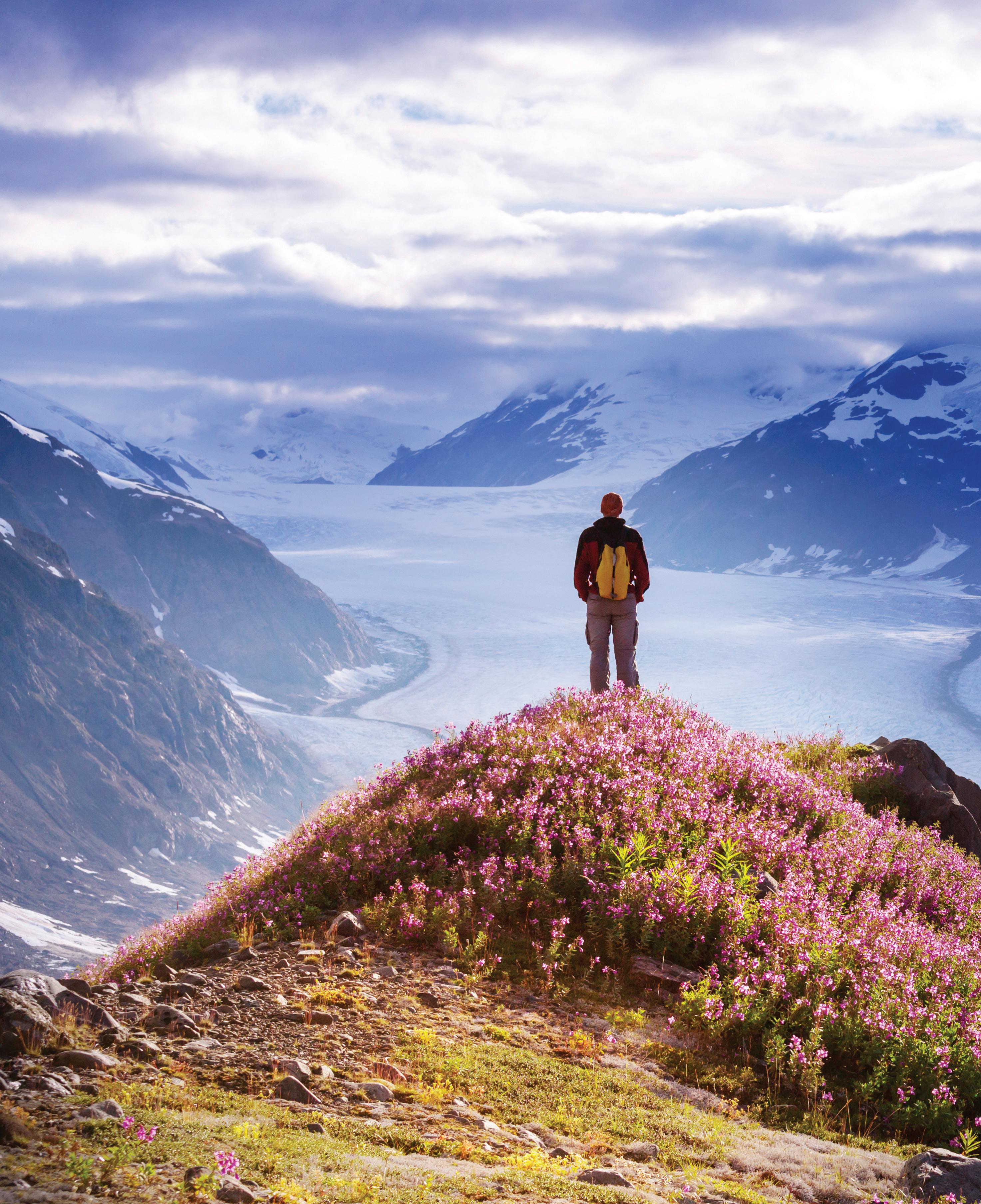
THE MAGNIFICENT WATERWAYS OF ALASKA’S INSIDE PASSAGE ARE A SIGHT TO BEHOLD. OUTSIDE CRUISING SEASON, THE CROWDS MAKE WAY FOR A TRANQUIL AND UNFORGETTABLE EXPERIENCE
 Words by LYN MAWBY
Words by LYN MAWBY
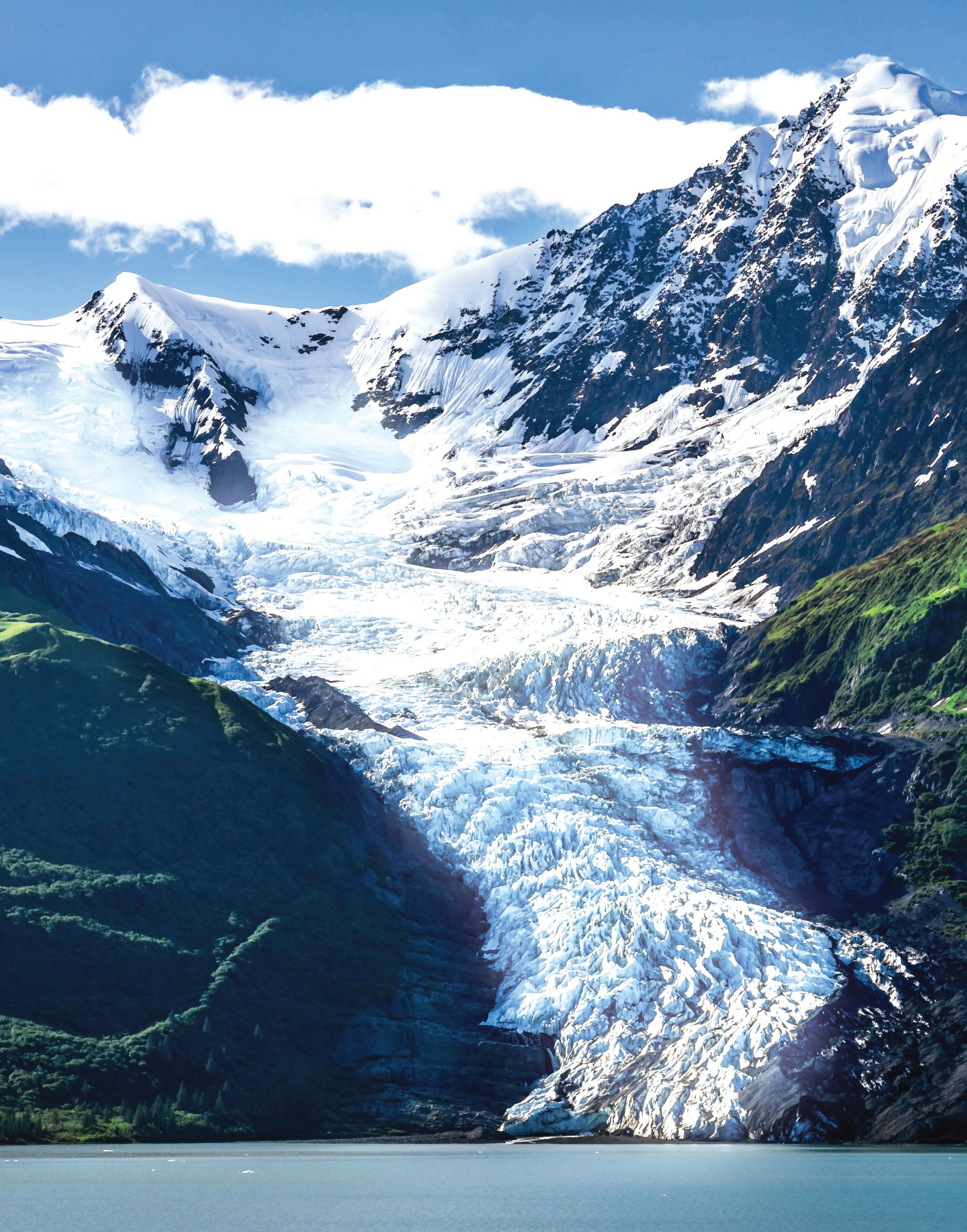
In the shadowy depths, I glimpsed movement. Could it be?
The dark form began drifting towards us, unhurried, each sweep of a powerful tail bringing it closer to the glassy surface of the ocean. I suspect I stopped breathing. At last, the enormous barnacled head of a humpback whale emerged from the depths, exhaling with an explosive and slightly odorous blast of mist. His eye turned towards me for what could have only been a fraction of a second, but in that moment, my world stood still. Too soon, the rest of his body arched through the water, lifting the elegant contours of his flukes skyward. They hovered, waving gently as if in farewell. Then he was gone.
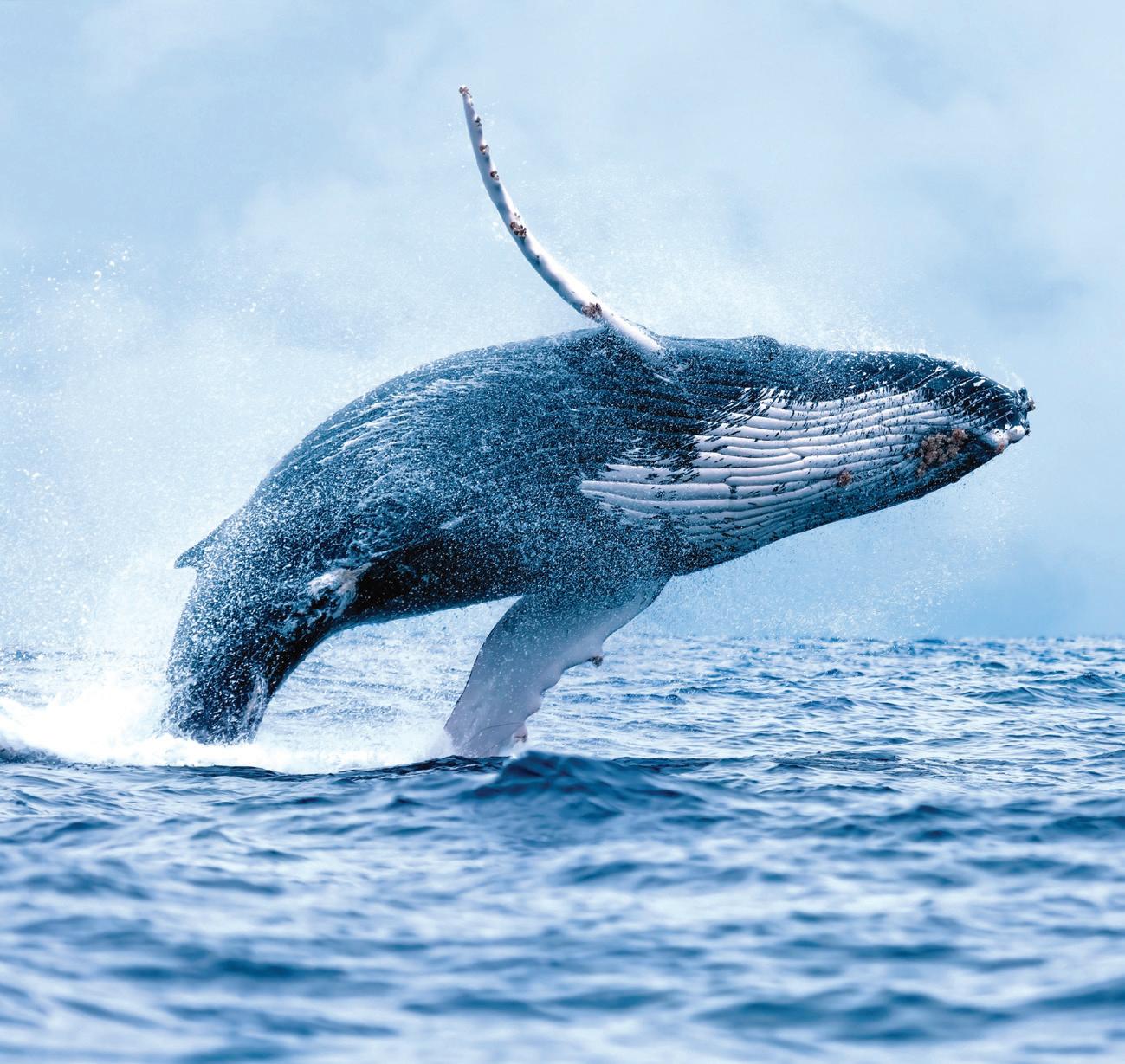
Our small boat rocked precariously as I leapt to my feet, pumping the air and whooping with sheer elation.
Over the previous two weeks, I had been considerably further north, near the remote town of Eagle, Alaska, trying my hand at the sport of dog mushing. It’s a sparsely populated area, even more so in the colder months. The solitude was divine.
The next leg of my journey, exploring the famously picturesque Inside Passage, also offered a level of tranquillity not possible from roughly April to September when waterways and ports are jam-packed. I had chosen to travel in March, just outside ‘cruising’ season.
I had disembarked from a ferry in the diminutive port town of Tanakee Springs just the day before and offers had been coming thick and fast. In fact, the first occurred before my feet even touched dry land. A returning resident extended an invitation of a hike along the pristine shoreline and into dewy forest still clinging to the last of the winter snow. “I’ll take you through Bear Gully,” she said. My face must have portrayed a level of apprehension. “It’s okay,” she reassured me. “They haven’t killed anyone there yet that I know of.” It was difficult deciding whether to be relieved or disappointed at days end, having not glimpsed a single one. We did, however, spot a selection of log
Clockwise from top left: Eldred Rock Lighthouse in the Lynn Canal; the majestic humpback whale; picturesque Halibut Cove. Opposite page: Alaska’s glacial beauty.
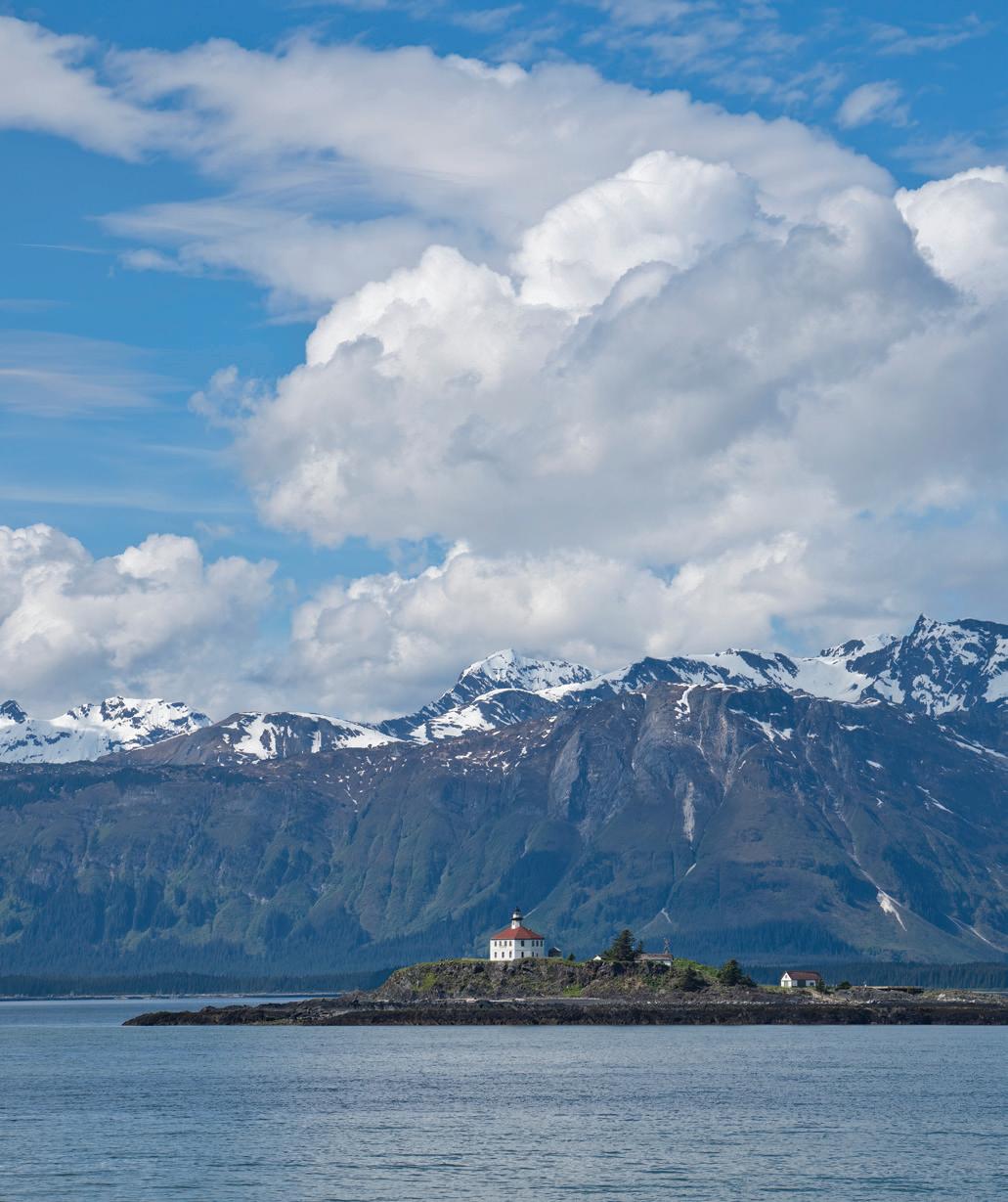
cabins nestled among the trees away from town. In true Alaskan style, there will always be a hot refreshment for an unexpected visitor, and amusing tales to boot. Mostly about hunting. And fishing. Men particularly seem to talk about little else.
While exploring the marina, some local boys suggested I might like to come bear hunting. Walking along the pebbled shore, locals proudly displayed their greenhouses bursting with goodness, vital to extend their growing season and be mostly self-sufficient. The local photographer on her bicycle was never without her camera. Slung around her neck, she was always at the ready to snap yet another postcard shot. It’s just that sort of place. My accommodation host, once he’d finished chopping a mountain of firewood, insisted on a spin across the ocean in the golden hour of dusk. With a backdrop of spruce-covered mountains still dusted in white, we watched orca whales cruising the shoreline, and here our gentle giant of the deep made his brief but unforgettable appearance. >>

“No matter which ports or ferry routes you settle on, the majestic scenery, stunning wildlife, pristine ocean and unbelievably welcoming inhabitants will put on a show you’ll never forget.”

This astonishing welcome became the theme of my wanderings from port to port. There exists a deeper awareness of others and their wellbeing, perhaps stemming from surviving in a harsh climate that dictates an extra level of neighbourly support.
Travelling via ferry was no exception. With barely a tourist in sight, local travellers delighted in sharing their knowledge of their home state, and often their life stories.
There is a reason cruising these waterways is so popular. Water lapping on rocky shorelines, hugged by flourishing forests, slowly giving way to towering snowy peaks – it’s a view that only reveals its full glory from the deck of a boat. Toasty warm in a down jacket, I never tired of the wintery wonderland gliding by.
Thirty-five ports are serviced by the Alaska Marine Highway ferry system, covering a staggering 5600 kilometres, and stretching from the far west Aleutian Chain all the way to Bellingham, Washington. The well-known Inside Passage contains 14 of them, each having its own unique character and attractions. Many of the communities are not connected by road, or even to the mainland in some cases, making travel a uniquely exciting adventure in itself.
Facilities on individual vessels vary depending on the route. Mainline ferries generally boast passenger and vehicle transport, cabin accommodation (including some with wheelchair access), a dining room, cafeteria, comfortable observation lounges, covered
Clockwise from right: The colours of Ketchikan; Sea planes can deliver you from port to port; Animal lovers will be wowed. Opposite page: Haines is renowned for its bald eagle population.

heated solarium, movie lounge, children’s play area and laundry. Day ferries connect the smaller communities. Taking breaks from gawking at the splendour in the outside chill, the cafeteria was a welcome sanctuary, and where many of those engaging local stories unfolded.
When the ferry timetable didn’t deposit me where I wanted to be, I climbed aboard a seaplane. It’s a very different view soaring above the vast mountain ranges that skirt each side of the deep blue sea passage. Departing one location, we thundered across the ocean, rose up over the opposite shoreline, and there she was! A female bear and two adorable cubs ambling along the waterline. Which ports you choose to visit will largely depend on your time frame and particular interests. Ketchikan, the home of the totem, is an immersion into Alaskan Native history. I hear the fishing is pretty good too. Gustavus, where hiking and bird watching are favourite pastimes, is the gateway to stunning Glacier Bay National Park. If you are a history buff, Sitka is the place for Russia’s influence on the region. Animal lovers can’t go past Haines, renowned for its bald eagle population.
Let’s be honest. No matter which ports or ferry routes you settle on, the majestic scenery, stunning wildlife, pristine ocean and unbelievably welcoming inhabitants will put on a show you’ll never forget. Your ferry cabin might not have a spa, but I promise you, every aspect of your Alaskan journey will be top-shelf.


Alaska Airlines service Juneau, Gustavus, Ketchikan, Petersburg, Sitka, Wrangell, Bellingham and Yakutat. Road access can be found via Bellingham, Prince Rupert, Skagway and Haines. For more details on Alaska Marine Highway System, visit dot.alaska.gov/amhs For seaplane information, visit flyalaskaseaplanes.com.

SIEM REAP’S CREATIVE SCENE IS ABUZZ AND AT THE HEART OF THE REVIVAL IS A WORLD-CLASS STREET ART OFFERING
 Words by JOE SMITH
Words by JOE SMITH
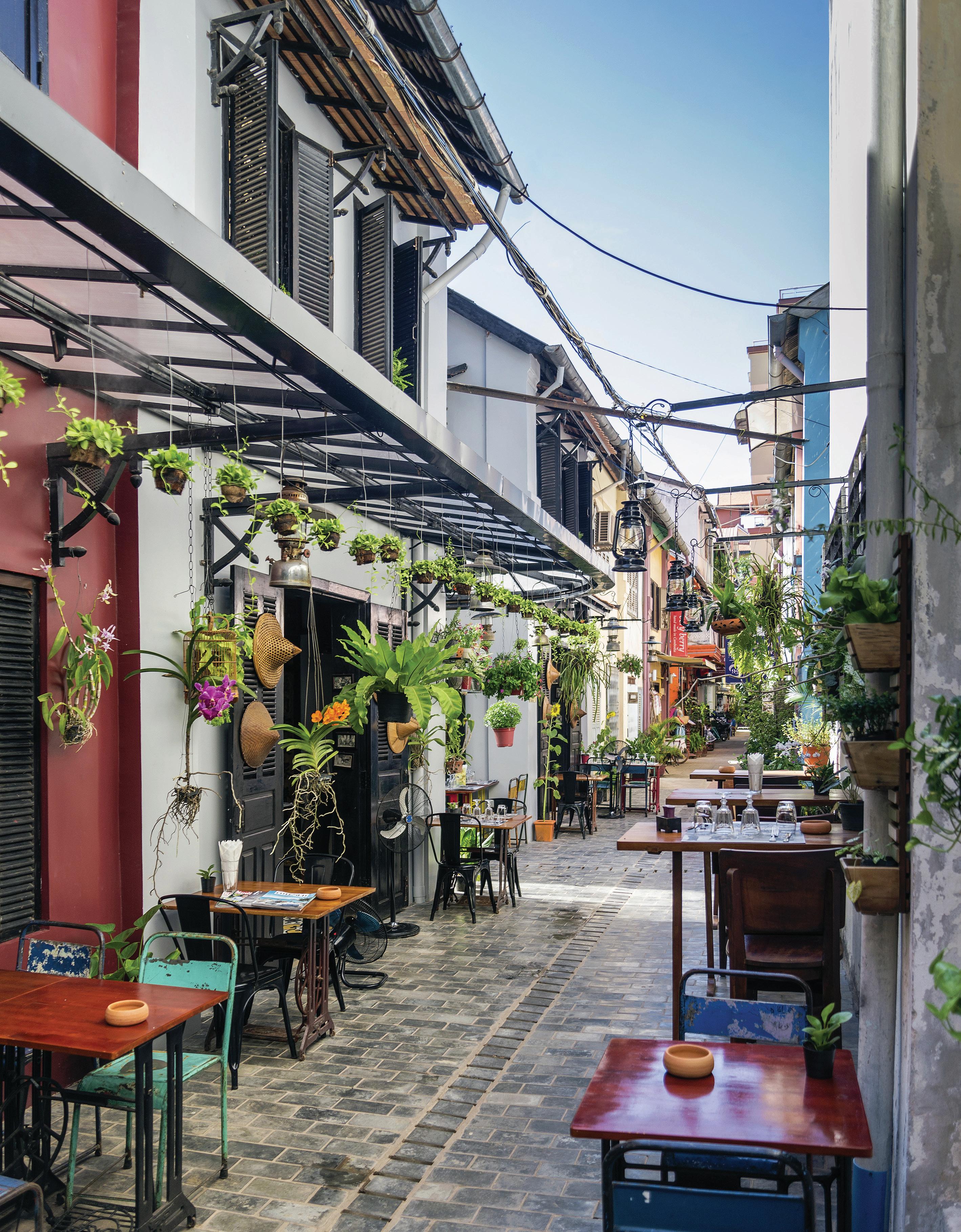
Wealthy socialite and bon viveur, author Somerset Maugham was a consummate luxury traveller. His travelogues are gems of wry urbanity. Not for him the unfailing effusions that mark the lesser writer; if he didn’t think a place worth the effort, he’d tell you. “At Hanoi, I found nothing much to interest me,” he wrote, and Haiphong was “a commercial town and dull”. But Angkor Wat blew Maugham away. “I have never seen anything in the world more wonderful than the temples of Angkor,” he wrote. What so bewitched him was the artistry evident in Angkor’s every detail. “Capitals, pediments, pilasters, doorways, windows are enriched with carvings of unimaginable variety,” he said. Their authors “had a free hand and with a fury of creation crammed into these narrow limits all the
“Spurred by Angkor’s rise as a luxury travel destination, the city on its fringes – Siem Reap – has become the locus for a remarkable renaissance in contemporary art. Visitors to Siem Reap can today experience world-class urban and street art.”

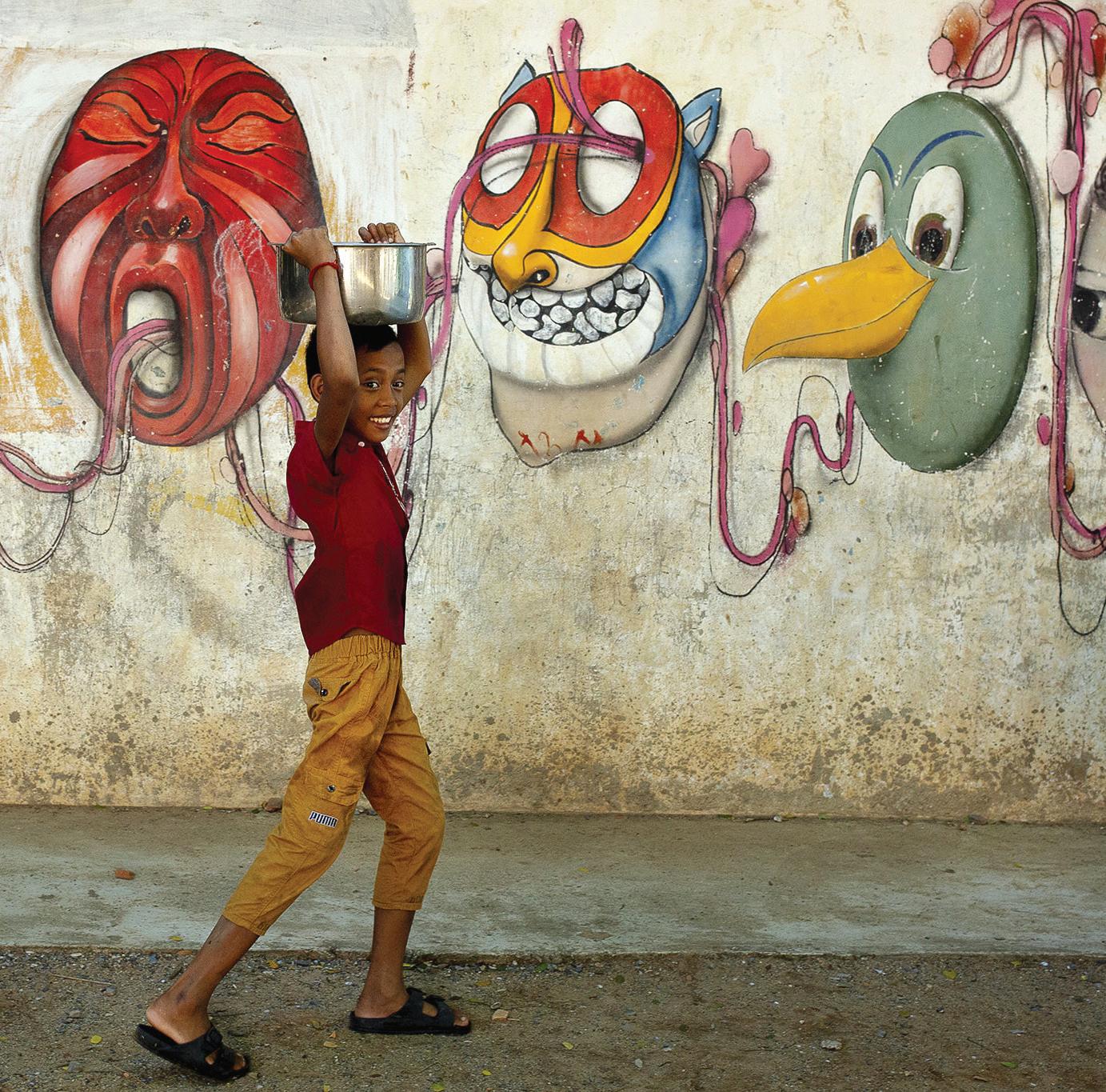
adventures of their impetuous souls.”
When Angkor reached this artistic zenith, it was the capital of a fabulous empire that stretched across Southeast Asia. Then suddenly, mysteriously, Angkor fell, its million souls melted back into the jungle, and the vast monument sank into its 800year slumber.

Now, just as suddenly, that creative impetuosity has returned. Spurred by Angkor’s rise as a luxury travel destination, the city on its fringes – Siem Reap – has become the locus for a remarkable renaissance in contemporary art. Visitors to Siem Reap can today experience world-class urban and street art, avant-garde circus, internationally acclaimed photography, and cutting-edge modern and colonial-revival architecture at some of the region’s plushest hotels. It’s a virtuous circle powered by the increasingly discerning and cultivated tastes of the visitors Angkor now attracts. And while Maugham spoke of the “immense difficulty” of a trip to Angkor, a happy consequence of all this new emphasis on luxury is that these days... well, it’s no hardship at all.
Former finance professional and art collector Terry McIlkenny was seduced into moving to Siem Reap by the sultry beauty of the country and the agreeable pace of life in the town. McIlkenny’s passion is urban and street art, and when he saw what the new generation of local artists was capable of, he knew he was going to open a gallery.
“Young Cambodians, they’re natural dreamers,” he says. “They want to make art, but there’s pressure from family and >>
peers to do something more obviously lucrative. They don’t know how to make money out of it. So that’s what we want to do –connect them commercially.”
Thanks to his long career as a collector, connections are something McIlkenny has in spades. “When me and my partner Nat opened [art gallery] TRIBE, we asked all our artist friends to come over and jump-start it, and they all said yes – every single one.”
Among the big names to make splashes in Siem Reap have been Carne Griffiths, famous for his portraits of Kylie Minogue and Kate Middleton, among others; Pure Evil; and Fin DAC, whose renditions of mysterious masked women have been featured on Australian stamps.

Now, it would be too starry-eyed to suggest there might be something about Angkor itself, some subliminal or mystical connection to the fabulous monolith smouldering in the jungle that
inspires people to make art. And yet…
“When Fin got here, he just wanted to paint,” says McIlkenny. “So we found him a wall on the side of the gallery and he just picked up his brushes and went at it.” The result of this spontaneity is Kandalis, a stern and beautiful Khmer protectress, staring down a narrow urban alley where old ladies sell chicken and coconuts. “Now all kinds of shops and businesses are offering us their walls,” McIlkenny adds.

Fin’s original brief was to paint a mural on the portico of Cambodia’s only free art school in Battambang, Phare Ponleu Selpak. When prints of that work, Anapyabal, were auctioned in Paris, they sold out in three minutes, and Fin donated all proceeds – more than $40,000 – back to the school.

This is what’s so uplifting about Siem Reap’s artistic renaissance; the actors involved are often highly socially engaged and motivated to nurture the talents of Cambodia’s current and future generations. Phare circus is a case in point; all profits head back to Phare Ponleu Selpak, where its performers are trained and which directly and indirectly supports more than 1000 people.
Phare’s shows are acrobatic and pyrotechnic in the manner of Cirque du Soleil’s, and one of Phare’s graduates has joined that august company. But although the performance is not quite so polished and the sets not so grand, Phare, I contend, beats Cirque du Soleil on sincerity and joie de vivre. These are absolutely authentically Cambodian productions, on real Cambodian themes and written by the actors themselves. >>
“Phare circus is a case in point; it ploughs all of its profits back to Phare Ponleu Selpak, where its performers are trained and which directly and indirectly supports more than 1000 people. ”Fin DAC’s Kandalis Fin DAC at work
“Phare, I contend, beats Cirque du Soleil on sincerity and joie de vivre. These are absolutely authentically Cambodian productions, on real Cambodian themes and written by the actors themselves.”
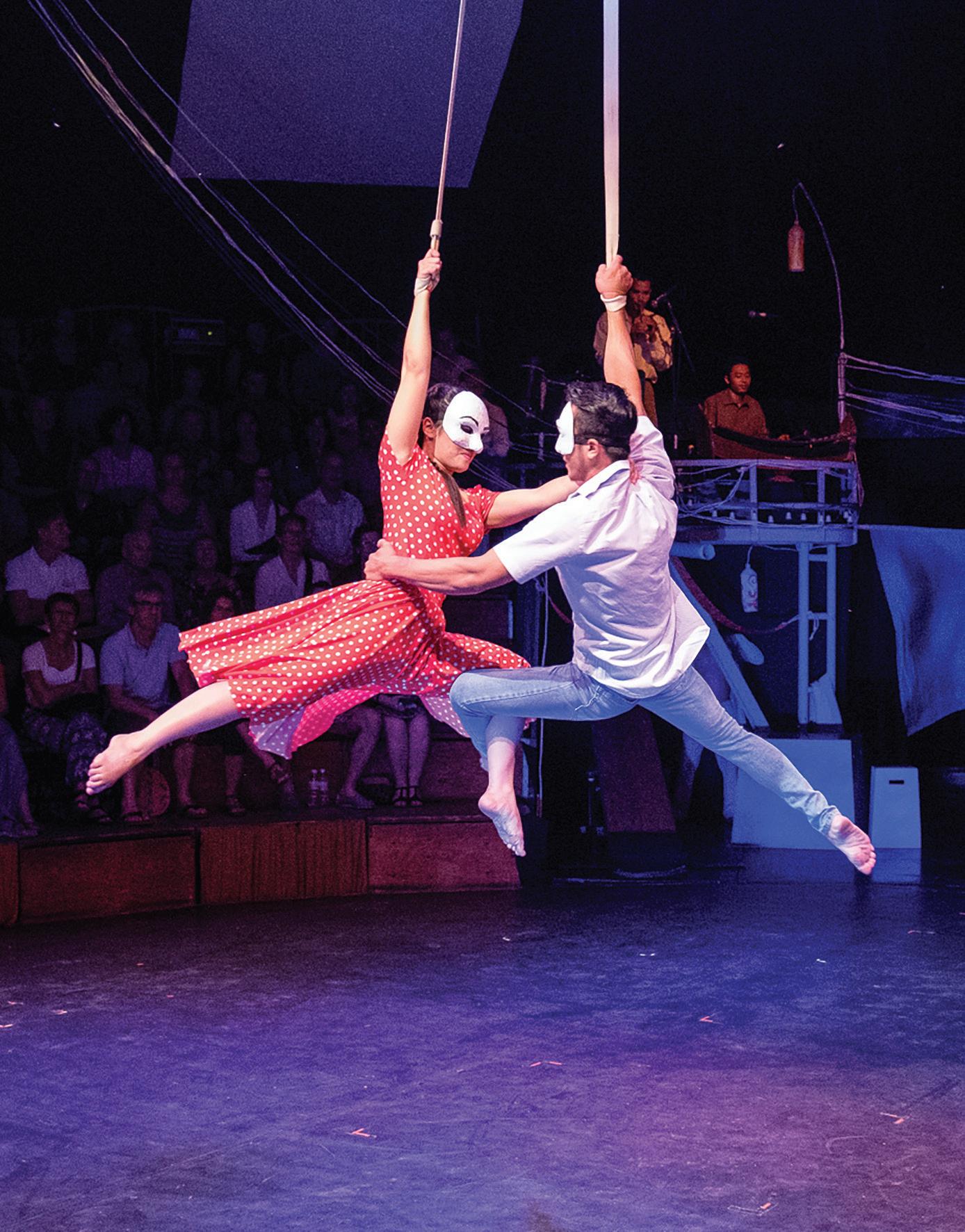
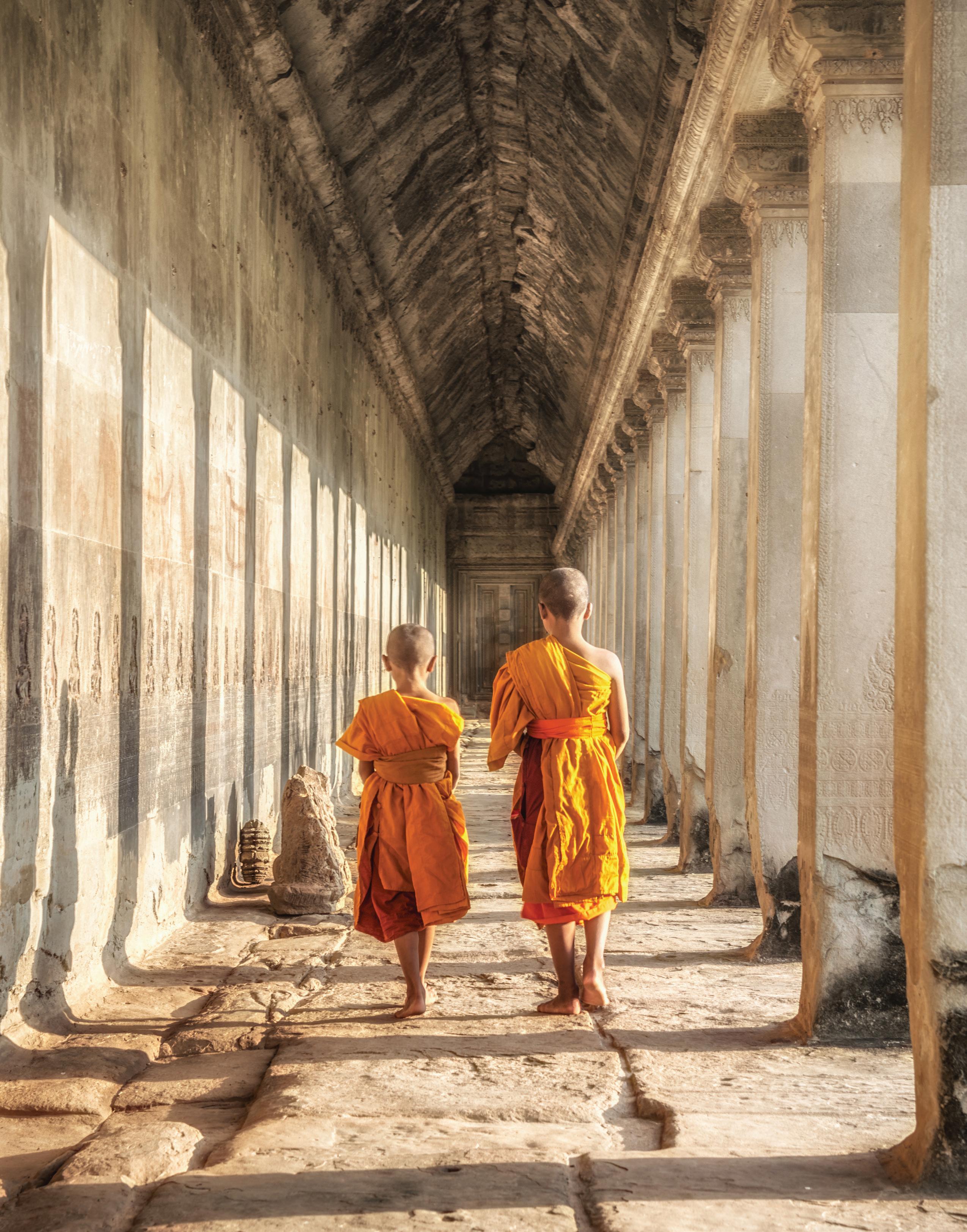
The show we saw was about the superstition and stigma surrounding disability in one of the most heavily mined countries in the world. It was extremely moving. The joy of personal and physical expression shone in the faces of the young actors as they performed their kinetic stunts and landed their terrifying tricks, and many in the audience had tears in their eyes by the end.
“The youth of Cambodia want to tell their stories,” says Phare’s Craig Dodge. “Until now there’s really been no medium for them to do that.” There could be no better proof of Dodge’s thesis than in photographer Kak Sokphirom, or ‘Phirom’, as he likes to be called. Born in a refugee camp with 10 siblings and an alcoholic father, Phirom did everything and anything to put food on the table: “I worked on construction sites, sorted trash, sold sweets – I used to be called ‘Cake Boy’ – to save up for a tuk-tuk.” For years,
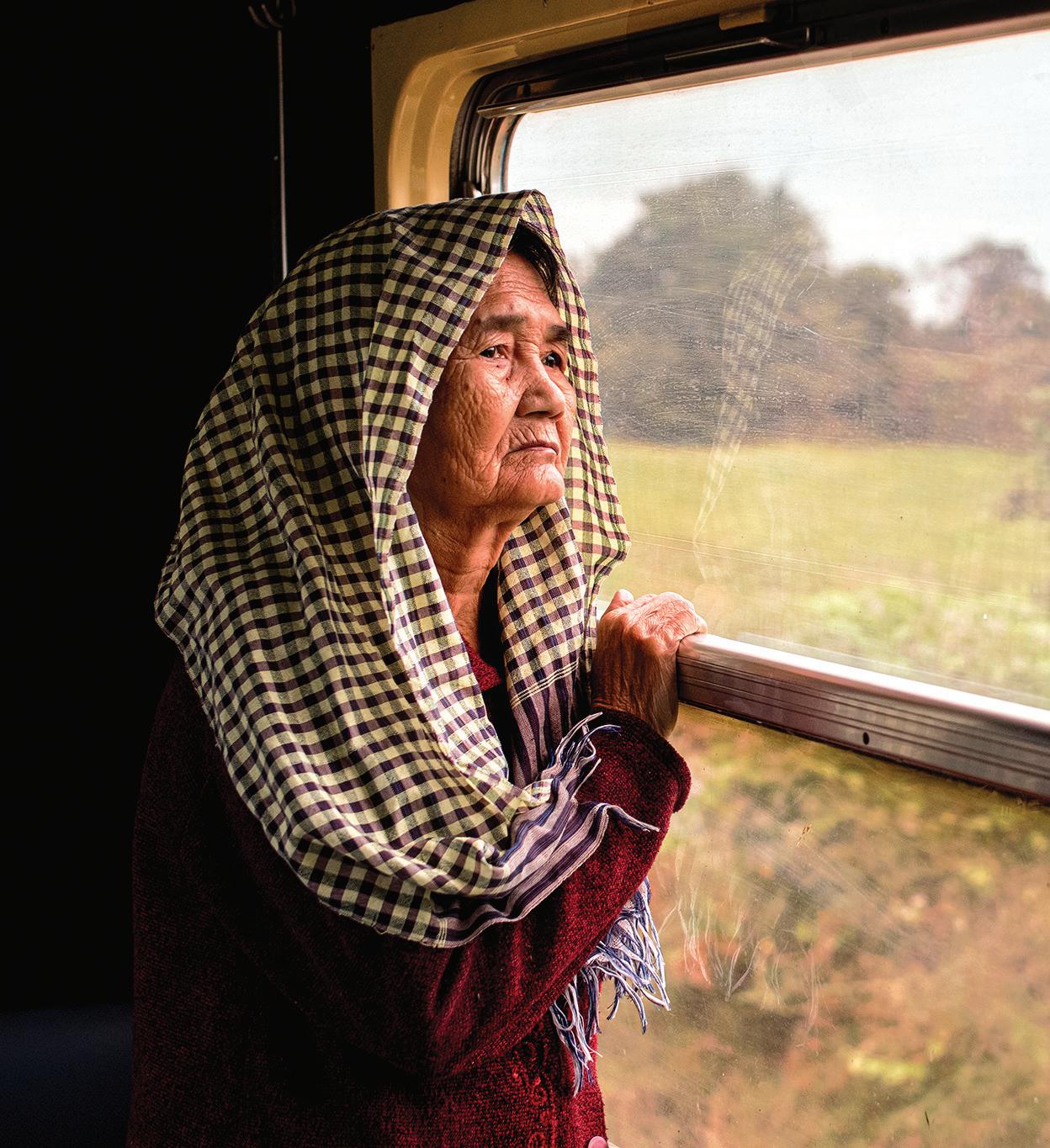

Phirom drove his tuk-tuk by day, converting it into a pop-up roadside bar at night, until a few years ago when someone gave him a digital camera to play with.
“It just made me so happy to see the image on the screen – an image I’d just made!” Phirom had found his calling. He was so keen to learn the craft that when he got his first camera, he’d approach strangers looking for pointers. “I’d go up to tourists with expensive-looking cameras and ask them to look at my pictures and tell me how I could improve them.”
Still, Phirom didn’t believe he could make a living out of photography until he met other artists and gallery owners in Siem Reap. “Terry gave me the confidence to try to make this my work,” he says. Now Phirom’s edgy, haunting pictures recording the real lives of Cambodians today have been featured in international magazines. He has exhibited at TRIBE and other galleries, visitors to Siem Reap are buying his works, and was recently tapped to put on a show alongside acclaimed international exhibitors at the prestigious Photo Phnom Penh Festival. Phirom still has his tuktuk, but now uses it mostly for photographic tours.
Phirom’s experience illustrates some of the virtuous circles between artists, tourists and businesses that are bringing Cambodia’s art back home to Angkor. Stories like his make Siem Reap an optimistic and inspiring place to be, and the cultural and artistic attractions that now complement Angkor are so rich, you may want to extend your stay, as I eagerly did. But as Maugham said, “I knew by now that it was the sort of place that, however long one stayed, it would always be a wrench to leave.”

“Phirom’s experience illustrates some of the virtuous circles between artists, tourists and businesses that are bringing Cambodia’s art back home to Angkor. Stories like his make Siem Reap an optimistic and inspiring place to be.”© Images courtesy of Phirom Photographer
NORTHERN ITALY’S ALMIGHTY DOLOMITES ARE A YEAR-ROUND ADVENTURER’S PARADISE. ENDLESS PEAKS MAKE FOR ENDLESS CHALLENGES, BUT THE REWARDS ARE ABUNDANT AT ALL ALTITUDES
 Words by GARY ALLEN
Words by GARY ALLEN
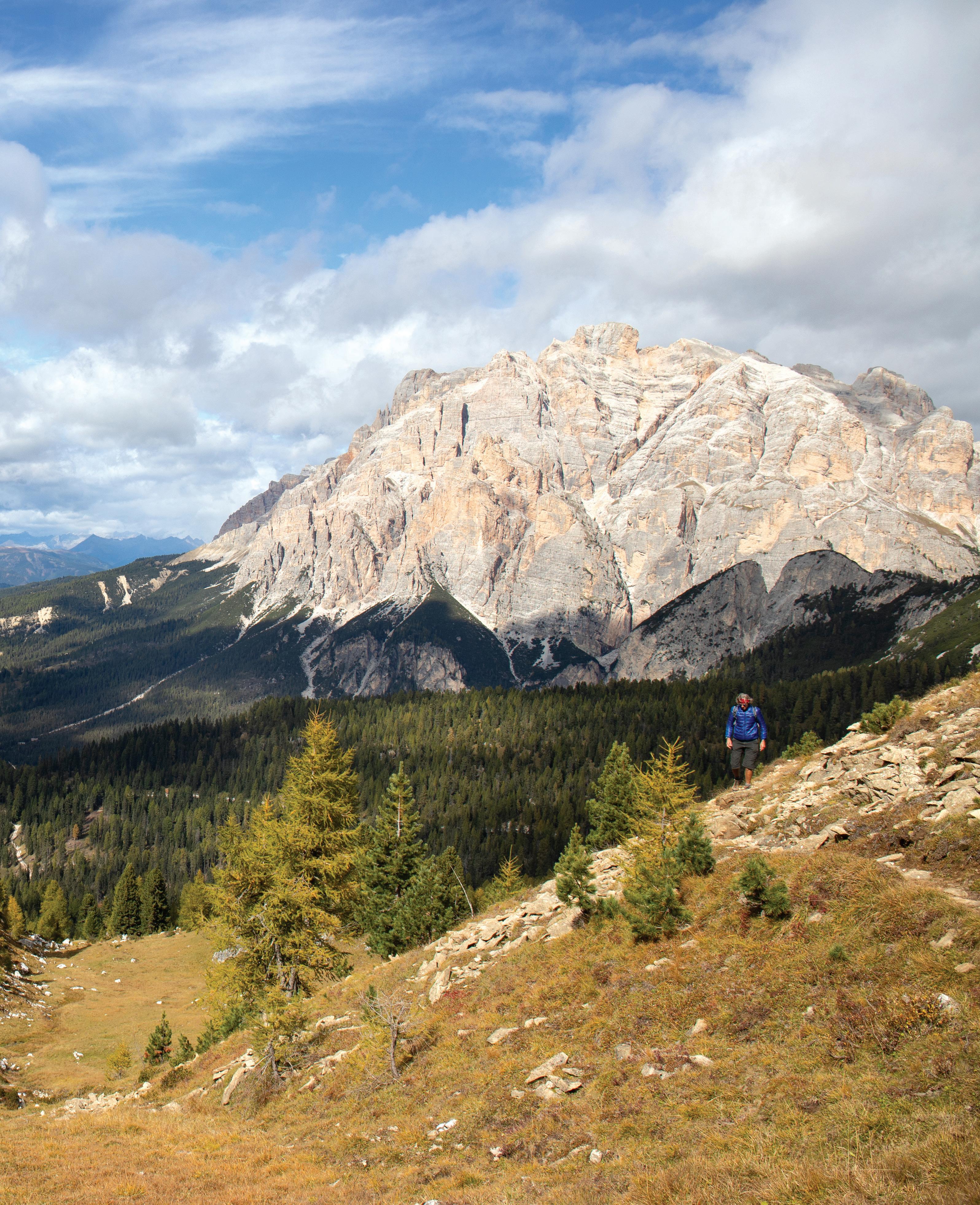
Good morning, buongiorno!” It’s a pretty standard greeting from concierge in an Italian hotel, but what followed was slightly less typical. “There,” he announced with grandeur, arms opening wide, “is your playground.”
And what a playground. I am standing in the lobby of Alpina Dolomites Lodge, an inviting space which opens up to a spectacular panorama of the famous Italian peaks.
“What would you like to do today? Mountain bike, road bike or hiking in those mountains, or all of the above?” he laughed, but I was tempted. All of the above, after all, is exactly why I am here.
My adventure playground for the next week, the Dolomites have long played this role for Europeans, particularly in winter when the setting becomes an extensive ski network. In the warmer months, the mountain range becomes a renowned hiking and biking destination, and I plan to get a solid fix.
Spanning the provinces of Trentino and Alto Adige, and encroaching on neighbouring Veneto, the UNESCO World Heritage Site comprises numerous peaks, 18 of which rise to 3000-metres-plus. Looking at the soaring range, it is hard but fascinating to imagine the high-altitude battles that took place here between the Italian and Austro-Hungarian armies during World War I. How brave such men – boys even – must have been. This rich and bloody history only fuels my desire to explore.
My first stop is Ortisei, a small village in Val Gardena and home to about 4600 people. The area ranges from around 1125

Above: Alpina Dolomites Lodge boasts prime position.
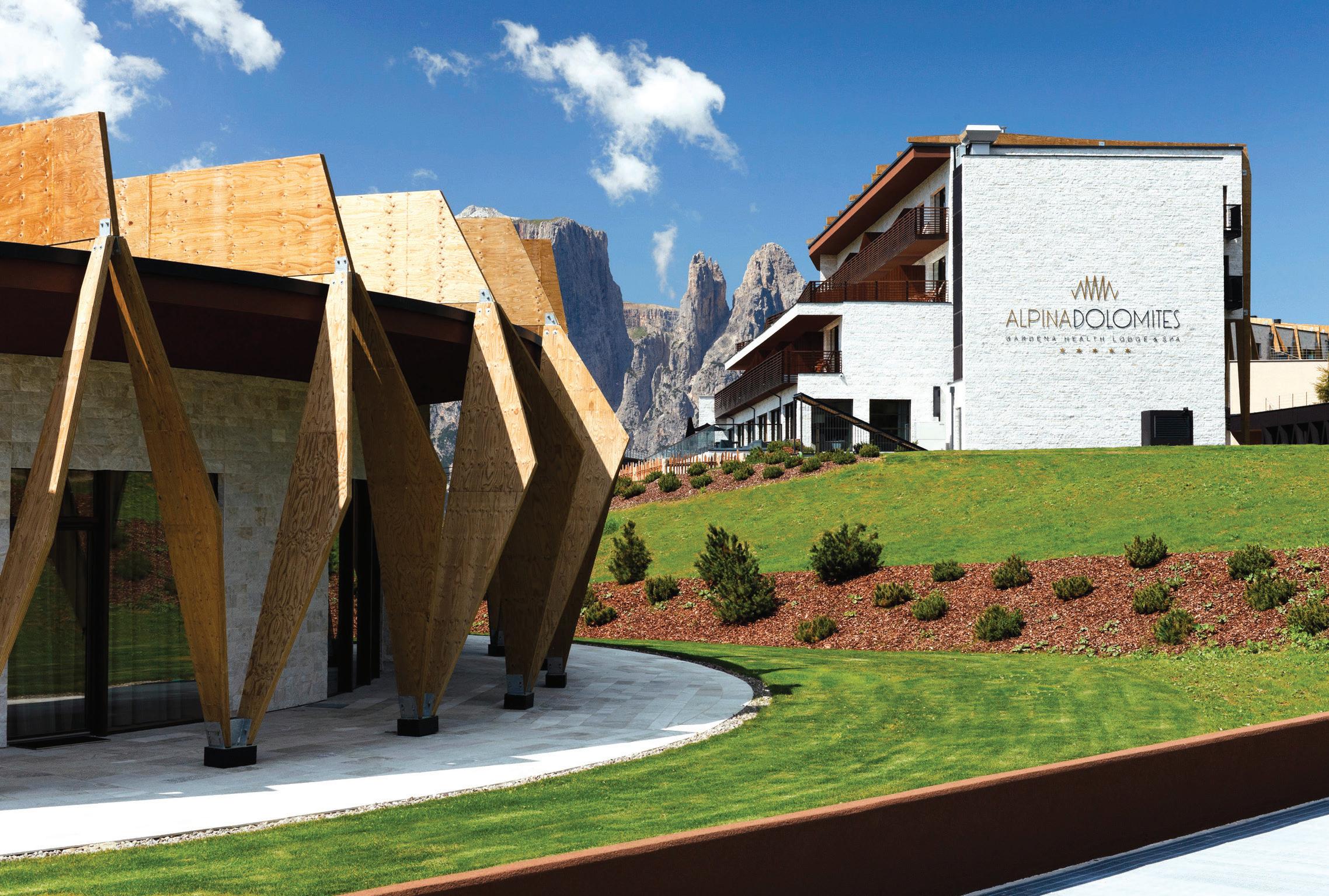
Below: The charm of Ortisei.
Opposite page: The Dolomites as seen from Tre Cime.
to 2518 meters above sea level and is famous for its artfully carved and decorated wooden sculptures, which can be seen dotted throughout town. Traditional hotels and buildings, and a quaint main street, bolster the village charm, but it’s the gondola that captures my attention. It is, after all, how I will be heading up the mountain.
Once on high, and surrounded by incredible 360-degree views, trails are well signposted and the terrain is mostly flat and walkable. Until, that is, you’re ready to continue the ascent.
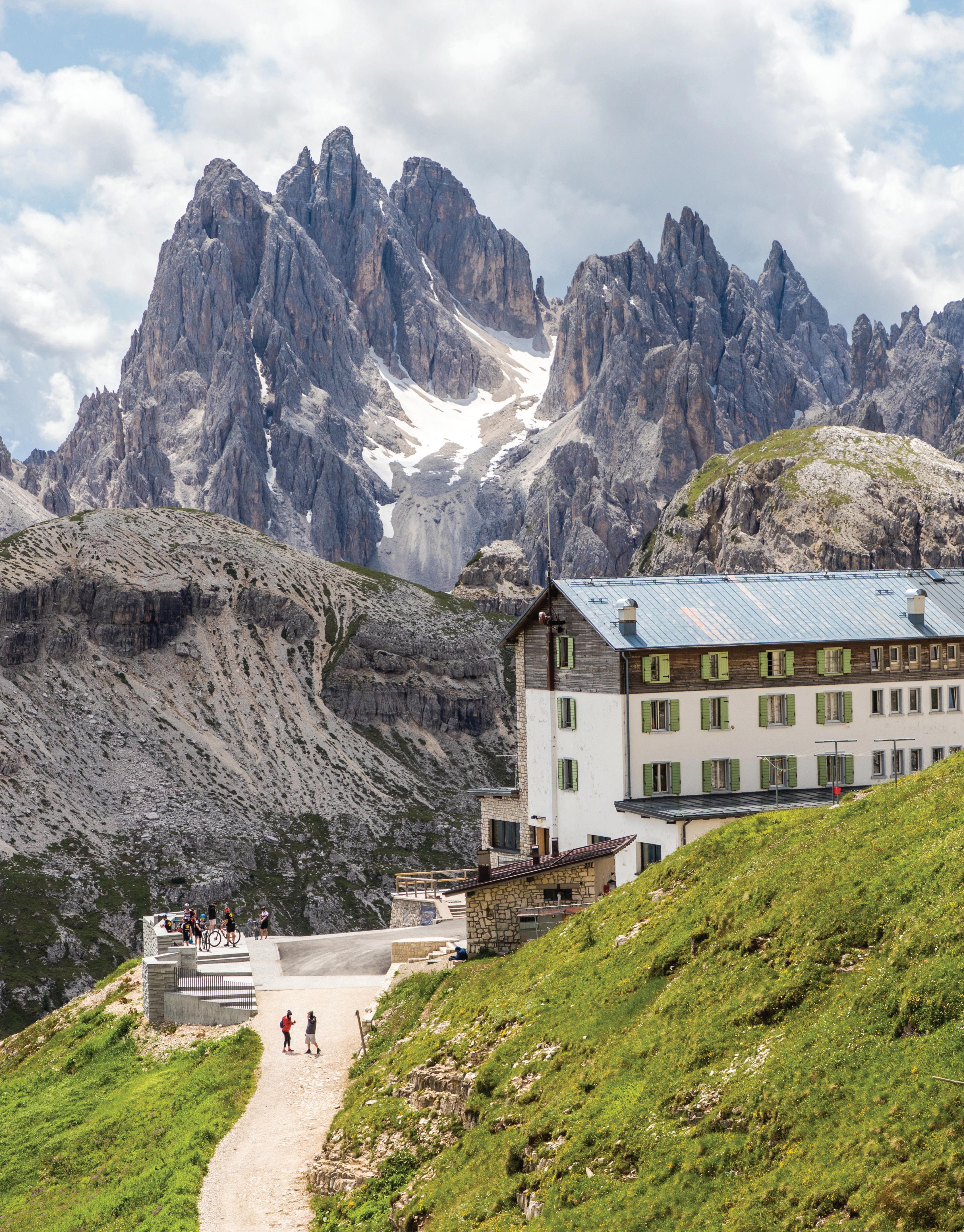
Jagged peaks beckon at every turn and there are hikes for all levels – steep, flat and gradual.
The next morning, we take the adventure to the road. Hairpin turns make up much of the 20-minute journey from Ortisei to Suisi, where Alpina Dolomites Lodge is located. Sitting atop the Alpe di Suisi plateau, with the gondola lazily gliding by, the lodge is perfectly positioned for all things outdoors. This is also celebrated within, with the hotel design inspired by nature and natural materials used heavily throughout.
It’s not long before I noticed the lodge’s mountain bikes – available on a first come, first serve basis – and I am off, starting out with a 10-kilometre ride to the base of the 2956-metre Sassopiatto. I have my eye on reaching the summit – the very one I’d been admiring from Alpina’s oversized windows. Riding is easy at first, the flats between lush cattlefilled pastures providing the perfect warm-up. After a five-
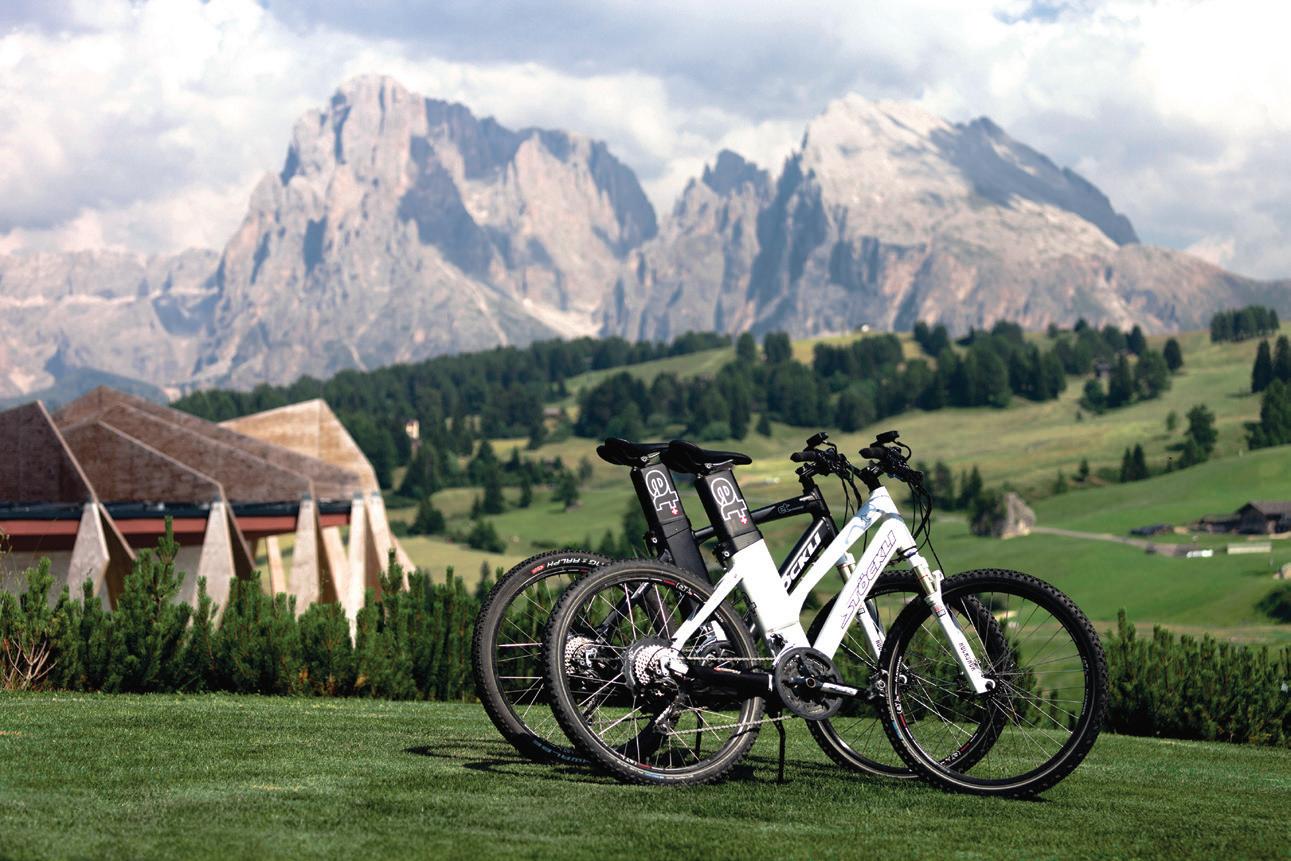
Clockwise from above left: The luxe textures of Alpina Dolomites Lodge; Alpina’s pool room with a view; mountain biking is just one way to tackle the famous peaks.
kilometre uphill grind to the beautiful Zallinger mountain hut, we stow our bikes and continue on foot.
At the base of Sassopiatto, also known as Plattkofel or Sasplat, we change our plan. Given an overnight dumping of snow, we decide we are a little lightly dressed for the conditions and continue on an alternate loop trail, slightly off-piste in sections, back to the bikes.
By late afternoon, we’re back at the lodge, exhausted and deeply grateful for the fresh apple strudel and hot chocolate on the deck. As the sun drops, I take stock. An incredible adventure behind me, the spa ahead of me – what a life!
The spa, which includes pools, saunas and steam rooms, isn’t the only way to relax at Alpina Dolomites Lodge. The lobby bar is well patronised thanks to the comfy chairs and lounges, and the stellar views. There is also an expansive deck with comfortable seating and blankets – a wonderful spot to settle in with a book and a drink – and two restaurants, including the fine-dining Mountain Restaurant. But first, sink into the luxury of the cigar lounge for an aperitif.


I am sorry to leave, but I must as the village of San Cassiano beckons. Located in the valley of Badia, San Cassiano –population 900 – is another quaint town, located at 1537 metres above sea level and at the foot of the Dolomites’ Lavarela and Conturines peaks.
I am staying at Rose Alpina, a beautiful heritage hotel dating back to 1850 and oozing boutique charm. A lazy buffet-style breakfast is strategic – today I plan to reach the Lagazoui summit and sustenance is key.
Walking switchback after switchback, it is about 45 minutes before we arrive at Rifugio Scotoni, where we pull up for a snack, to rehydrate, and to take in the beautiful meadow surrounds. I crane my neck to preview the journey ahead. It is steep and this rest will serve me well.
Up we climb for another 90 minutes, past alpine lakes, snow
flurries and imposing sheer rock faces, and through rocky boulder fields, before finally reaching the summit, 2750 metres above sea level. The panorama of surrounding peaks and neighbouring valleys is the stuff of postcards, but there’s just nothing like the real deal.
After covering 25 kilometres, with a vertical gain of about 1500 metres, we feel we’ve earned our celebratory drink, and the wood-fired pizzas don’t hurt either. Food is no afterthought at Rosa Alpina with dining to suit all tastes, >>



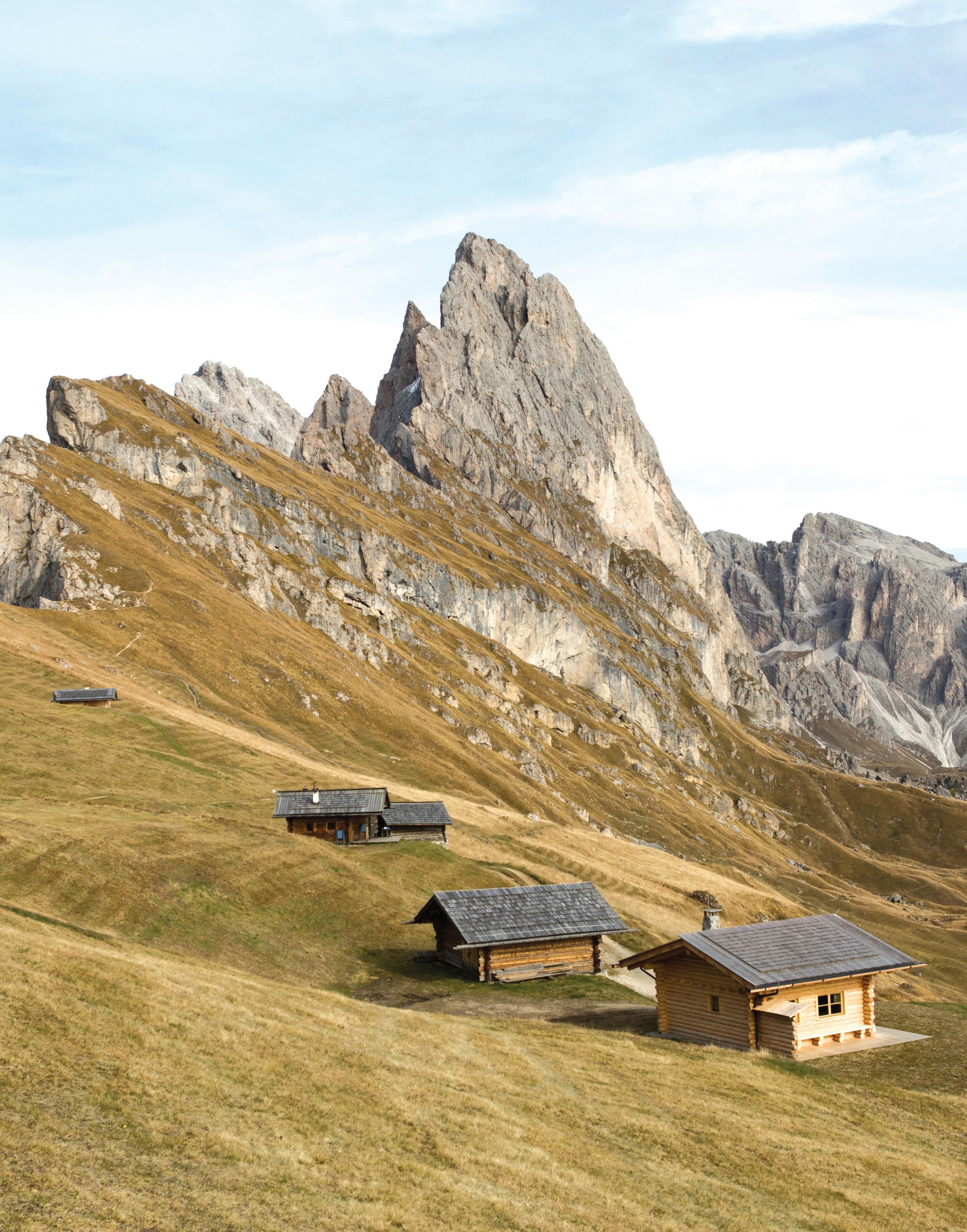
including the most refined palates – in-house Restaurant St Hubertus is the proud recipient of three Michelin stars.
Cortina d’Ampezzo, in the province of Belluno, is my final destination and the renowned tourist resort puts on the glam. Also known as Cortina, the ‘Queen of the Dolomites’ is larger than my previous pitstops. It boasts great shopping and dining, helping create a buzzing atmosphere, but the village feel remains.
Home of the 1956 Winter Olympic Games, Cortina is gearing up to host the 2021 Alpine Ski World Championships and will co-host the 2026 Winter Olympics alongside Milan. My visit is
considerably less masterful, although not for want of trying.
I am back in the saddle today, albeit with a little assistance. I have never used an electric bike before and, as a traditionalist, I baulked at the suggestion. No way , I think. I won’t do it. I’m fit enough to climb anything or die trying.
Within minutes, I am converted. Remarkable as they are, these mountains can and will be torturous, even for the experienced rider. Whether you rely on it heavily or just call on it every so often, the e-bike makes sure you reach your destination without hurting your feelings and falling over from exhaustion.
We ride for more than eight hours, covering many more kilometres than we could have on a traditional bike. We’re aiming for Prato Piazza, a plateau located 2000 metres above sea level. With every turn, a new and dramatic vista is unveiled and, thanks to the e-bike working in the background, we can truly take it in.
As we continue our ascent, the fog thickens and soon the views have fallen away. We are surrounded by clouds. And it’s just like heaven.
The international airports of Venice, Italy and Innsbruck, Austria, are both about 150 kilometres from the Dolomites.
Rates for Alpina Dolomites Lodge start from €485 (about A$790) per room. alpinadolomites.it/en

Rates for Rosa Alpina start at €740 (about A$1200) per room. rosalpina.it
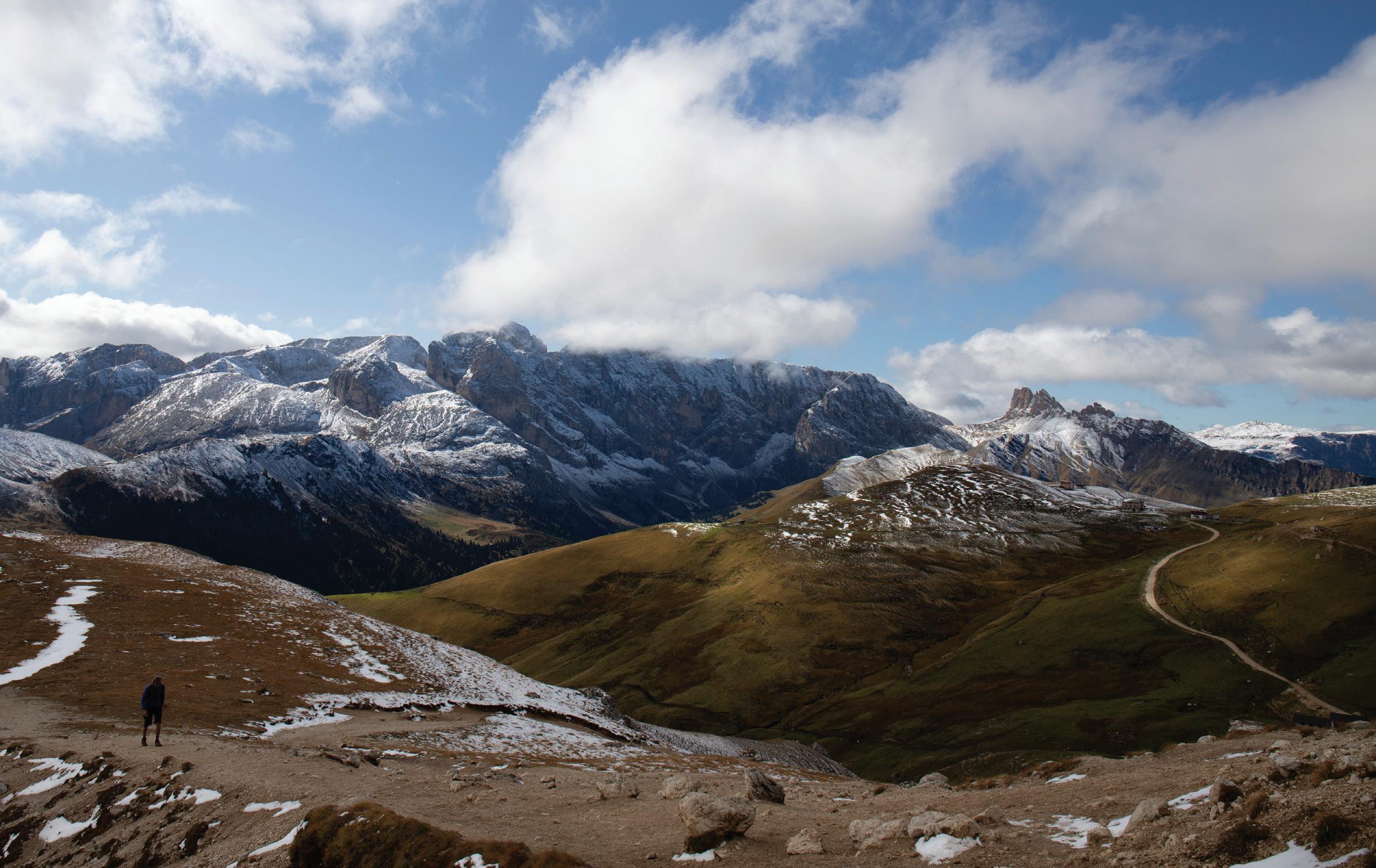

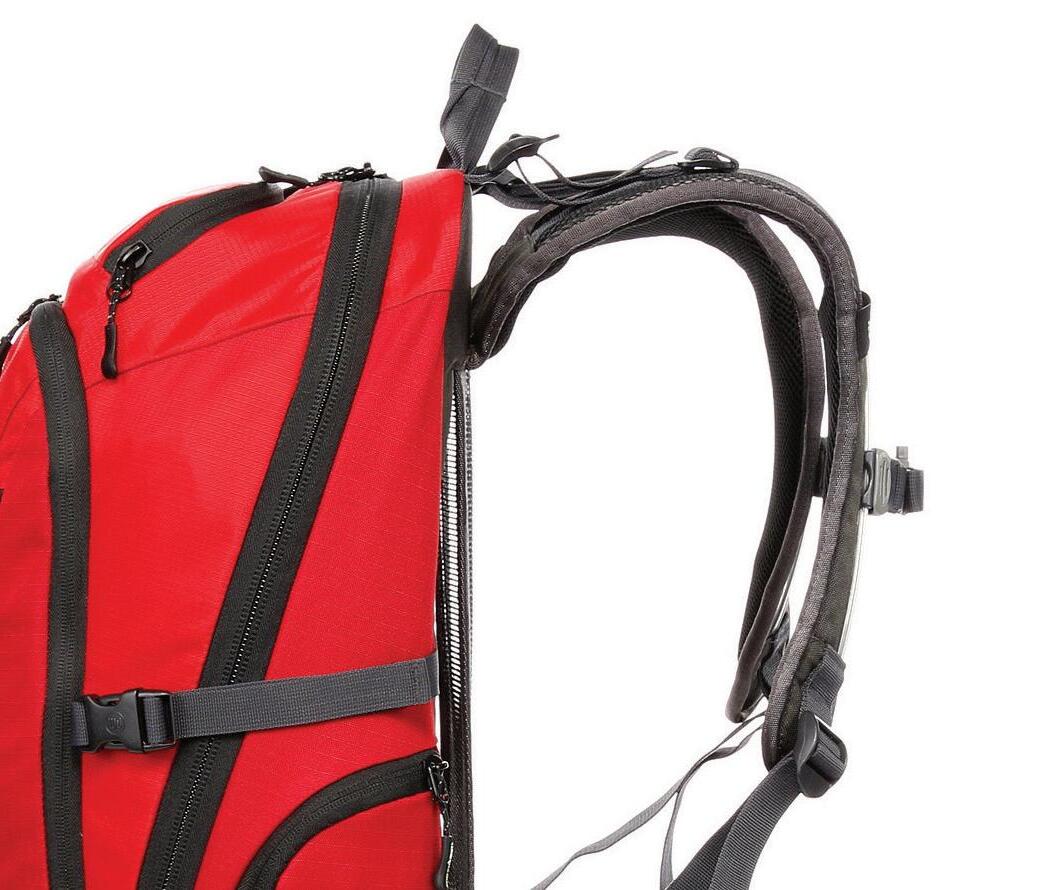



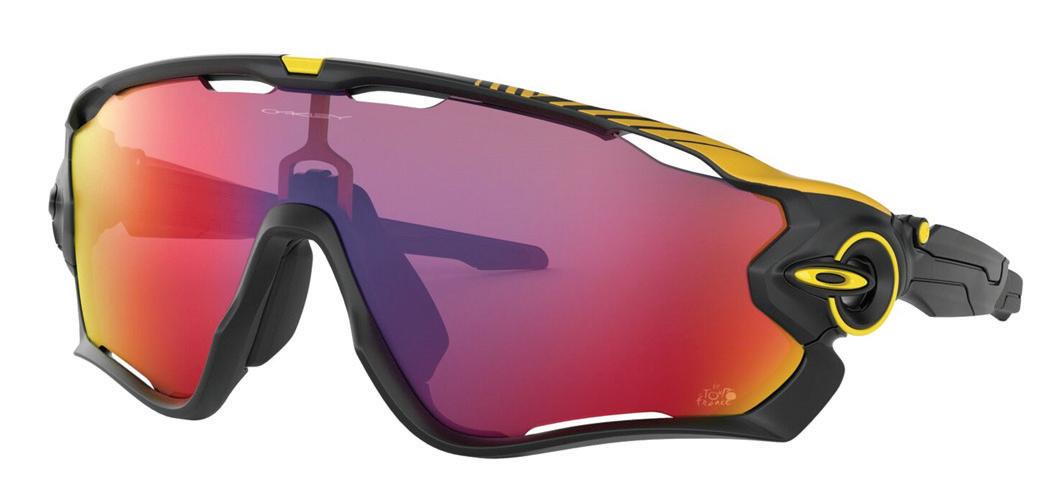







Size: 92.5 square metres / Price: from $1000 per night / Reviewed by:
Kelly Allen / Details: lakehouse.com.auA stay at Daylesford’s Lake House is to witness just why the property has enjoyed such rich success across its 36 years. Co-owner and culinary director Alla Wolf-Tasker has created an Australian icon, where the beautiful rhythm of life is emphasised and honoured.
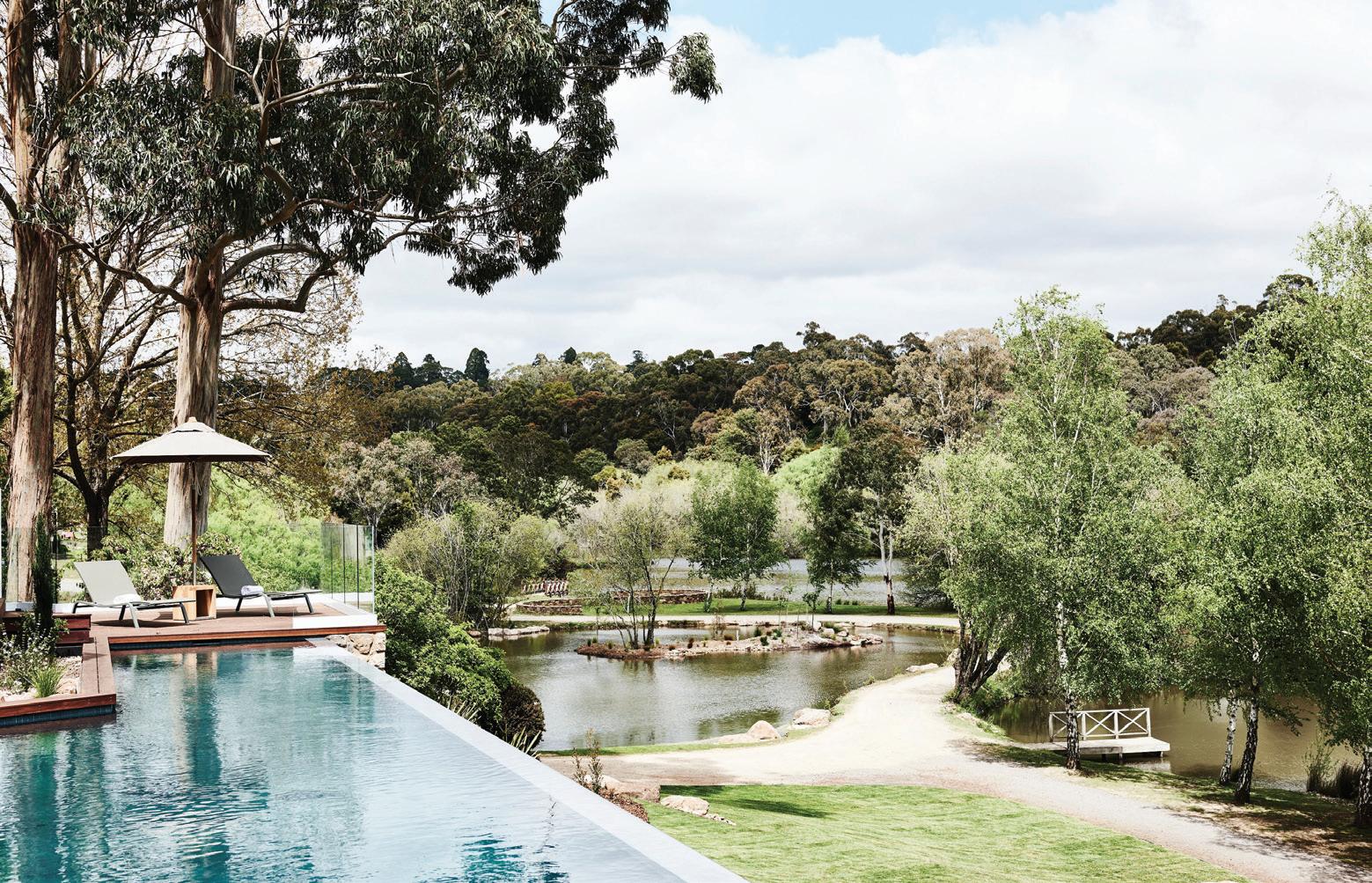
The hotel is positioned on the edge of Lake Daylesford, a vantage point that can be enjoyed from various points throughout the property, including from the inviting lounge chairs set up by the infinity pool. With just 33 rooms and suites, the Lake House is a genuine boutique hotel and the ambiance that label brings is evident at every turn.
We find it hard to be away from our dreamy Atrium Villa for too long. The deep linen sofa and leather armchair in front of the gas fireplace, the luxuriously soft bed, and the huge assortment of magazines and books keep calling us back. In the bathroom, the freestanding tub is perfect for soaking, the warm marble floors are a cosy touch, and the windows, which stretch along two sides, look out into a private courtyard. With its striking vaulted ceiling, the lounge room features multiple windows looking out to a veranda and gardens, and to the lake beyond.
Daylesford is located in the foothills of the Great Dividing Range, less than 90-minutes’ drive from either of Melbourne’s commercial airports. It is renowned for its mineral springs and considered a place of healing, which has lured visitors for generations.
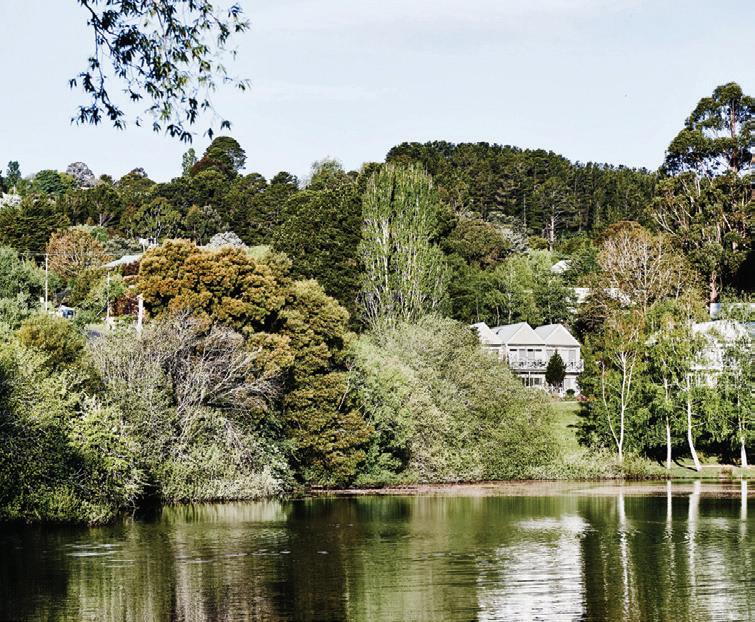
A walking track runs the entire perimeter of the property, perfect for burning off calories before the next meal. If you are in need of something more strenuous, nearby Wombat State Forest provides about 70,000 hectares of virgin bushland where wallabies, kookaburras and, of course, wombats can often be spotted.
An old gold rush town, Daylesford has retained much of its original architecture and is a nice mix of cafes, old pubs, upscale boutiques, quirky bookshops, art galleries and country bakeries.
Under Wolf-Tasker and head chef Brendan Walsh, the Lake House team has been consistently acknowledged for their farmfresh seasonal menu. While we are here, the Lake House collects two Chef Hats as part of the 2019 edition of the Good Food Guide, an accolade they are accustomed to – the restaurant has been awarded a total of 72.5 hats across its 36 years.
I indulge in one of the Lake House’s signature menus, ‘The Art of the Vegetable’, and it is an exquisite tribute to the seasonal bounty found on site. Shark fin melon and smoked tofu dumplings in a rich shiitake broth; roasted leeks in parmesan sauce; and new season asparagus with truffle pecorino curd are just a few of the mouth-watering items on the menu. For dedicated carnivores, there is a meat-friendly signature menu and you are welcome to mix and match.
The generous country breakfast includes an impressive assortment of baked goods, smoked fish, muesli, frittata and locally produced yogurts along with a cooked-to-order menu. I’m not normally one to choose the same thing twice, but the kimchee pancake with smoked trout, wasabi hollandaise and poached egg could be the best breakfast I have ever had, and I end up ordering it both mornings.
When we’re not busy eating, there are plenty of other activities and facilities to entertain, including tours of resident artist and co-owner Allan Wolf-Tasker’s studio – his colourful landscapes are scattered throughout the guesthouse. But it is the Lake House’s Salus Spa, surrounded by waterfall-fed streams overlooking the lake, that has the strongest pull. The signature Salus Bliss treatment, which included a 90-minute warm-oil massage, a lime and ginger mineral salt scrub, a face and scalp massage, and a final rinse in the Hydrostorm ‘pod’, was a dream.


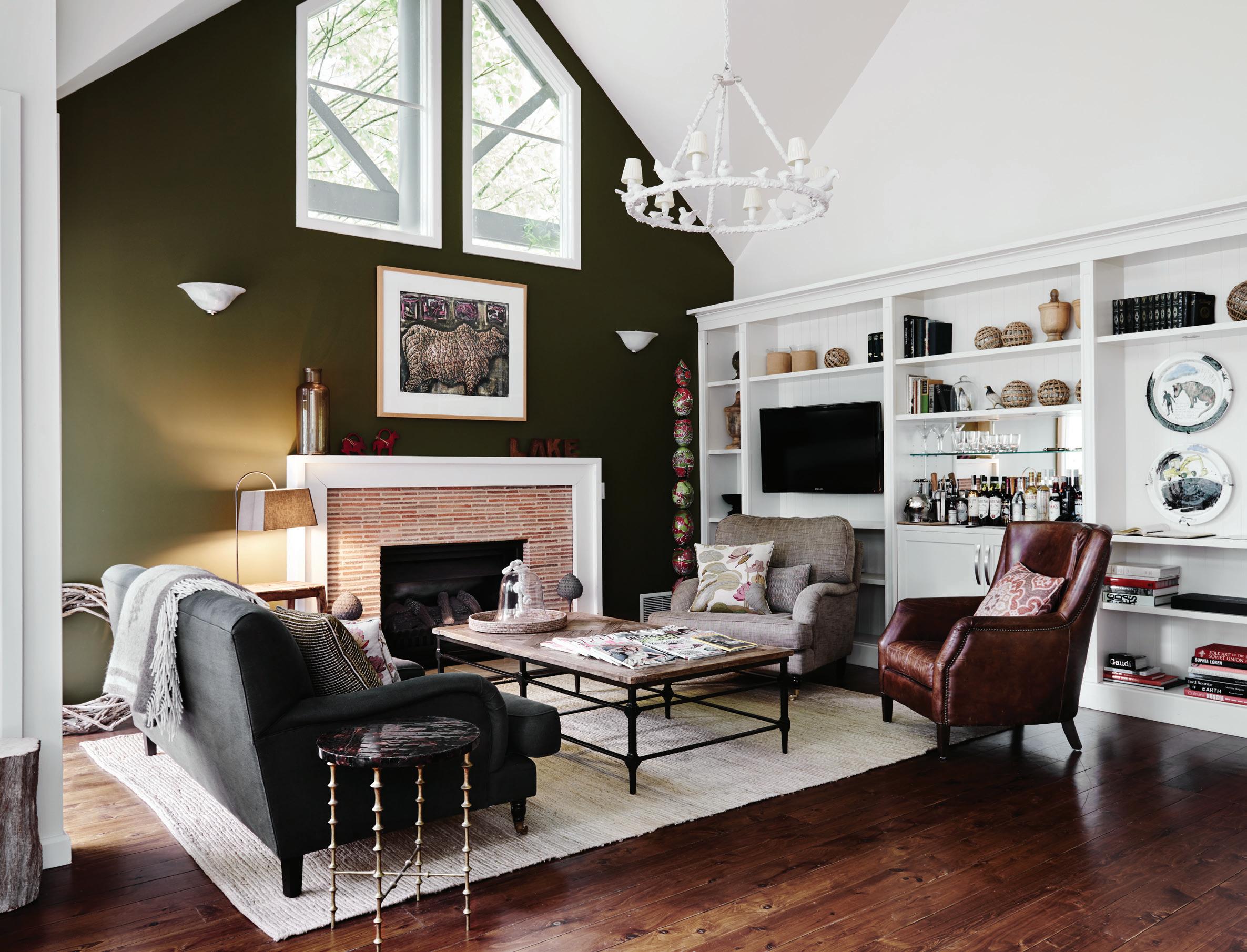
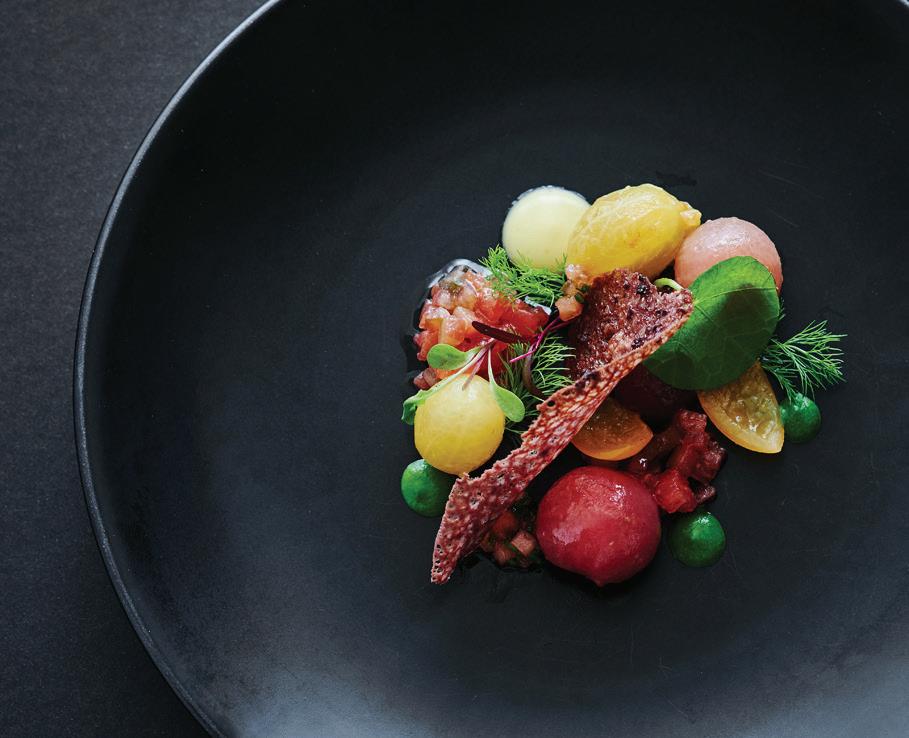
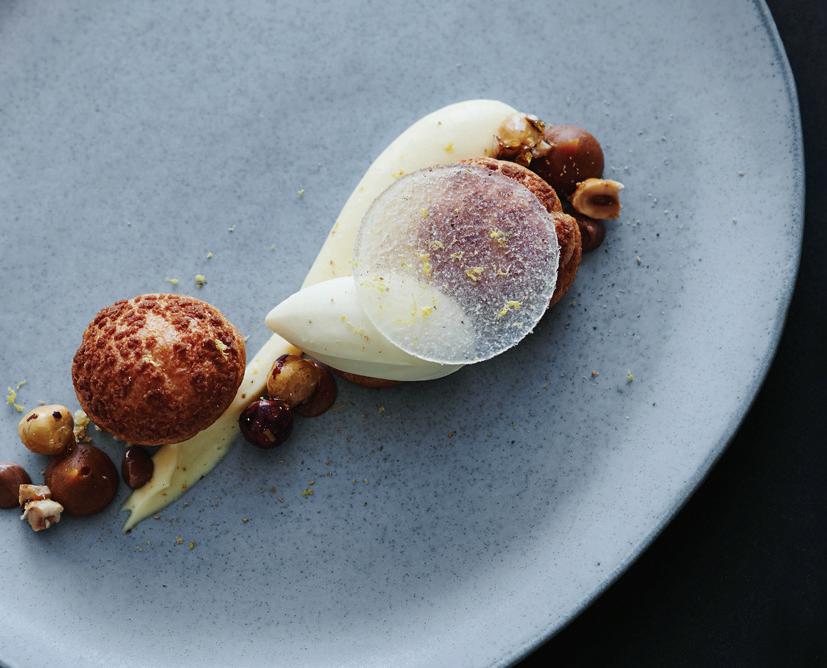
Size: 107 square metres / Price: $4390 per night / Reviewed by: Richard Bunting / Details: fourseasons.com/sydney
I have walked past Sydney’s Four Seasons Hotel on many occasions and can rarely help but glance inside to see what lies within one of the country’s most prestigious luxury hotels. Excitingly, I have now had the opportunity to experience the icon for myself. The building is a well-established part of the Sydney skyline, having opened in 1982 as The Regent. Ten years later, Four Seasons took over management rights and, in 2002, the rebrand was complete – Australia had its first Four Seasons Hotel. It remains the only Four Seasons in Australia today.
Earlier this year all 498 guestrooms (aside from the 33 Suites) underwent an extensive refurbishment, bringing them up to speed with the hotel’s 33 suites. The makeover included a fresh, light palette and updated furniture and amenities.

At 107 square metres, the Presidential Suite has ample space with a large living area that includes a huge TV, Bluetooth connectivity, a luxurious couch and armchairs, a desk, and a small but entirely appropriate dining table.
The specially set-up tent, with a single king mattress and gift pack for our daughter, Emma, was a special touch. From the gift pack, the personalised bathrobe, etch-a-sketch and glow sticks were a particular hit.
The bedroom was enormous, and the extremely comfortable bed was dressed with enough pillows in which to lose yourself. Another large TV is fixed in the bedroom, however, with a large floor-to-ceiling window offering a view of Sydney Harbour – bridge included – you’re unlikely to use it.
The same spectacular views are available from the bathroom, another spacious area, complete with an oversized tub positioned next to the window.
Located in Circular Quay, the Four Seasons is ideally positioned for guests to experience the best of Sydney and its stunning harbour. Exceptional dining experiences are at your
doorstop, whether you choose The Rocks, Circular Quay or beyond, while cultural awakenings await at the world-famous Sydney Opera House or the Sydney Theatre Company at Dawes Point. For active guests, a morning run could easily take you through the beautiful Botanical Gardens and Woolloomooloo. With the new tram system running along George Street, the retail areas of Pitt Street Mall and Town Hall will be just a few stops away.
Its name an ode to the origins of many a relaxing drink, Grain Bar is a stylish lounge bar in which to stop and unwind. Treat yourself to a cocktail from the impressive list, curated by worldacclaimed barmen Cedric Mendoza.

Meanwhile, Mode Kitchen & Bar, open for lunch and dinner, is a hidden gem worth visiting even if you’re not a Four Seasons guest. Positioned towards the rear of the lobby, the restaurant offers a friendly and casual atmosphere, and the open kitchen adds a fabulous energy. I highly recommend the Mayura Station Wagyu rib-eye, a mouth-watering cut that I am still thinking about.
What we loved about our stay at the hotel was the service. The staff are friendly and willing to assist, but not too intrusive. The perfect mix. Additionally, staying in a suite at the Four Seasons includes exclusive access to Lounge 32. Here you can enjoy an afternoon drink and canapes, host a business meeting or enjoy a long, lingering breakfast to see you through the day.
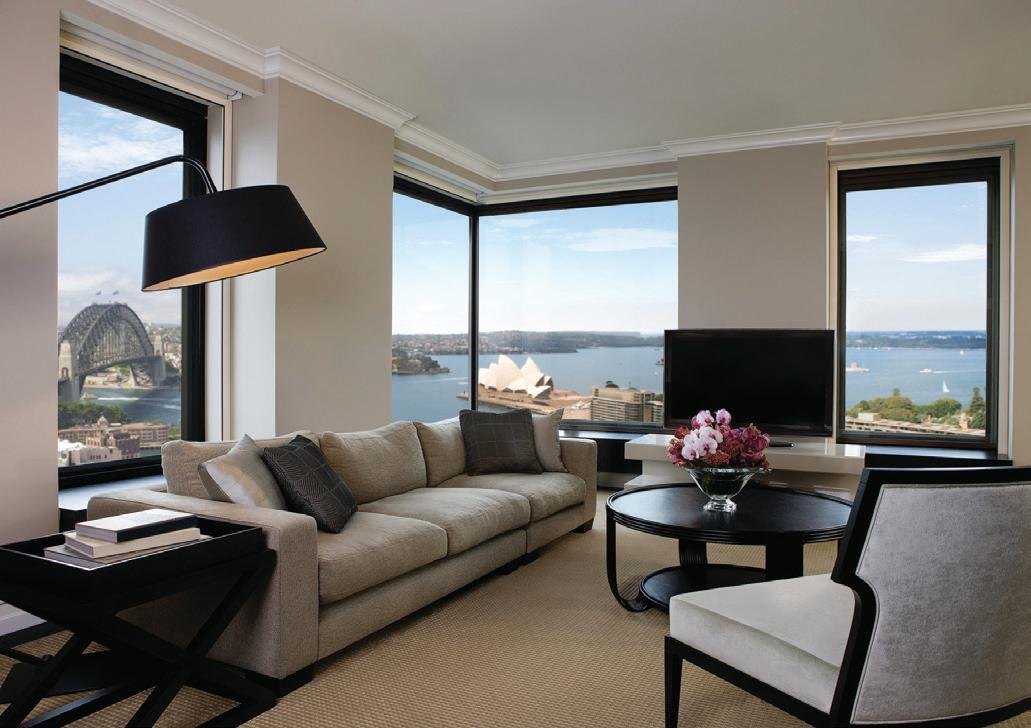
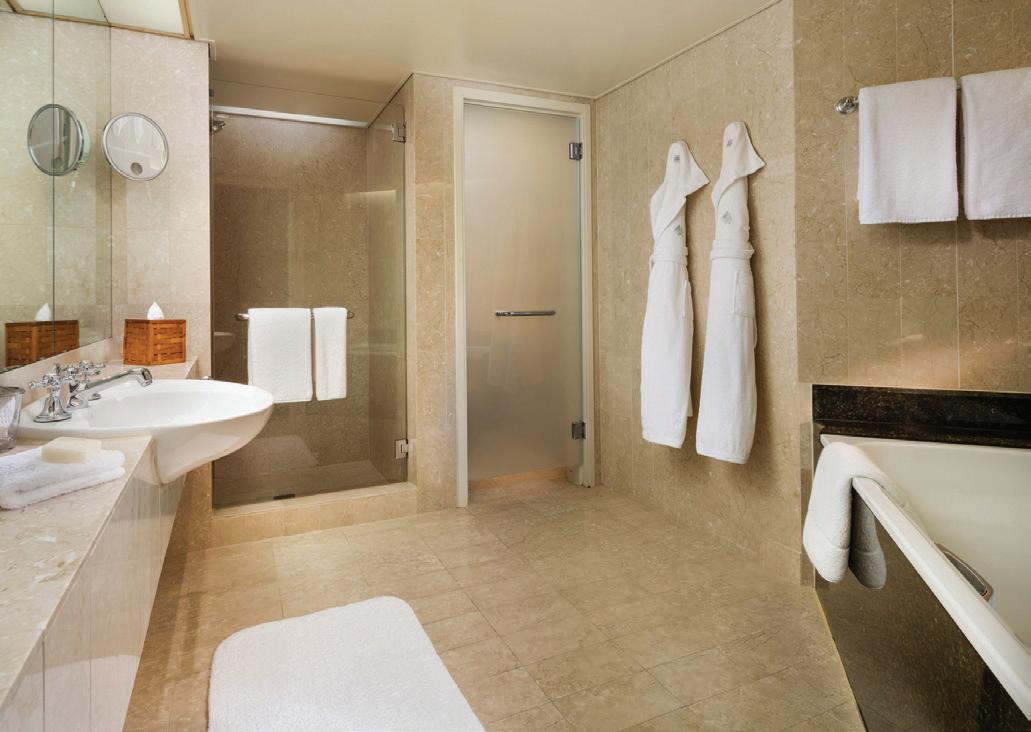
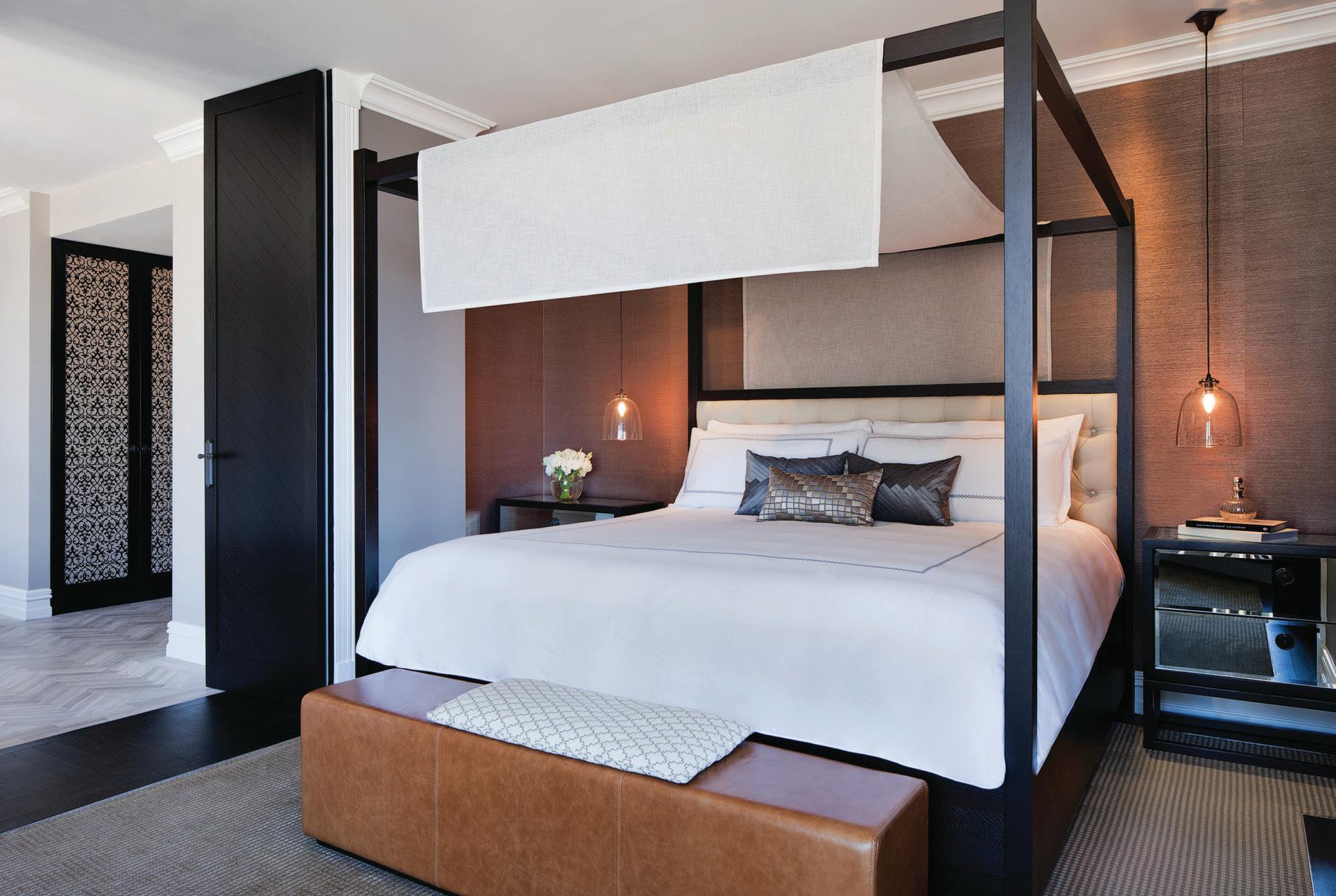
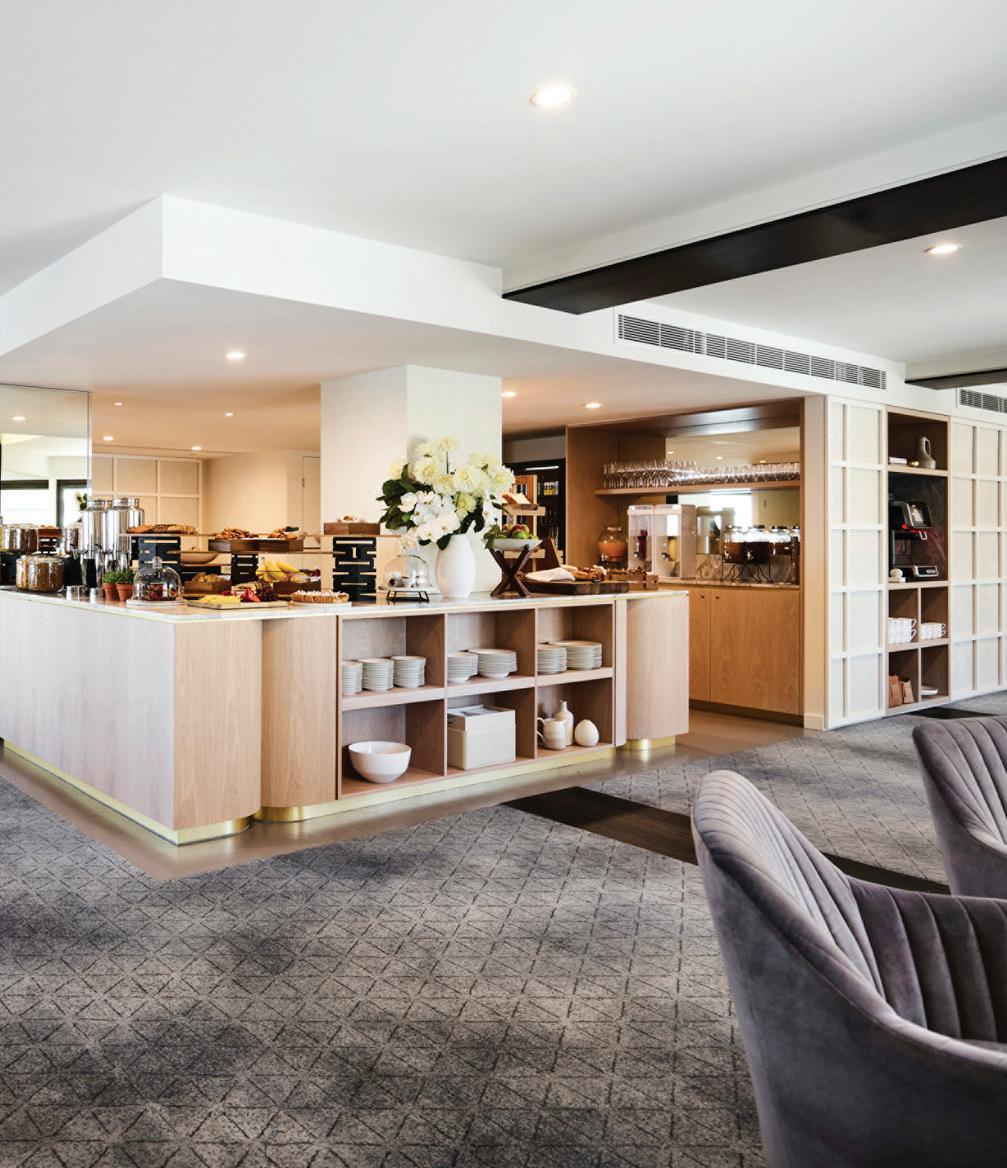
TOWER SUITE
Size: 150 square metres / Price: from $1419 per night / Reviewed by: Gary Allen / Details: crownmelbourne.com.au
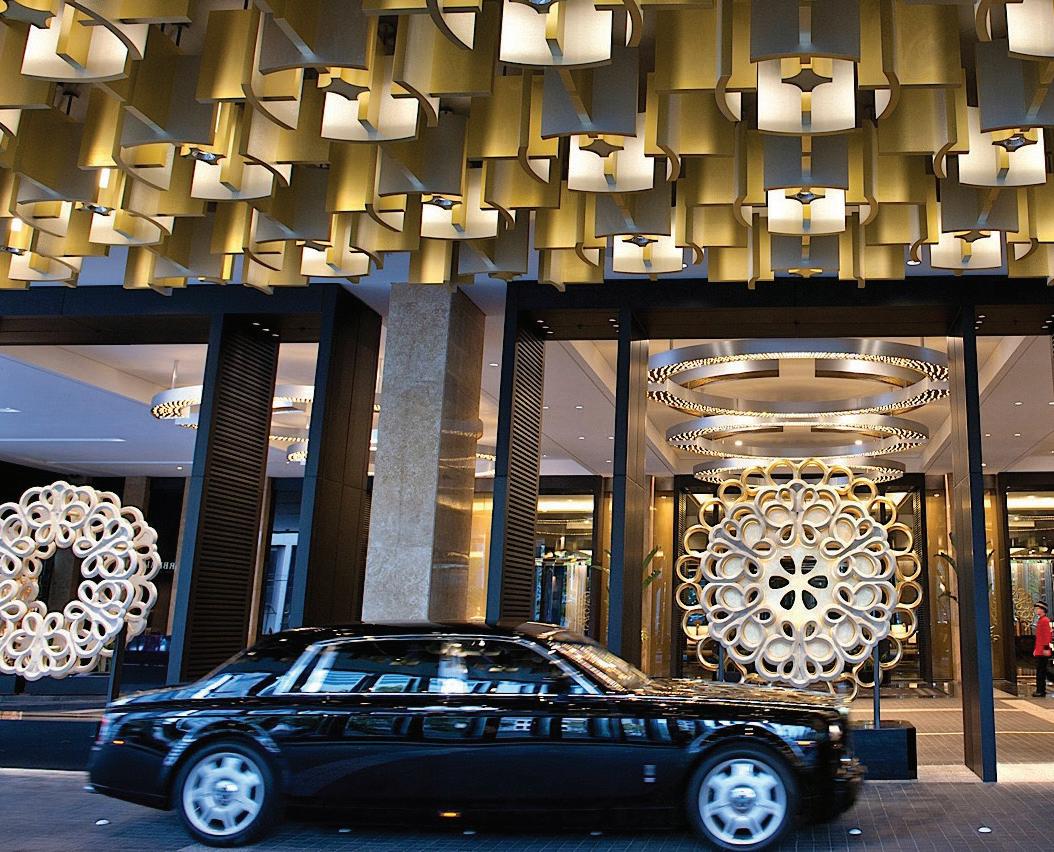
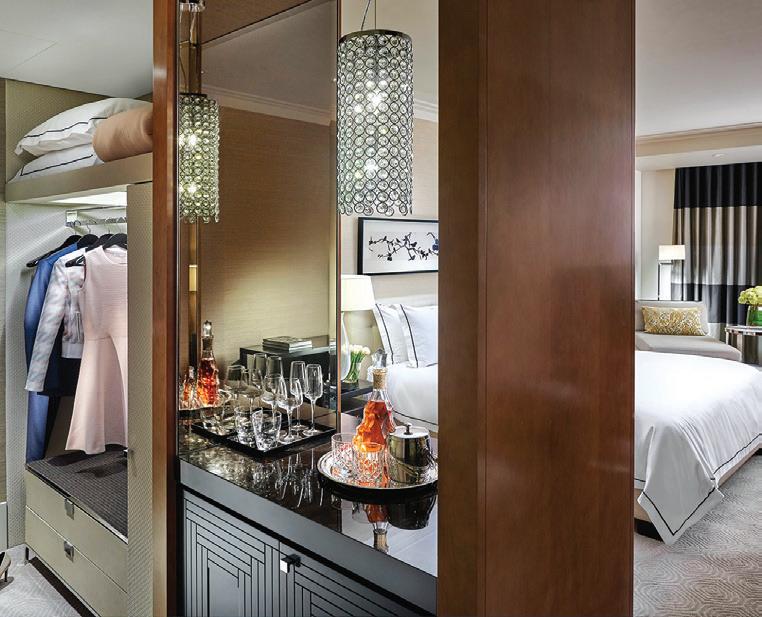
When you hear the name Crown Towers Melbourne, you might immediately envisage the carnival atmosphere of a busy casino, but this luxury hotel is so much more than that. In fact, if casinos aren’t your thing, you can avoid the spectacle all together. With a grand entrance and lobby, Crown Towers is beautiful right from the start. There are two ‘sister’ venues, Crown Metropol and Crown Promenade, but Towers is most certainly the ace. Once touted as the first genuine five-star luxury hotel in Australia, it still dominates Melbourne’s South Bank skyline. There are 482 rooms spread out over 43 floors and some amazing views over the city, particularly from the higher floors.
A true oasis, my two-bedroom Tower Suite featured floor-to-ceiling windows and, given my position on Level 20, offered views I won’t soon forget. At night, the city is brightly lit and at its most beautiful. Get rid of the TV, I say, it only hinders the vista. Both bedrooms are large and well-lit with whitemarble ensuites. The master bath will have you eager for a long soak. A separate dining room includes a large round table, making private meals easy and stylish, if that’s your preference. Decor is tasteful with calming beige and mauve tones, and soft blue-velvet lounges. You’d be forgiven for opting to stay in.
Conveniently located on the Yarra River in South Bank, Crown Towers puts you close to everything from sights and attractions to CBD shopping and public transport options, great for exploring Melbourne’s character-filled neighbourhoods. There is also a locale of a different kind right at your doorstep: Crown Towers itself is a thriving hub with plenty of shopping and restaurants.
Dining options are as impressive as they are vast. Big names such as Neil Perry’s Rockpool, Guillaume Brahimi’s Bistro Guillaume and
Heston Blumenthal’s Dinner are on site along with renowned Spice Temple and plenty of others. At Bistro Guillaume, the locally caught John Dory was exceptional as was the Cape Grim steak tartare. But this is a Frenchinspired bistro, so the twice-baked souffle with Roquefort sauce is a must. Save room for dessert. Breakfast, lunch and dinner is served in the Conservatory Restaurant on Level 3. Buffet and al a cart dining is available, and with stunning views of the river, marble floors and beautiful decor, you will want to take your time.
Melbourne weather is notorious and there isn’t a better place to be for those rainy, cold days than Crown Towers’ spa. Awarded a highly prized four-star rating by the 2019 Forbes Travel Guide, Crown Spa boasts a massive indoor pool with soaring ceilings and abundant natural light, a large fully equipped gym, a salon and treatment rooms. The Aqua Retreat offers steam rooms and vitality pools as well as private lounge rooms – facilities that are available only to those who have booked a treatment. There’s really no better excuse.

